Suction cleaners
Still going strong
The broad range Of sanitisation feeders
The ins and outs of Regenerative filtration
How to handle asbestos In pool renovations

A sense of belonging
Designing the perfect pool and garden

Suction cleaners
Still going strong
The broad range Of sanitisation feeders
The ins and outs of Regenerative filtration
How to handle asbestos In pool renovations

Designing the perfect pool and garden
With over 30 years of research and development, AIS Water continues to deliver the ultimate in protection, performance and peace of mind. Here’s how our solutions stand out as simpler, safer, smarter choices for water disinfection:
Switch Mode Power Supply (SMPS)
• Superior alternative to traditional transformers
• Greater energy efficiency
• Significant weight reduction
• Enables a wide range of salinity
• Extends electrode life
Sealed Internal Cooling
• Titanium core radiator utilises pool water for efficient heat exchange
• Prevents ingress of hot air, salt, and acid vapours
• Provides excellent protection against corrosion
• Creates optimal operating temperatures for electronic components
Robust Construction
• Built to last using high quality materials
• Frame and box made from powder-coated galvanised steel, and high nominal pressure UPVC piping
• Built to withstand harsh environmental conditions and UV radiation
• Horizontally mounted cells for ease of cell maintenance
• Optional split section frame design for limited access sites
Skid Mounted Design
• Skid mounted, minimal footprint for easy installation into plant room
Built-In Acid Wash System
• Built-in acid wash system makes for simpler and safer maintenance of electrodes
• No dismantling of the cell for acid cleaning, means less exposure to chemicals
Reverse Polarity (RP)
• For reduced maintenance
• Reduces calcium build-up
• Less maintenance of electrodes
Safety Features
• Water flow cut-off switch
• Thermal overload cut-off for water and power supply
• Current overload and over voltage protection systems
• Pressure relief valve Warranty
• All commercial chlorine generators are covered by a three-year warranty on power supply and the electrolytic cell
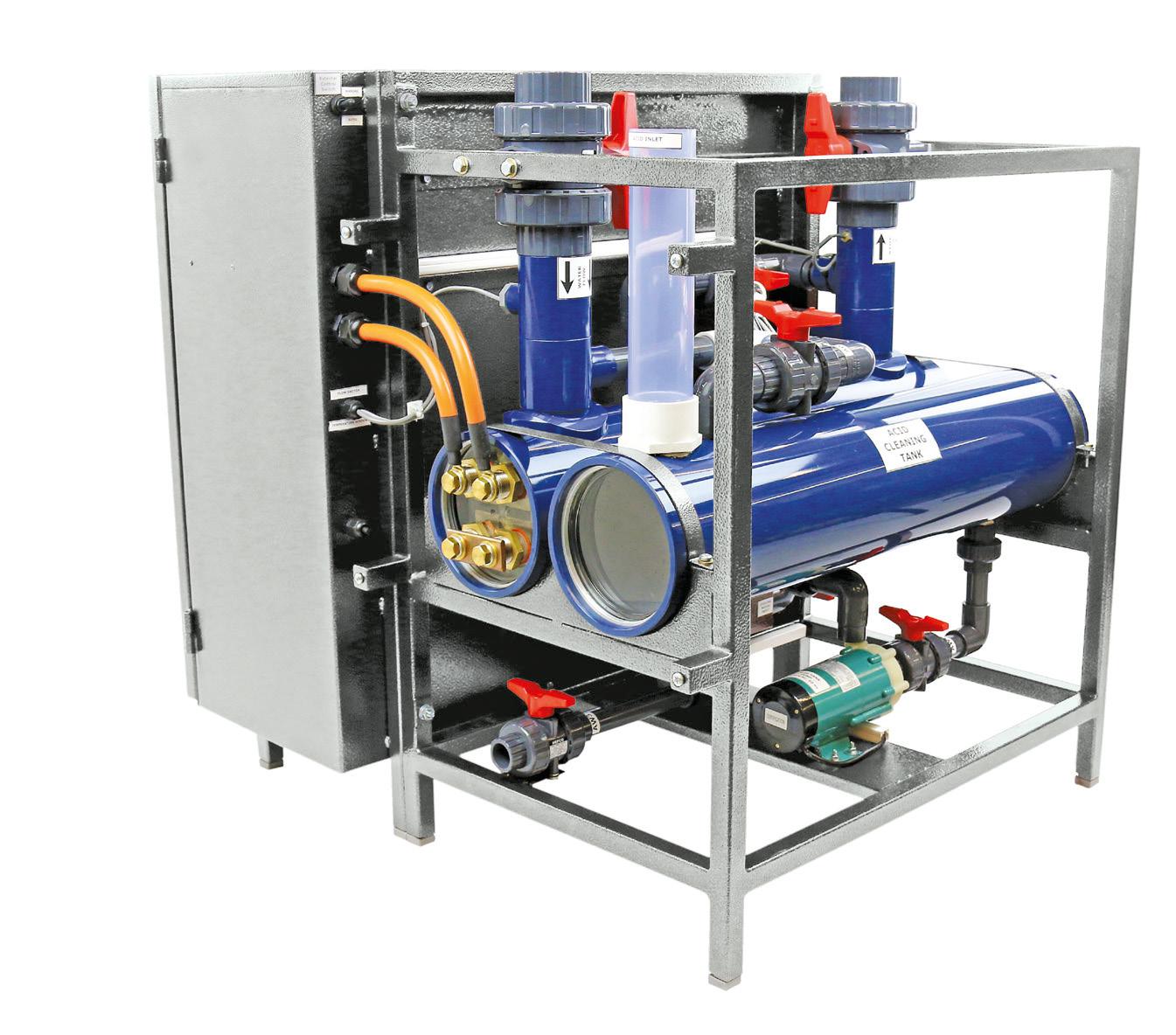

aiswater.com.au

For freshwater swimming pools
EcoLine® is the absolute ‘best in class’ in-line chlorine generator designed for low-salinity swimming pools with salinity levels between 900ppm and 4,000ppm.

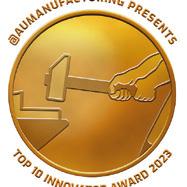
For
pools
AutoChlor® is a well-recognised, global brand of inline chlorine generators and is considered essential for saltwater, coastline and seawater pools with salinity levels between 4,000ppm - 35,000ppm.
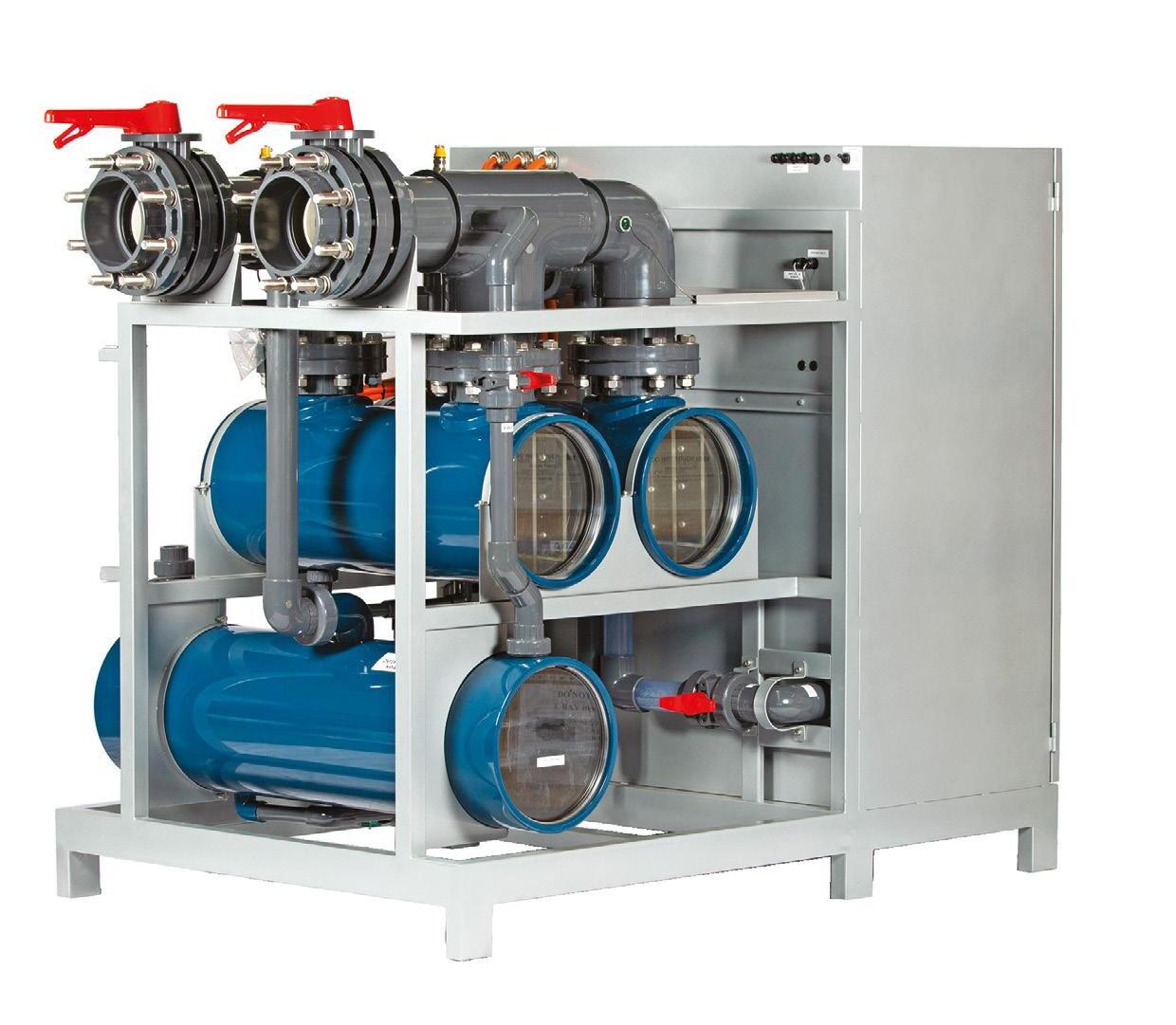
Genuine AIS Water Anodes are at the heart of our products. Since 2000 we have manufactured quality anode material for our award-winning residential and commercial chlorinators. We now proudly offer our Australian made anode material to fellow industry partners.


Don’t gamble undersizing your customers’ pool heat pump - talk to the specialists and supply Evo heat pumps for unmatched performance and peace of mind. Unlike other suppliers who rely on generic cheat sheets or automated reports, we deliver the gold standard in customised heater sizing for every pool.
BASED ON YOUR CUSTOMERS SWIMMING REQUIREMENTS Discover our exclusive personalised pool heating reports, designed to precision for your customers’ specific pool environments and preferences. Our reports are based on your customers exact requirements and needs, including their desired pool temperatures and swim seasons.
WE PERSONALLY ANALYSE EACH POOL LOCATION & ENVIRONMENT Our Pool Heat Specialists use advanced mapping software to meticulously analyse each pool location. We consider every detail including weather zones, shading, wind exposure, covers and unique pool features like waterfalls, infinity edges and connected spas... so we can guarantee our sizing every time!
WE GUARANTEE OUR SIZING Our specialised software ensures we recommend a heater perfectly matched to the pool’s thermal needs, no matter the weather conditions or the customers swimming requirements. When it comes to accuracy and expertise, our reports and sizing sets the industry standard.

We DON’T use generic cheat sheets or automated reports
We provide customised reports for every customer
We meticulously analyse each pool location & environment

We guarantee our sizing, every time


DON’T RISK UNDERSIZING YOUR HEAT PUMPS
ARE THESE CONDITIONS CONSIDERED IN YOUR CUSTOMERS’ HEAT PUMP SIZING?




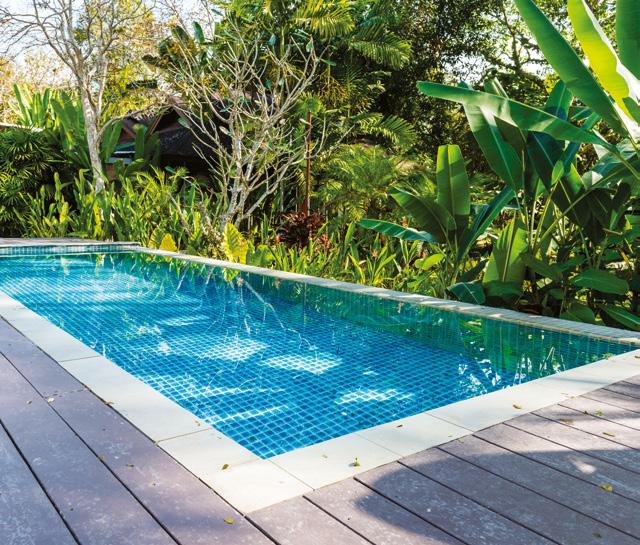

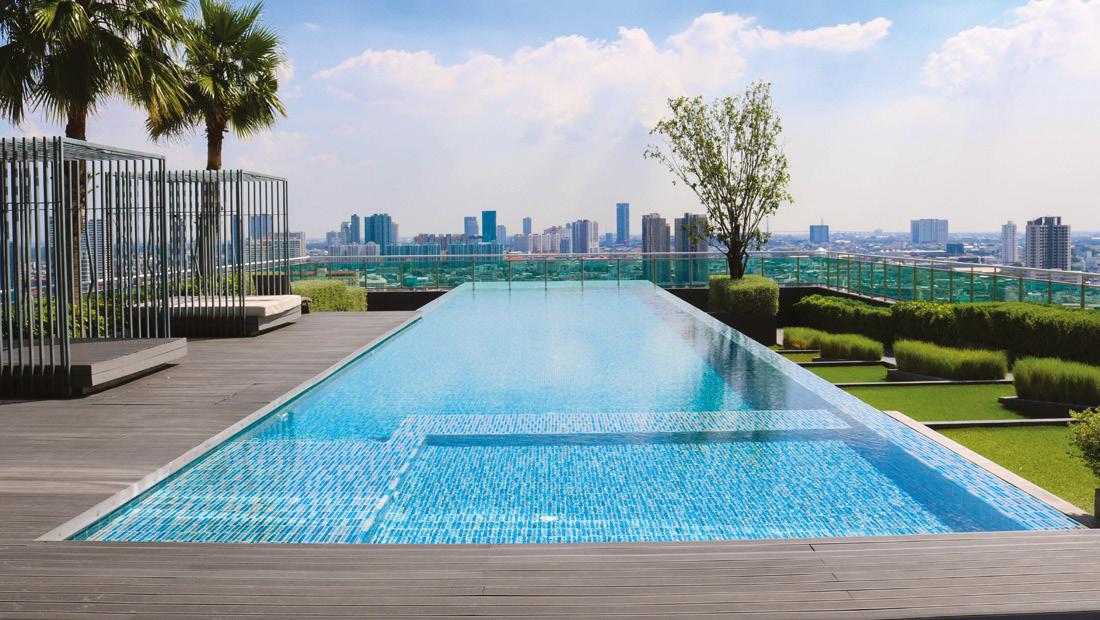

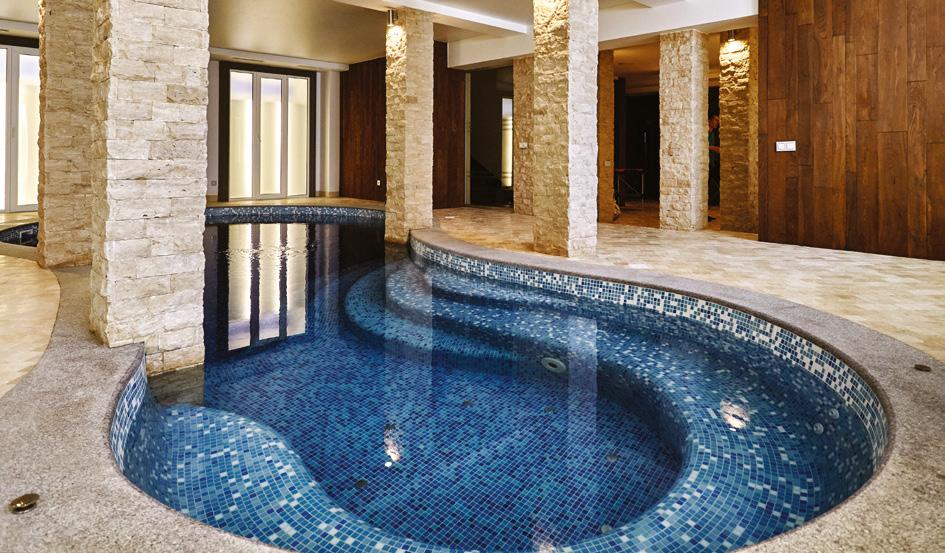

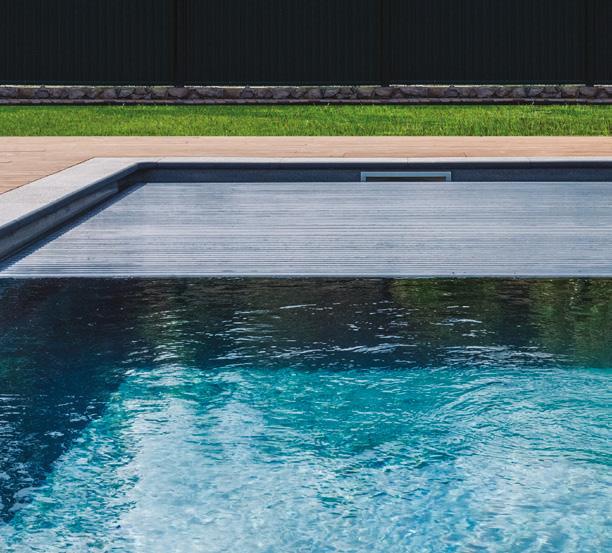

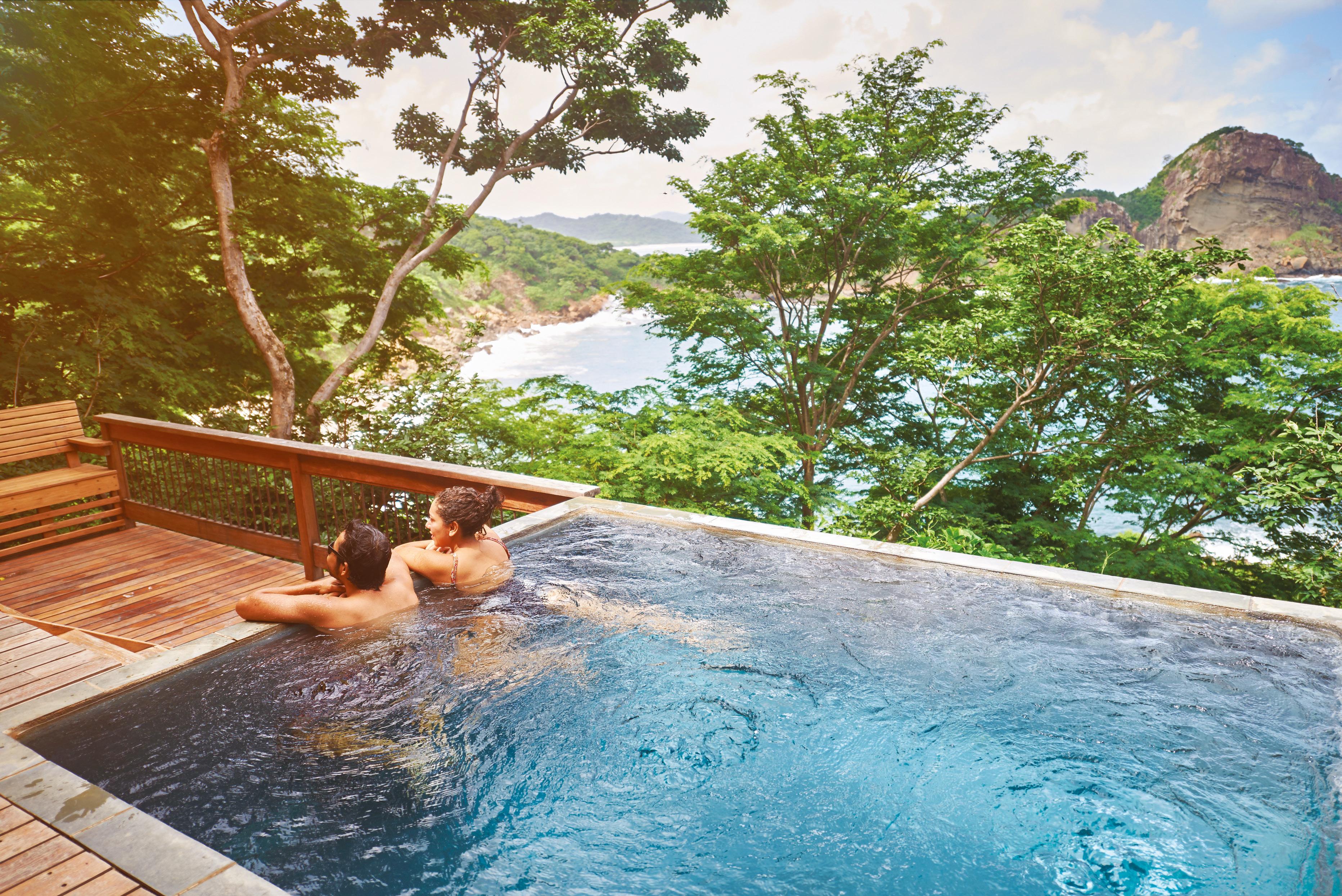

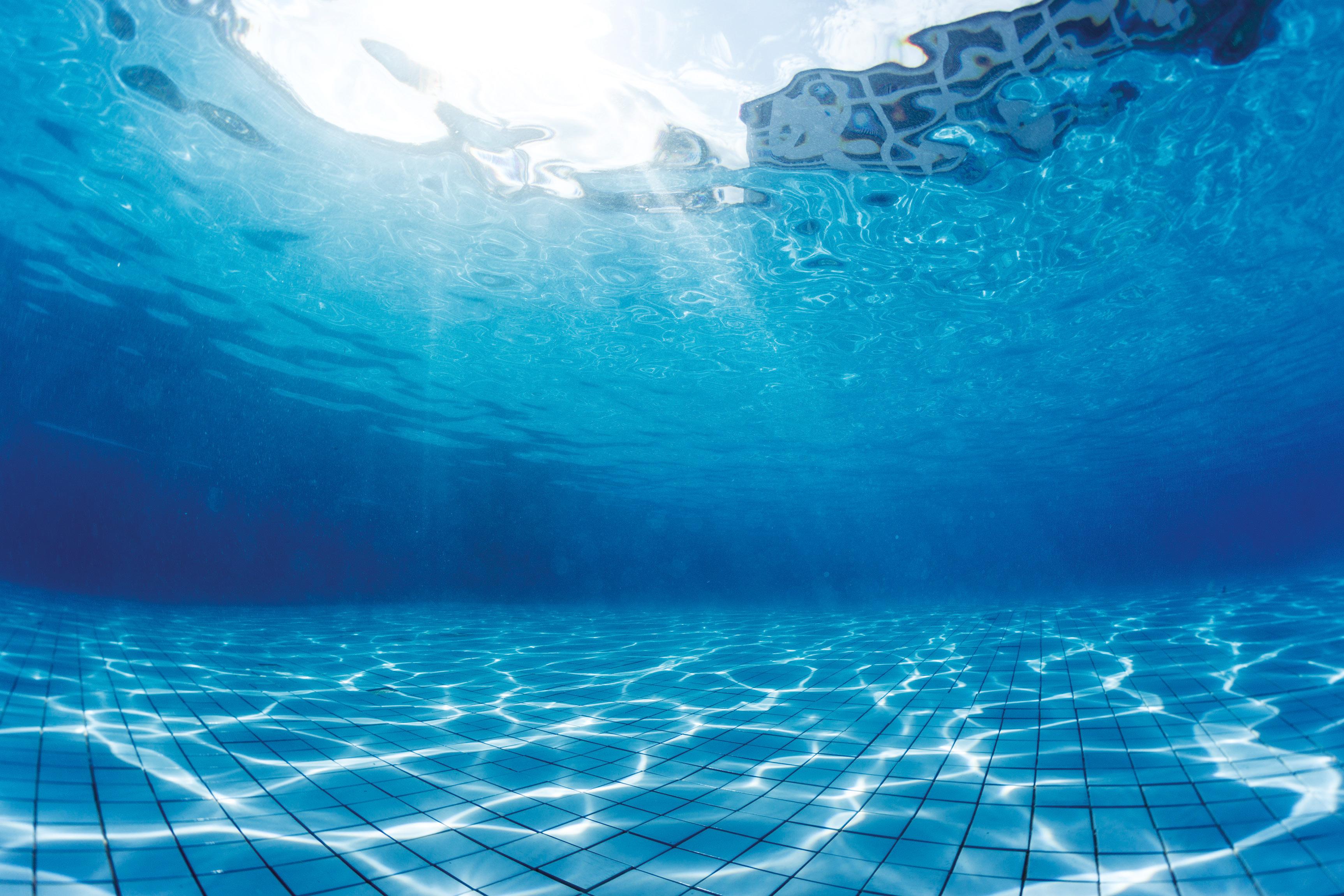


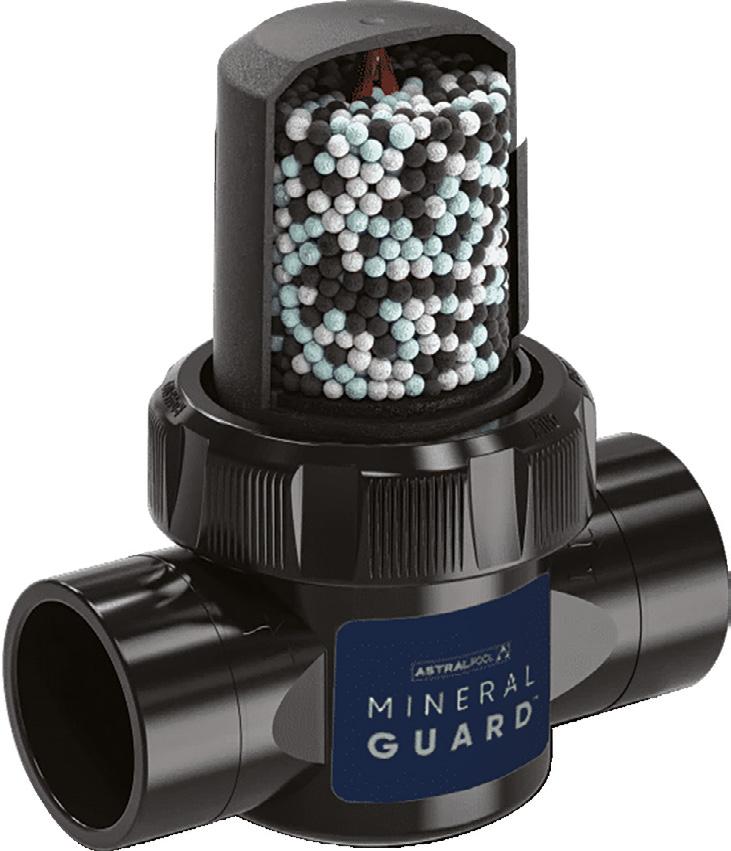



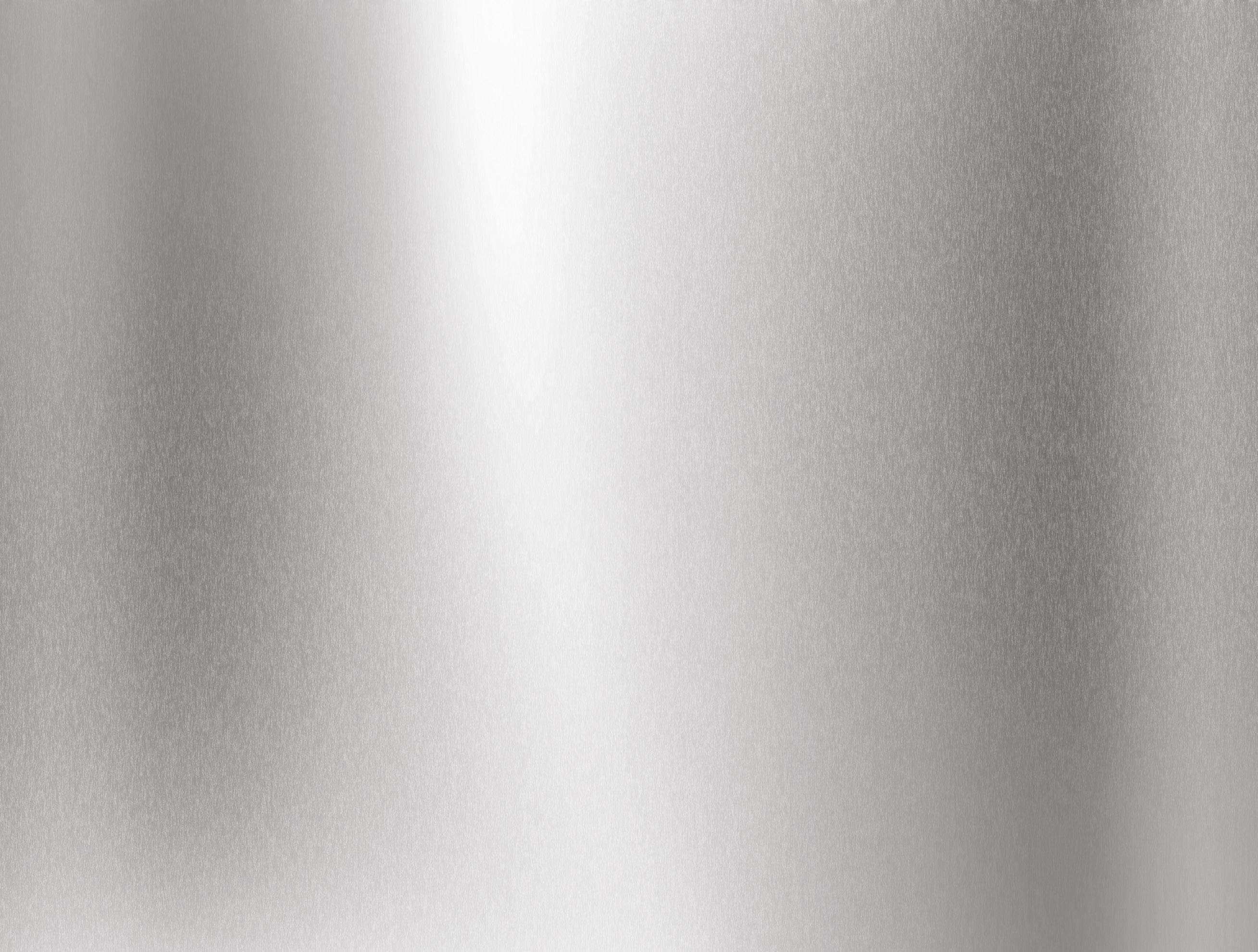

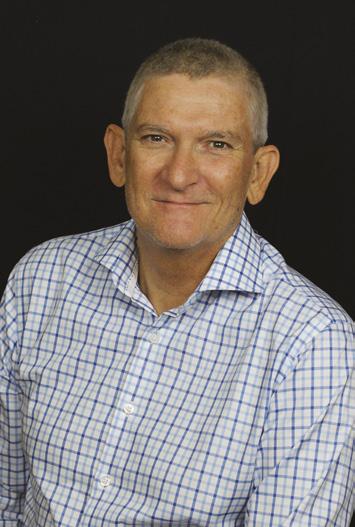

conditions, warranties, statements, assurances and representations in relation to the Publisher, its publications and its services are expressly excluded save for those conditions and warranties which must be implied under the laws of any State of Australia or the provisions of Division 2 of Part V of the Trade Practices Act 1974 and any statutory modification or re-enactment thereof. To the extent permitted by law, the Publisher will not be liable for any damages including special, exemplary, punitive or consequential damages (including but not limited to economic loss or loss of profit or revenue or loss of opportunity) or indirect loss or damage of any kind arising in contract, tort or otherwise, even if advised of the possibility of such loss of profits or damages. While we use our best endeavours to ensure accuracy of the materials we create, to the extent permitted by law, the Publisher excludes all liability for loss resulting from any inaccuracies or false or misleading statements that may appear in this publication.
This issue of SPLASH! magazine published by The Intermedia Group Pty Ltd (Intermedia) may contain magazine or subscription; offers, competitions, forms and surveys (Reader Offers) which require you to provide information about yourself, if you choose to enter or take part in them. If you provide information about yourself to Intermedia, Intermedia will use this information to provide you with the products of services you have requested and may supply your information to contractors that help Intermedia to do this. Intermedia will also use your information to inform you of other Intermedia publications, products, services and events. Intermedia may give your information to organisations that are providing special prizes or offers that are clearly associated with the Reader Offer. Unless you tell us not to, we may give your information to other organisations that may use it to inform you about other products, services or events or to give it to other organisations that may use it for this purpose. If you would like to gain access to the information Intermedia holds about you, please contact Intermedia’s Privacy Officer at The Intermedia Group Pty Ltd, PO Box 55, Glebe, NSW 2037. Copyright © 2024 - SPASA Australia. Proudly supported




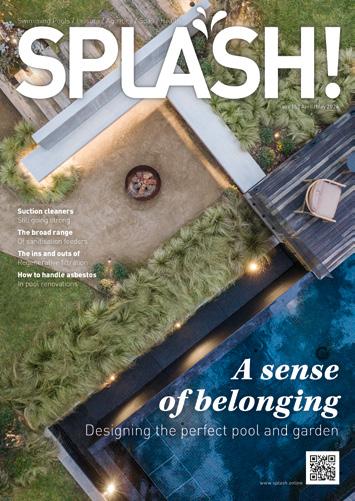
There is something to be said for feeling at home. The comfort of knowing you belong somewhere, that you are accepted body and soul.
Fitting seamlessly into a space, turning it into a warm and fuzzy place to lay your head: an environment to both relax totally and thrive to the best of your ability. Perfection.
But it’s not only people who can fit perfectly somewhere. Architecturally, gardens fit around homes, and pools fit into gardens. And when it all comes together, it can be magic.
This issue we talked with Steve Taylor who last year won both the Designer of the Year and the Professional of the Year at the SPASA National Pool & Spa Awards of Excellence. His story shows resilience and resolve first to pursue the career he loves, and also to create the perfect space for his clients. He designs with one overwhelming aim – to create something with a sense of belonging.
We also look at the forgotten member of the pool cleaning fraternity, the suction cleaner. With the preponderance of robotic cleaners gaining so much attention, suction cleaners have sometimes become a second thought. But they are still being chosen in high numbers by pool owners for their ease of use and economical price tag.
Advances in residential automated sanitation systems is another topic we look at, as home owners look to spend more time in their pool and less time looking after it.
On the renovation side of the construction business, we look at approaches to remediating old Marblesheen pools, and dealing with the asbestos that may be embedded in their surface.
Finally, we talk to the two main suppliers of commercial pool regenerative filtration in Australia, and get their opinions on the efficacy of the systems, along with approaches to the safe handling of the filter media.
I hope you find this issue both interesting and useful.
The cover shows an intriguing and very complementary pool and garden designed by COS Designs. There is more on the 2023 Professional (and Designer) of the Year, Steve Taylor, principal of COS Designs on page 18.
Image by Mitchell Lyons Photography.
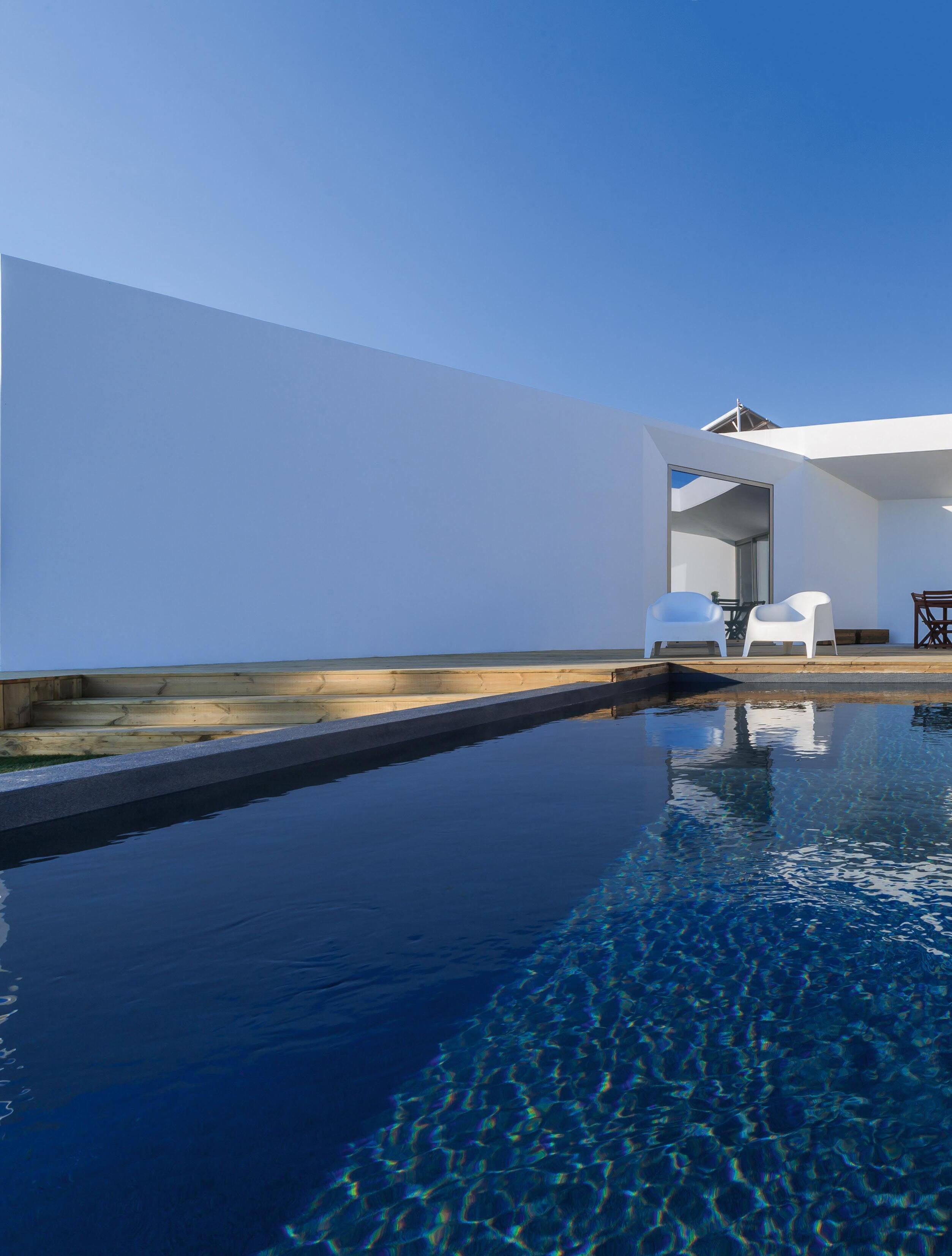
A complete pool and chemistry controller that includes pH monitoring and acid dosing, ORP control, temperature and salt measurements, for effortless pool balancing.
Wifi enabled with fully integrated app for control of schedules, modes and adjust set points.

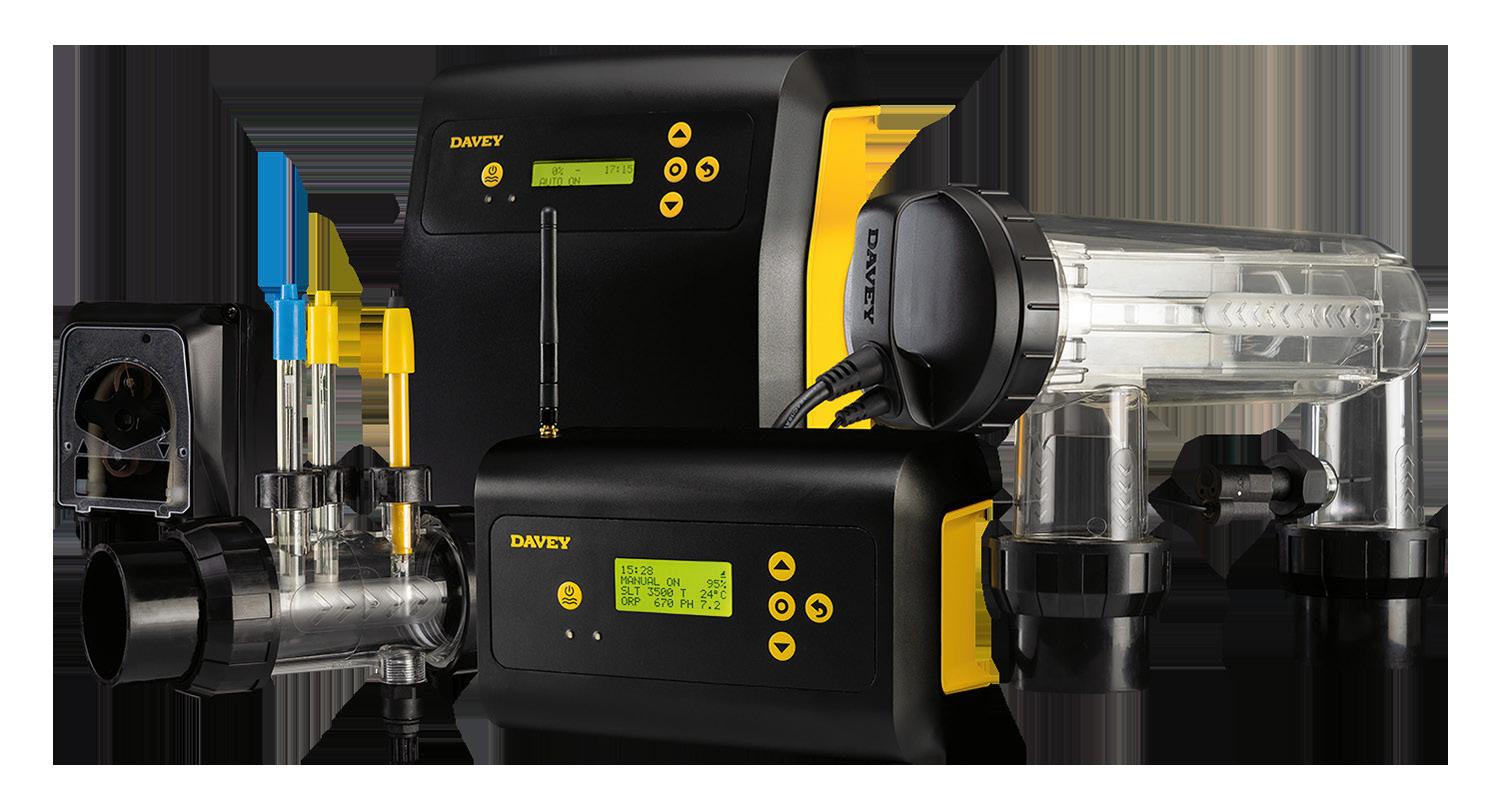

Davey. Proudly Australian since 1934.
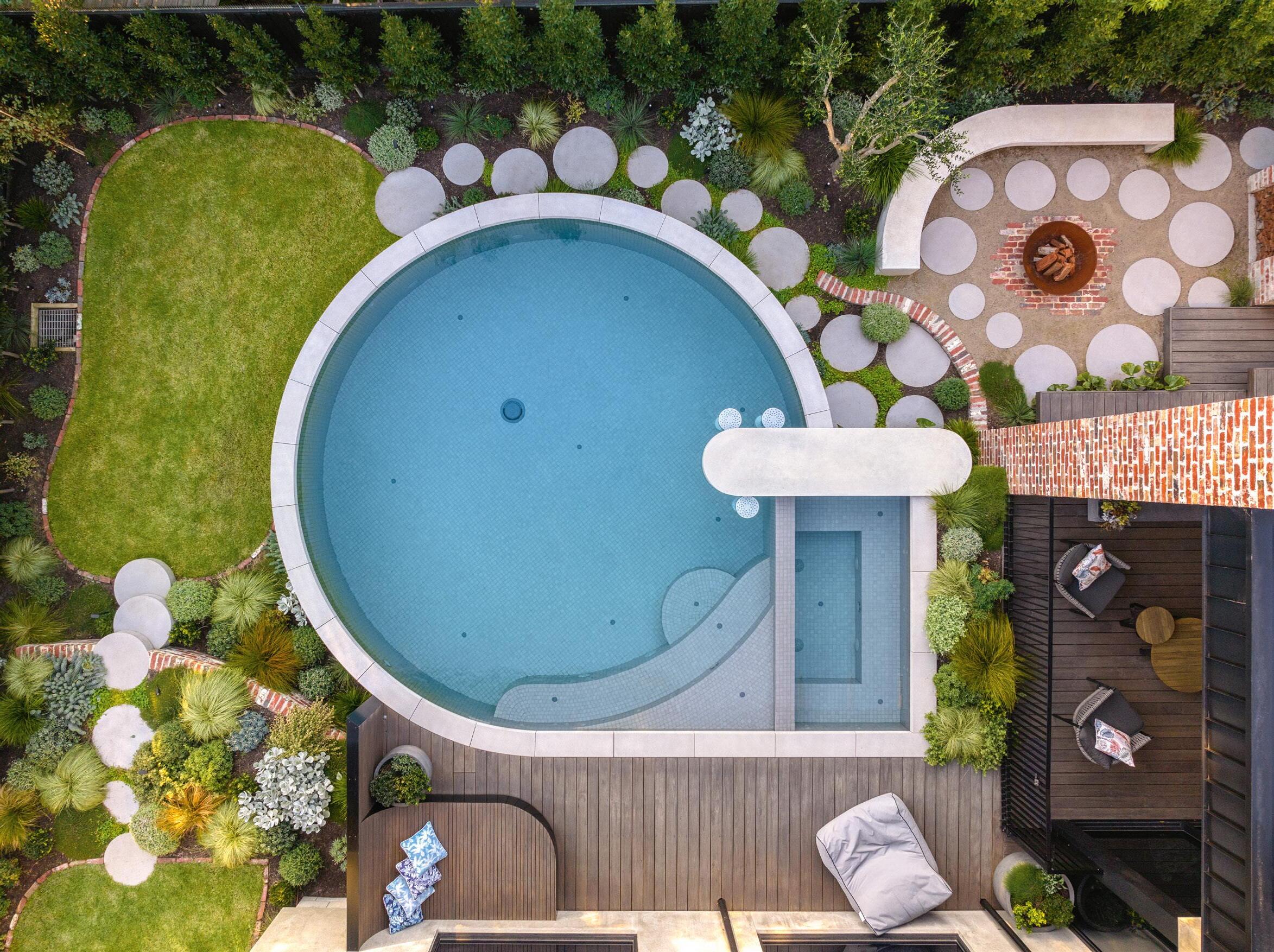
18 Creating a sense of belonging
The 2023 National Professional of the Year, Steve Taylor, principal at COS Designs, discusses his journey into pool and landscape design, and where he sees challenges and opportunities for 2024 and beyond.
26 The trouble with asbestos in old pool surfaces
Daniel Gibbs, director at Jagun Pools + Landscapes in Queensland, explains his experiences remediating and renovating old asbestos-laden Marblesheen pools – and reveals what did and what didn’t work.
32 The many benefits of automatic dosing technology

Veda Dante looks at the benefits of automatic dosing and water management systems, and sees what advances have been made and what further technological improvements are in store.
44 The enduring role of pool suction cleaners Suction cleaners sometimes get overlooked among the many and varied options available for
automated pool cleaning, but Veda Dante discovers there are several good reasons why they are still popular with pool owners.
62 The efficacy and handling of regenerative filter aids
Regenerative filtration, also called precoat filtration or ultra fine filtration, is one of the most effective systems in use for commercial aquatic centres. We delve into why it is so efficient, but also look into questions around handling the filter media. 32
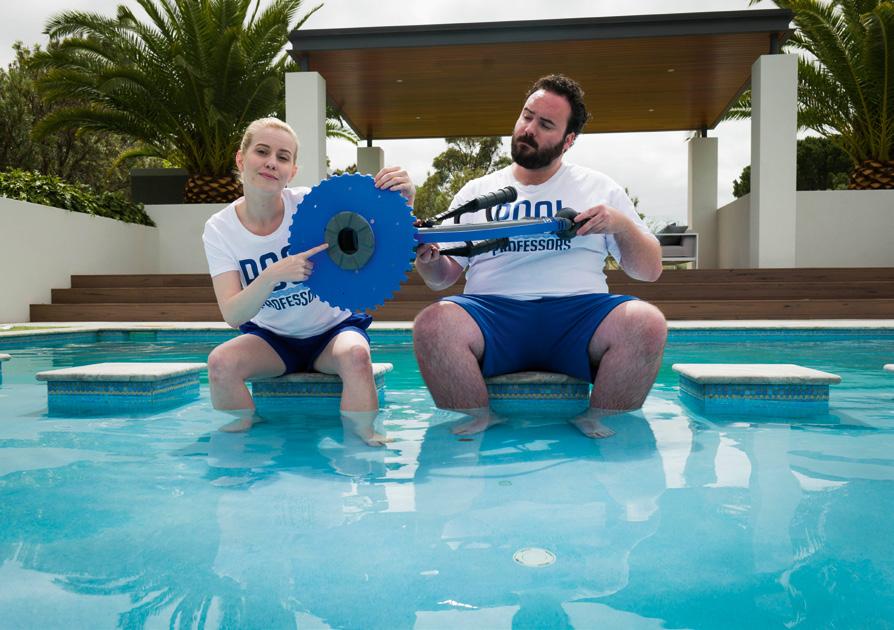

Getting a brand in front of the right audience is the ideal way to help a business grow. For the pool and spa industry, that means reaching highly engaged information seekers who are ready to move beyond research and take the plunge into installing or renovating a swimming pool or spa.
SPASA has developed two new tools to make that process easier, PoolQuotes and SpaQuotes. These online tools match SPASA members with qualified consumers based on their exact requirements including the type of project, site location and layout, budget and anticipated timelines.
Potential buyers are connected with three
suitable SPASA members who can provide a quote for their needs. They enjoy peace of mind knowing they are dealing with professionals at the top of their trade who adhere to established national standards and meet the expectations of the industry’s peak national body.
Timeframes and location are taken into consideration, so the right people are matched together.
The tools are backed by the Pool & Spa Lifestyle Expo events as well as comprehensive social media campaigns, dedicated consumer websites, and print and digital magazines.
Contact: luke@spasa.com.au or go to www. splash.online/articles/links153 for a quick link. Dive
Summertime Pools and Halo Spas launched their new premises in March with high style and a touch of Rio’s Mardi Gras inspired glamour.
The new premises are at 2/1 Healey Road, Dandenong South, Victoria, 3175
SPLASH! will bring more information on their new facilities in a future issue.
Contact: www.summertimepools.com.au
The opening was an excitement-filled event

As reported in the previous issue of SPLASH!, SPASA has sponsorship opportunities available for its new Poolside, Spa & Garden Australia TV show.
The ten-episode series will feature some of Australia’s most trusted brands and give viewers all the information they need to live their best poolside lives.
Hosted by Dani Reilly of The Block and Healthy Homes Australia, the show will cover everything there is to know about planning, building and owning a pool, spa and outdoor living space.
Along for the ride are some of the industry’s most recognised and respected names, with Maytronics, Fluidra and Polaris Hinges all signed up as premium partners for the show’s inaugural season. All three are keen
to get their brand in front of an interested and engaged audience that is actively seeking their solutions and services.
The three premium partners will also be joined by segment sponsors – brands that will connect with a national viewership via show episodes focused on the specific elements of pool, spa and outdoor living that are relative to them.
“This is a fantastic opportunity to secure high calibre professional content, national exposure and endorsement through TV media. We are delighted to have the support of all show sponsors, in particular our premium partners Fluidra, Maytronics and Polaris Hinges,” says Pool & Spa Lifestyle brand manager, Daena Bougoure-Latchford.
“The series will reach approximately
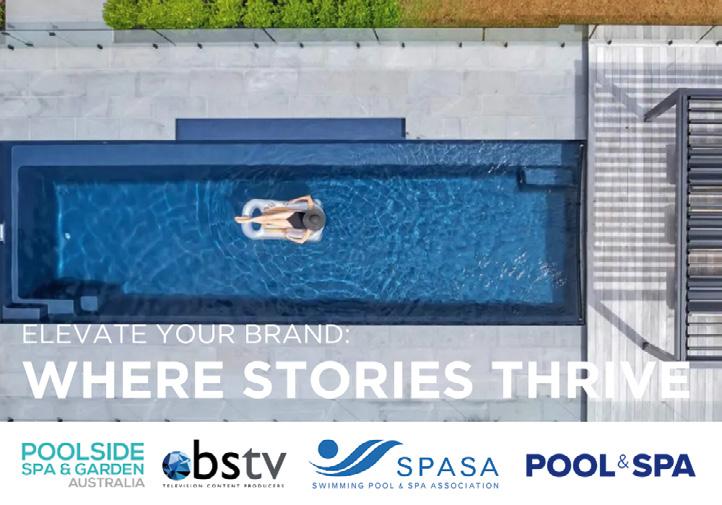
The new Poolside, Spa & Garden Australia website
250,000 viewers each week, putting pools, spas and outdoor living front and centre of consumer minds in the lead up to the 2025 summer season.
“This is a hugely powerful industry asset, which will educate and inspire people to invest in levelling-up their outdoor spaces. It fits perfectly with our B2C Pool & Spa Lifestyle brand, which reaches millions of consumers every year through our expos, magazines and digital platforms,” she says.
There are still segment sponsor slots available.
Contact: www.poolsidespaandgarden.com
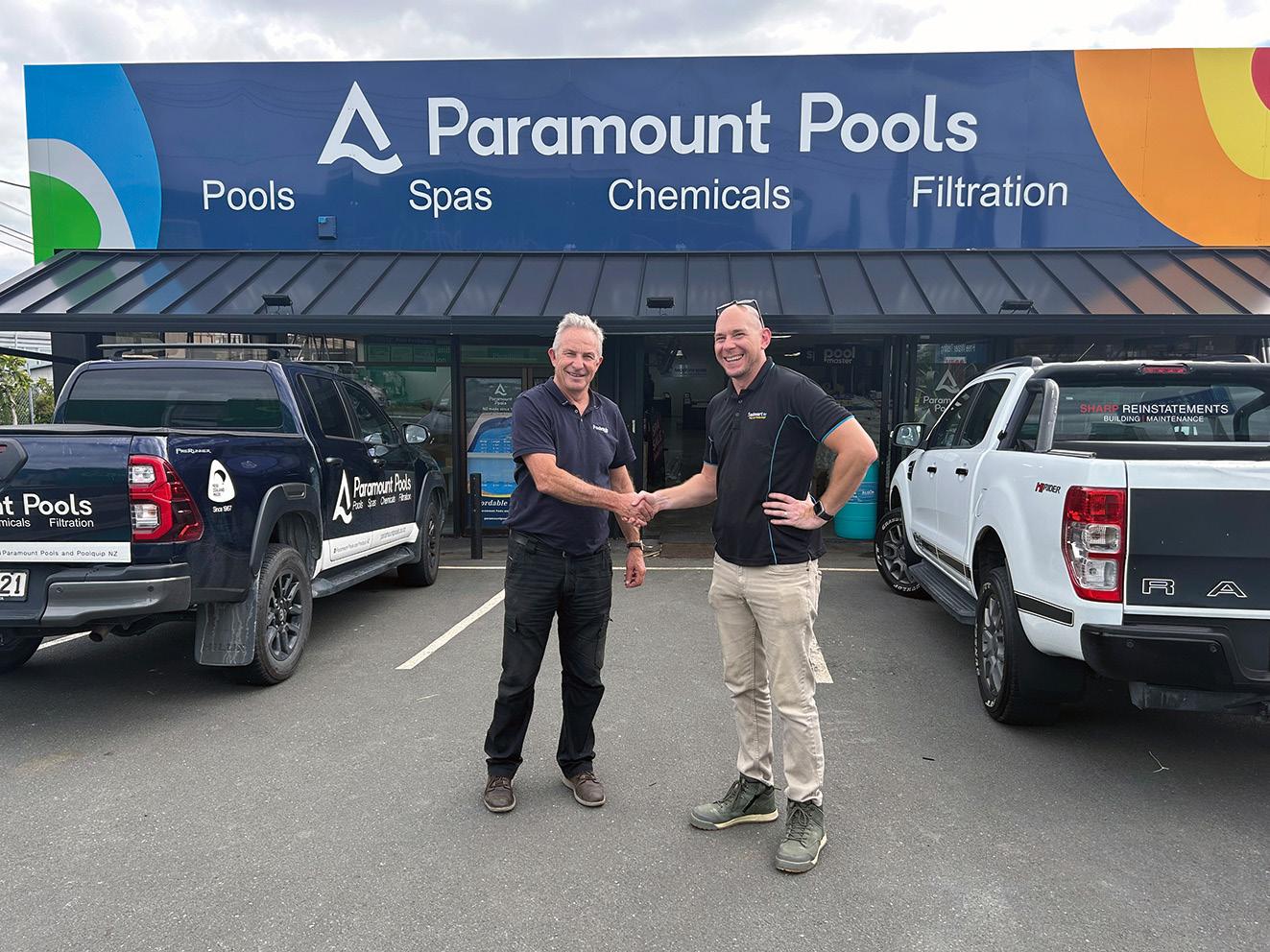
Australasian swimming pool and spa franchise network Swimart has merged with Paramount Pools in New Zealand, expanding its presence from six to nine New Zealand stores and mobile operations.
Paramount is converting three of its locations to Swimart, which will add to Swimart’s existing four retails stores and two mobile operations in New Zealand. Paramount has two other outlets under a different ownership structure which are not converting at this stage.
Rick Graham, Swimart’s executive officer for Australia and New Zealand, emphasises the significance of the merger as a pivotal aspect of Swimart’s growth strategy.
“Swimart acknowledges the rich history of Paramount Pools within the New Zealand market and commits to honouring its legacy,” he says.
“From the rebranding process to supplier support and customer care, we have the utmost respect for Paramount Pools’ remarkable heritage.”
He says the additional scale Swimart gains from the three locations will allow it to deliver a new benchmark when it comes to servicing retail customers and taking care of their pool and spa needs – and solidify the brand’s position as a thriving and successful business entity.
“This is only the beginning of our partnership as we see so many further opportunities for collaboration and innovation,” says Graham.
Paramount Pools has been a mainstay of backyards in New Zealand, remaining a leader in its field due to quality products and professional service.
“Since launching the iconic Para Pool more than fifty years ago, Paramount Pools has become the trusted source of pool and spa advice for Kiwis,” says Craig Wilson, director of Poolquip – the New Zealandbased manufacturing and wholesale operation behind Paramount Pools.”
He says the merger will make a very high level of industry experience available to the consumer.
Founded by ASX-listed Waterco, Swimart has more than 76 points of presence and nearly 40 years of industry experience, giving their New Zealand offering a combined 98 years’ experience in the pool and spa industry.
Contact: www.swimart.co.nz
Comparing the available pool DA figures for the 12 months to March with the same period last year, annual applications were down by 17 percent nationally. South Australia’s massive 241 per cent increase is seen as an improvement in data collection, while all other states were down: Queensland by 28 per cent, Victoria by 25 per cent, New South Wales by 21 per cent and Western Australia by 12 per cent.
The DA numbers over the most recent three months were down by 13 per cent nationally when compared to the same period last year. The January-March numbers from Cordell show South Australia up by 240 per cent and Western Australia up by 19 per cent; but all other states were down: New South Wales by 17 per cent, Queensland by 22 per cent and Victoria by 34 per cent.
While these figures give an indication of the way the market is trending, they are not comprehensive and don’t include all pools built or even all DAs lodged. By some estimates, the total national numbers including all types of pools could be almost double these figures. They do not include pool projects that are approved as part of a new home, smaller projects under the cost threshold, renovations that don’t require a DA, or some aboveground pools. Additionally, not all councils are forthcoming with data or report on time; councils in some states such as Queensland and Victoria are particularly reluctant. For further information, call Cordell Information on 1300 734 318.
On 13 December 2023, WHS ministers representing the Commonwealth, states and territories agreed to Safe Work Australia’s recommendation to prohibit the use of engineered stone to protect thousands of workers from respirable crystalline silica (silica dust).
Jurisdictions will prohibit the use, supply, and manufacture of all engineered stone from July 1, 2024.
While the majority of engineered stone in Australia is used in kitchen benchtops, swimming pool and landscaping workers may also come in contact with it through some paving materials.
Until the prohibition of engineered stone comes into effect, workers and businesses can continue to work with engineered stone in a controlled way.
Under the model WHS Regulations, if you are cutting, grinding, trimming, sanding, abrasive polishing or drilling engineered stone using power tools or other mechanical plant, you must use one of the following:
• A water suppression (wet cutting) system;
• An on-tool dust extraction system; or
• A local exhaust ventilation system.
All workers who process engineered stone must also be provided with and wear respiratory protective equipment.
Safe Work Australia is working with the states to progress the prohibition, drafting amendments to the model WHS Regulations. The amendments will then be implemented in each jurisdiction’s WHS laws.
Safe Work Australia will also develop a national framework to ensure anyone
Keep informed by subscribing to the free online newsletter.
Valentina Tripp appointed managing director of Fluidra APAC
Tripp replaced Stephen Matysiak, a 32-year Fluidra veteran who led the company’s ANZ, Asian and South African businesses since 2014.
working with engineered stone products installed prior to the prohibition is doing so safely.
Safe Work Australia CEO Marie Boland says that workplace exposure to respirable crystalline silica has led to an unacceptable increase in the number of cases of silicosis and other silica-related diseases.
“Expert analysis shows that silica dust from engineered stone poses unique hazards and there is no evidence that low silica engineered stone is safe to work with,” she says.
“This prohibition will make Australian workplaces safer and healthier.”
Boland says the vast majority of silicosis cases identified in recent years are in engineered stone workers. Many of these cases are in younger workers who are experiencing faster disease progression and higher mortality.
“The cost to industry, while real and relevant, cannot outweigh the significant costs to workers, their families and the broader Australian community that result from exposure to respirable crystalline silica from engineered stone,” says Boland.
“Continued work with engineered stone poses an unacceptable risk to workers, which is why we recommended a prohibition on the use of all engineered stone.
“Now that a prohibition has been agreed by WHS ministers, Safe Work Australia will progress amendments to the model WHS Regulations and develop guidance to support PCBUs and workers understand and prepare for the change.”
Meanwhile, Bunnings stopped selling engineered stone last year, in what has been seen as a win for unions and health experts
campaigning for a ban on the silicosiscausing material.
Bunnings director of merchandise Jen Tucker said in a statement that the decision to withdraw its limited range of engineered stone benchtops from December 31 was made following the recent release of Safe Work Australia’s landmark report and consultation with suppliers.
“While there has been clear indication from NSW and other state governments that they will legislate a ban on the product, we are proactively making this decision to allow suppliers and customers time to prepare for a transition.”
Contact: www.swa.gov.au/clearlungs
Safe Work Australia recommended the prohibition under the model WHS laws to protect thousands of workers from respirable crystalline silica (silica dust), which is generated in high levels when workers cut, shape, or polish engineered stone.
Exposure to silica dust from engineered stone has led to a rapid increase in the number of workers developing the serious lung disease silicosis in Australia.
The prohibition will ban a person conducting a business or undertaking (PCBU) from carrying out work, or directing or allowing a worker to carry out work, on or with engineered stone. This includes manufacturing, supplying, processing and installing engineered stone.
The online stories that made the news over the past two months.
500 public pools may close without significant investment
Renewed pressure is being applied for the government to address the issue of ageing swimming pool infrastructure.
David Daft joins Waterco as product training manager
Daft will oversee the company’s learning and development programs across eight global divisions.
Diamond Pool & Spa’s Helen Strangos passes away
Sadly, Helen Strangos passed away in December, following a three-year battle with lung cancer.
Concerns raised over cryptosporidiosis outbreaks
There had been five times the number of cryptosporidiosis cases than usual early this year.
May 10-12 Asia Pool & Spa Expo 2024
May 11-2 New Zealand Pool & Spa Expo 2024
May 17 NSW SPASA Golf Day, Oatlands
May 18-19 Brisbane Pool Spa and Lifestyle Expo
May 15-16 Country Pool Managers Conference, Club Forster, NSW
May 19-21 ARI NSW Conference, West HQ Sydney
May 20-22 AALARA, GCCEC
May 27-29 ARV Regional Conference, Bendigo
June 15 SPASA Awards Gala Evening, Qld
June 21-23 Perth Home Show
June 22 SPASA Awards Gala Evening, SA
June 27-28 National Sports Convention, Melbourne
June 29 SPASA Awards Gala Evening, NSW
July 20 SPASA Awards Gala Evening, WA
July 27 SPASA Awards Gala Evening, Vic
Aug 1 SPASA Awards Gala Evening, Tas
Aug 2 SPASA Awards Gala Evening, NZ
Aug 15-18 LIWA Conference, Perth
Aug 20-22 Australian Swim Schools Association National Conference, Gold Coast Convention & Exhibition Centre
Aug 20 SPLASH! Golf Day
Aug 21 WAVES Breakfast at SPLASH!
Aug 21-22 SPLASH! Pool & Spa Trade Show, Gold Coast Convention & Exhibition Centre
Aug 21 SPLASH! CEO Lunch
Aug 21 SPASA National Awards Gala Evening at SPLASH!
Aug 22 SPLASH! After Party
Aug 23-25 Melbourne Home Show
Aug 28-29 Waves 2024, Recreation Aotearoa, Wellington
Sep 18-20 ARV Metro Conference, Melbourne
Sep 20-22 Swimcon SCTA Conference, Caloundra
Sep 27-29 Brisbane Home Show
Oct 18-20 Sydney Home Show
Nov19-22 Piscine Global, Lyon France
More details at splashmagazine.com.au.
Dates are subject to change and should be checked with the relevant organisation.
Send calendar submissions to info@splashmagazine.com.au.
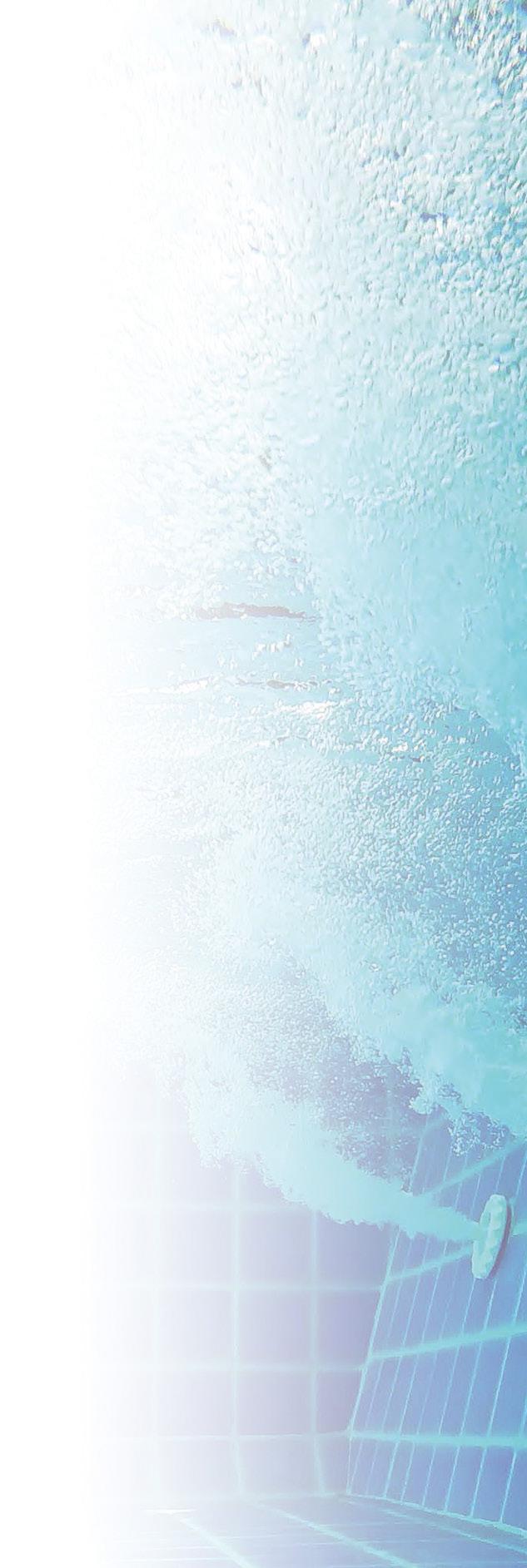

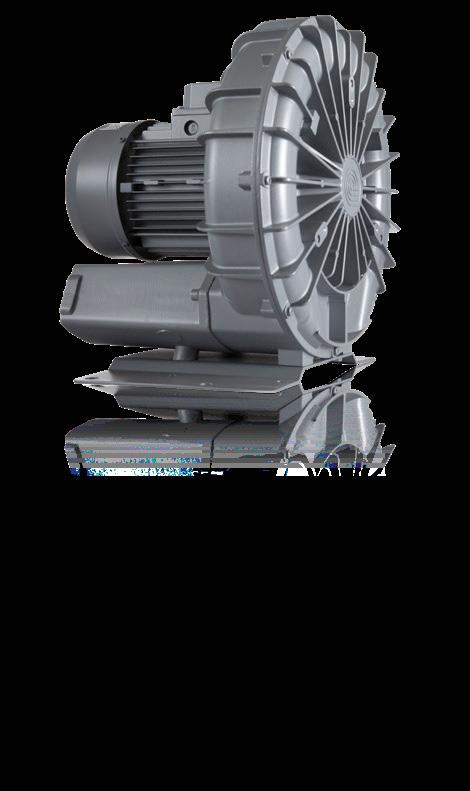
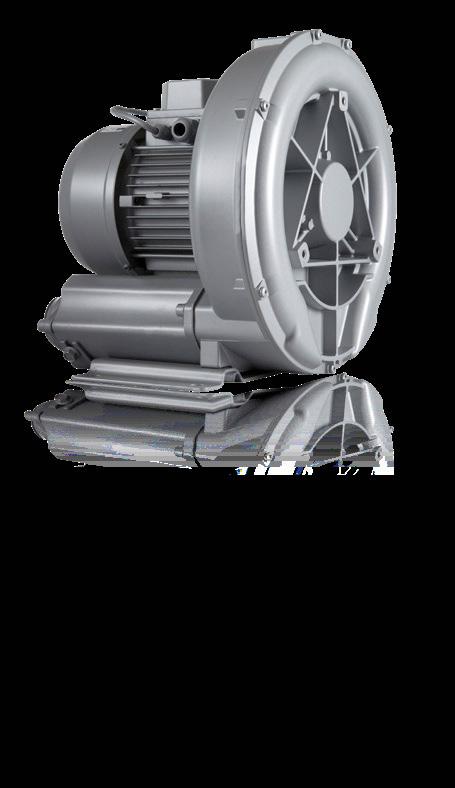
In July 2023 Minister for Agriculture, Fisheries and Forestry, Senator the Hon Murray Watt announced the public release of an independent review of the operations, conduct and governance of the Australian Pesticides and Veterinary Medicines Authority (APVMA). The APVMA is the regulator for agricultural and veterinary (agvet) chemical products in Australia, which includes pool and spa sanitisers, oxidisers and algaecide.
Minister Watt commissioned the review, undertaken by Clayton Utz, which raised concerns about the integrity of Australia’s agvet chemical regulation and found there were serious systemic structural and governance issues present in the APVMA between 2019 and 2022, including leadership and management shortcomings, shortfalls from best practice as a regulator and deficiencies in stakeholder engagement.
Following the review, Minister Watt engaged Ken Matthews AO to complete an independent rapid evaluation of the review findings and to advise on future structure and governance arrangements for the APVMA. The resulting Final Report on Future Structure and Governance Arrangements for the Australian Pesticides and Veterinary Medicines Authority (APVMA) (Rapid Evaluation) was released on April 17, 2024.
Among the report conclusions:
• By 2019-21, the APVMA had lost sight of its fundamental identity as a regulator, as evidenced through unbalanced performance of regulatory functions and inequitable dealings with stakeholders.
• APVMA became isolated from regulators and the Australian Public Service (APS), leading to erosion of its corporate culture.
• Resistance to the Board-exercised effective oversight of senior management.
• Performance indicators were too narrowly defined, impeding measurement of APVMA’s overall performance as a regulator.
• Performance of regulatory functions became unbalanced.
• Stakeholder engagement was not evenly balanced across the full range of stakeholders.
The report goes on to make 33 separate recommendations incorporating management improvements around culture,
governance and leadership; confidence building measures including development of new regulatory performance indicators; and development of comprehensive funding reforms.
In meeting our organisational commitment to industry advocacy, SPASA has been involved in the review and evaluation process via participation in an industry consultative forum. As the SPASA representative on that committee, I find the actions of Minister Watt and the Department of Agriculture, Fisheries and Forestry (DAFF) encouraging and the response to recommendations reassuring. We understand that some recommendations are being initially rejected, including the proposal to move APVMA functions within a statutory office accountable to the secretary of DAFF. The APVMA will remain an independent statutory authority accountable to its own Board.
Minister Watt has announced a preference for independence and will also have the APVMA remain at its present Armidale location – a factor that was deemed at least partly responsible for the authority’s cultural isolation.
In some cases, rejection of a recommendation simply signals that more time is needed to work through the issues and determine the appropriate path forward.
As the industry’s peak body, we are buoyed by DAFF’s response and commitment to the serious reform needed to re-establish APVMA as an authority of integrity that adheres to regulatory best practice and maintains even-handed stakeholder engagement.
DAFF will release a detailed response to the Rapid Evaluation report mid-year, based on further input and analysis from both DAFF and the APVMA. It will address each recommendation in greater detail and incorporate input from previous reviews to offer a comprehensive outline of the government’s reform agenda for the APVMA.
In the meantime, as an industry advocate, SPASA will continue to work with DAFF and APVMA to ensure our seat at the table gives us an equal voice in the latest evolution and future direction of the agencies and authorities that govern our standards and practices.
The Rapid Evaluation report and the government’s preliminary response to the recommendations is now available on the Department of Agriculture, Fisheries and Forestry website.
Contact: www.agriculture.gov.au/apvma-rapid-evaluation.
AIS Water CEO Elena Gosse has been named a finalist in four categories of the international Women Changing the World Awards (wcwawards.com) with winners to be named by Sarah Ferguson, the Duchess of York, at a gala ceremony in London on May 25, 2024.
The Women Changing the World Awards are a global awards program recognising the work of incredible women making a positive difference in the world across a range of industries and areas including business, sustainability, leadership, health, education, product development, innovation and technology.
Gosse’s extensive public speaking and charity work helps to encourage women to find their voice and embrace leadership. She is also passionate about raising awareness and funds to help end domestic and family violence.
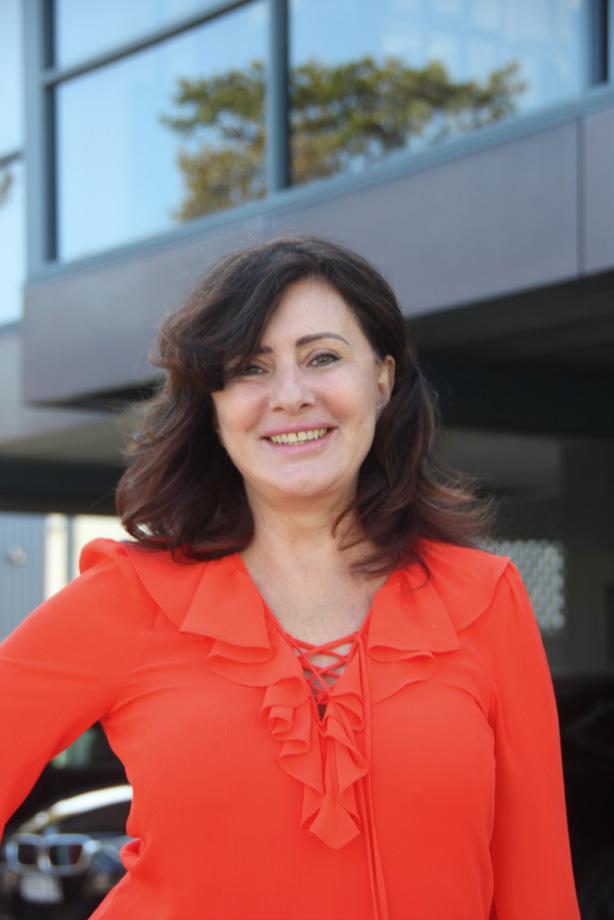
She is a finalist in four Women Changing the World Award categories: Business of the Year, Hall of Fame, Migrant Leadership Award and Thought Leader of the Year.
An immigrant from Russia who didn’t speak English when she arrived in Australia, Gosse has overcome gender discrimination and a childhood plagued by domestic and family violence. She now works to encourage women to keep striving for their dreams, regardless of their situation.
She has won more than 55 business and personal awards and holds two university degrees. In June 2022 Elena was awarded an Order of Australia Medal (OAM) for her services to manufacturing and the community.
www.wcwawards.com
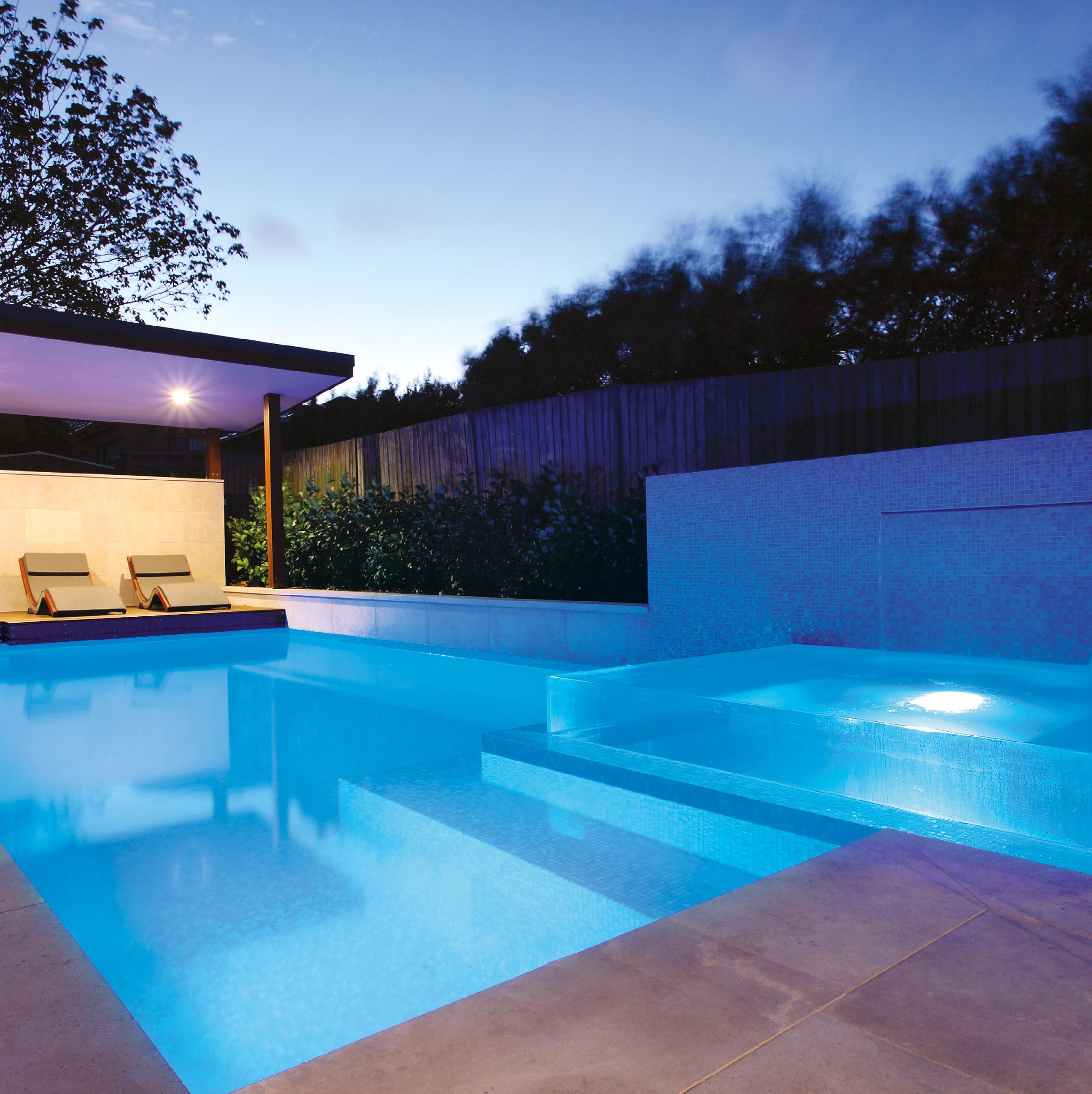
Underwater Lighting Specialists
Aqua-Quip designs and manufactures in Australia, innovative underwater LED lighting systems for use in concrete and fibreglass swimming pools, spas, water features and catch tanks for the Australian and international pool markets.
Lights are compatible with all popular pool controllers and home automation systems. The innovative InstaTouch™ Smart Lighting Controller provides instantaneous control via a water-resistant handset to enhance the evening atmosphere in your pool and spa.
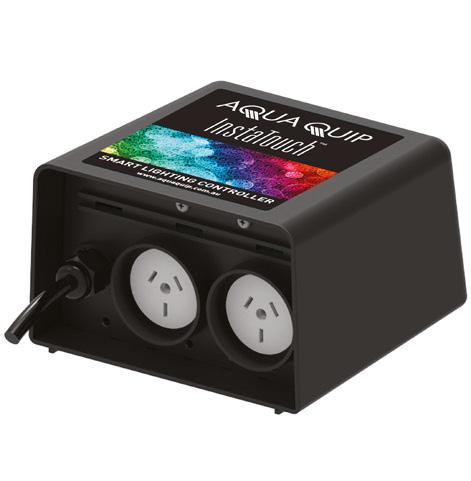
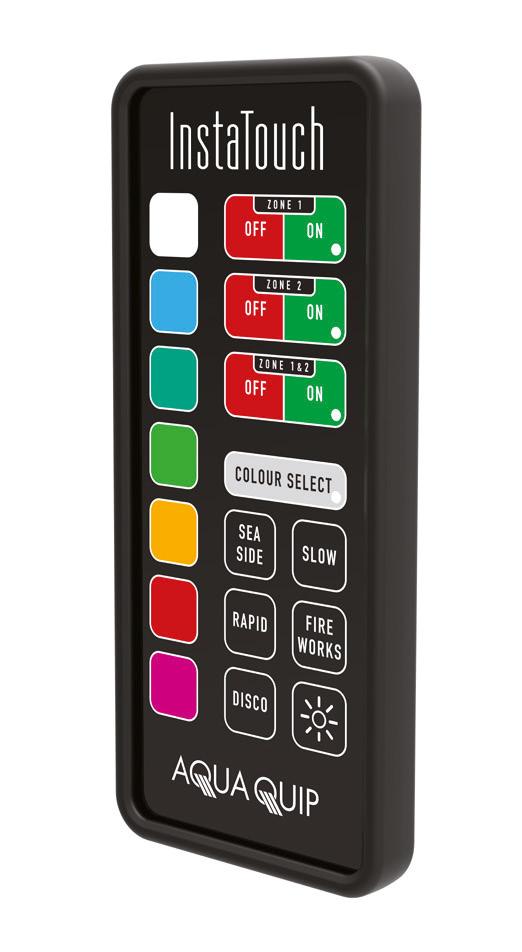
Following the success of the Melbourne and Perth consumer expos, three more expos have shown there are still plenty of buyers keen to improve their lifestyle by spending money on a pool or spa.
The Sydney Pool & Spa Lifestyle Expo show attracted a fantastic crowd over two days, followed by an equally good turnout at the Adelaide and Brisbane expos.
South Australian region manager Rebecca Smith says the Adelaide Pool & Spa Lifestyle Expo was running hot with a record number of exhibitors and a record number of consumers through the door.
“Enquiries and leads were strong with many consumers leaving the expo with lighter wallets. Well done to all involved – and bring on 2025,” she says.
Exhibitors at both shows say they were impressed by the calibre of visitors, with plenty saying they have opened up new avenues of exposure.
At the Sydney expo, SPLASH! spoke to Matt Ranieri from Aquify Pools, who was showcasing their 8m x 4m St Remy pool with a platinum finish. He says the show was great to get face to face and meet with potential clients, past clients and current clients, and see all of the other suppliers.
“It’s just a great energy and it’s been a great day,” he says. Ranieri says from talking to people at the show, he believes there is a trend towards interest in smaller pools. He also says consumers have not seemed particularly concerned about cost of living.
“A lot of punters are saying they’ve already got the money saved. In years gone past, a lot more people would say they need to check with the bank first, but we’re not having those conversations as much. I’d say people who find themselves in a lucky enough position to have a decent amount of savings are a bit more likely to come and look at a pool right now.”
In Adelaide, the director of Everclear Pools said that getting the exposure was absolutely phenomenal.
“We sent out 170 quotes after last year’s show, which is huge, but this morning was crazy. When we opened, people were everywhere – we sold two pools in two hours! We don’t really expect that – we just focus on getting leads for quotes – but everyone is ready to go. These buyers are really qualified, they’ve done their homework, they know what they want and just come in and buy it!”
The next show is the New Zealand Pool & Spa Expo (May 11-12).
Contact: www.poolspalife.com.au/expo
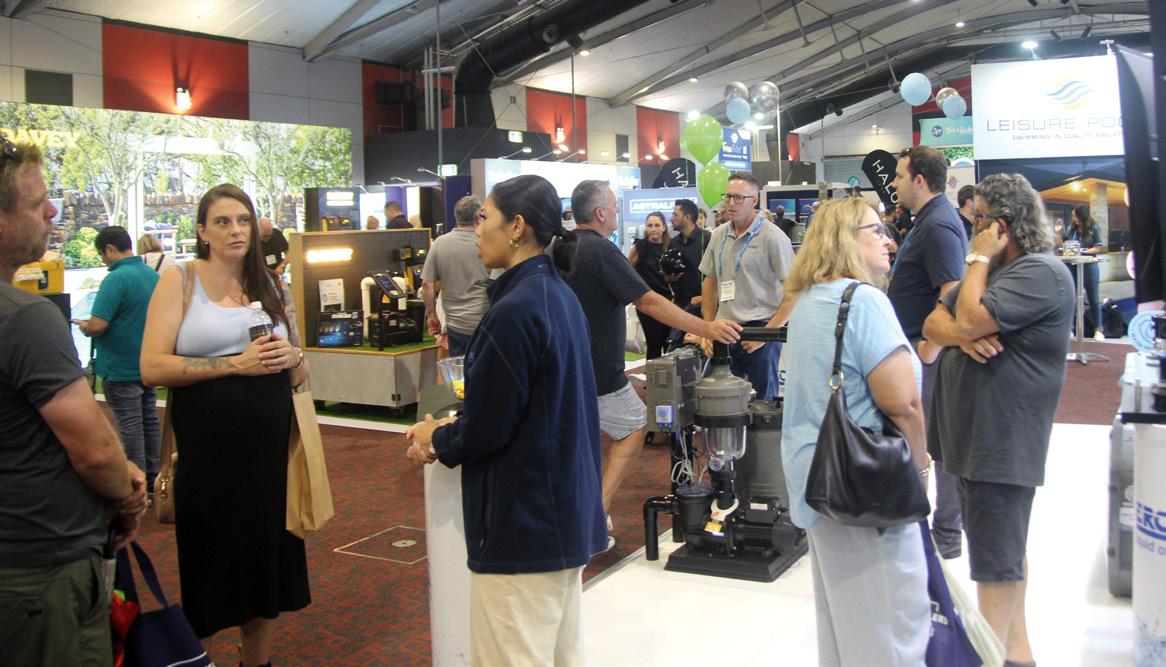
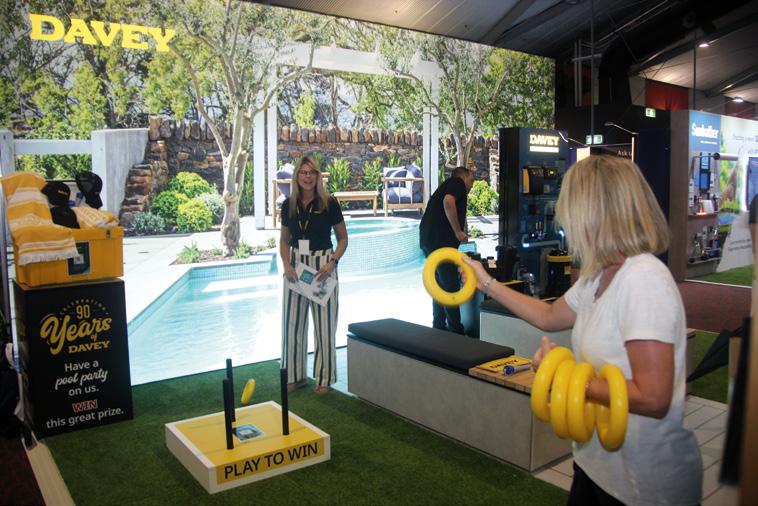

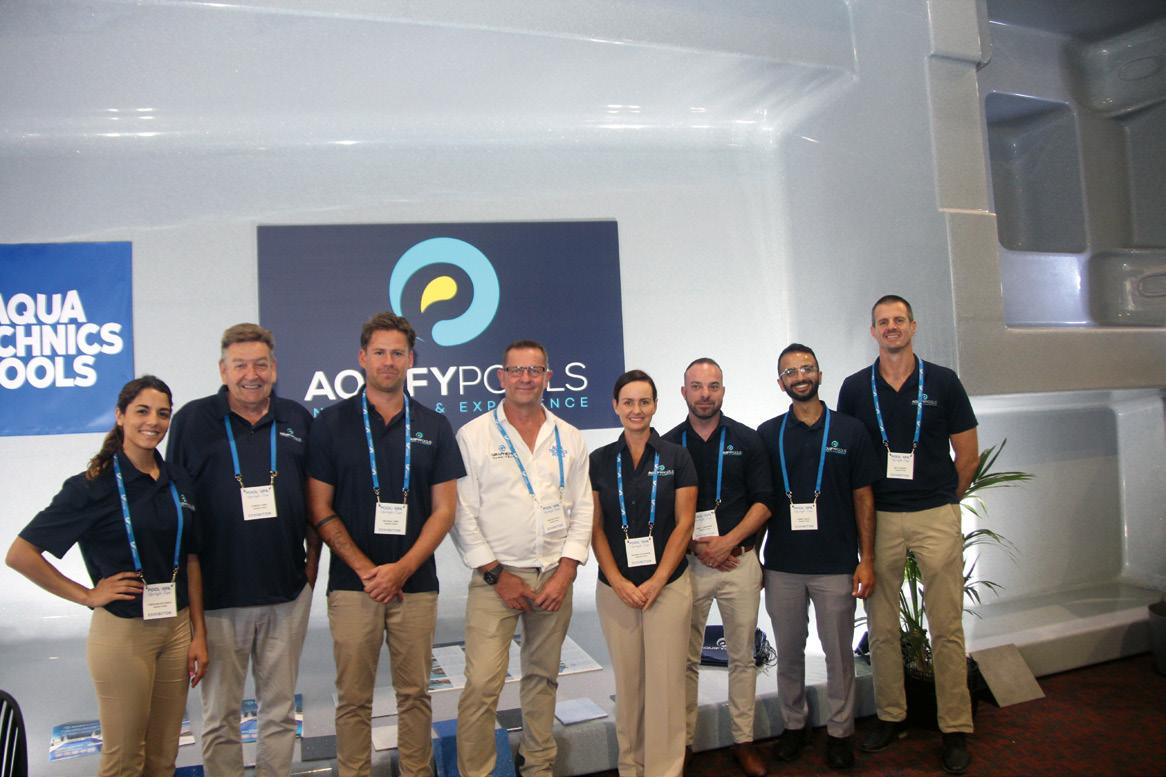
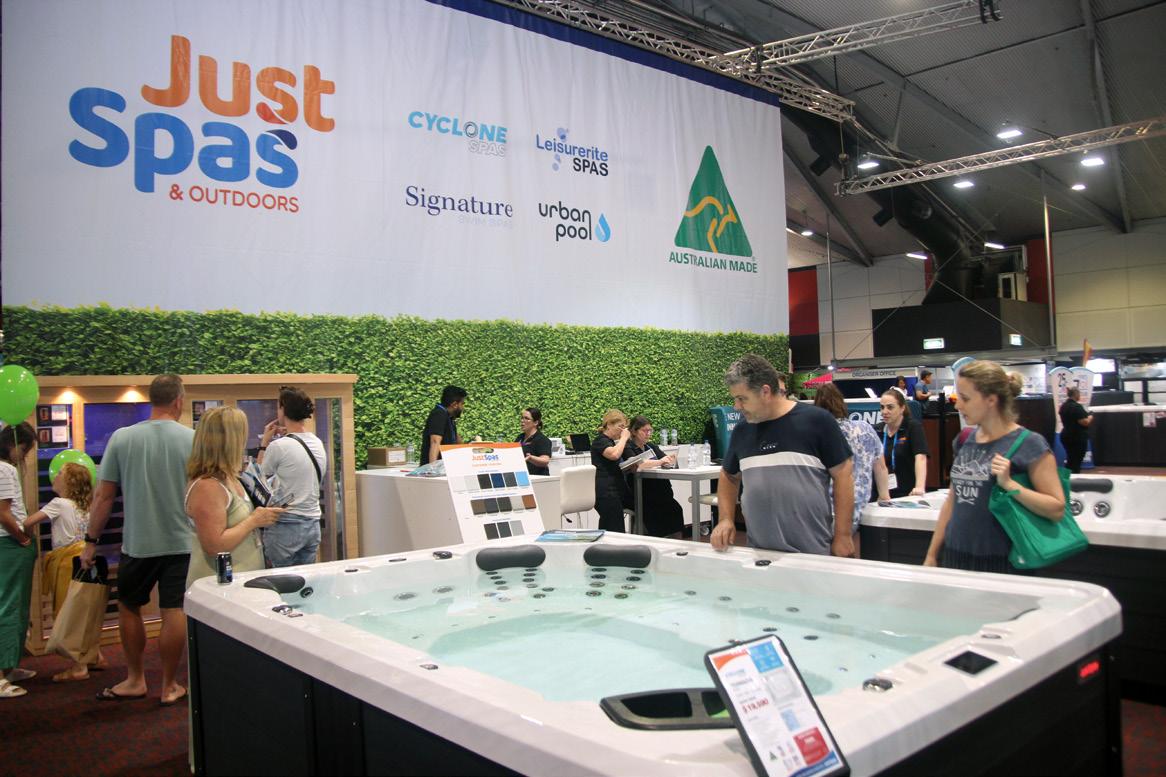
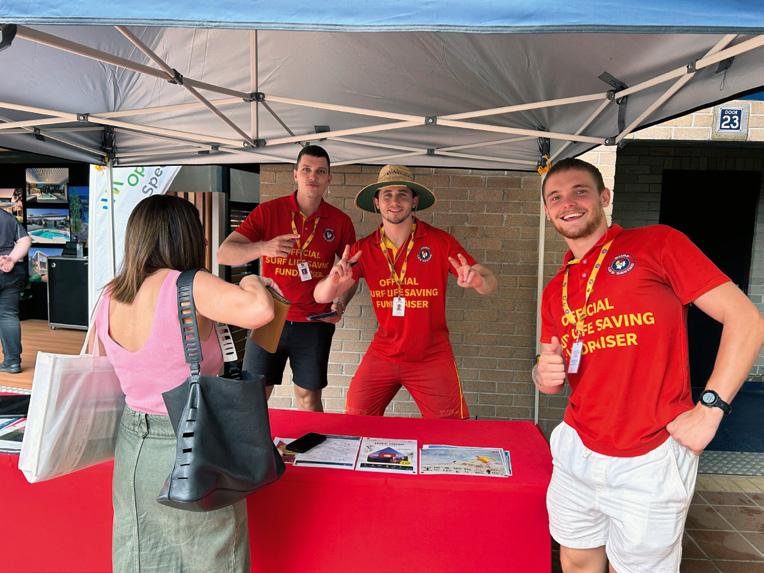 TOP TO BOTTOM: Keen family interest at the Waterco stand
Fun and games with Davey Yvette Audet from Fluidra with Nicky Sloan from ASSA and Mel Rickwood from Rackley’s
The Aquify team led by Matt Ranieri (right)
Spas were popular Raising funds for lifesavers
TOP TO BOTTOM: Keen family interest at the Waterco stand
Fun and games with Davey Yvette Audet from Fluidra with Nicky Sloan from ASSA and Mel Rickwood from Rackley’s
The Aquify team led by Matt Ranieri (right)
Spas were popular Raising funds for lifesavers
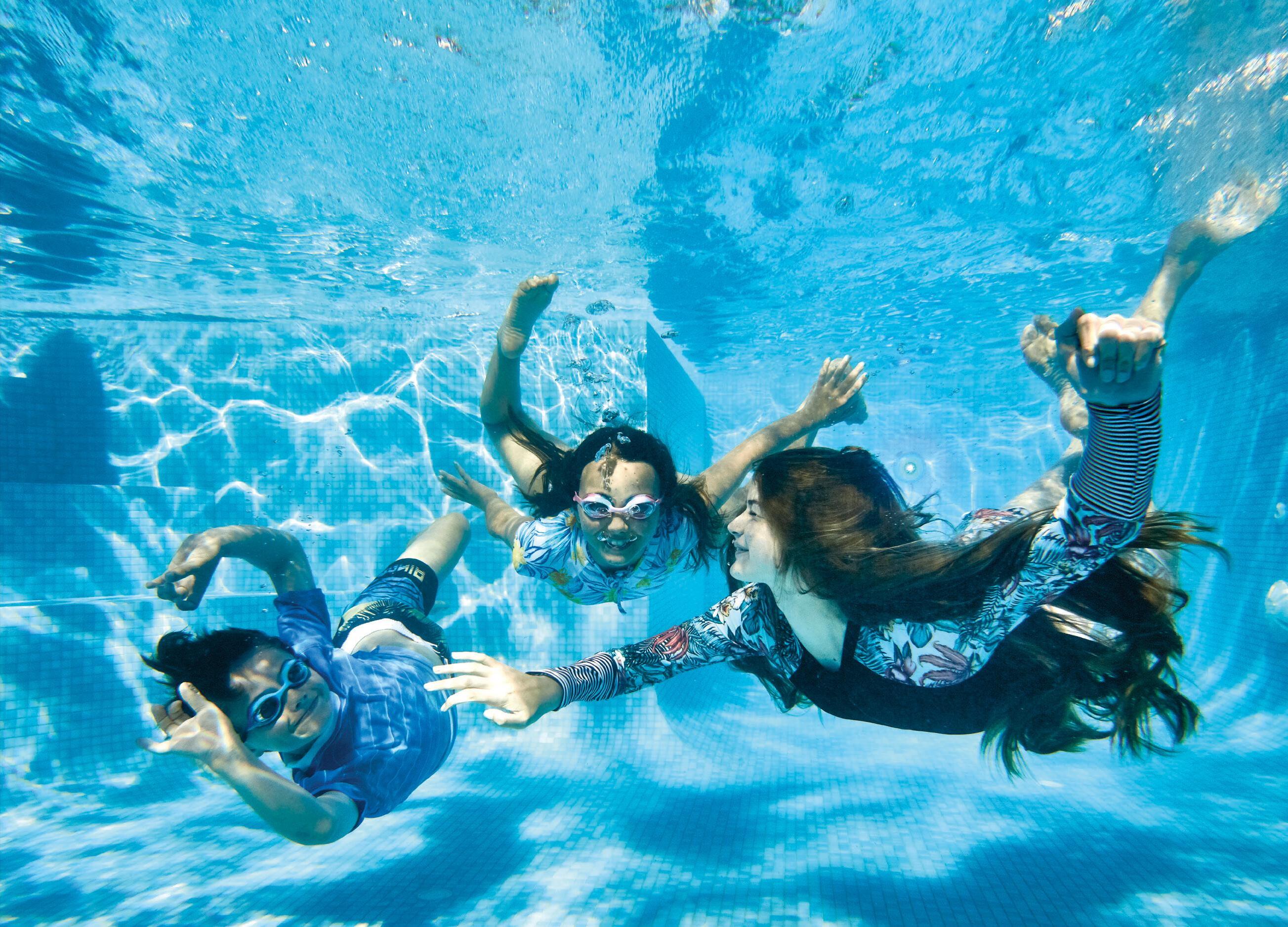
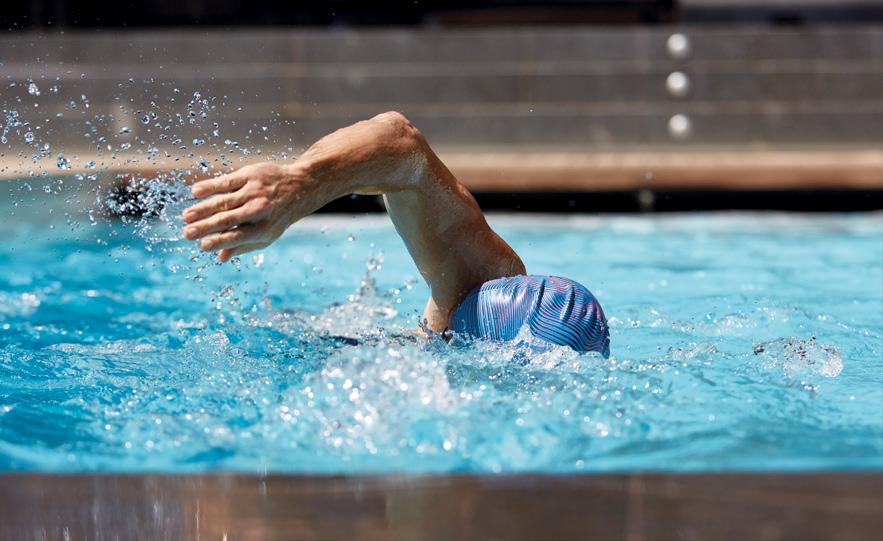
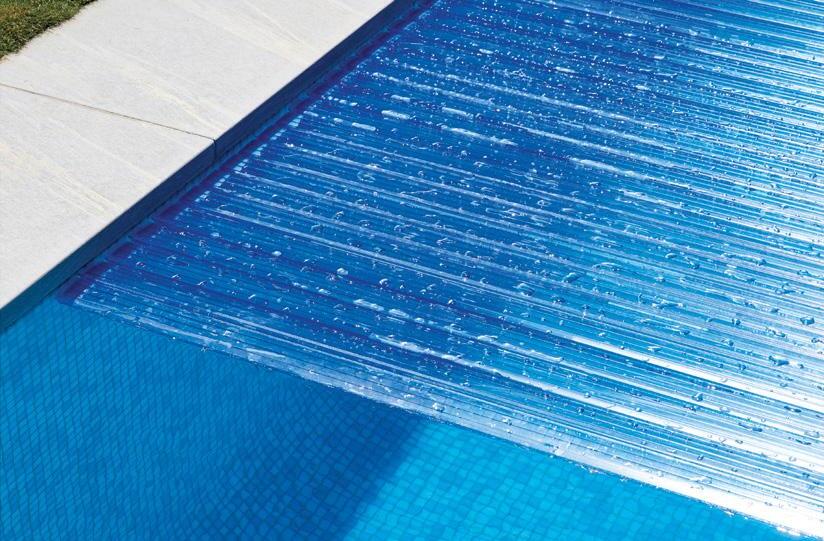
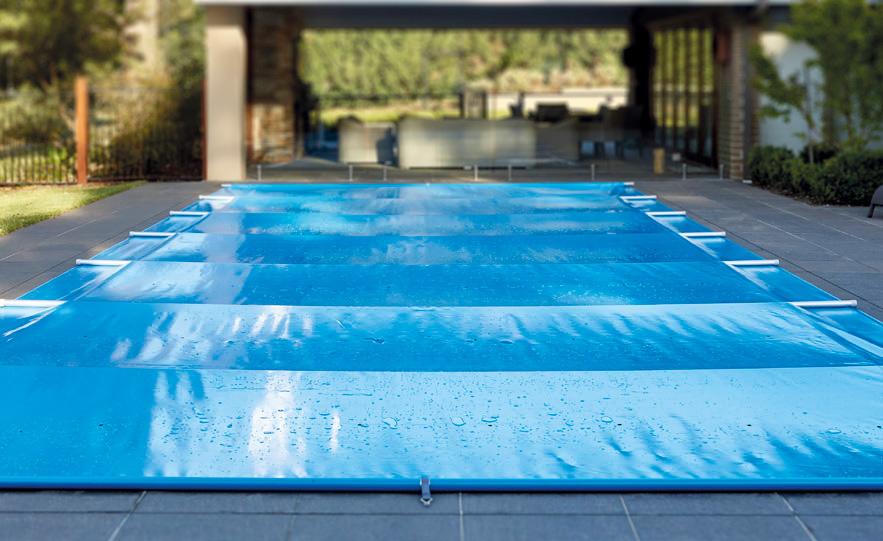
www.remco.com.au

SPLASH! recently spoke with the 2023 National Professional of the Year, Steve Taylor, principal at COS Designs. We discussed his journey into pool and landscape design, and the challenges and opportunities for 2024.

When Steve Taylor first left school he narrowly missed out on studying the first landscape architecture bachelor’s degree at the University of Melbourne. Competition was fierce – 3000 people applied for 50 positions – but while Taylor made it to the last 100, he just missed the final cut.
Undaunted, he pursued his dream through an alternate path. He studied business management as well as landscape construction and design, and became a qualified landscaper running his own construction company.
Initially he had been doing the landscaping designs for free to feed the construction business and slowly began to charge for his design services. After 10 years of doing both, he decided he needed to choose either design or construction.
“I really enjoyed doing both, but for quality assurance reasons I had to focus my attention on one or the other; so I decided to focus on design alone about 15 years ago,” he says.
Now, Taylor is the highly successful designer of multi-award-winning gardens and poolscapes who sits on the judging panels for state and national landscaping awards, the prestigious Melbourne International Flower and Garden Show, and on several steering committees for educational institutions such as TAFE as well as guest lecturing for the London College of Garden Design Melbourne.
Pools were always a natural inclusion in his garden designs, and last year he added winning the National SPASA Professional of the Year and Pool Designer of the Year to his resume.
“Pools and gardens go hand-in-hand,” he says. “We do anywhere between 60 to 80 designs a year, and approximately 70 per cent of those will include a swimming pool.”
When asked what really makes a pool design special, Taylor enthusiastically extols the synergy of pools and landscapes.
“A pool should be more than just a hole filled with water. I’m biased but I think the landscape design plays a huge part in that.
“You can compare an eight by four pool with just paving and a pool fence around it, or an eight by four pool with a beautiful garden around it. Visually, the beautiful garden helps make the pool so much more special.”
He also believes garden design plays a huge part in the swimming pool awards each year. When reviewing the winners, he has observed the successful pools sit within well designed, well considered gardens and surrounds.
“Integrating a pool nicely into an area with scale and proportion is very important; making sure that the pool doesn’t dominate or get lost in the space. The elements around the pool also need to have that same level of consideration to size, shape, functionality and form.”
While adding an extra layer of complexity, Taylor enjoys the creativity behind designing pools and gardens to strictly meet the regulations and guidelines, while still looking and functioning beautifully.
TOP: In Victoria, the pool wall may be used as a safety barrier if it fulfills certain criteria, making for a cleaner look
MIDDLE: Curves are back, helping incorporate the pool into the landscape while softening the geometric lines.
Photography by Janis House Photography
BOTTOM: Even when there is limited space, the pool, home and garden can combine beautifully. Photography by Tim
Turner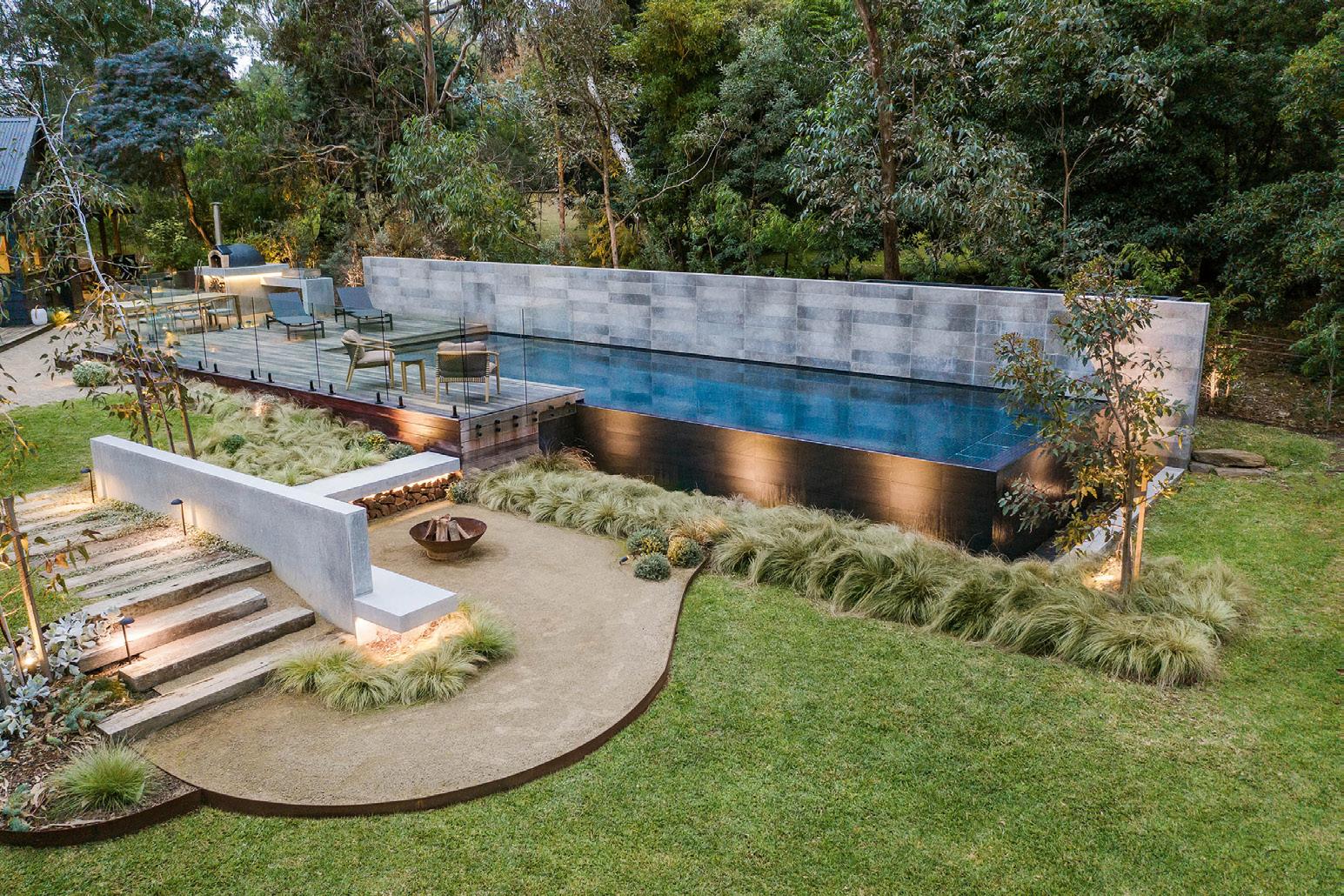
“A pool needs to have a sense of belonging in the space – and the landscaping design and execution play a huge part in that.”
“There’s so much fun you can have designing pools in terms of creating wet edges and infinity edges – even in small courtyards – to help minimise physical pool barriers while making the pool compliant; for example, cleverly using the wall of the pool to be the safety barrier. [This is currently not allowed in New South Wales.]
“We like to be quite creative about how we manage our fencing while maintaining 100 per cent compliance,” he says.
In terms of shape, he believes curves have made a comeback.
“Shapes of pools are evolving every day –rectangles used to be the go and curves had gone out of fashion. But now curves are back big time. We have a pool at the moment that’s a geometric pool but with a huge curve in it, which elevates the design while also softening the strong geometric lines, ensuring the pool nestles into the surrounding coastal bush environment.”
He believes the most important thing is to create a space where the pool looks and feels at home.
“Fundamentally, for me, a pool needs to have a sense of belonging in the space – and the landscaping design and execution play a huge part in that.
“The attention to detail put into the pool and landscape build is also very important. Materiality, water colour – those things help created the sense of belonging. There are so many parts that together create the perfect pool area; and if executed well, the results speak for themselves.”
COS Designs tend to specify concrete pools over fibreglass because of the advantages for flexibility and freedom of design. Nonetheless, Taylor believes fibreglass pools play an integral role in bringing swimming pools to everybody.
“Whether fibreglass or concrete, it all comes back to how well the pool and surrounds have been designed.
“And fibreglass does offer a better price point for consumers, and they can be done a lot more efficiently and quickly. But for us, we predominantly work with concrete pools.”

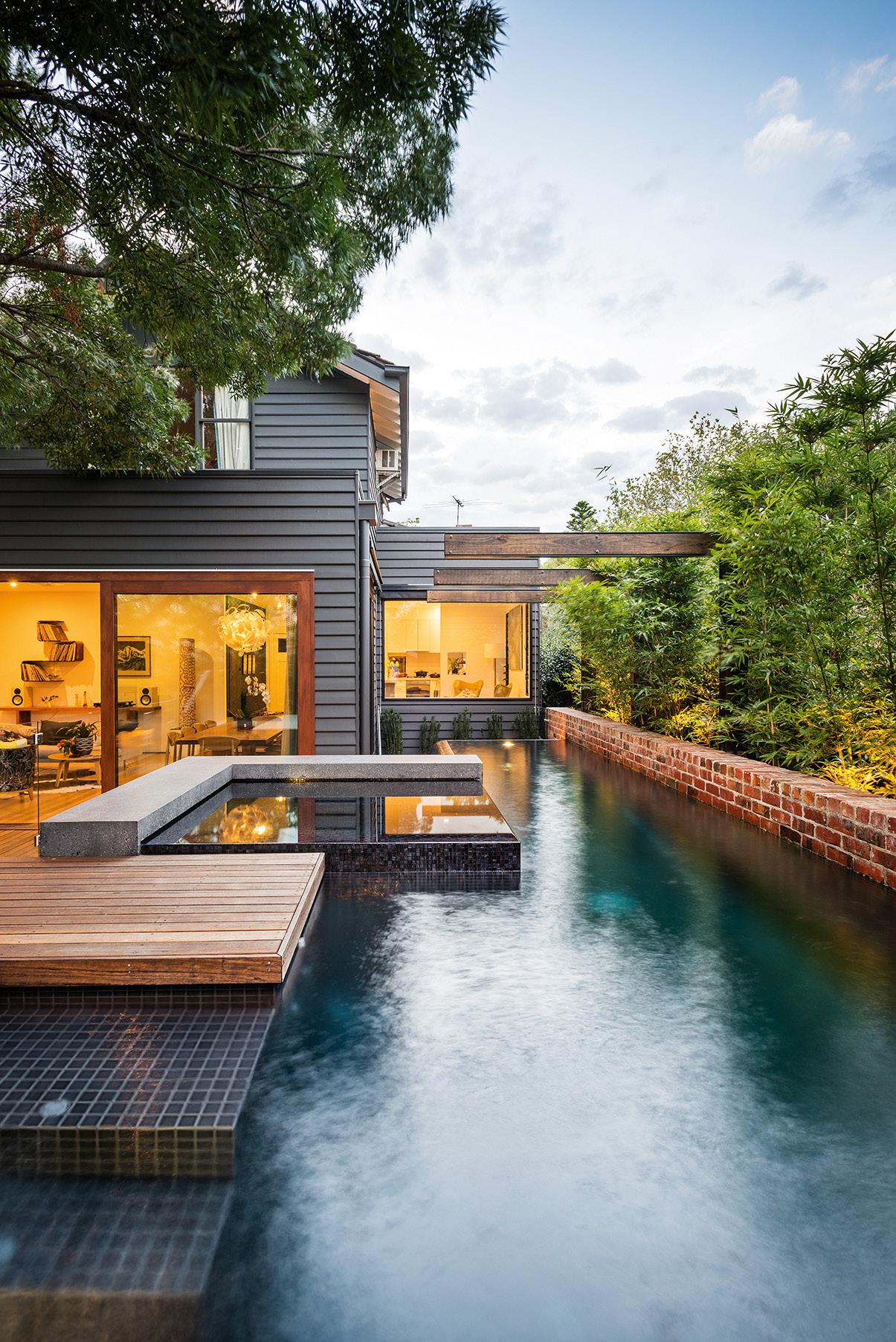

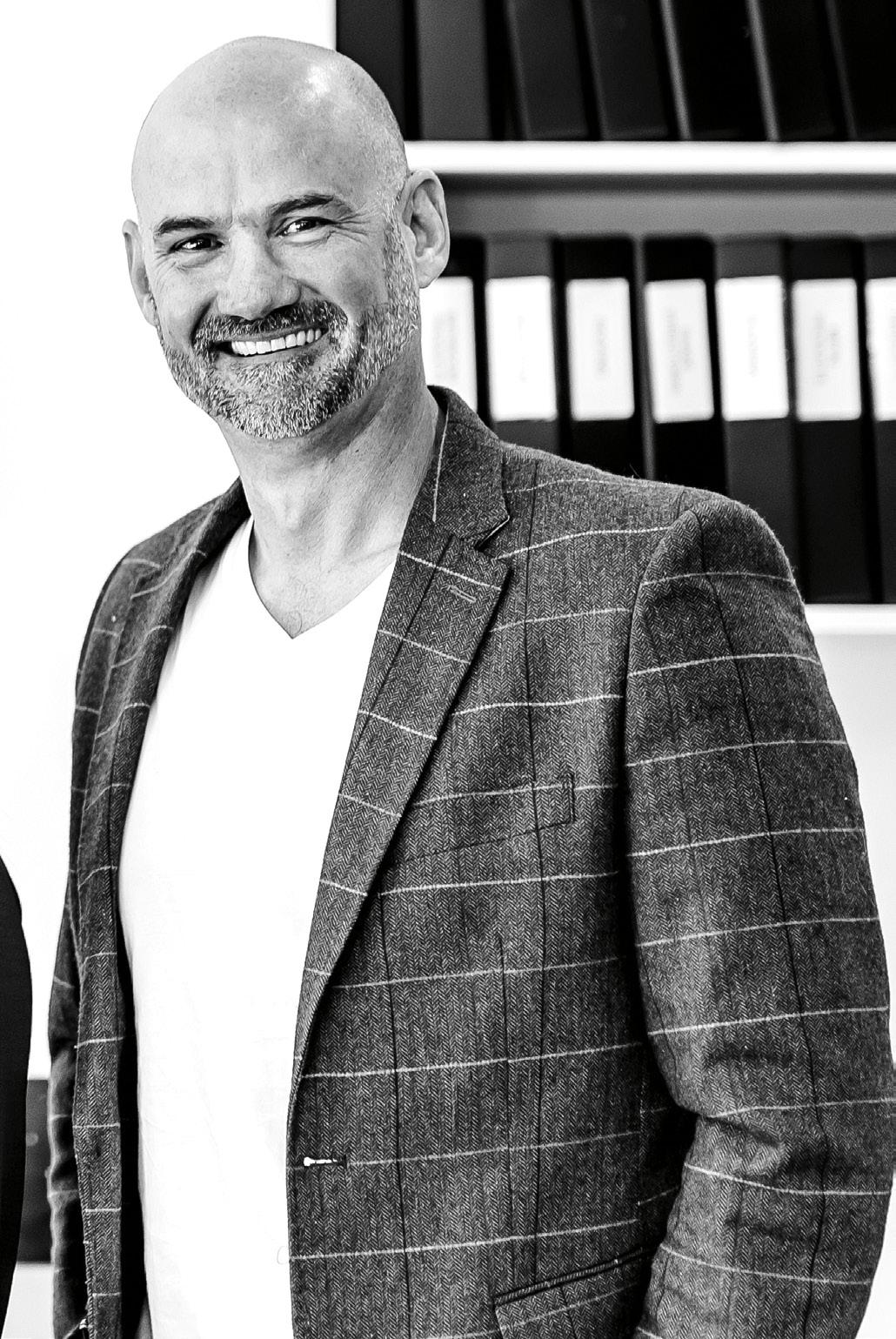
understandably so, with the tightening up of household budgets, luxury items are taking a backseat.
“At the very top end, the cap on how much people are looking to invest doesn’t seem to be going backwards – you can see some residential swimming pools going upwards to a million dollars, and half a million dollars is becoming a pretty regular price tag that we see.”
COS Designs’ work comes to them through both brand marketing and industry referrals.
“We have a strong brand through our social media marketing and our portfolio of work,” says Taylor.
“We also receive a number of referrals from a wide range of pool companies that we work regularly with. We also have a good stable of architects who recommend us for designing gardens and pools around their homes.”
These architects want the architectural language used in the home to be transferred into the garden and pool. COS Design has worked hard to build trust and respect with these architects over the years.
“We also have close relationships with about a dozen pool builders – sometimes the pool has been designed and they want the surrounding gardens to be done; sometimes they have a client and want us to design and the pool and the garden, then the pool company comes in afterwards and quotes the pool.”
Historically, there can sometimes be friction between designers and builders. Taylor thinks his experience in construction helps alleviate some of those concerns.
“I think my construction background gives the pool companies and landscapers confidence that I’m going



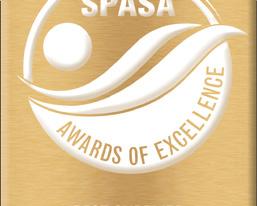

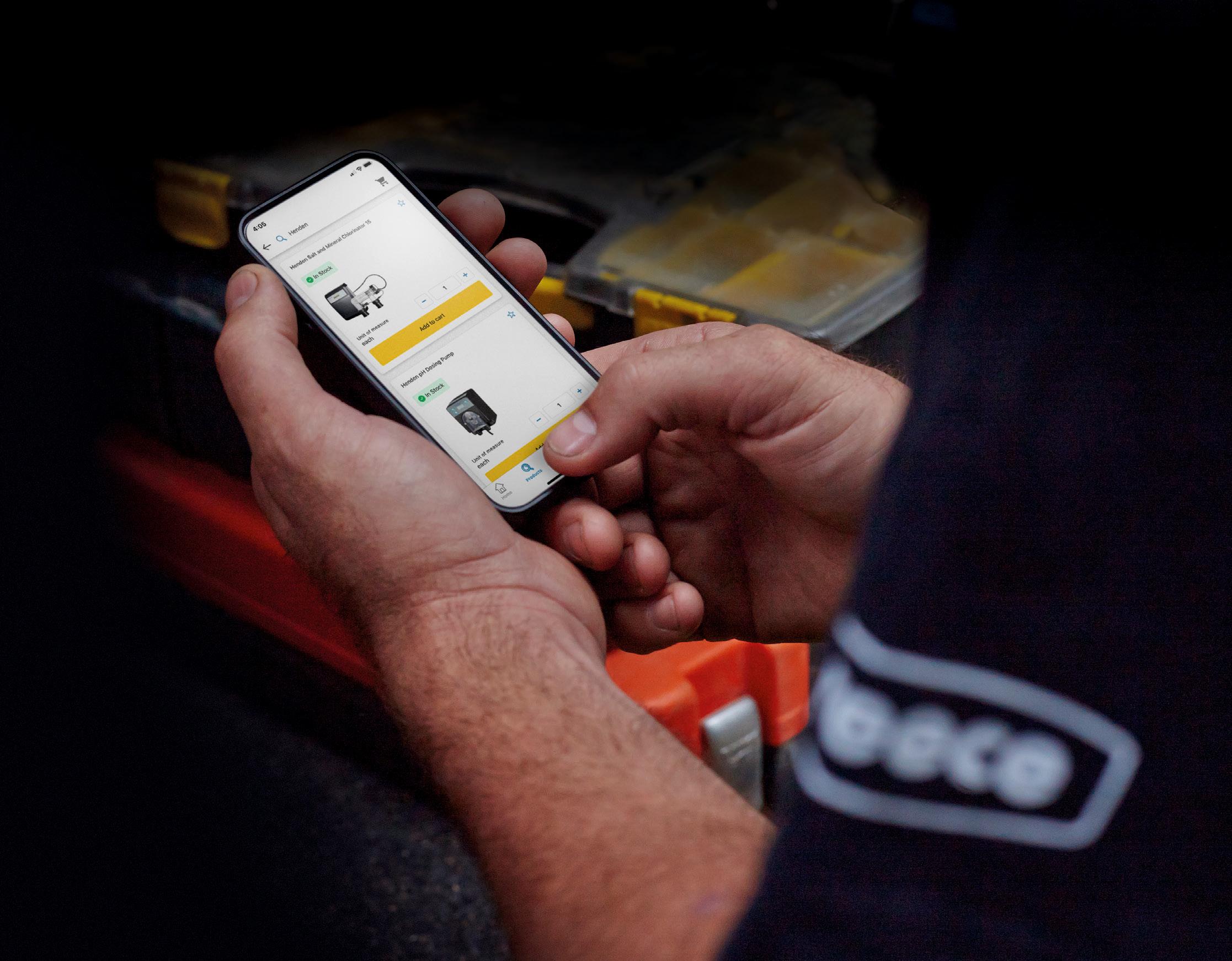
Our maX app gives you access to Reece Irrigation & Pools on your phone. It puts live pricing, stock availability, online ordering, delivery tracking and more in the palm of your hand. It’s your next pool project, on your terms.
Reece. Works for you. Find out more at reece.com.au/pools
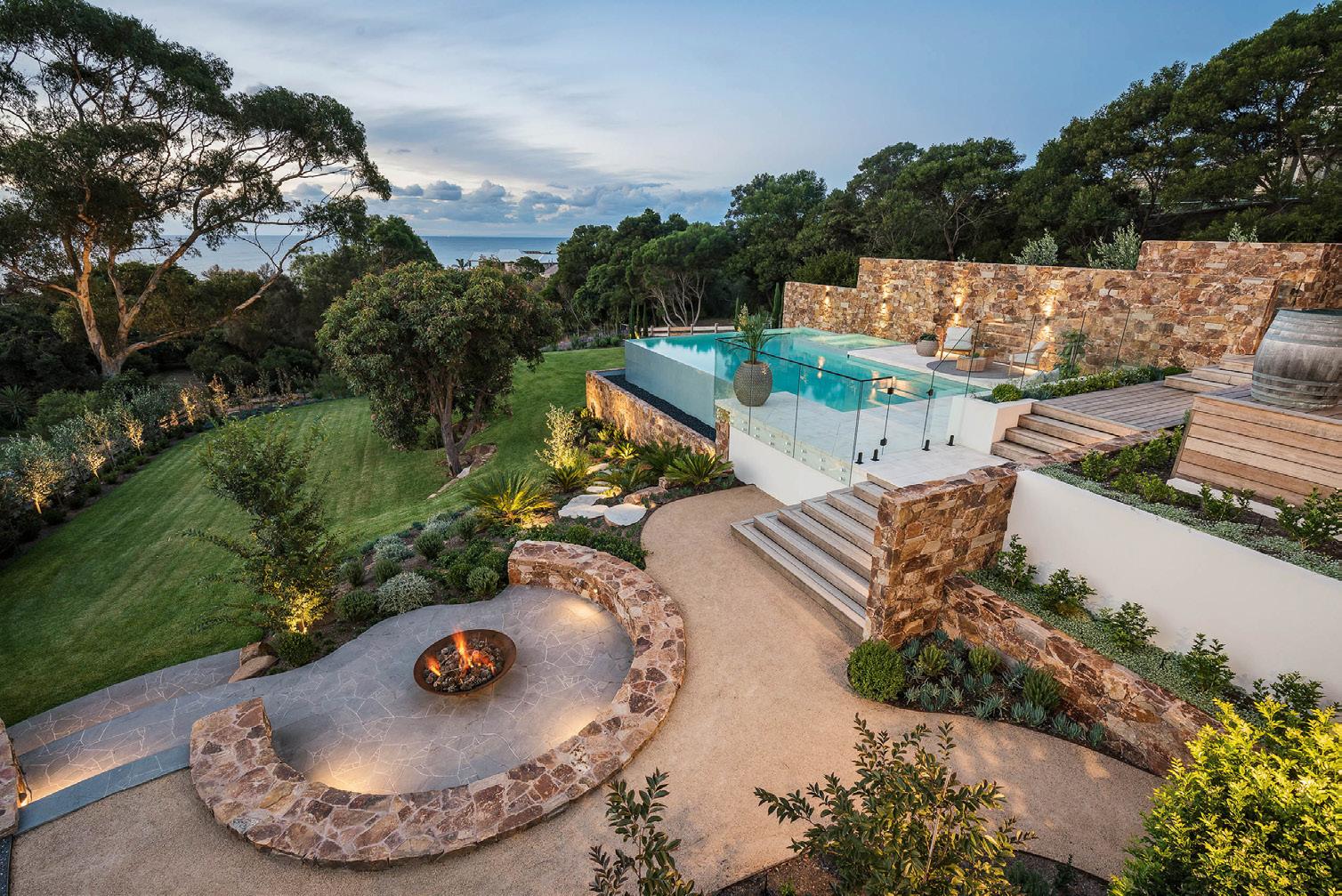
“There are so many parts that together create the perfect pool area; and if executed well, the results speak for themselves.”


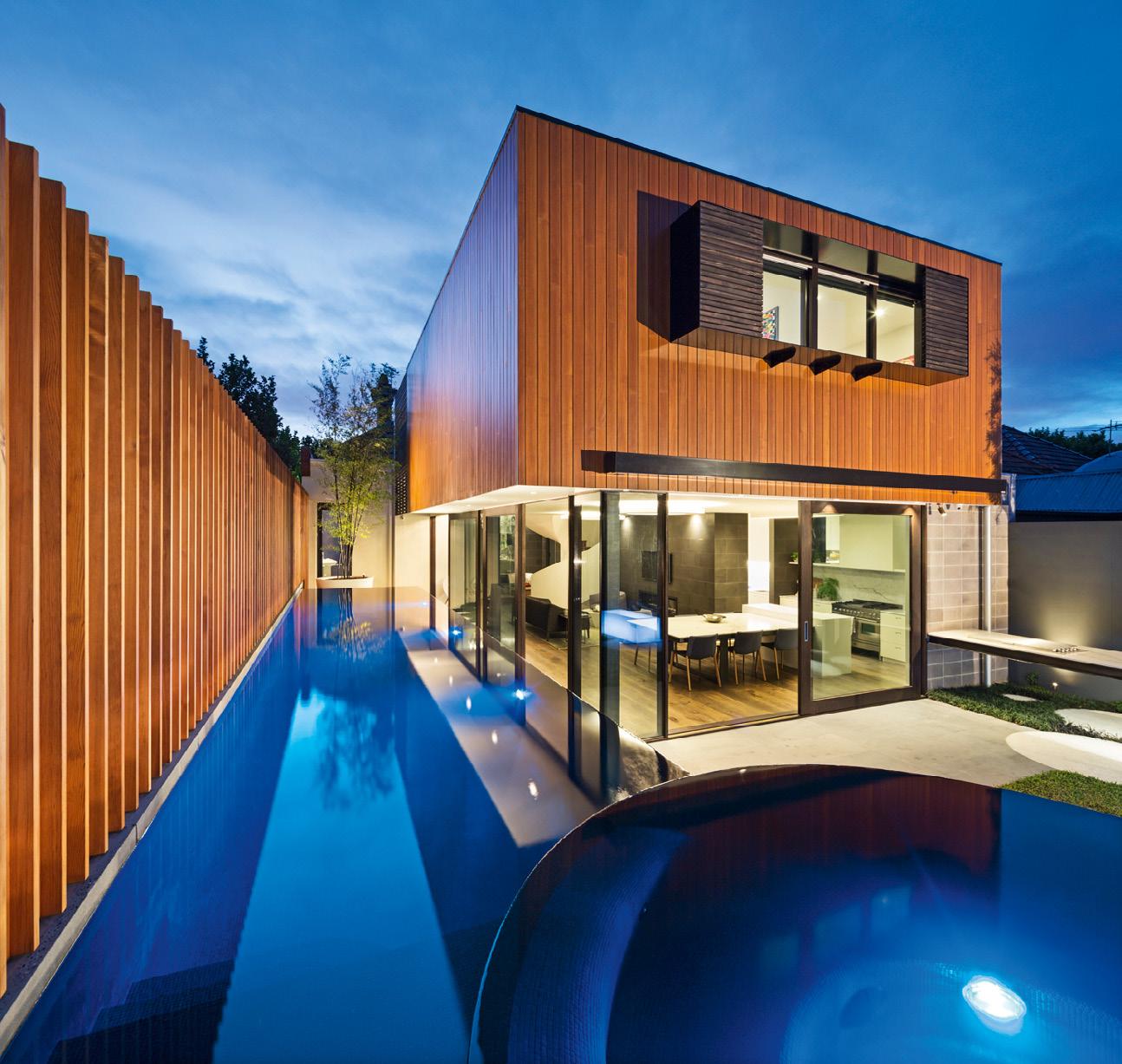
to design something that I know can be built,” he says.
As part of the landscaping community, Taylor tries to pass on his knowledge to up-and-comers, while also learning from Melbourne’s renowned pool builders and landscapers every day.
“There’s an incredible fleet of excellent designers in Melbourne,” he says.
“Australia is up there in the world when it comes to swimming pool design, landscape design and construction. So it’s a world class level we’re all involved with.”
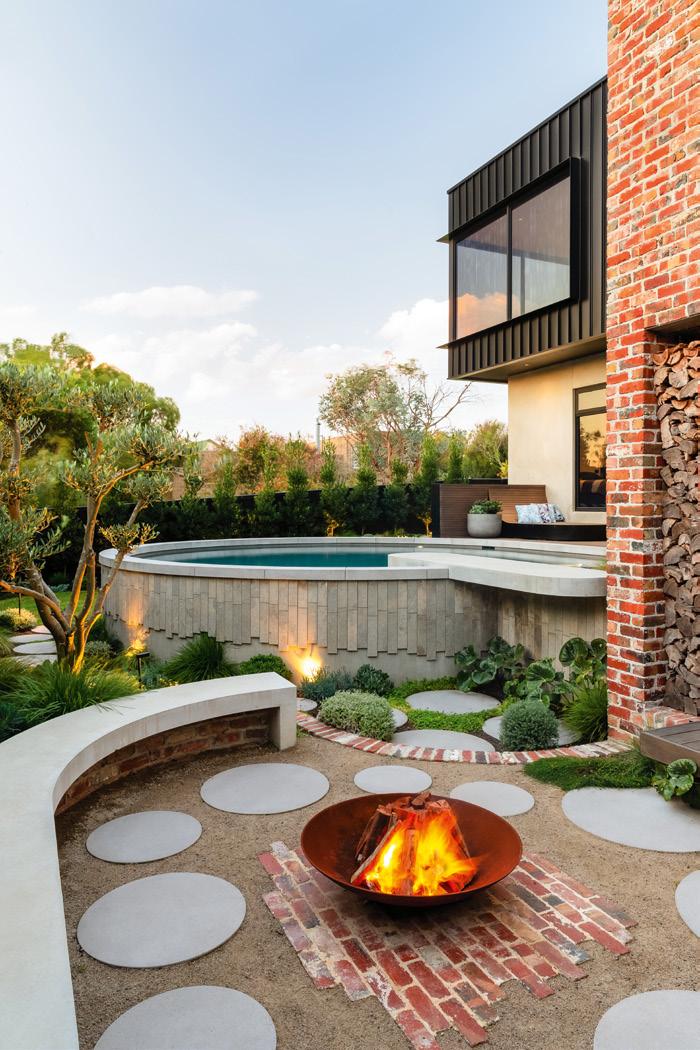
Taylor says that one of the biggest challenges for COS Designs is trying to make the practice less reliant on him, so he can better manage the business as opposed to working in the business.
“I need to break that down and have the business be a little less reliant on myself. I’ve spoken about this for many years, but I’ve not properly actioned it, partly because I’ve been too busy – and therein lies the vicious circle.”
Many designers are in the same boat, but he was probably a little bit behind the eight ball compared to some of his peers.
“I’ve got a plan, and we’re setting up internal systems for managing projects, and continuing to train and teach my own staff and empower them a lot more with their projects. Also, we are probably due for one more experienced person to come on board to create some projects and move things forward.
“The business’s second challenge is maintaining our market share, with so many good designers out there doing incredible work. To face that challenge we need to be a little more focused on marketing. You know, getting professional photos of projects, and really continuing to push our brand and manage relationships with all the people who have supported us over the years.”
Another very large challenge is the everincreasing amount of red tape.
“Every single project of ours is becoming harder to get off the ground,” Taylor says.
“The rise of red tape is making profitability in business very difficult because you spend so much time not actually producing work, but managing bureaucracy and regulations, which is very hard to estimate, and therefore budget for as the timeline for each project is a bit of a lottery.
“Red tape is our biggest challenge because it is hurting our bottom line, and it’s all-consuming in terms of trying to quite simply just get a swimming pool to the point where we can dig a hole.”
COS designed this outstanding garden and pool built by Laguna Pools. Photography by Urban Angles Feeling very much at home. Photography by Tim Turner A tight space with limited scope for planting can still be made to work, drawing home and pool into a tight bond. Photography by Patrick Redmond Replicating the shape of the pool with circles and curves in the hard landscaping. Photography by Urban AnglesThis is related to the other challenge he mentioned, of making the practice less reliant on him, as red tape eats up so much of his time.
“My job used to be 70 per cent creative and 30 per cent admin, and it’s now 30 per cent creative and 70 per cent admin – mainly because of administration of red tape, rules and regulations.”
He says the planning process is becoming overcomplicated, with every single council having their own rules and regulations implemented on top of ministerial guidelines.
“I often now speak of being creatively compliant, which has taken away some of the shine with what we do.
“The pressure on building surveyors adds to the red tape as well. Unfortunately there have been a few dodgy practitioners in our industry who’ve done the wrong thing. So now – and rightly so – every t has to be crossed and every i has to be dotted. And although sometimes frustrating, we completely understand the tightening of the building code and regulations.
“Planning the building permits for a pool and garden can be 18 months of work before you can actually start digging a hole. It’s a necessary evil, but that doesn’t make it any less frustrating or costly for us and the clients.”
Despite the challenges on the radar for 2024, Taylor is excited about the opportunity to be continually involved in groundbreaking projects that try to set a new standard or a new trend.
“Some of Melbourne and Australia’s architects are designing homes that are absolutely world class,” he says.
“And when you get given a set of plans for a home that makes your head explode, that is an incredibly exciting opportunity for us to then try to complement the architects’ vision for the outdoor space.
“I get excited when we have an incredible home, an incredible environment, and we are empowered to really do something amazing in terms of landscape and pool design.”
Winning the Professional of the Year Award has given clients a sense of confidence, and given the business validation for what they are trying to deliver each day.
“We’ve been approached by a number of new pool builders in Victoria and interstate who want to collaborate with us, and I think a large part of that was due to winning Professional of the Year and Designer of the Year awards.
“It was a really big honour for me, but I would like to acknowledge my team too. Our office can be pretty chaotic sometimes, in terms of trying to manage the projects and work in and around council requirements and changes from architects.
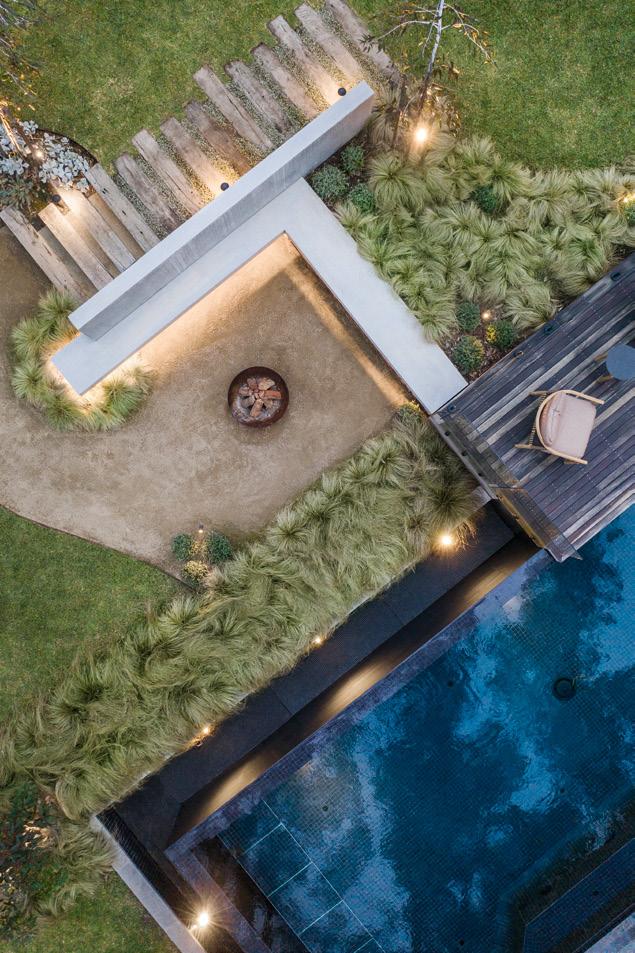

Steve Taylor has dedicated his time to many industry bodies and committees over the years. One of the most intense industry efforts he has undertaken recently is being involved in writing a higher level of education for landscape designers and landscape architects to present to the VBA, so those professions can be registered as drafting practitioners for landscape elements.
In Victoria, landscape designers and landscape architects – even those who are registered with ALIA – are not allowed to present plans for obtaining building permits. “Landscape designer’s and landscape architect’s plans are not valid when it comes to presenting them to a building surveyor,” Taylor says.
“We have to use registered drafting practitioners or registered architects. That’s a big shortfall in terms of our accreditation and how we’re seen by the VBA.
“So we’re having to go into high level documentation in terms of what’s required for the building permit – in terms of planning and building guidelines, detailed drafting requirements, engaging the correct external consultants such as engineers, and how to present plans correctly to obtain building permits.”
They are currently one third of the way through writing that program: having completed stage one of three stages. The third stage will include swimming pools.
“It’s a mammoth task,” Taylor says.
“Stage one was probably 18 months to two years. Landscaping Victoria obtained a government grant to have professional course writers come in, plus we had plenty of people from our industry to help as subject matter experts.
“We went through and created the format of the course, then the contents. Stage one is decks, retaining walls and paving. Stage two is going to be water features, pergolas, and screens and fences. And the final one is alfresco structures, swimming pools and more advanced things.
“I’ve always had really good people and I’d like to acknowledge them, both the staff we have now, and also the ones in the past who have really given me a lot of support and worked so hard.”
COS Designs design residential projects in Melbourne and across the whole of Victoria, as well as having done multiple projects in Sydney, Adelaide and Queensland. Their projects have won state and national awards more than 140 times. n
Contact: www.cosdesign.com.au
LEFT: A delightful combination of deep blue water, lush vegetation and space to relax. Mitchell Lyons Photography RIGHT: The pool wall as a strong design element. Photography by Urban Angles

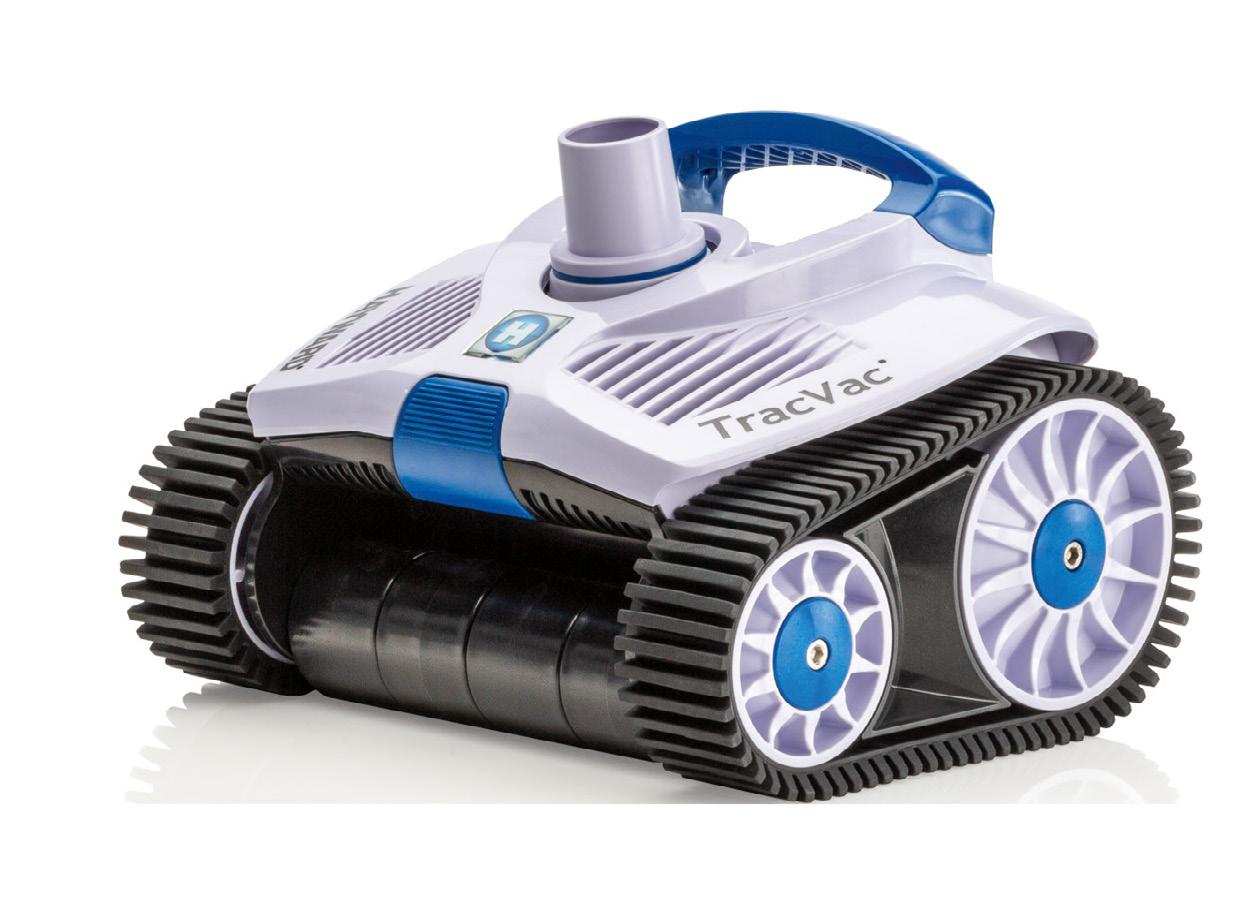
» Rugged Tracks – Unstoppable coverage from floor to wall.
» Superior Mobility - Maneuvers over drains and attacks hard to reach spaces.
» Powerful Performance - Eliminates debris and fine particles in less time.
» Tough, Yet Reliable - Long-lasting drive-train allows for limited service.

Asbestos is an old, dangerous product that has been banned, because inhaling its fibres can cause asbestosis and mesothelioma in a person’s lungs, leading to prolonged debilitating illness and death. It was used widely in home building, specifically for house cladding and roofing, among other uses such as brake pad linings for automobiles.
What some people are unaware of, however, is it was also used in swimming pool construction in the 1970s and 1980s, specifically as part of the Marblesheen pool surfacing render.
Marblesheen, also known as Marblelite, was a decorative coating applied to the surface of concrete pool shells with average thicknesses between 5mm and 25 mm. It is primarily composed of white cement and white marble chips between 1mm and 2mm in diameter. If the Marblesheen coating was applied prior to 1990, it may include asbestos.
SPLASH! spoke with Daniel Gibbs, director at Jagun Pools + Landscapes in Queensland, to learn about his experiences remediating and renovating old Marblesheen pools.
Gibbs started doing pool renovations in 1998, and back in those days pool renovators thought there may be asbestos in Marblesheen, but it hadn’t been confirmed. It was not widely considered a major issue.
Fast forward to 2016, by which time Gibbs had been running his own business for several years. He was approached by a prospective client, a schoolteacher who had tested the Marblesheen in his pool and found it had asbestos in it.
Gibbs was determined that whatever approach he took, it would not involve breathing in dangerous asbestos fibres and would comply with the relevant safety codes.
“Also, as I was running a business, the implications for me legally were pretty serious if we didn’t do it properly,” he says.
Working with asbestos is difficult and complex at the best of times, but it is even more difficult with Marblesheen because the asbestos is a constituent of a hard render that is firmly adhered to the pool surface.
In February, a child brought home something unusual from garden bed mulch in Sydney’s newest park, built as part of the Spaghetti Junction interchange in inner west Rozelle. His father thought it looked like asbestos and had it tested. It came back positive and the repercussions saw 78 parks, children’s playgrounds and schools shut down while asbestos-contaminated areas were rehabilitated. Some of the asbestos was bonded (as in a piece of sheeting) which was less dangerous unless disturbed, but some sites included the much more worrying friable asbestos.
The NSW Government and local councils are continuing to clean up the contamination. The government has given stronger powers to the Environmental Protection Agency, has doubled the fines for asbestos related offences to $4 million, and has commenced a criminal investigation – with the expectation there will be prosecutions.
“It’s plastered on like pool pebble. It’s not like you can just carefully pull it off with a crowbar like you can with sheeting. You need grinders and jackhammers – and that makes dust,” says Gibbs.
“Whenever you make a concrete product, you have your cement, and then you have your aggregate or filler. So that was the marble dust or chips. We never installed the product for me to understand its components properly – but we’ve ripped off a lot of it. So I know what it feels like up close.”
He talked to a number of applicators and builders who had used the product, and learned they added asbestos to the mix by the handful.
“In the 70s and 80s they didn’t have the pebble trucks we have now. They’d mix everything with a big mixer on the side of the pool, and then pour the mix into the pool,” he says.
“The mix would include bags of white cement and Marblesheen powder. And they’d have a big sack of asbestos powder, and they’d just add a few handfuls, like one scoop to a mix.”
He doubts those old timers wore dust masks.
There was a white asbestos powder (chrysotile) and a blue colour additive that included chrysotile in the product. Marblesheen pools came in white, blue, green and black.
Removal of asbestos must be carried out to code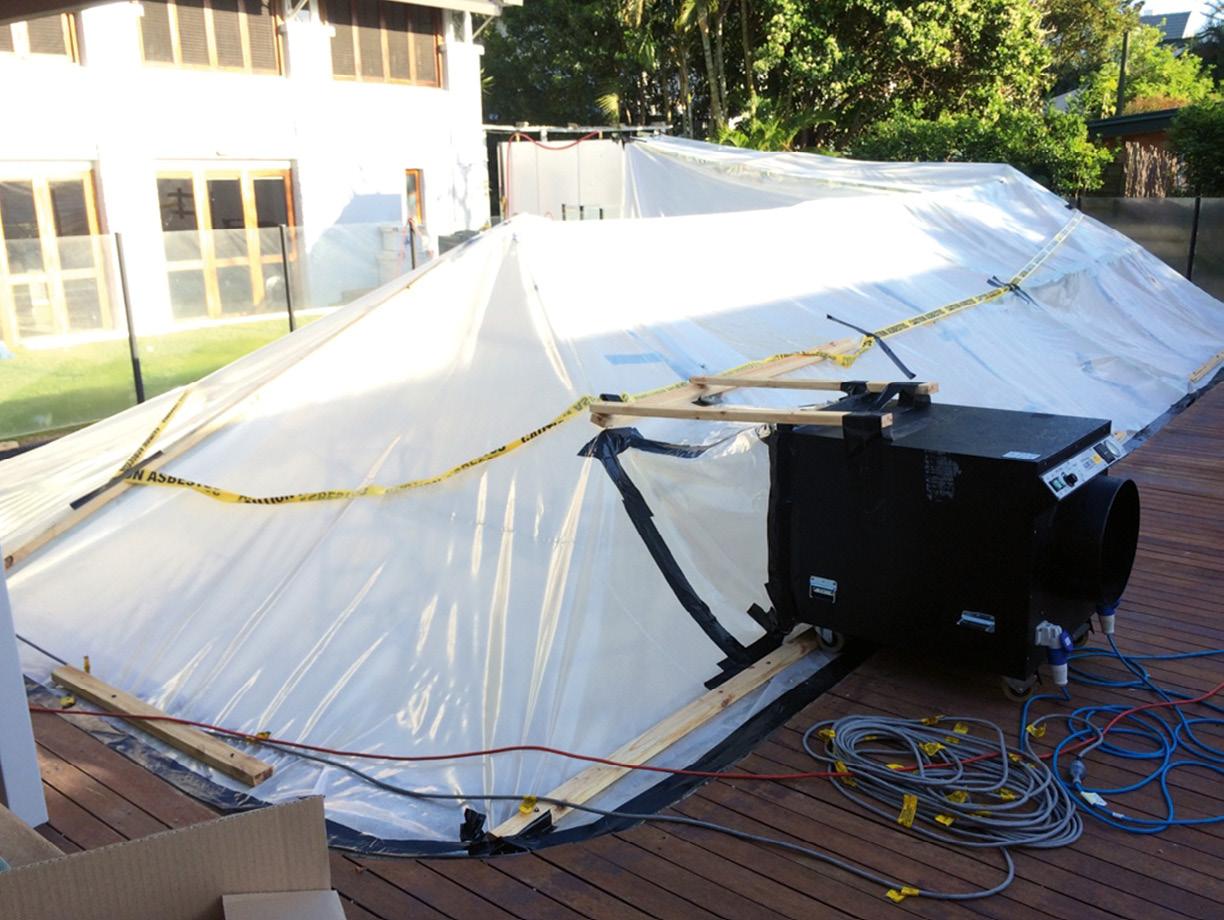
In his experience testing Marblesheen surfaces he found very few green and black pools tested positive, but many white and blue ones did.
“About a quarter of the Marblesheen pools that I tested from that era were positive, but heaps of blue ones tested positive because the asbestos was actually in the colouring.”
Gibbs uses Cohlabs in Stones Corner to do his testing. He hasn’t had a Marblesheen pool test positive that was built after 1986, but the Queensland Government advice is to assume any pool built before 1990 has asbestos in it, until it has tested negative.
Gibbs says resurfacing the pools with a similar masonry render, like pebble, seems like a remedy, but the surface needs to be prepared first, and that involves activity that would create dust and spread the fibres into the air.
“If you follow the asbestos code right to the letter, you’re not even allowed to sweep an asbestos product with a broom,” he says. “You’re definitely not allowed to hit it with a gurney. And that makes it hard to apply another coating over it, because Marblesheen is a smooth surface, so you’ve got to do some work to get the new surface to stick.
“It’s a really common failure in renders and pool surfaces. If, for whatever reason, that surface hasn’t stuck really well to the pool shell, you’ve got to take bits out. It’s like bubbles and flakes in paint – to repaint, you must get rid of the loose imperfections.
“As far as the asbestos code is concerned, if you use all the safety gear, you can remove small amounts of asbestos with hand tools – definitely not power tools. But you have to be fully suited up and follow full asbestos hygiene procedures.
“As soon as you bring in power tools and create dust, you have to be in a negative air environment.”
When Gibbs first started remediating these types of pools, they teamed up with an asbestos removal company and tented the pools up, per the asbestos code.
“This enables you to hit an asbestos product with a grinder or a jackhammer, because it’s a negative air environment. We put a full tent enclosure over the pool, air monitoring systems around it, and had double showers to get out.”
If the Marblesheen coating is in good condition and left undisturbed, it presents a low risk as it is non-friable and the asbestos fibres are bound to the cement.
However the effects of aging can result in deterioration of the surface, which in turn can create leaks. This deterioration may include:
• Damage such as cracks, breaks and chips.
• Delamination of the coating from the concrete shell (creating drummy areas).
ABOVE: A tented pool with an air filter to create a negative air environment
• Deterioration may not be isolated to one area of the pool and depending on the circumstances, repairs may be extensive and require a complete resurfacing. Complete resurfacing requires, at a minimum, removal of the old surface from around fittings and tiles to enable a flush finish for the new surface.
Complete removal of the Marblesheen is often necessary if the deterioration is extensive, or where any cracks or rust repairs to the pool shell require surface removal to complete the repair.
Source: www.asbestos.qld.gov.au
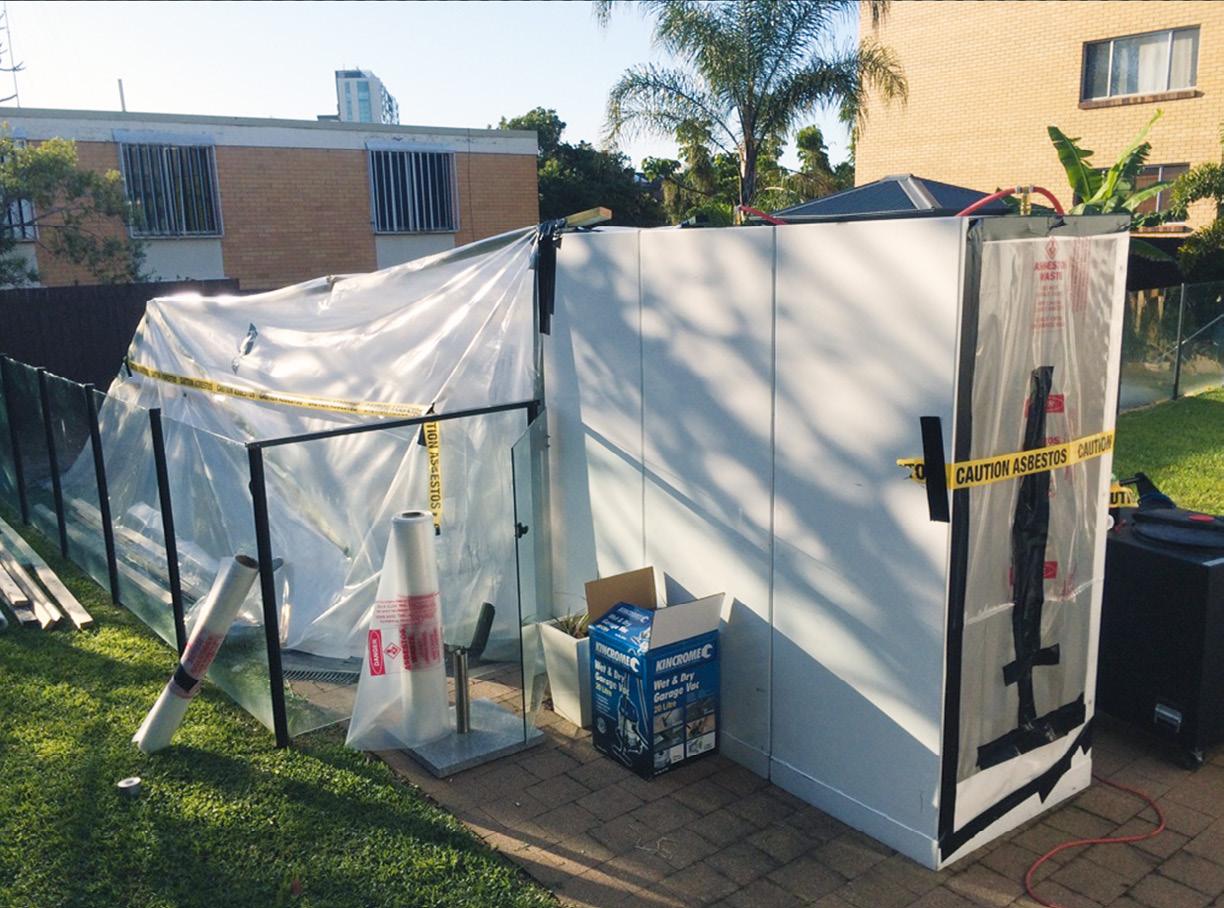
Gibbs says that while the cost for that was initially over $20,000, the price soon went up.
“By the time we’d done half a dozen, the guys really got over it. The safety procedures were tedious and it's bloody hard work to do inside a bubble. There were a few vomits, because it was just too hot. So, the prices went to 40 grand to remove the asbestos.”
It became too hard and too expensive to continue along that path for them. Meanwhile, he suggests some other contractors may have been less than diligent in handling the asbestos-laden product.
“Some people don’t believe the science, or think there’s only a small bit of asbestos in there so it doesn’t matter, or some old guys think they’ll be dead soon anyway. But regardless of whether you believe the science or not, the legal side is pretty intense. If these guys get caught doing that, they’re in a lot of trouble.”
ABOVE: De-contamination showers
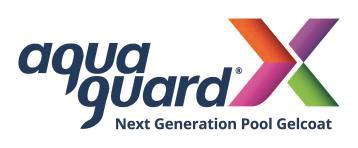
an exciting new range of Australian manufactured pool gelcoats
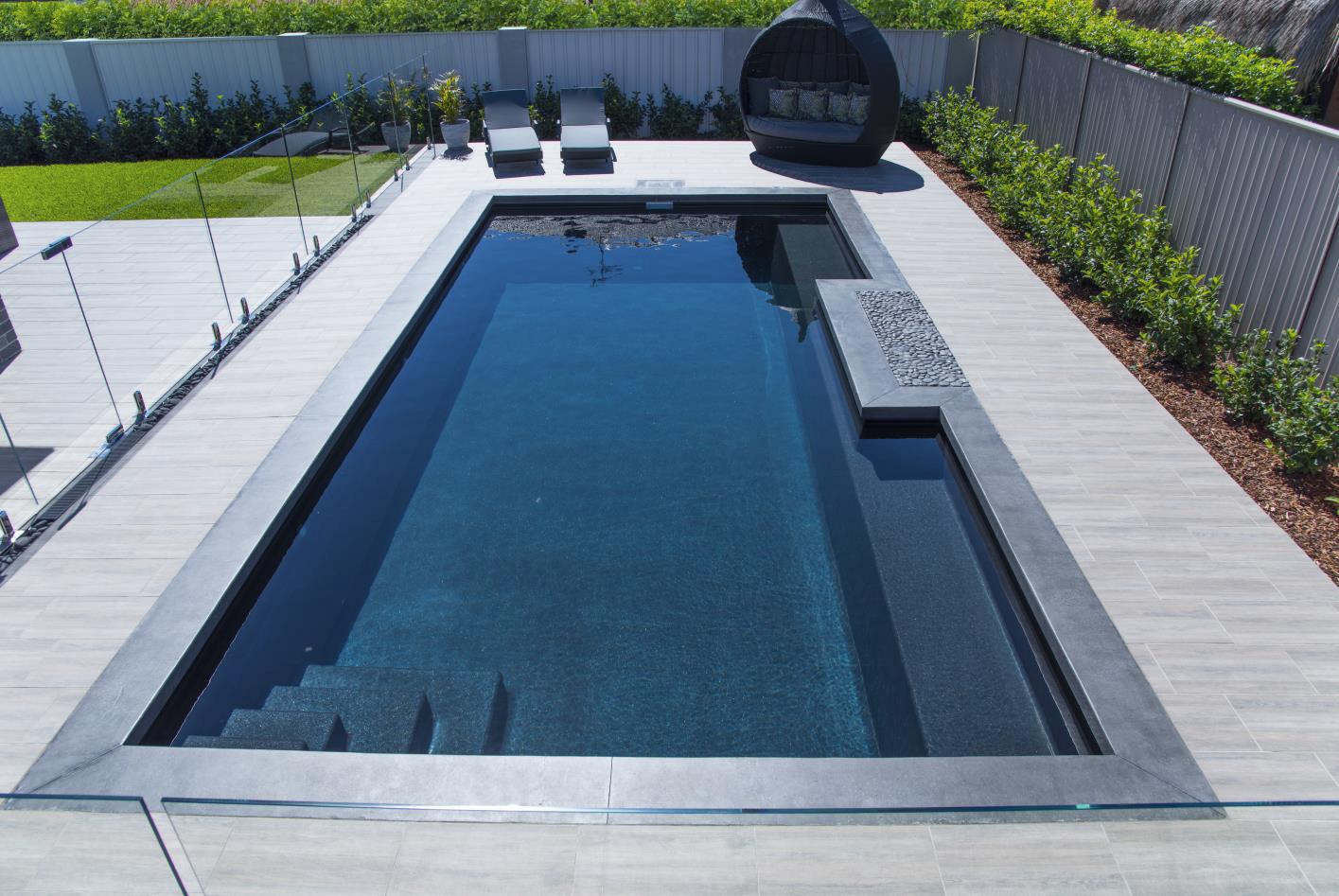

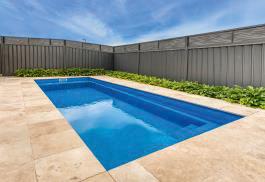
AQUAGUARD X® GELCOATS are high performance finishes for the manufacture of composite swimming pools that have been designed to withstand harsh outdoor conditions. These gelcoats have long been the flagship product of our offering to the local and global composite pool markets with over 20 years of proven field history.
Product Features Benefits
High Performance Surface Coating
High Quality Gelcoat Pigments
A striking and visually appealing cosmetic finish with exceptional durability
The Aquaguard® X technology protects the decorative finishes from harsh effects of the sun
Excellent Chemical Resistance Products are tested extensively for chemical fade resistance to ensure a longer lifespan for the cosmetic finish
Aquaguard® X gelcoats are available in a range of contemporary colours and striking finishes
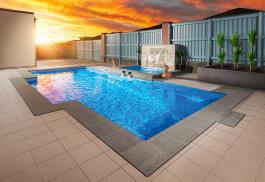
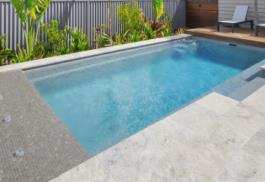
Performance Advantages:
• Improved chemical (chlorine) & water resistance
• Improved UV resistance, protecting the finish of your pool for many years
• Increased colour retention during outdoor exposure
• Superior aesthetics of laminate during service life which maintains the original cosmetic ap pearance for a longer period
For further information scan the QR code below , contact allnex on 1800 789 607 or visit www allnex com :

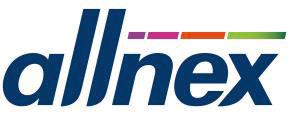
The only way to confirm if a Marblesheen coating contains asbestos is to have a sample analysed by a National Association of Testing Authorities (NATA) accredited laboratory. Prior to any maintenance, repair or renovation work occurring testing should be undertaken for: Marblesheen coated pools built before 1990 (all Marblesheen pools in this category should be assumed to contain asbestos).
Pools built before 1990 which have may been resurfaced (leaving the original Marblesheen coating in place underneath).
If testing has not occurred to pools built before 1990, it must be assumed they contain asbestos until they are tested.
If you are uncertain about what year the Marblesheen was installed, it is advisable to undertake testing prior to renovating or resurfacing.
Source: www.asbestos.qld.gov.au
Gibbs no longer works with pools that contain asbestos and says that by the time they’ve gone through all the options, the easiest and best option is for the consumer to apply chlorinated rubber pool paint.
“There are two types of pool paint: epoxy pool paint and chlorinated rubber. Chlorinated rubber is designed as a home handyman solution for pool resurfacing, because it’s super easy to apply.
“The other paint option is epoxy paint. But when you come to recoat it you’ve got to run the grinder over and that brings dust again. So that’s the downfall with epoxy.
“With chlorinated rubber, you need to repaint every three to five years. Empty the pool, put another layer of paint on it. Council pools have been doing that forever; they’re covered in layers of paint. The reason chlorinated rubber is such a good solution is because when it comes time to reapply the product, the new paint emulsifies the layer beneath it. It has a lot of thinners in it, it’s solvent-based. So you don’t need to keep prepping your surface.”
Gibbs says it’s the cheapest solution in the industry. All you need do is ensure you’ve kept the water clean, then when the pool starts to look a bit ugly, empty it, make sure it’s bone dry, and paint it.
By his estimations, if you repainted the pool five times over 20 years, not only would it be cheaper than re-rendering with pebble, you’d have a new pool surface every four years. And the painting is easy –you don’t have a lot of cutting in, only to the tile band. Mostly it rolls on with a 100mm roller.
However, the fact the pool surface must be bone dry before you can apply the paint does create problems.
“The only hassle is, the surface has to be bone dry, and then you put on the chlorinated rubber. Chlorinated rubber hasn’t got a great reputation in the industry, because people don’t follow the instructions. They don’t appreciate what its limits are.
“The only reason we stopped painting the Marblesheen pools was because of having to go back to site every time a little shower came through, and
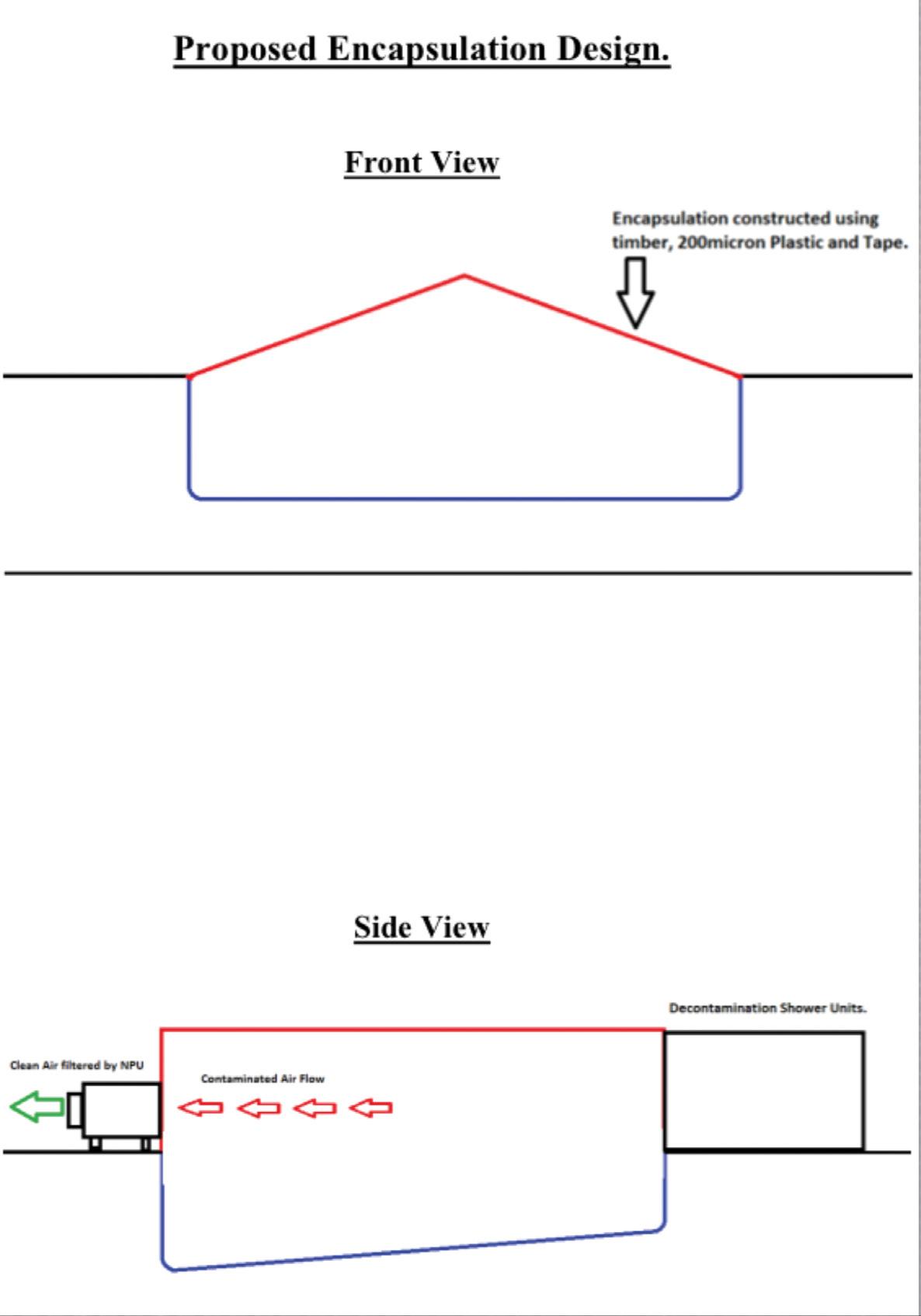
Front View
dry off the bottom of the pool. It just ruined our margins, because there’s not a lot of margin when it’s such a cheap service and product.
“If it rains once a week for a month, that job’s a month behind and we’ve lost three hours every time to just travel over there and sponge this thing out. It takes it couple of days to dry out really good. We’re in Brisbane – sometimes you don’t get a couple of days. It just takes one little shower, and there’s a puddle in the bottom.
“You see paint jobs that have failed and it’s just this ring around the main drain that goes out a metre because someone didn’t let the bottom dry up properly before they painted it.”

They were getting the paint from Everglaze in Logan, but there are a number of suppliers.
He says the other problem with the chlorinated rubber paint is that you have to have your water chemistry spot on.
“If you over-chlorinate your pool, the paint melts. Then you go for a swim, it all rubs off on you.”
Even if you are going to repaint it with chlorinated rubber paint, some treatment may be necessary to fix drummy parts where the original surface has delaminated.
Painting is really only possible if the original Marblesheen layer is exposed and hasn’t been resurfaced with another masonry based render. Gibbs describes one job where painting the pool was impossible.
“We checked the pool of this lovely lady on the south side. Someone renovated the pool 10 years or so earlier and resurfaced over the top of the original Marblesheen. And this new surface was failing massively, because it hadn’t been properly prepped. We tested the Marblesheen under that pebble layer, and it came back positive.
“But she can’t paint it because that top layer is already so compromised. Removing the top layer of pebble would significantly disturb the bottom Marblesheen. And if you could get that top layer off, the Marblesheen underneath is going to be all pitted
ABOVE: Encapsulation design to tent a swimming pool and create a negative air environment
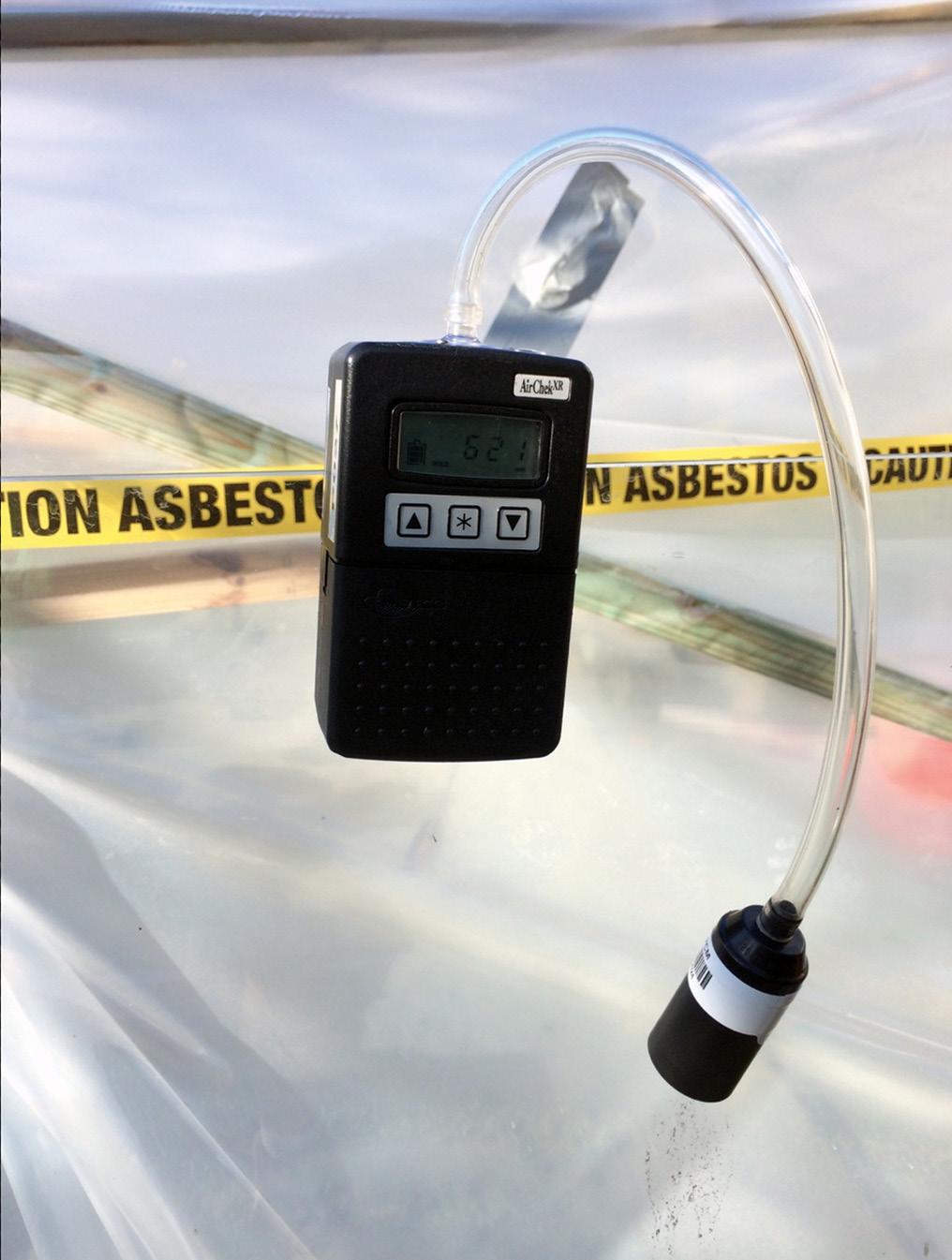
with it,” he says.
“You might be able to render it again and then paint it. I don’t know. The best solution is, if it hasn’t been resurfaced and it’s the original surface sitting there – just paint it. You don’t have to deal with removing anything.”
Another option is to cover the Marblesheen pool with a vinyl liner. But that is not as easy to do as it initially appears.
“At one stage we were giving the leads to vinyl installers to put a vinyl liner over the whole thing,” says Gibbs.
“But they still have to prepare the surface, so they’ve got to cut little air lines and a few other things that they have to do. It is hard to do to code, so we stopped that approach.”
If all else fails, there is demolition, but that is not something Gibbs has attempted.
“They’d need to talk to a demolition crew about that. Because basically, you’d have tons of asbestos contaminated concrete. If you really had to and it was permitted by the local authorities, just bury it. Or build a new pool on top of it.
“Or, as you’ve already got a hole, you could seal the Marblesheen and build a new pool against it.
“It comes down to a new pool builder. If you don’t want a pool you just bury it right then and there. Fold it in on itself. Put a ton of dirt over the top. You’d probably have to declare it but at least it’s safe, then.”
Gibbs developed some presentations from his experiences and handed the information onto SPASA and the QBBC, and some of the information was added to guidelines and the asbestos code.
For direct links to codes of practice and other information related to the removal of asbestos in swimming pools and in general, go to www.splash.online/articles/links153. n
Coh Labs: www.cohlabs.com.au
Everglaze Paints: (07) 3808 6999
Jagun Pools + Landscapes: www.jagun.com.au
QBCC: www.qbcc.qld.gov.au
SPASA: www.spasa.com.au
Daniel Gibbs of Jagun Pools + Landscapes outlines the background, key concerns and approaches for renovating swimming pools containing asbestos. The following is current as per 2015 and there may have been updates to the asbestos code and other contractors may have found better solutions.
• Industry rumours confirmed by tests carried out by the public, a consumer, in late 2014.
• Awareness of potential health risks initiated due procedure for duty of care.
• Further tests found about one in five Marblesheen pools contain asbestos.
• Youngest positive result from pool built in 1986.
• Substance identified - small quantities of chrysotile.
• A “cup or two in a mix” used as possible binding agent and present in blue colouring product.
• Chrysotile, also known as white asbestos, is the most common form of asbestos.
• Often found in clutches and brake pads, it is not the most dangerous form of asbestos, but one microscopic fibre can kill.
• For working with all asbestos follow How to Safely Remove Asbestos - Code of Practice 201, Workplace Health and Safety Queensland, Department of Justice and Attorney General.
• No licence required for less than 10sqm of non-friable asbestos.
• Must be licensed for removal of any friable asbestos.
• Friable asbestos means material that is in a powder form or that can be crumbled, pulverised or reduced to a powder by hand pressure when dry, and contains asbestos.
• Tools and equipment that generate dust must not be used on asbestos. These include: high-speed abrasive power and pneumatic tools, for example angle grinders, sanders, saws and high-speed drills brooms and brushes (unless brushes are used for sealing) high-pressure water spray, jets, power or similar tools and instruments on asbestos in the workplace.
• Use household supply water pressure.
• Filtering of waste water may be necessary.
• Use wet chemicals; detergents, chlorines, acid.
• Don’t remove drummy patches.
• Don’t chisel around retained fittings, plumbing, and tiles.
• Ensuring an asbestos removal supervisor is present on the work site.
• Asbestos removalists are required to have appropriate training in the type of work being conducted.
• Other trades required within the enclosure should have appropriate PPE training/mask fit testing and should be under direct supervision.
• Notification must be sent to the regulatory body five days prior to works commencing (form 65). Other people who may be affected should also be notified such as neighbours, other trades, etc.
• Testing the material or obtaining the sites asbestos register should be undertaken prior to works commencing.
• Preparing a site specific asbestos removal control plan outlining how the works will be done.
• Limiting the access to the site and clearly signing that asbestos removal works are being undertaken.
• Ensuring appropriate decontamination showers and negative pressure units are incorporated into the enclosure.
• Ensuring the enclosure is “leak tested” and air monitoring is in place prior to works commencing.
• Ensuring that appropriate clearance inspections are undertaken prior to the enclosure being removed.
These requirements apply to a number of duty holders including the licensed asbestos removalist, the person who commissioned the asbestos removal work, and the person with management and control of the workplace.

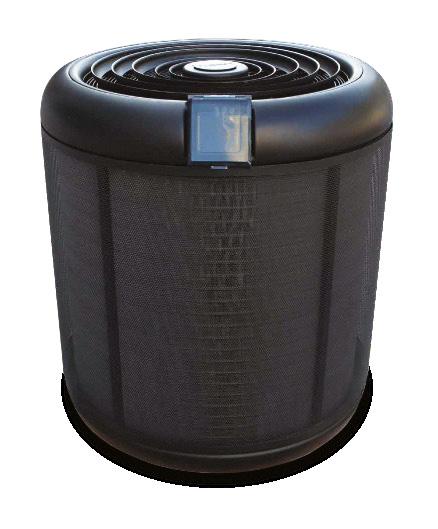


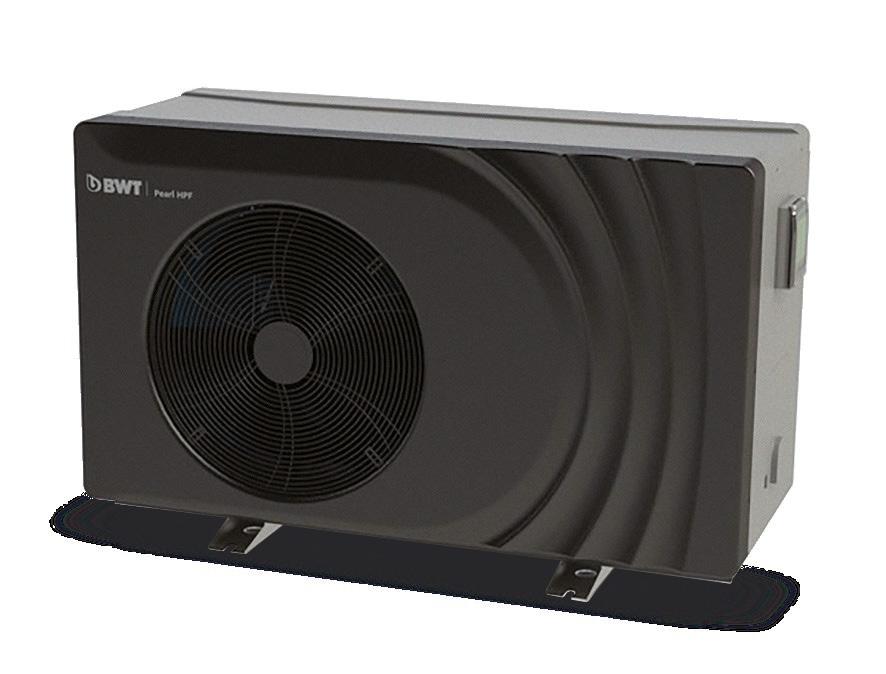
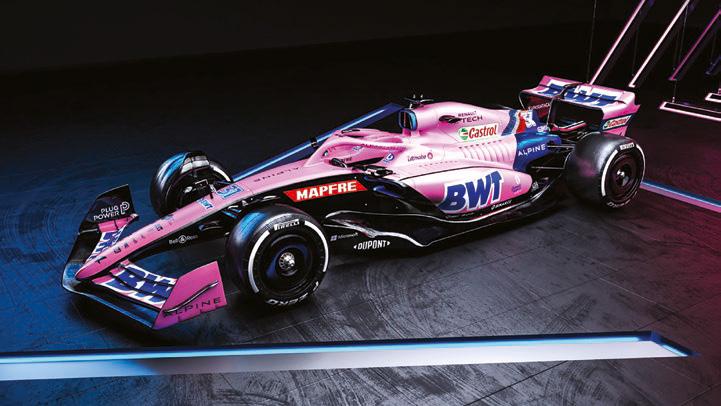
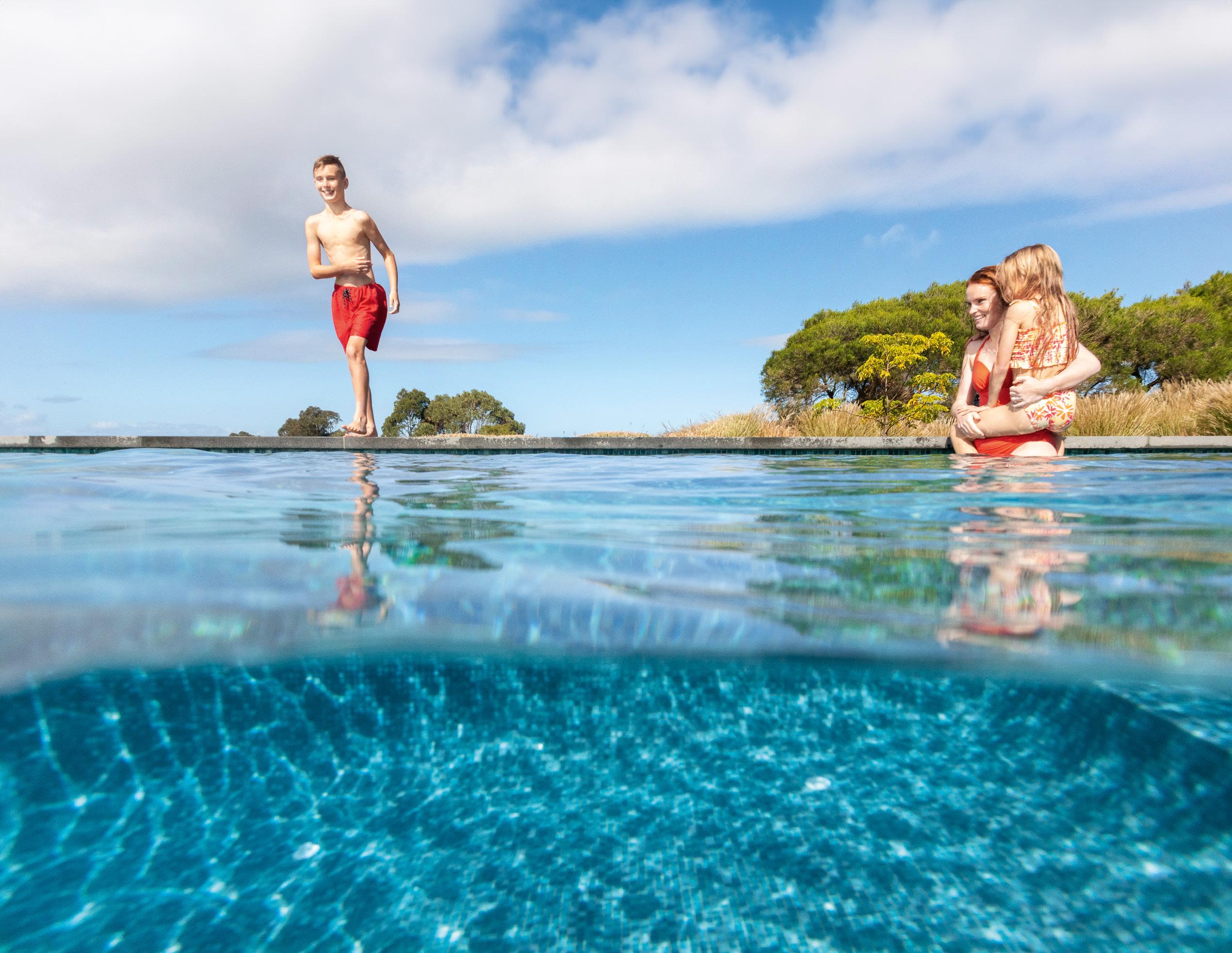
Advances in technology continue to revolutionise the way people maintain and enjoy their pools. Pool dosing systems are just one example where automation significantly reduces the manual labour and time traditionally associated with pool maintenance.
However, technology is moving at such a rapid pace that even the most seasoned industry professionals, let alone homeowners are not fully aware of what pool dosing products are in the marketplace. And while this is not a definitive guide to all the makes and models, it does serve as an explainer as to what systems are available.
Put simply, a pool dosing system is a sophisticated management solution designed to regulate and maintain optimum water balance by automatically administering precise amounts of chlorine, salt and/ or other minerals when required.
Below is an example of how they typically work.
Monitoring: Residential dosing systems continuously monitor key parameters of pool water, such as pH and oxidation reduction potential (ORP), and some can even calculate free chlorine.
Analysis: Based on the data collected from the monitoring process, the dosing system analyses the current state of the pool water and determines the specific chemical adjustments needed to maintain clean, safe and comfortable swimming conditions.
Dosing: Once the adjustments are calculated, the automatic dosing system dispenses the correct amounts of pool chemicals into the water. This dosing process is typically done using peristaltic pumps or similar mechanisms that accurately measure and deliver the required measurements.
Control: The system controls the operation of the dosing pumps, ensuring that the correct amounts of chemicals are added to the pool water at the appropriate times. This control may be based on preprogrammed settings or real-time adjustments made in response to changing water conditions.
Monitoring and feedback: Throughout the dosing process, the system continues to assess the pool water and verify that the chemical adjustments are achieving the desired results. If necessary, it can make additional corrections to ensure that the water remains within the optimal range for safety, comfort and clarity.
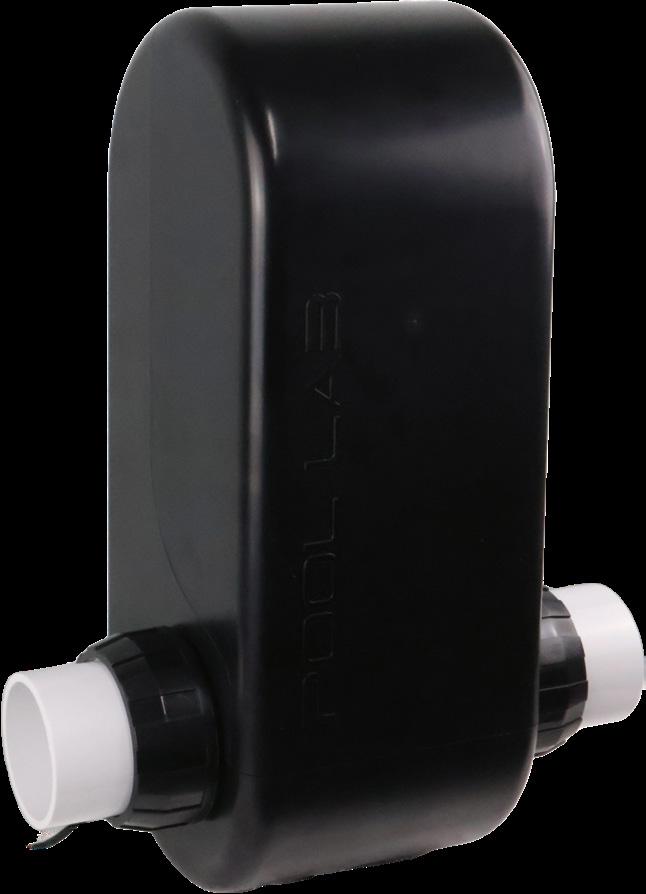
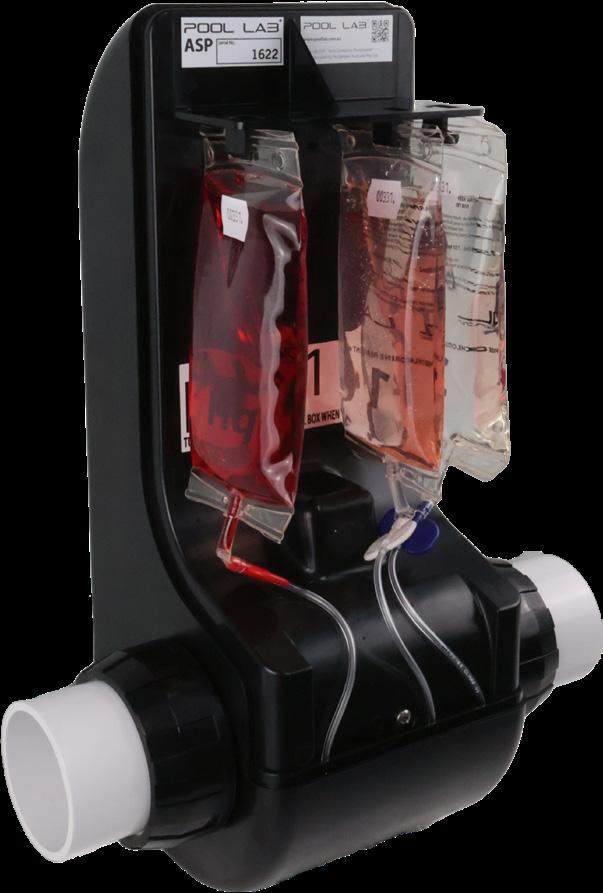 More time to spend enjoying the poolside lifestyle
BELOW LEFT: The Pool Lab comprehensive water management system
More time to spend enjoying the poolside lifestyle
BELOW LEFT: The Pool Lab comprehensive water management system
Remote access: Modern automatic pool dosing systems offer remote access and control features, allowing pool owners to monitor their pool water quality and adjust chemical dosing settings from anywhere using a smartphone app or web-based interface.
Ultimately, choosing the best pool dosing system requires careful consideration. Factors such as the size of the pool, frequency of use, the system’s efficiency, and its compatibility with the pool’s existing infrastructure are paramount.
When Poolpower was founded by Ben Bremauer in 1999, it started manufacturing replacement cells out of its Melbourne workshop before progressing to the development of a complete chlorinator.
After researching the expectations of the pool industry and pool owners, the specialist salt chlorination company developed the Pool Lab comprehensive water management system as a more accurate and reliable alternative to standard chlorinators of the time.
The Pool Lab system caught the attention of Cooke Industries, which became a Pool Lab distribution partner in 2023, because of the success they’d seen the Pool Lab ASP (auto sampling photometer) have in managing consistent water quality in extreme environmental conditions.
“We’d been impressed with the performance of Pool Lab systems and acquired the confidence to recommend it to builders across our network,” says Cooke Industries general manager Justin Nicholas.
“Pool Lab’s unique ASP was developed and patented by Poolpower because commercial pool managers were regularly using manual photometric analysis equipment to calibrate their ORP or amperometric probe systems.”
Poolpower managing director Ben Bremauer explains that each time you translate a value from one system to another, you have inherent error.
“The team at Poolpower set about developing an automatic photometric system that can take samples directly from the pool filtration system,” says Bremauer. “In this way we are utilising the most accurate method to determine the free chlorine level in parts per million (ppm) and the pH.”
Photometrics uses the science of light absorption to determine the concentration of a chemical species. Small volumes of proprietary reagents are automatically mixed in the chamber with a pool water sample. Light of specific wavelengths are passed through the sample and the absorption measured.
“ORP probe systems provide a millivolt output while our system provides a ppm free chlorine output, which is more widely and easily understood,” explains Bremauer.

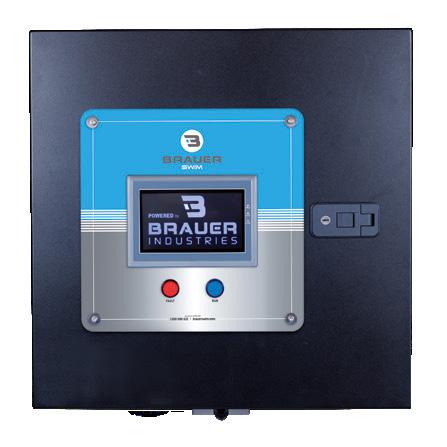

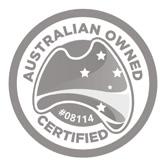
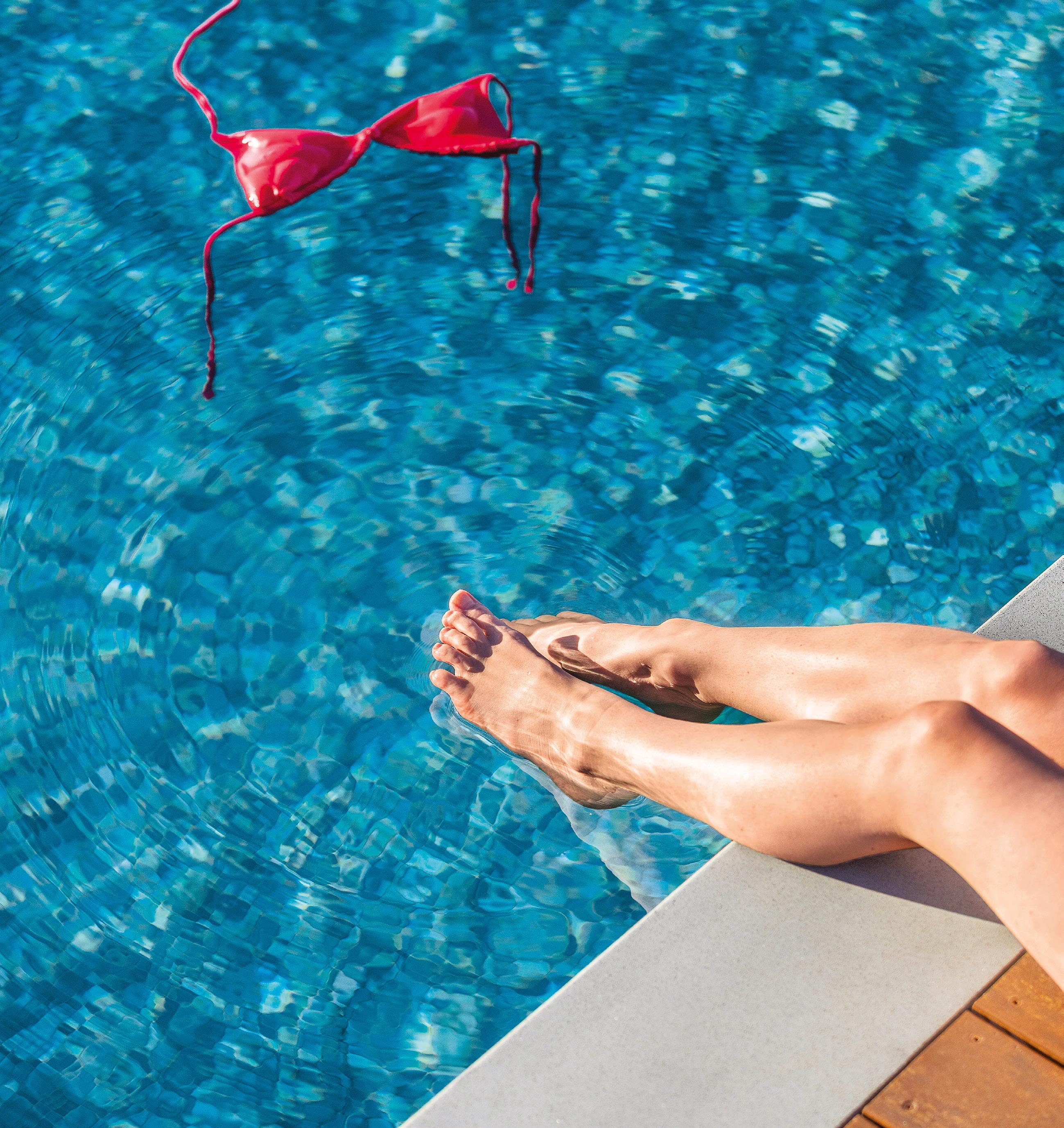
“Photometrics uses the science of light absorption to determine the concentration of a chemical species.”
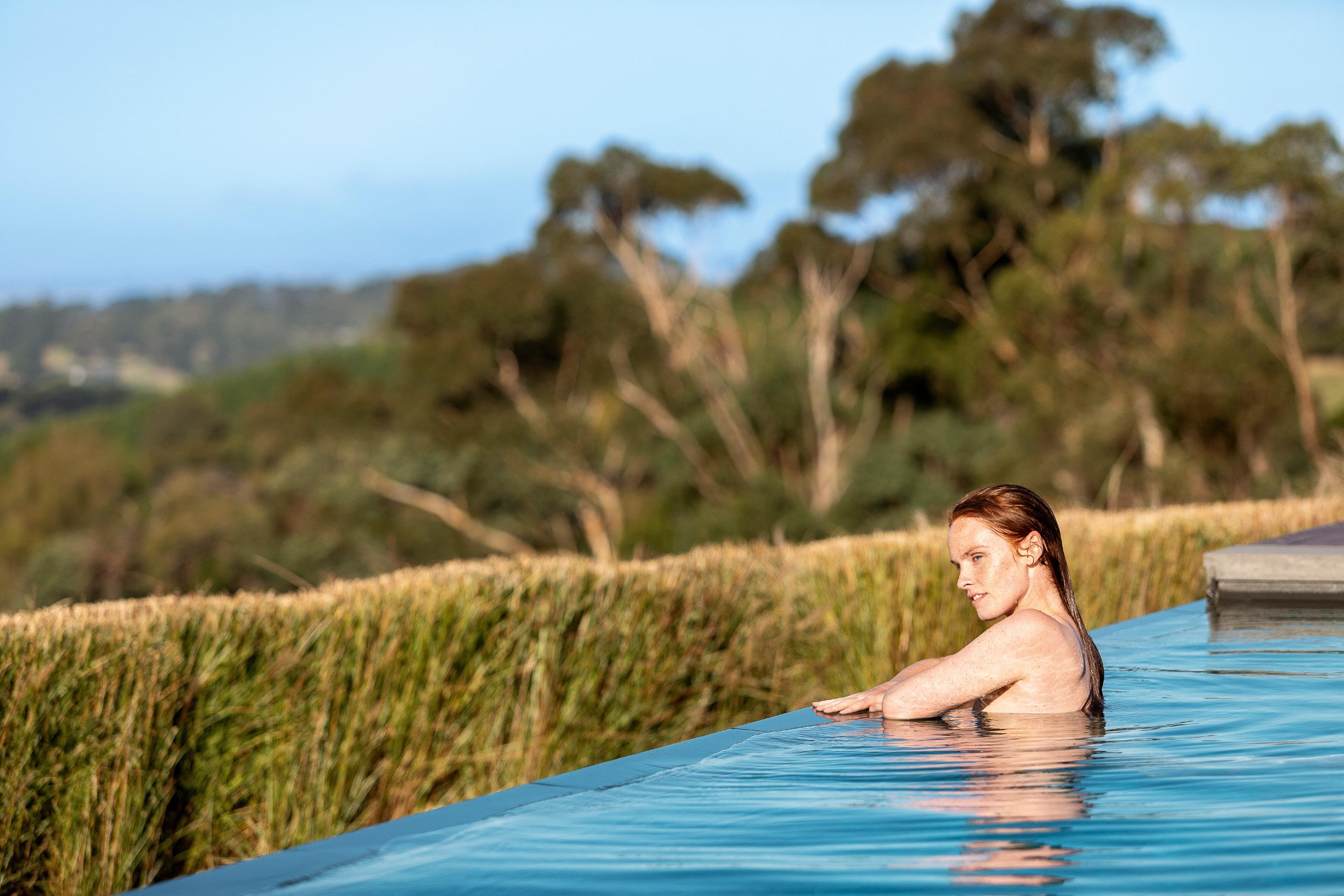
“Another advantage of the Pool Lab ASP is that it self-calibrates and does not require any cleaning, unlike probe-based systems that require regular cleaning and calibration.”
Bremauer says the addition of cyanuric acid or stabiliser to pools with ORP probes is “troublesome” as it essentially hides the free chlorine level.
“Pool Lab ASP free chlorine readings are not affected by stabiliser additions,” he says. “No other system can provide this level of reliability, accuracy and simplicity.”
The Pool Lab ASP takes three samples per day for a typical pool and completes the analysis of free chlorine and pH. Three reagent bags hang inside the ASP enclosure and provide enough reagent for approximately 750 tests or six to eight months of testing.
“With accurate water testing, the dosing of acid and production of chlorine are limited to what is required,” Bremauer explains. “Our builders love this technology because it is accurate, and no additional maintenance is required.”
The algorithms that power Pool Lab ASP use data feedback to determine various parameters such as the size of the pool.
“It recognises when there’s a spike in pH such as when a buffer is added,” he says. “If the pH rise is uncharacteristic, it will suspend acid delivery for 24 hours and re-test to confirm, which prevents overshoot of acid delivery.”
The chlorine demand monitor is considered one of most useful features of Pool Lab ASP. For example, if
the chlorine target has not been hit at the end of the filter’s runtime, the system will continue running until the chlorine target is reached. This achieves highly accurate and consistent pH and chlorine readings.
“In this way, you are guaranteed that the target will always be met,” he says. “Chlorine demand can change by the hour and by the day so the ability for Pool Lab to be given the authority to ensure the target is hit every day is fantastic.”
Chief operating officer Bryan Goh says Waterco has evolved from a pool equipment manufacturer to a leader in pool technology committed to innovation and staying at the forefront of industry trends.
Their portfolio includes several pool dosing products such as the ChemfloPlus water management system and Electrochlor Plus mineral chlorinator for residential applications, as well as the Chemflo PRO commercial chemical controller.
Goh says they are all part of a suite of solutions designed to create a “desirable pool” that offers seamless operation and eco-conscious features.
“Ray Morgan research estimates 2.7 million Australians live in a house with a pool – equivalent to 13 per cent of the population – and our goal is to provide them with products and systems that simplify maintenance while creating a sough-after, sustainable lifestyle,” he says.
ChemfloPlus measures and precisely controls set levels of sanitiser (chlorine) and pH balance (acid)
Clean, clear water without a fuss. Image: Naked Poolsthrough feedback from inline sensors to ensure the safest possible swimming conditions. Costs are reduced by minimising chemical use and preventing excessive addition of chemicals that may damage the pool and its equipment.
“The device automatically maintains a pool’s required chlorine level and eliminates problems associated with periods of very high or low chlorine levels throughout the year,” he says.
“Fewer fluctuations in chlorine levels mean fewer fluctuations in pH levels, producing more stable, balanced water.”
Climate Care Certified Electrochlor Plus, which was launched into the market in 2020, automatically monitors chlorine production by regulating the amount of electrical energy supplied to the electrolytic salt cell.
“Electrochlor makes domestic swimming pools smarter by automatically taking care of sanitisation, filtration and auxiliary equipment while increasing energy efficiency by more than 50 per cent,” says Goh. “Drawing less current translates to high power conversion and less energy wastage, which it does without compromising on chlorine output.”
He says Waterco’s approach to product automation revolves around understanding and addressing the needs and desires of its customers.
“This involves conducting market research,
gathering supplier feedback, and analysing industry trends to identify opportunities for innovation that address specific pain points or challenges faced by pool owners. This ensures our product innovations are not only technologically advanced but also highly relevant and valuable to the end user.
“Ultimately, this strengthens customer satisfaction, loyalty, and trust in the Waterco brand.”
Naked Pools director Darren Milne says the most critical aspect of any pool is to maintain the pH levels within the recommended range.
This ensures the effectiveness of the chosen sanitisation method is being used to keep the water crystal clear while simultaneously protecting the pool’s surface. With a low chemical pool, pH can be even more important.
“By using the NKD-pH controller, the pH of a Naked Pool will be maintained by having diluted acid added to the pool water daily rather than users having to add it manually at least once a week,” he explains.
When the Naked System is installed, it is programmed to the volume of the swimming pool water and uses an algorithm to set the timers for adequate filtration and sanitisation for the swimming pool. When the pH controller is connected to the Naked System they communicate
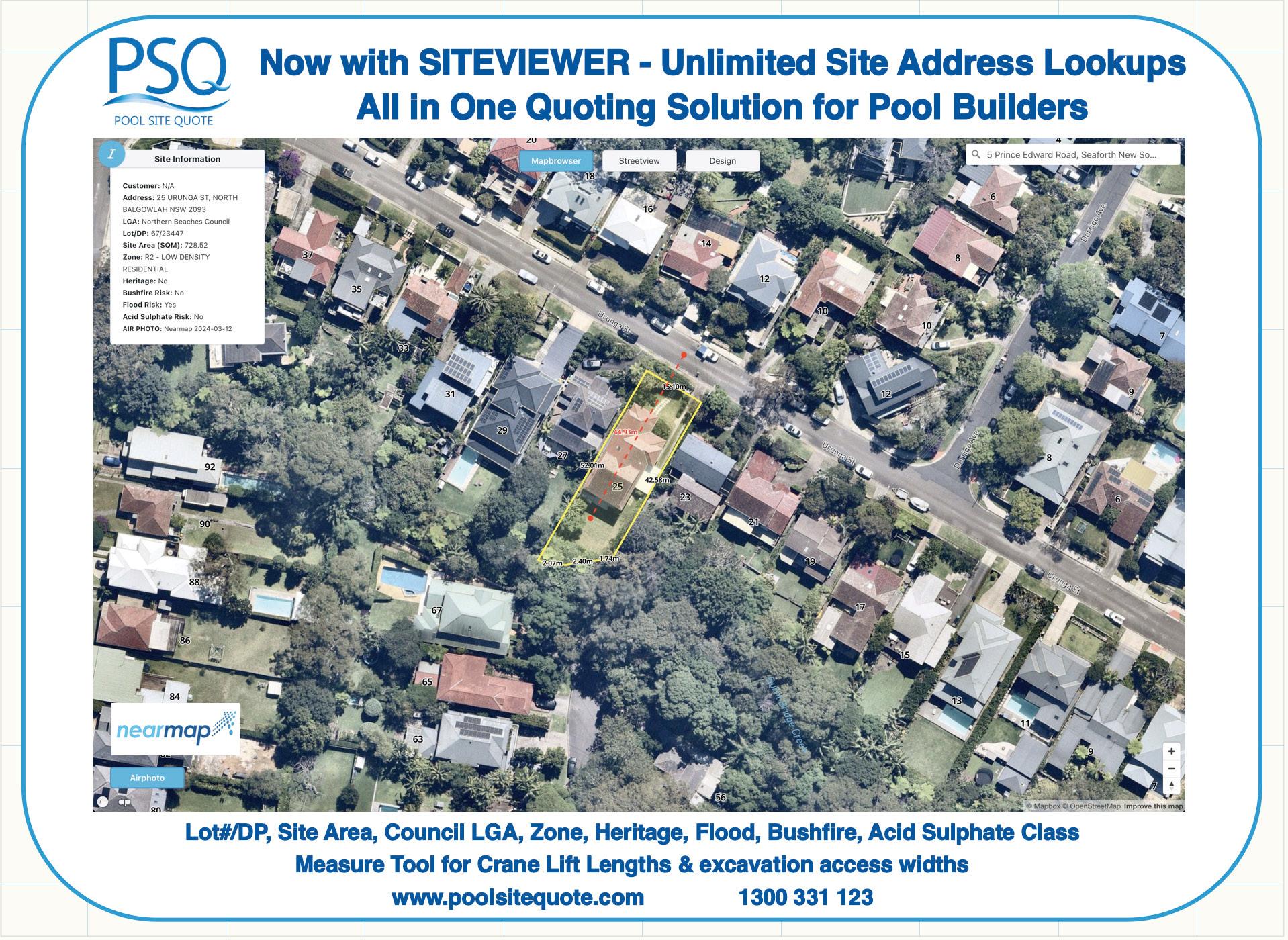
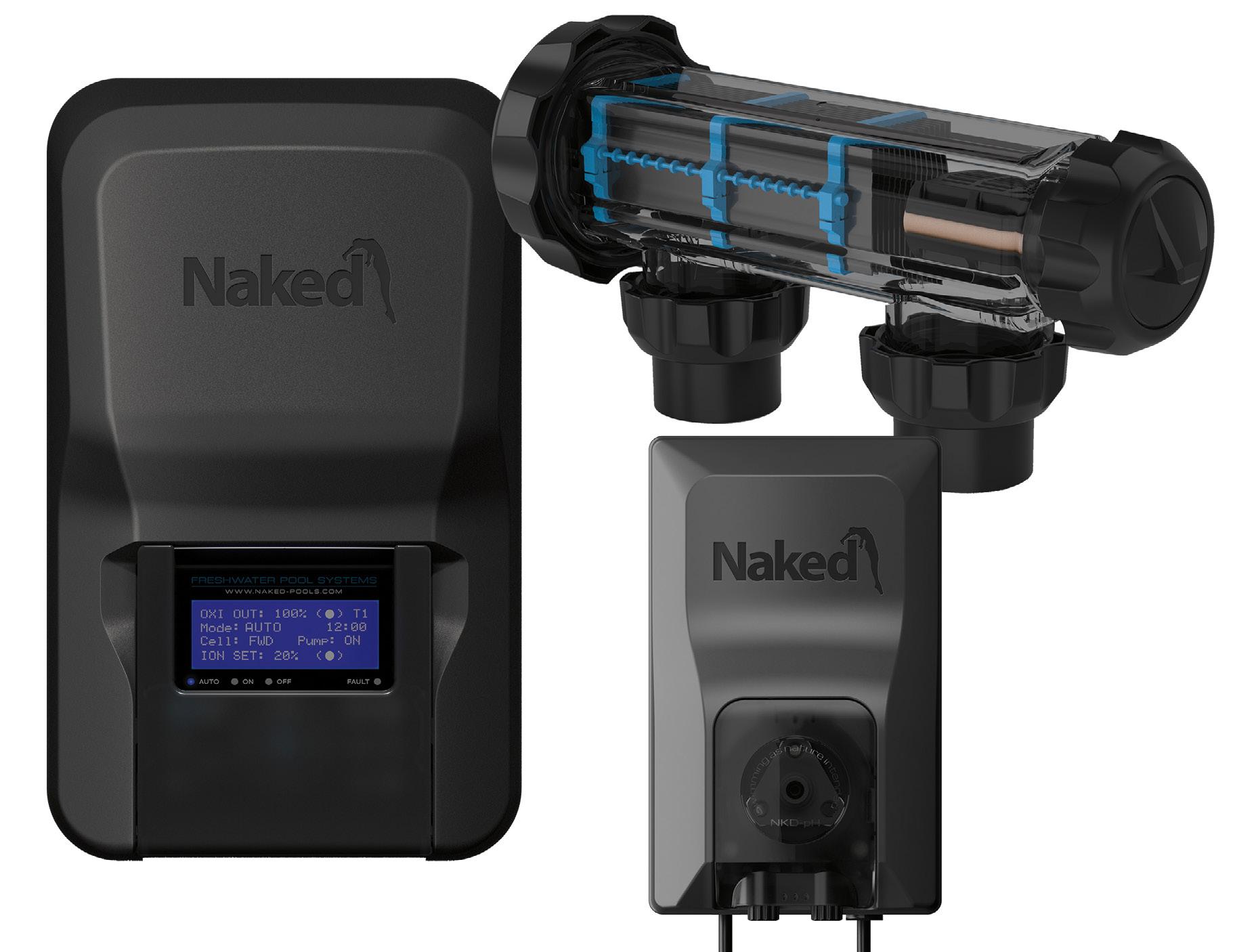
together, and the acid is also dosed into the pool water using the same algorithm. Milne says this helps avoid

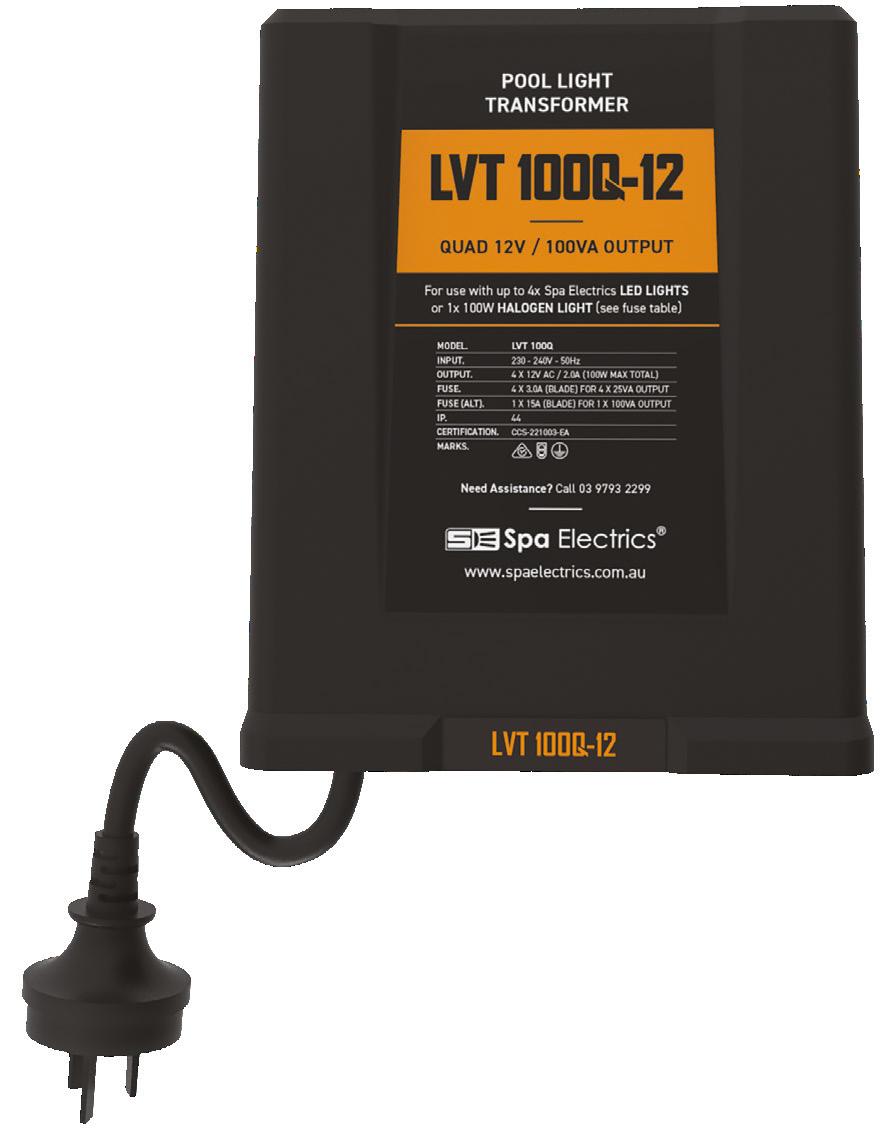
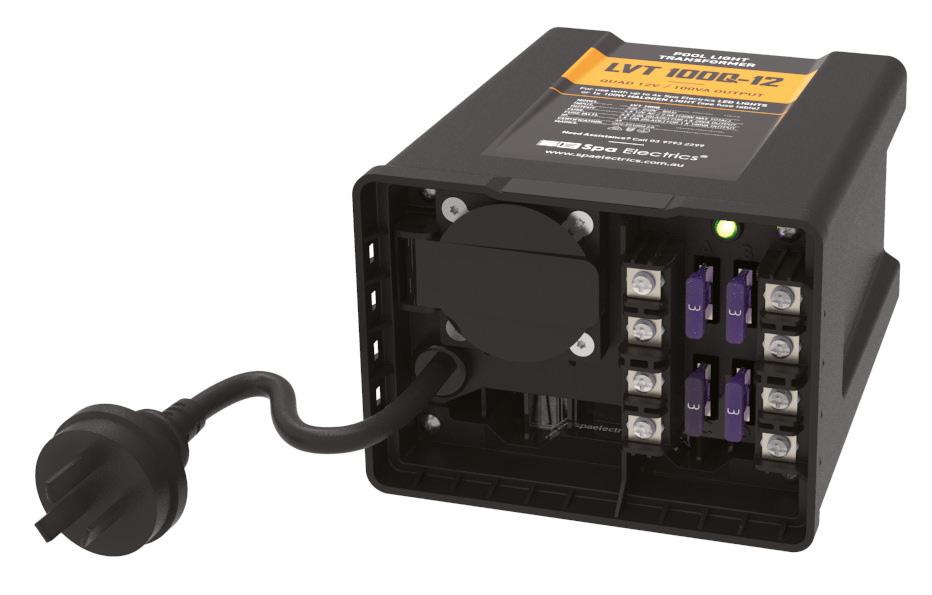
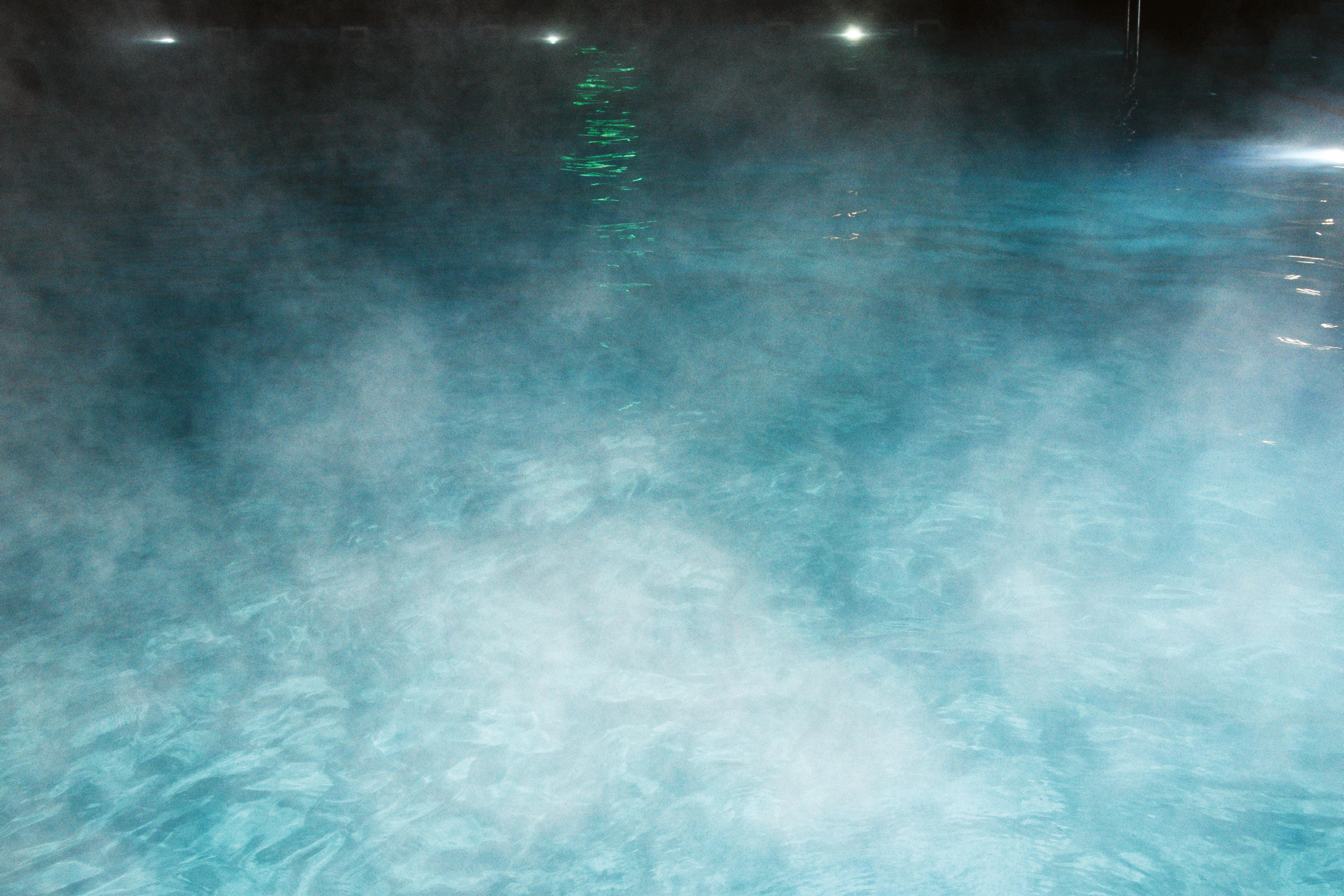
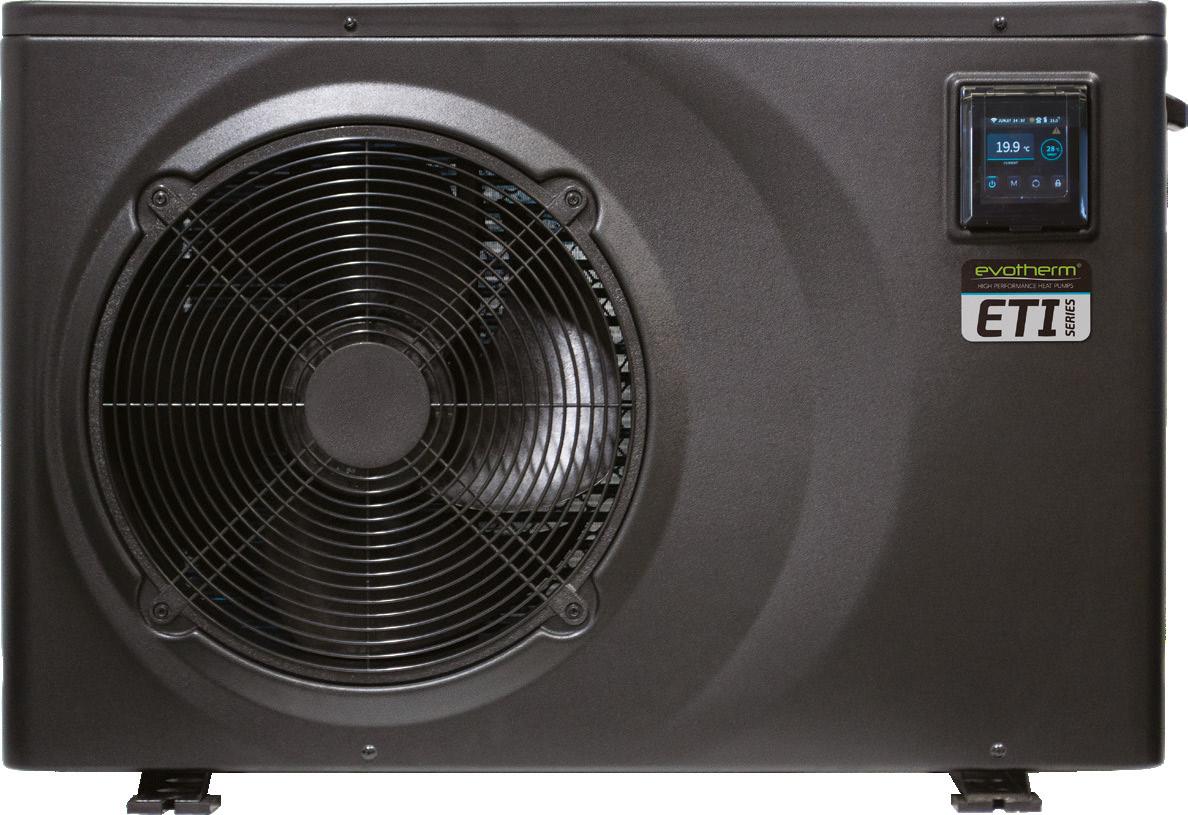



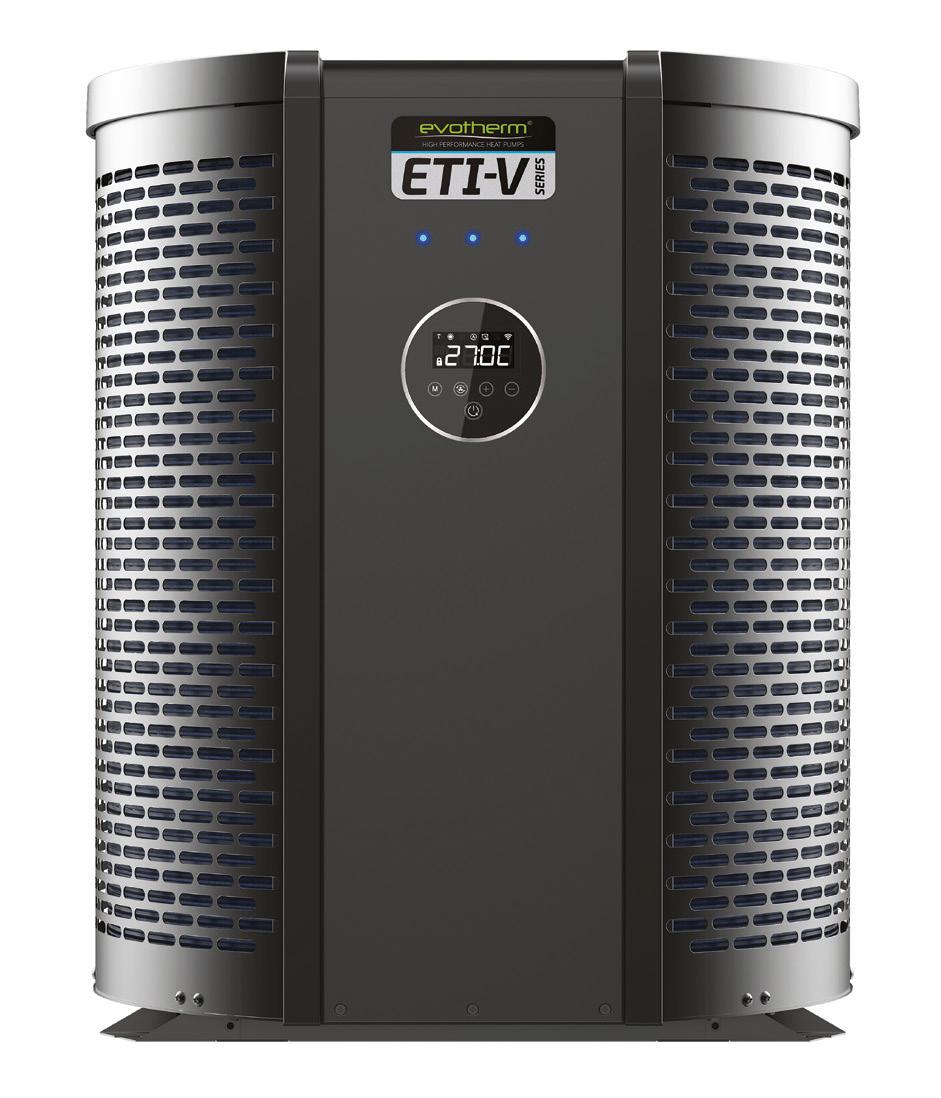
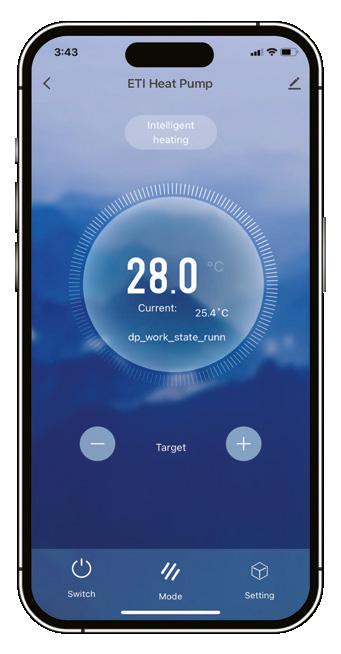



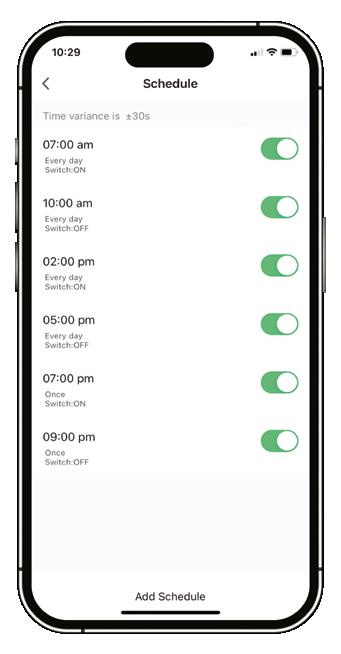
run time to avoid the pH dropping too low, as typically acid demand is lower while the water temperature is cooler and the pool is used less.
“Adjusting the run times of the pH Controller is as simple as using the digital menu on the Naked System itself,” he explains.
While automation on a swimming pool is not an essential, Milne believes that having a semiautomatic solution like the pH controller can save users both time and money when maintaining their swimming pool.
Fully integrated and user-friendly Manufactured in Australia and released in 2021, Davey’s Lifeguard is a notable addition to the pool maintenance market, particularly in the Australian, New Zealand and European regions.
One of its standout features is the incorporation of sensors to measure ORP, pH, salt and pool water temperature – all well-known control parameters that ensure a great swimming experience for customers.
“The easy to install manifold houses the probes and acid injection point, allowing Davey Lifeguard to monitor and automatically adjust the pH and chlorine to optimal levels via the Davey Nipper and included acid dosing pump,” says Davey pool and spa category manager, Sharon Tucker.
Tucker describes Davey Lifeguard and its fully integrated, user-friendly app as a complete pool and chemistry management solution that offers simple installation and remote monitoring. The app provides complete control over the pool’s system, allowing consumers to review and adjust filtration schedules and modes. Additionally, there is the option to control the system locally if they prefer not to connect to the internet.
“This innovative approach to pool maintenance offers convenience and peace of mind to pool owners, as it automates a critical aspect of water treatment. Users can effectively manage their pool’s pH levels without the need for constant manual intervention,
Rather than automatic dosing, AIS Water’s AutoChlor, MineralChlor, EcoLine and Pixie systems use the method of chlorination by electrolysis to disinfect pool water. Water passes through an electrolytic cell converting minerals and salts to liquid chlorine which is then distributed directly into the pool water keeping it clear and bacteria free.
There is no need to transport, store or handle dangerous chemicals, and pool water does not need to be constantly dumped to stabilise water chemistry. The result is clean, clear pool water and thousands of litres of pool water saved.
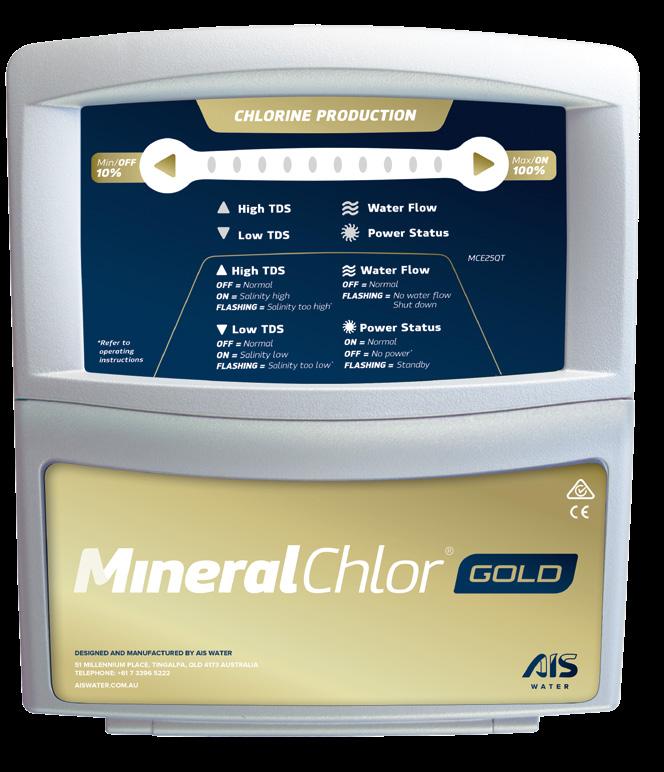
AIS Water MineralChlor residential chlorinator
AIS Water’s chlorinators effectively create a small chlorine factory within the pool water thereby negating the need for families to purchase, deliver, store or handle liquid, granular or gaseous chlorine.
allowing them to enjoy clean and balanced water with minimal effort. It also sends notifications and alerts when maintenance is required.”
Tucker says the Lifeguard uses the most up-to-date methodologies to protect the device and user data.
“We take cyber security and end user privacy very seriously,” she says. “As more products connect to the internet, consumers need to be aware that not all companies are doing their due diligence when it comes to protecting personal information.”
She says that Davey’s commitment to cybersecurity and end-user privacy reflects a responsible approach to the development and deployment
“We take cyber security and end-user privacy very seriously.”
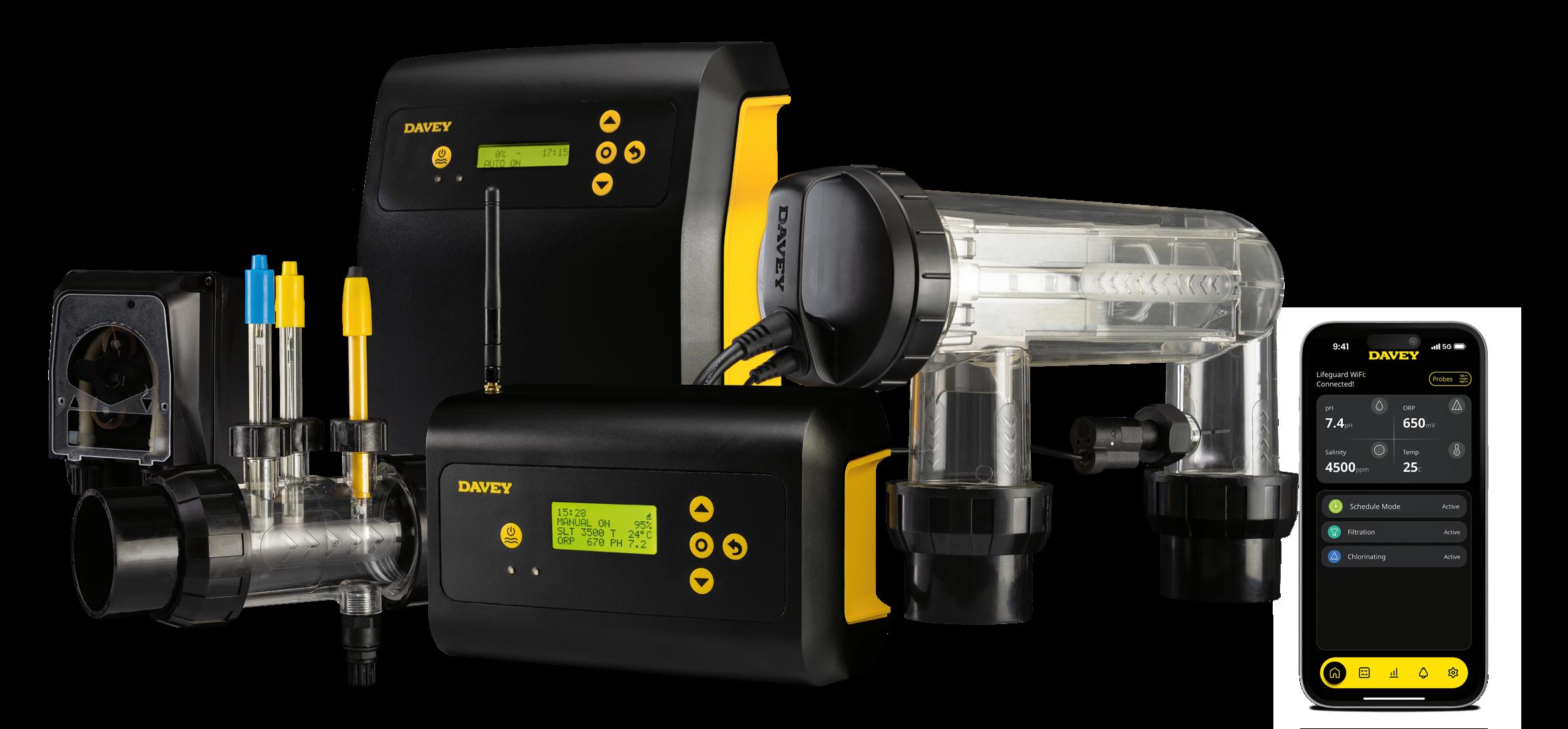 Davey’s ChloroMatic Lifeguard with the wifi enabled app
Davey’s ChloroMatic Lifeguard with the wifi enabled app
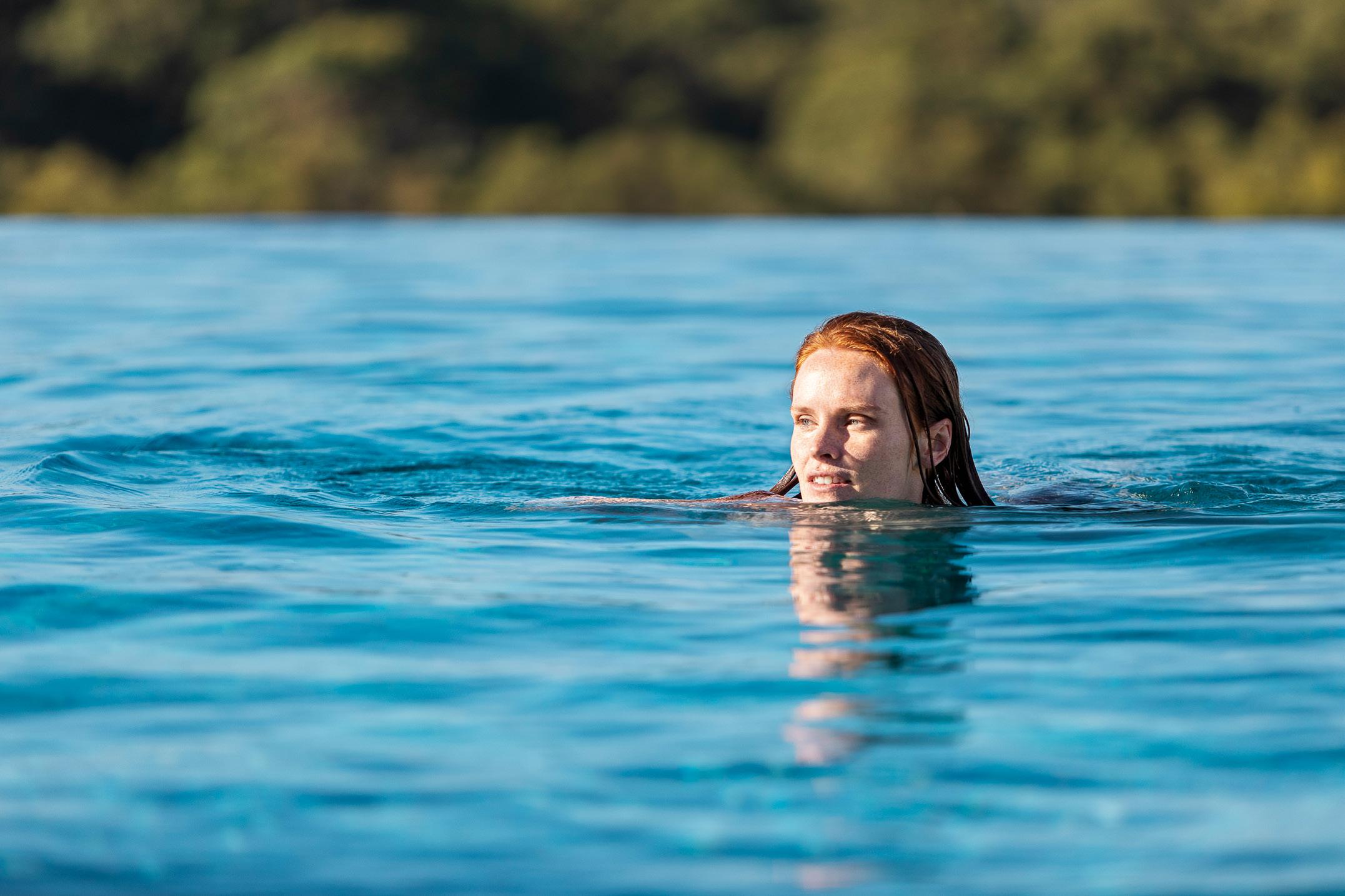
Digital consumer data collected by businesses is now considered to be the intellectual property of the business selling the products and services.
As consumers increasingly embrace smart poolrelated products driven by digital technology, the data they generate creates an opportunity for businesses to improve consumer engagement and sales.
“When you add into the mix the use of artificial intelligence, or AI, consumers are now able to create and add any content or update preferences by simply speaking or using various prompts to smart phones and home devices that learn our habits and preferences over time,” says SPASA chief policy officer Spiros Dassakis.
With data being the new driver for all business sales, data breaches are also occurring more frequently as businesses scramble to ensure there have appropriate security measures in places to prevent or limit these occurrences.
“As part of this new information highway being adopted by every industry and embraced by the modern consumer, SPASA recommends consumers gain a better understanding on how their data will to be protected when using digital and AI-enabled products,” he says.
Dassakis says manufacturers and retailers need to be more transparent about how they collect, share, and resell consumer data as the public become increasingly protective of how personal information is monetised.
“Data breaches, which have unfortunately become increasingly common, happens when personal information is accessed, disclosed without authorisation, or is lost,” Dassakis explains.
“With the rise in internet-enabled pool products, manufacturers and retailers have an obligation to ensure customer data doesn’t fall into the wrong hands.”
of connected products. In an era where internet-connected devices are increasingly common, safeguarding personal information and ensuring the security of these devices is paramount.
“Our dedication to cybersecurity and privacy not only instils confidence in consumers but also sets a standard for other companies in the industry,” Tucker says.
“This commitment includes measures such as robust encryption protocols, secure authentication mechanisms, regular security updates, and adherence to best practices for data handling and storage.
“Moreover, Davey’s proactive stance on cybersecurity underscores the importance of transparency and accountability in the realm of IoT (Internet of Things) devices. By prioritising the protection of user data and actively addressing potential vulnerabilities, Davey demonstrates its responsibility to building trust with its customers and fostering a safer digital environment.”
Tucker says the Lifeguard can be updated over the air in matter of minutes, ensuring that new features and improvements to algorithms are automatically installed to improve the product.
This capability not only enhances user experience but also demonstrates Davey’s dedication to ongoing product support and innovation. With automatic updates, users can benefit from enhancements such as new features, bug fixes and optimisations without having to wait for traditional firmware updates or purchasing new hardware.
“Constantly gathering insights from the units means we can develop more advanced functionality like adjustments for environmental conditions, locations, or incoming weather events,” she explains.
“Overall, this enhances the value proposition of Davey Lifeguard by providing users with a product that evolves over time, remaining relevant and efficient in meeting their needs and exceeding their expectations.”
Chemical dosing controllers have revolutionised pool maintenance by automating the process of monitoring and adjusting water chemistry. They offer numerous benefits, including time and cost savings, improved water quality, and enhanced convenience for pool owners.
As technology continues to evolve and integrate IoT and AI, we will no doubt see them become even more sophisticated and intuitive. n
Contacts:
www.aiswater.com.au
www.davey.com.au
www.naked-pools.com
www.poolpower.com.au
www.spasa.com.au
www.waterco.com.au
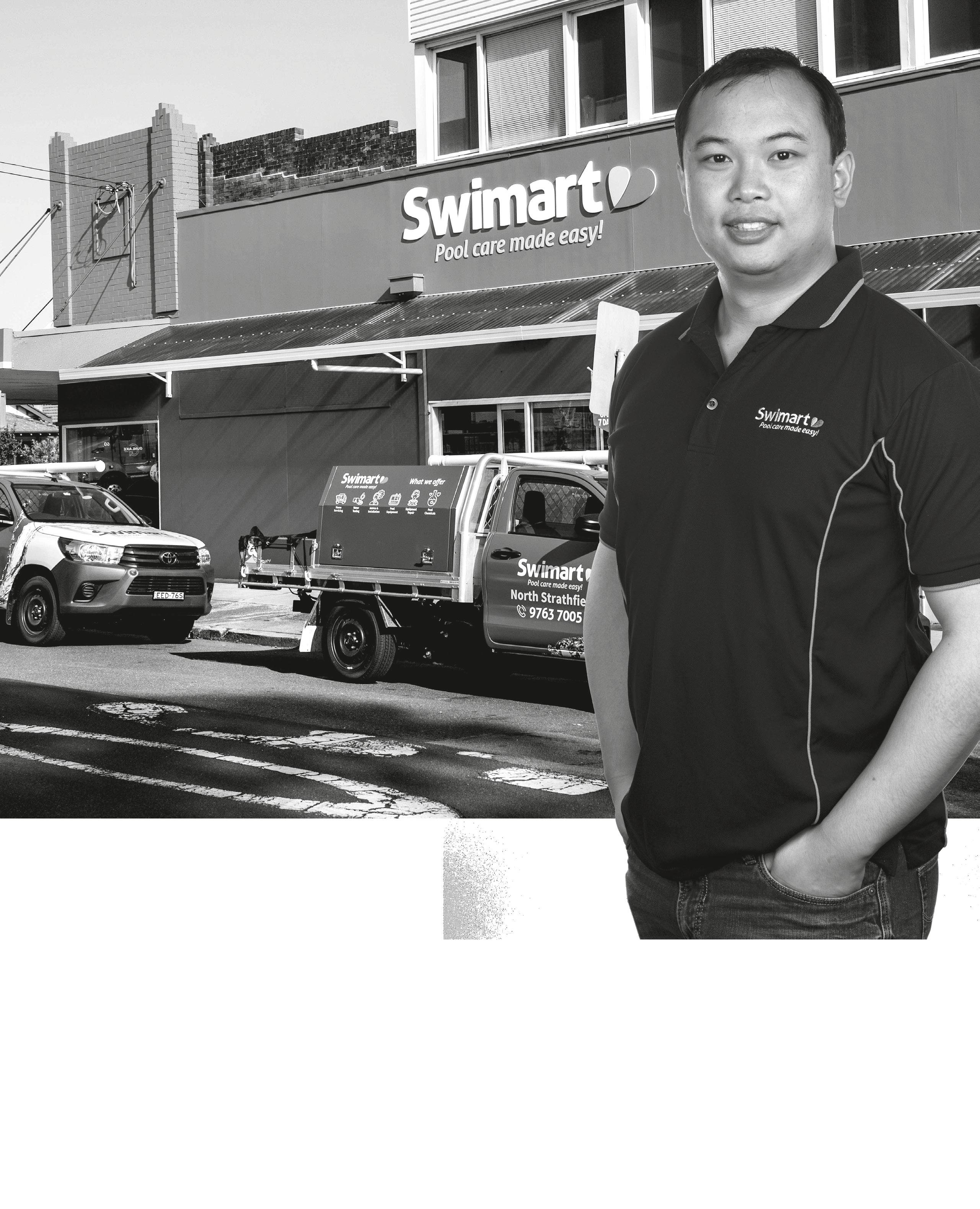

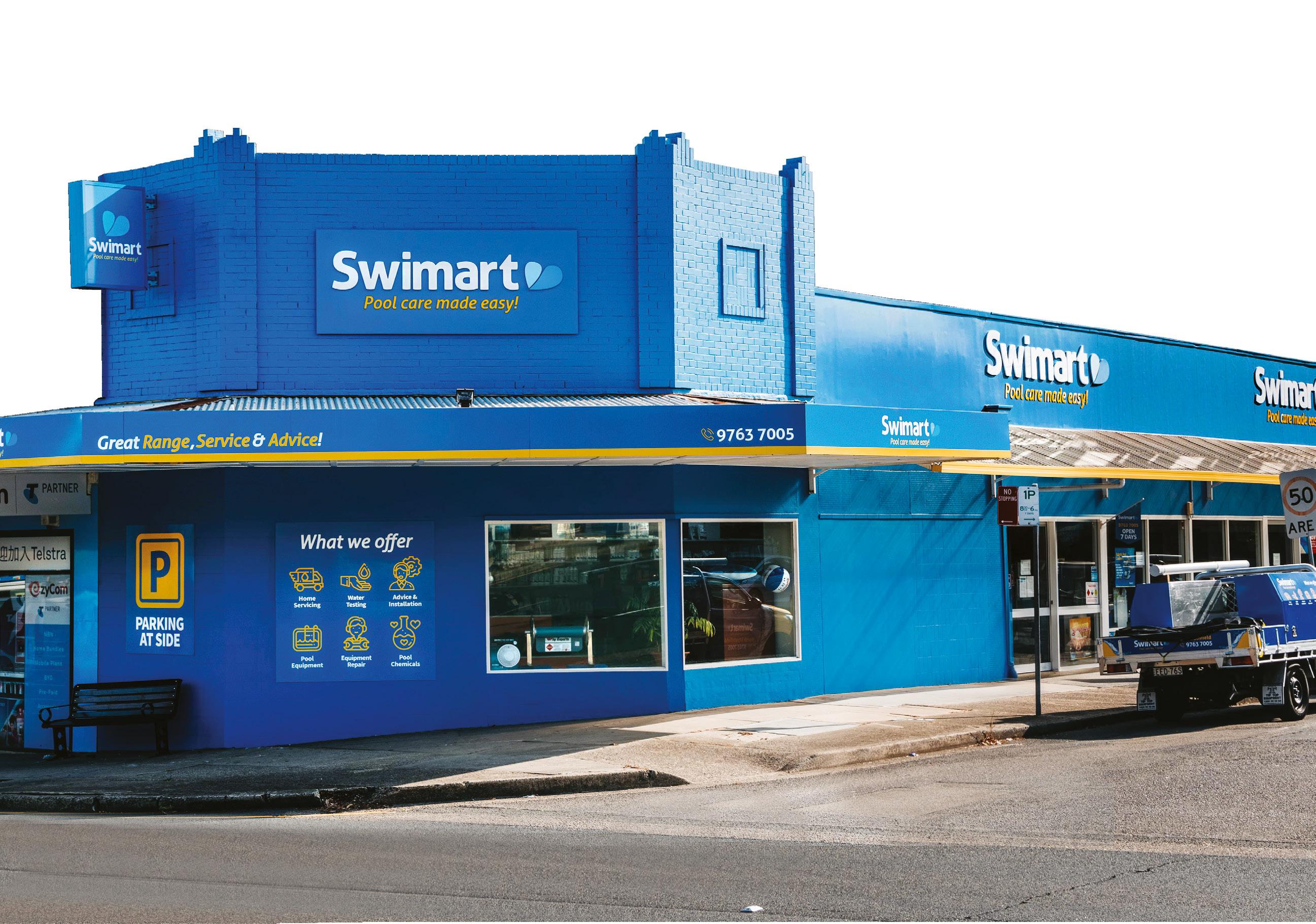
The Rapid Pro heat pump has a coefficient of performance (COP) of 20.


Achieving a 20% faster heating rate, operating at a capacity between 100%and 120% to swiftly reach the desired temperature.
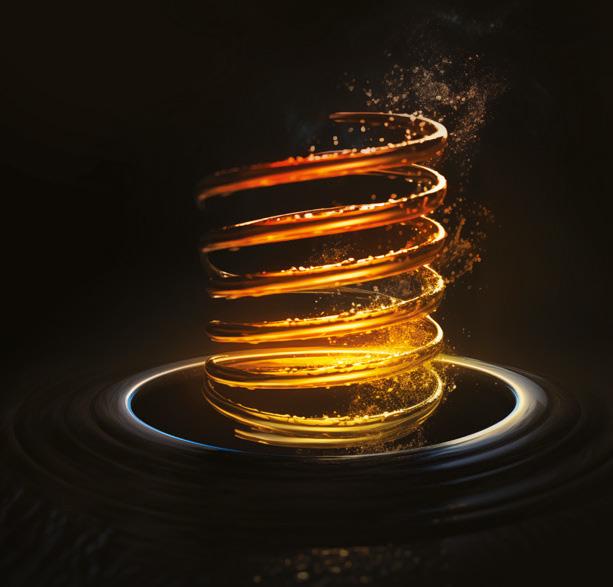
Next generation 3D heat exchanger. 3D heat exchanging technology is redefining the titanium heat exchanger. Increasing efficiency by 30%.


Over 35 years of experience in the industry makes us the expert choice for advice, quality products and after sales support.
Sunlover Group, the home of leading pool equipment and heat pump brands.



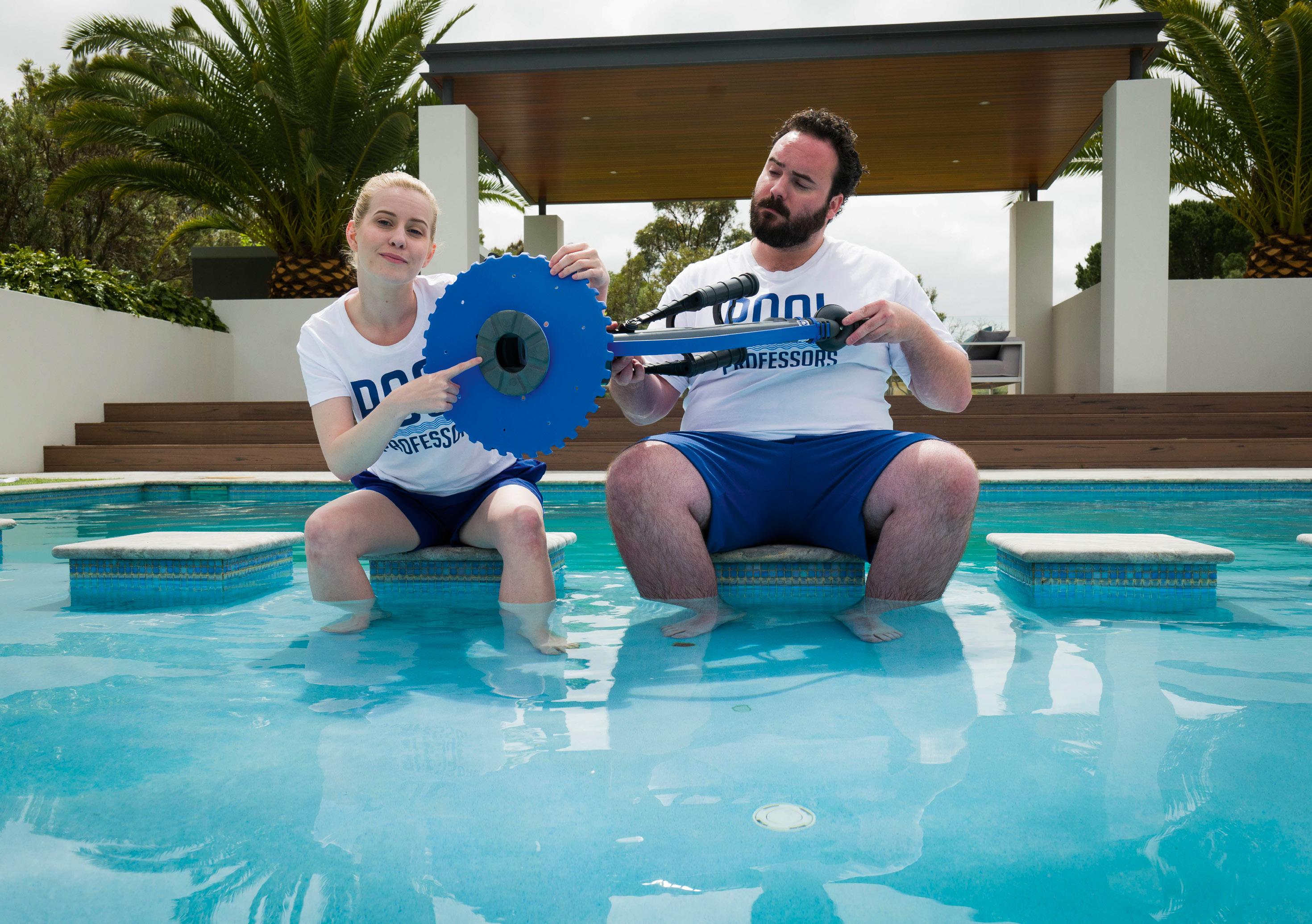
The evolution of pool cleaning technology over the past 112 years, since John Davison’s submission of a patent for a “Cleaning Apparatus for Swimming Pools and the Like,” has been remarkable.
This innovation marked the beginning of a journey toward automation in pool maintenance, aimed at reducing the time and effort required for manual cleaning. Over the years, consumers have witnessed a steady stream of advancements in technology, driven by the desire for greater convenience, efficiency and effectiveness.
From the early manual pool cleaning devices to the introduction of suction cleaners, pressure cleaners and robotic cleaners, each innovation has brought improvements in terms of cleaning performance, ease of use and maintenance. These advancements have transformed this industry category, making it easier and more accessible for pool owners to maintain clean and inviting swimming environments.
Suction pool cleaners, for example, work like a vacuum cleaner for your pool, utilising the pressure generated by the pump to suck in water along with debris as it moves around the pool’s
ABOVE: Kreepy Krauly is synonymous with suction cleaners, making and selling them in Australia for more than 45 years
“Suction cleaners offer better serviceability in the long run with low cost replacement parts and are easier to repair by the owner.”
surface and floor. This mechanism allows it to pick up various types of debris such as bugs, leaves, hair and other particles.
The debris collected by the suction cleaner is then drawn into the filtration system, typically through the skimmer or a dedicated suction line. From there, the debris is captured by the pool’s filter, often in a filter basket or cartridge, where it can be easily removed and cleaned out.
This process not only helps in keeping the pool water clean and free of debris but also contributes to the overall maintenance of the filtration system, ensuring efficient operation and water circulation.
So, why do hear more about robotic pool cleaners than these handy, hands-free pool cleaning devices which have been evolving in Australia for many decades?
For Pentair marketing manager Peter Kolomyjec, the pool cleaner is the poster child of the swimming pool pad, an aquatic device that he believes has become incredibly divisive in the pool industry.
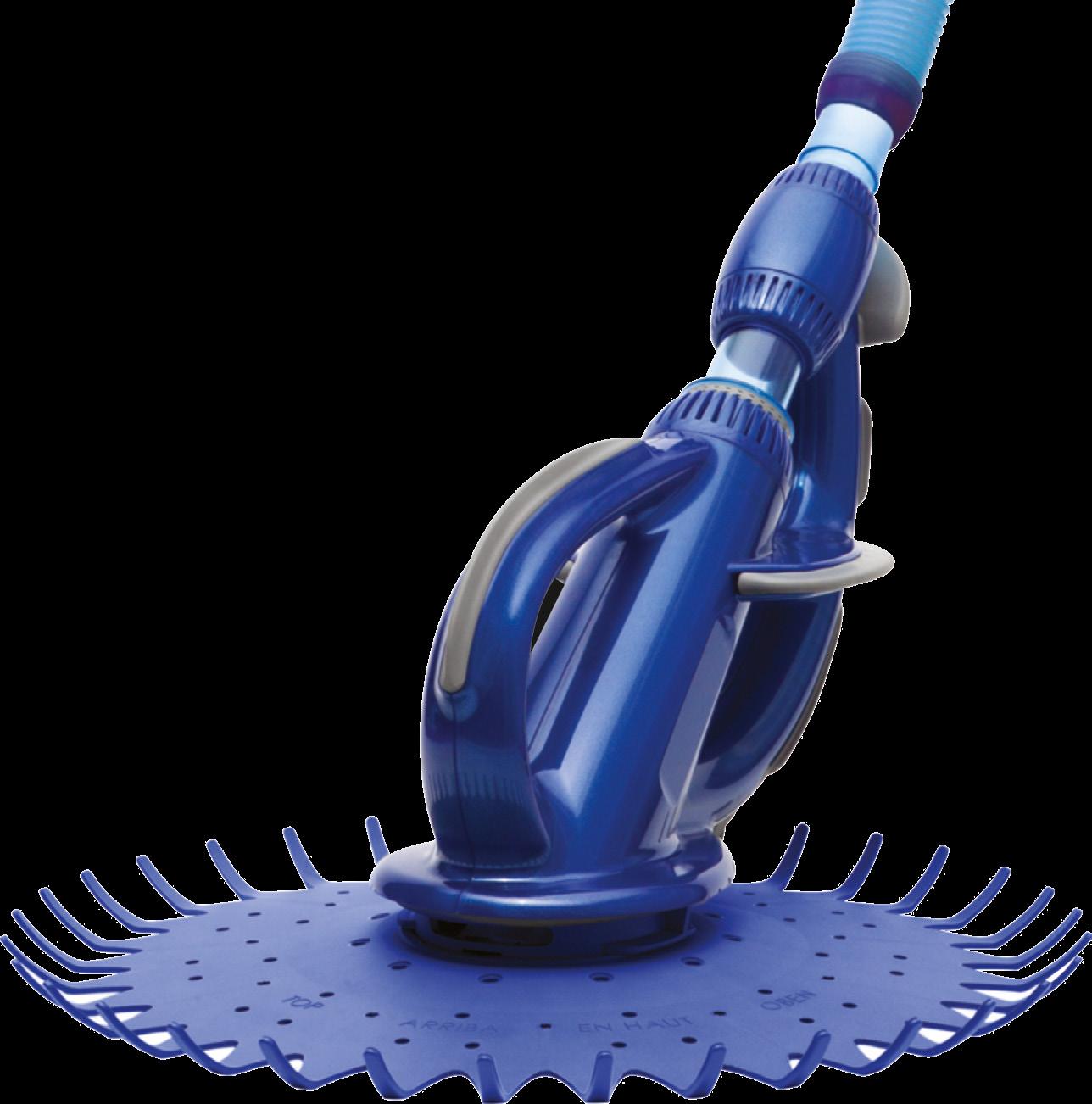
“The early disc suction cleaners take us back to the days of the 1980s when they were the first truly hands-free pool cleaning device used in pools around Australia, typically dominated by a few brands,” he says.
“These devices can be classified into two segments – disc suction and mechanical suction. Motivated by an oscillating hammer or diaphragm, the disc suction cleaner held market favour until the 2010s with the emergence of the mechanical suction models.”
These new and innovative cleaners offered the user more in terms of increased efficiency through greater agility and motivation, and became yet another marketable device for pool owners to purchase.
“It was not until the mid-2010s when the robot cleaner came onto the market with a completely revolutionary form of cleaning,” he says.
“Moving away from suction technology, the robot cleaned and held the debris in its on-board storage unit, allowing the user to do away with cumbersome vacuum hoses. This technology also moved to a more power friendly 12-volt powerpack thereby eliminating the need for the pool pump to be operating, saving the consumer in pump operating costs.
“As pool cleaning technology continues to evolve, consumers are increasingly torn between purchase options, driven most notably by better pool cleaning or operability and gadgetry.”
As most suction models do a decent job with floor cleaning, Kolomyjec says the key characteristics to look for include total pool cleanability including walls, robustness and manoeuvrability.
He says that many models on the Australian market share these characteristics, so often the decision comes down to price – putting forward two Pentair models as good examples, the Rebel 2 and the Mako Shark.
“The suction mechanical Rebel 2 is supported by most pool shops around the country – tune-up
kits are also available to extend this value-formoney cleaner’s life – while the disc suction Mako Shark pool cleaner shares many of the design features of the most popular automatic suctionside vacuum in history,” he says.
While disc and mechanical suction cleaners are still providing consumers with satisfactory pool cleaning results, robotic cleaners have grown in popularity since they hit the market in the mid 2010s.
“Originally driven by 12- or 24-volt unit tethered to a 240V step-down transformer, newer batterypowered models have entered the market with mixed results and reviews,” says Kolomyjec.
“While robot cleaners are getting closer to providing a more thorough cleaning, old-school suction cleaning still reign superior for cleaning but less on agility and manoeuvrability like their technologically enhanced counterparts. But unlike robot cleaners, suction cleaners offer better serviceability in the long run with low cost replacement parts and are easier to repair by the owner.”
The test of time
Suction cleaners, a staple in pool maintenance for many years, have proved their reliability and effectiveness; and their long history of use and refinement has contributed to their enduring appeal among pool owners.
And, says Nazratan Nayeem, Fluidra category manager, by leveraging existing pool equipment, such as the pump and filtration system, they reduce the need for additional investments.
“Suction cleaners offer a reliable cheaper option to the more advanced robotic cleaner,” she says. “Their appeal has stood the test of time. The suction market is not growing year on year, but it is here to stay. They offer a great alternative if someone does not want to spend too much on a pool cleaner.”
When looking at the various models, Nayeem says the mechanical suction cleaner offers better cleaning capability than the traditional disc suction cleaner.
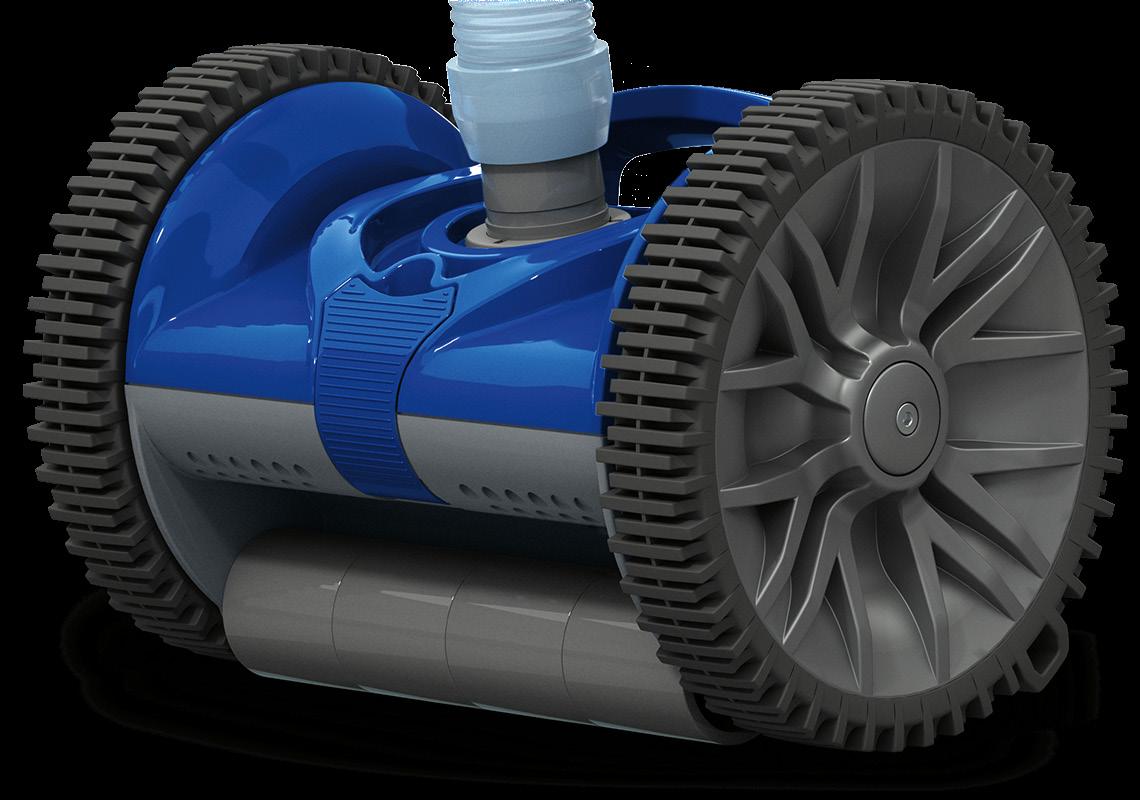

“Mechanical suction cleaners come with tracks and often will feature scrubbing brushes that help release stuck-on debris and pick it up. They also have the ability to climb and clean the walls, which disc suction cleaners cannot do properly.”
As with everything in this technology-driven world, the suction pool cleaning category is not immune to improvements and refinement.
“Fluidra’s latest disc suction cleaners have a new patented engine design that is capable of picking up long stringy debris such as palm fronds without the debris causing a blockage in the cleaner,” she says.
While robotic cleaners are continually evolving as new innovations such as AI disrupt the pool industry, Nayeem is adamant suction cleaners are not going anywhere.
“They offer a cleaning service that is good enough and not heavy on the wallet,” she says.
“It is also wise to spend a little extra on a good quality mechanical suction cleaner with scrubbing brushes.”
They are inexpensive, simple to use, convenient and efficient; so why are suction cleaners often overlooked in favour of robotic cleaning options?
For Sarah Davis, CEO of Kreepy Krauly Australia, this comes down to an efficiency claim that appeared in a 2010 study conducted by the Pacific Gas and Electric Company in the United States.
“The study, which compared two-speed pumps and not the efficient variable speed pumps we have in the Australian market today, assumed
standard suction cleaners did not operate on low pump speed settings,” she says.
“In fact, two-speed pumps did not gain much popularity here and as a result represent a very small percentage of old pumps. Instead, our market is primarily made up of fixed and variable speed models.”
When paired with a variable speed pump, Davis says a properly designed and efficient suction cleaner can in reality operate on lower speed settings.
“When paired with the optimum speed, the pump should operate to generate proper pool circulation for water health, and do so with no additional running costs,” she says.
“On the first of October 2022, the new Minimum Energy Performance Standards (MEPS) came into effect, requiring at least 120lpm of water flow, which would be considered sufficient to run most suction cleaners – assuming normal plumbing of the pool equipment and an efficient suction pool cleaner.”
A big benefit of suction cleaners is they help with water circulation by removing dead spots throughout the pool, allowing the pump to run at a lower speed. A suction cleaner can pull water from all areas of the pool to be fed to the pump and filtration system.
Kreepy Krauly is a name synonymous with suction cleaners, making and selling them for more than 45 years.
“The suction market is not growing year on year, but it is here to stay.”
BELOW: One of the standout features of Hayward’s TracVac suction pool cleaner is its rugged tracks, designed for finesse and durability
“We are a second generation family business that still designs and manufactures in-house at our purpose built facility in Perth, Western Australia,” she explains.
“Our design philosophy is centred around our highly efficient Vortex technology that lifts suspended debris that other cleaners simply push around. That, paired with our comprehensive pool coverage, ensures proper circulation of a swimming pool’s water back to the filtration system.”
Davis believes the company’s VTX-7 “traditional” suction cleaner is still the best pool cleaner on the market.
 ABOVE: Fluidra’s Zodiac AX20 Activ mechanical suction cleaner
ABOVE: Fluidra’s Zodiac AX20 Activ mechanical suction cleaner
“They are affordable yet amazingly efficient devices that offer a multitude of benefits.”
“With one moving part, it is true engineering excellence,” she says. “The traction sole that facilitates pool coverage paired with a long lasting scrubbing silicone seal means the pool’s surface is gently massaged and polished throughout the day when the system is on. Most robotic cleaners just lightly brush the pool’s surface.”
The lightweight Sprinta Plus model was designed and manufactured specifically for fibreglass pools, has won a Choice Magazine Recommended Pool Cleaning Equipment rating and was awarded this year’s Best Suction Cleaner by consumer review site www.productreview.com.au.
“This cleaner is whisper quiet, unstickable and unstoppable,” Davis says. “It truly is ‘plug and play’.”
In relation to the suction cleaner space, Davis says retailers need to remember the simple consumer problem that needs to be solved: How can I keep my pool clean?
“At Kreepy Krauly, we answer this question by utilising our four-step pool cleaner selector to identify the best pool cleaner for the customer’s pool and pair every order online with a physical brick and mortar pool shop to ensure customers are supported with service and support, as well as support our physical retail network,” she says.
“The cleaner selected is a full system which includes the automatic vacuum control, hose and cleaner,” she says.
“It is designed to be set-and-forget, to efficiently clean the pool working with the pool’s filtration and sanitisation system to offer reliable, truly automatic, and hassle-free cleaning. No gimmick, just a pool cleaning solution that actually works, giving customers more time for the more important things in life.”
Keeping it easy to install and operate
Hayward Australia managing director Robert Emmett says technological advancements have revolutionised the way we care for our aquatic retreats at home.
Pools are more than just recreational amenities; they are spaces for relaxation and rejuvenation. And by employing advanced technologies in pool maintenance, users can better preserve these spaces and enhance their enjoyment.
“Among these innovations, robotic pool cleaners stand out as indispensable tools, offering a plethora of benefits that enhance both the cleanliness and functionality of swimming pools with minimal effort,” he says.
“While acknowledging the advantages they bring, one can’t disregard more traditional technology such as suction cleaners, with a proven track record of being essential components of daily pool upkeep.”
First and foremost, pool suction cleaners excel in efficiency.
“They automate the cleaning process, efficiently navigating the pool’s surface, walls and floors to remove debris with minimal human intervention,” he says.
“This basic automation not only saves valuable time but also ensures thorough cleaning, leaving pools pristine and inviting.”
There is no doubt, the effectiveness of pool suction cleaners contributes to water clarity and hygiene. By swiftly eliminating leaves, twigs, insects and other unwanted debris, these triedand-tested devices prevent organic matter from decomposing in the water – a process that can compromise water quality and create breeding grounds for bacteria and algae.

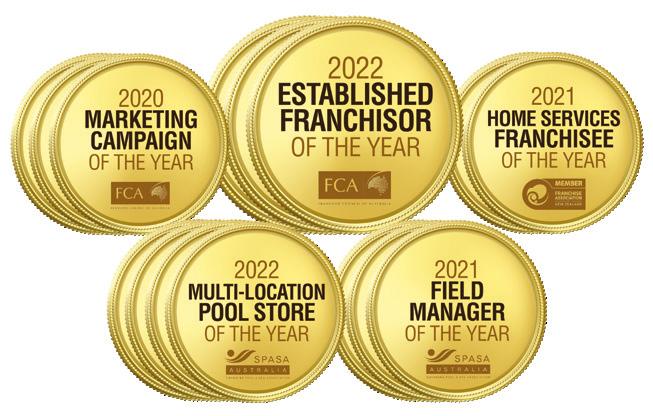
“Maintaining optimal water conditions not only enhances the swimming experience but also reduces the need for chemical treatments, promoting eco-friendly and cost-effective pool management practices,” he says.
In addition to their pool cleaning prowess, Emmett believes suction cleaners offer unparalleled convenience and ease of use.
“Designed for straightforward installation and operation, these devices require minimal setup and maintenance, making them accessible to pool owners of all levels of expertise,” he says.
“Once installed, they operate autonomously, freeing pool owners from the burden of manual cleaning routines and allowing them to devote their time to enjoying their pool oasis rather than labouring over its upkeep.”
Moreover, pool suction cleaners are versatile and adaptable to various pool shapes, sizes and surfaces. Whether the pool features intricate contours, steps or irregularities, modern suction cleaners are equipped with advanced navigation systems and adjustable settings to ensure comprehensive coverage and optimal performance.
“This versatility ensures that all areas of the pool receive the attention they require, resulting in consistently clean and inviting water,” says Emmett.

“We expect to see more suction cleaners equipped with smart technology and AI.”
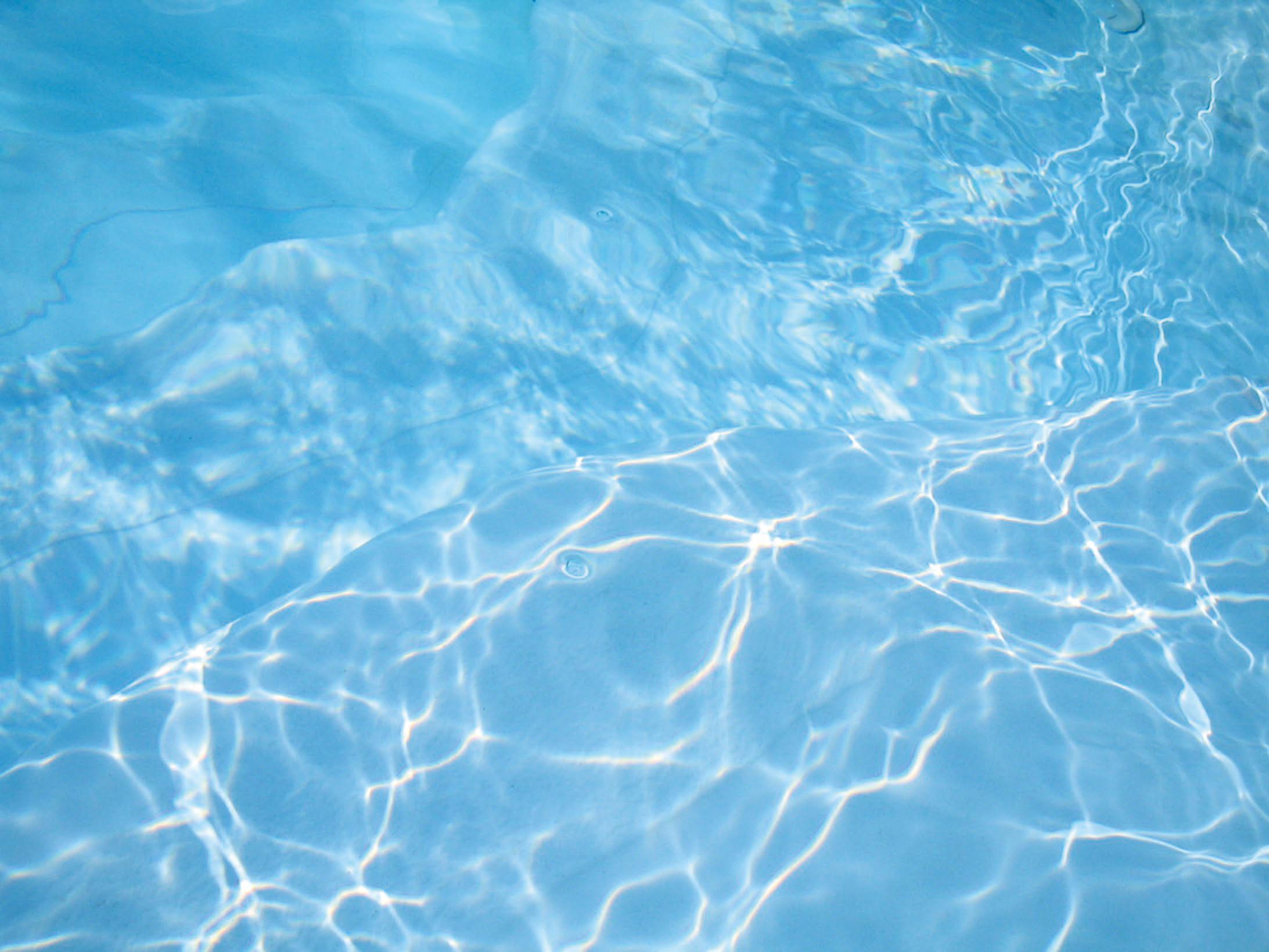
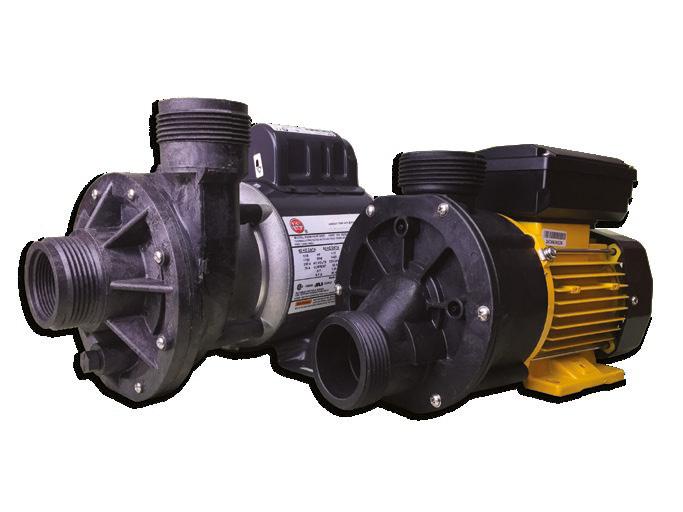
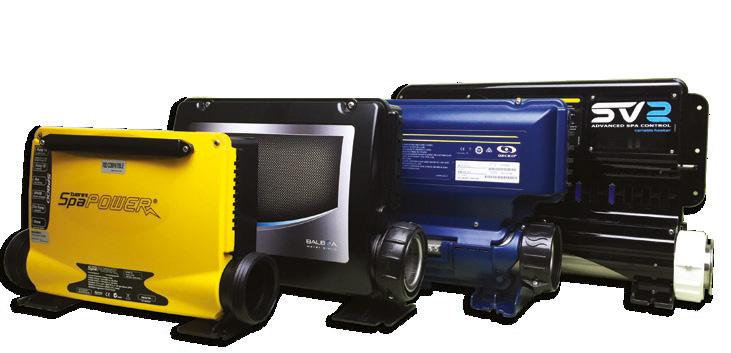
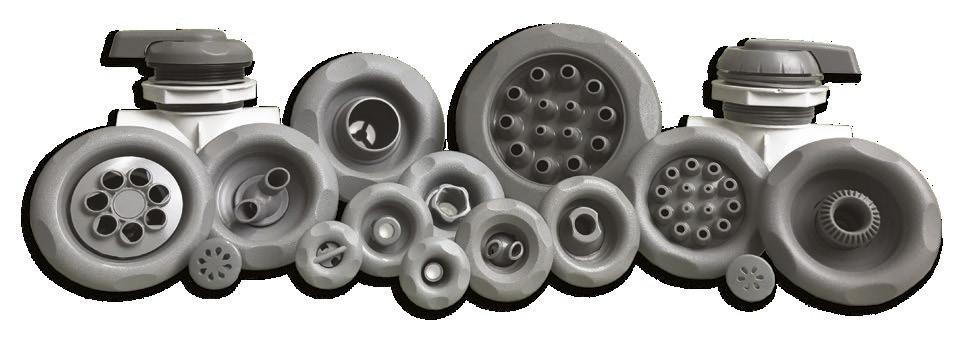



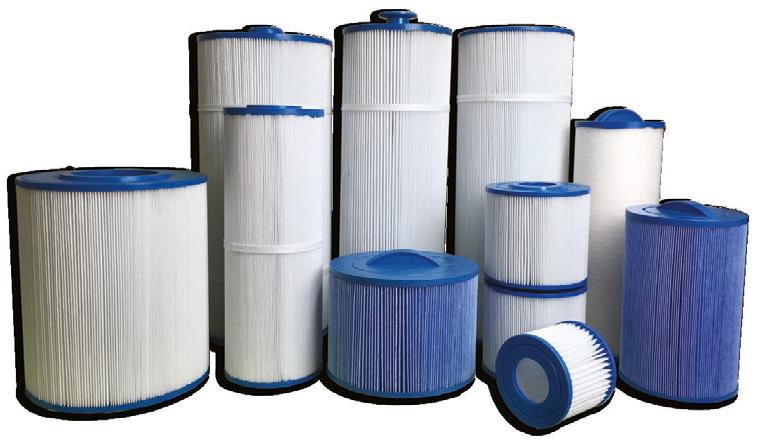
 ABOVE: The TracVac’s rugged tracks enable it to glide effortlessly across the pool, unstopped by obstacles like drain covers
ABOVE: The TracVac’s rugged tracks enable it to glide effortlessly across the pool, unstopped by obstacles like drain covers
For example, Hayward’s Navigator V-Flex features patented V-Flex technology for a total clean with virtually zero clogs.
“Its wide vacuum inlet and unique wing design create constant suction power, even at lower flow – making it ideal for use with energy saving variable-speed pumps,” he explains.
“Equipped with patented SmartDrive technology, Navigator V-Flex systematically travels the floor, walls and coves of your pool, providing thorough, reliable results.”
Beyond their practical benefits, pool suction cleaners also contribute to energy efficiency and sustainability.

By reducing the need for excessive water circulation and filtration, they help conserve energy and minimise water consumption – a crucial consideration in an era marked by growing environmental consciousness.
“By embracing technology that promotes resource efficiency, pool owners not only reduce their environmental footprint but also enjoy longterm cost savings on utility bills,” says Emmet.
“Most importantly though, suction cleaners are not going to break the bank. They are affordable yet amazingly efficient devices that offer a multitude of benefits that enhance cleanliness, convenience and sustainability.”
As indispensable allies in the quest for pristine pool environments, these devices empower pool owners to spend less time and money on maintenance chores and more time enjoying their pool.
Available in standard sized rectangle shapes, or fully custom made to order in any shape or size with A B G A L’s PhotoMeasure system.
Even the most difficult pool shapes can be measured without the need for complicated mark-outs. Just a few check measurements and a series of photos which are uploaded in the online portal, straight from your phone - while you’re still on site!
Easy to measure, easy to install. Happy pool owners. Unhappy ducks.
Scan for more info or phone Richard on 0408 764 258


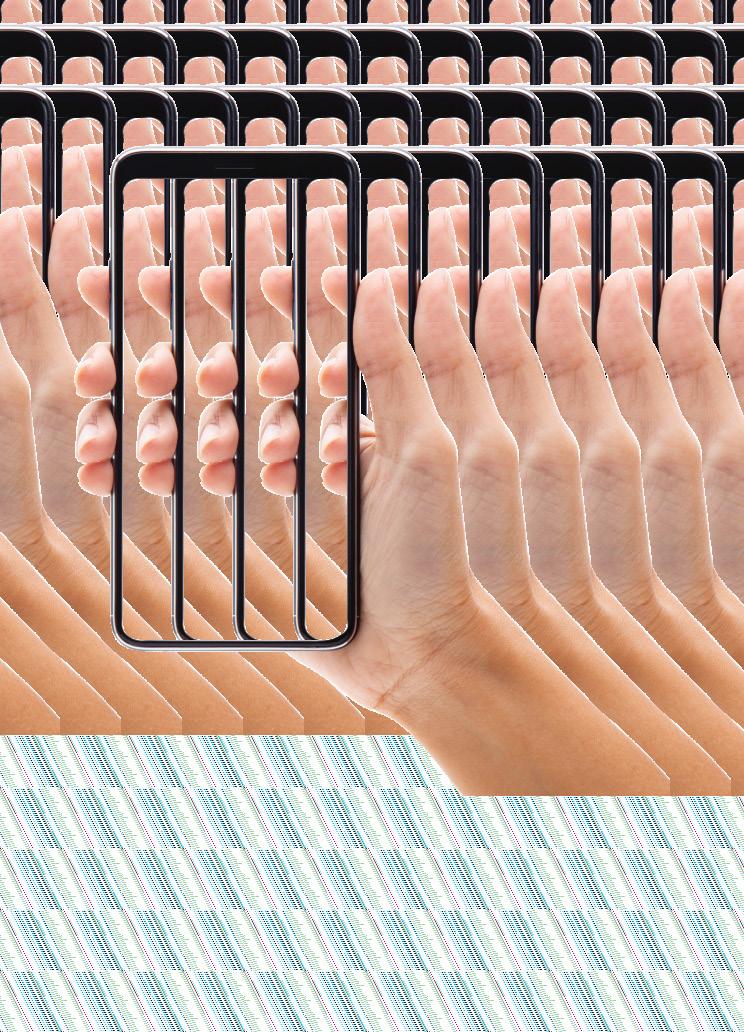

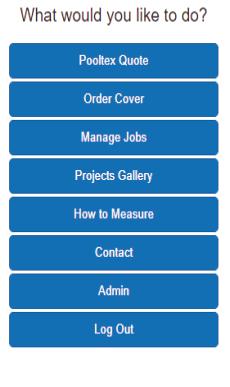 BELOW: Hayward’s Aquanaut 350
BELOW: Hayward’s Aquanaut 350
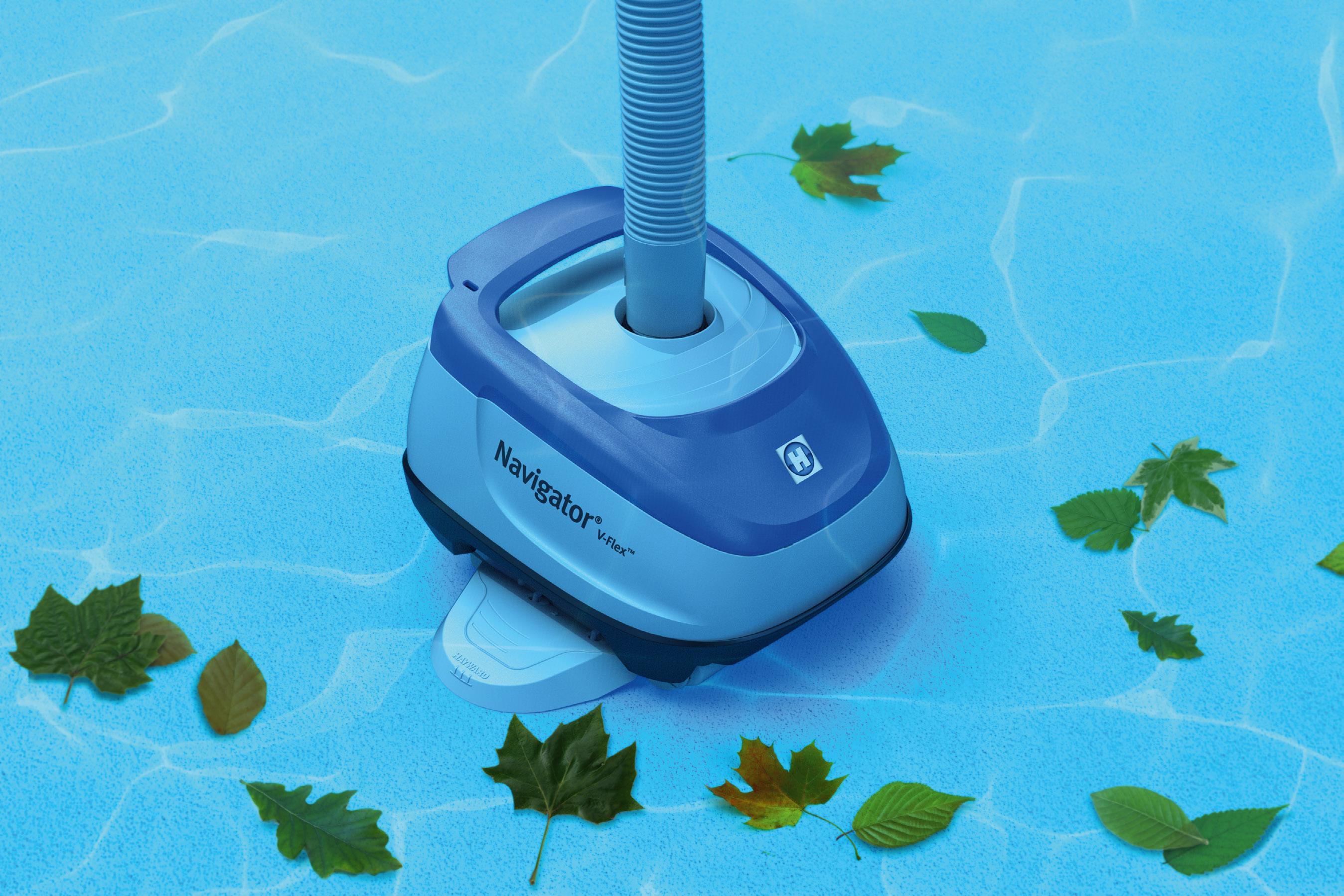
Hayward believes the future of suction cleaners is likely to be shaped by advancements in technology, materials science and consumer demands.
“We expect to see more suction cleaners equipped with smart technology and AI to play a significant role in improving their cleaning efficiency,” says Emmett.
Overall, the suction pool cleaner market presents vast and promising opportunities for manufacturers who are willing to innovate
• They offer a set-and-forget solution.
• There is no need to remember to turn them on because they operate when the pool’s filtration system is on.
• You don’t need to pull the cleaner out of the pool to charge it.
• Suction cleaners improve circulation and bring water directly to the pool’s filtration system, which aids bacteria removal, which is especially important if lower pump speeds are selected.
• Cheaper to purchase and lower ongoing maintenance costs.
• With the new MEPS minimum flow requirements of variable speed pumps at 120lpm, they can – with the right plumbing configuration and efficient pool cleaner selection – offer a zero running cost, hassle-free whole pool cleaning solution.
Source: Kreepy Krauly Australia
“The effectiveness of pool suction cleaners contributes to water clarity and hygiene.”
and adapt to evolving consumer preferences. By focusing on technological advancements, environmental sustainability and product diversification, companies can position themselves for success in this dynamic and enduring market segment.
Looking ahead, the trend toward automation in pool maintenance is likely to continue, driven by ongoing advancements in technology, increasing consumer demand for convenience and efficiency, and a growing emphasis on sustainability and environmental responsibility.
As a result, consumers can expect to see further innovations in pool cleaning technology that promise to make pool maintenance even easier, more efficient and more environmentally friendly in the years to come. n
Contacts:
www.fluidra.com.au
www.hayward.com
www.kreepykrauly.com.au
www.pentair.com.au
ABOVE: Hayward’s Navigator V-Flex is equipped with patented SmartDrive technology, systematically travelling the floor, walls and coves of the pool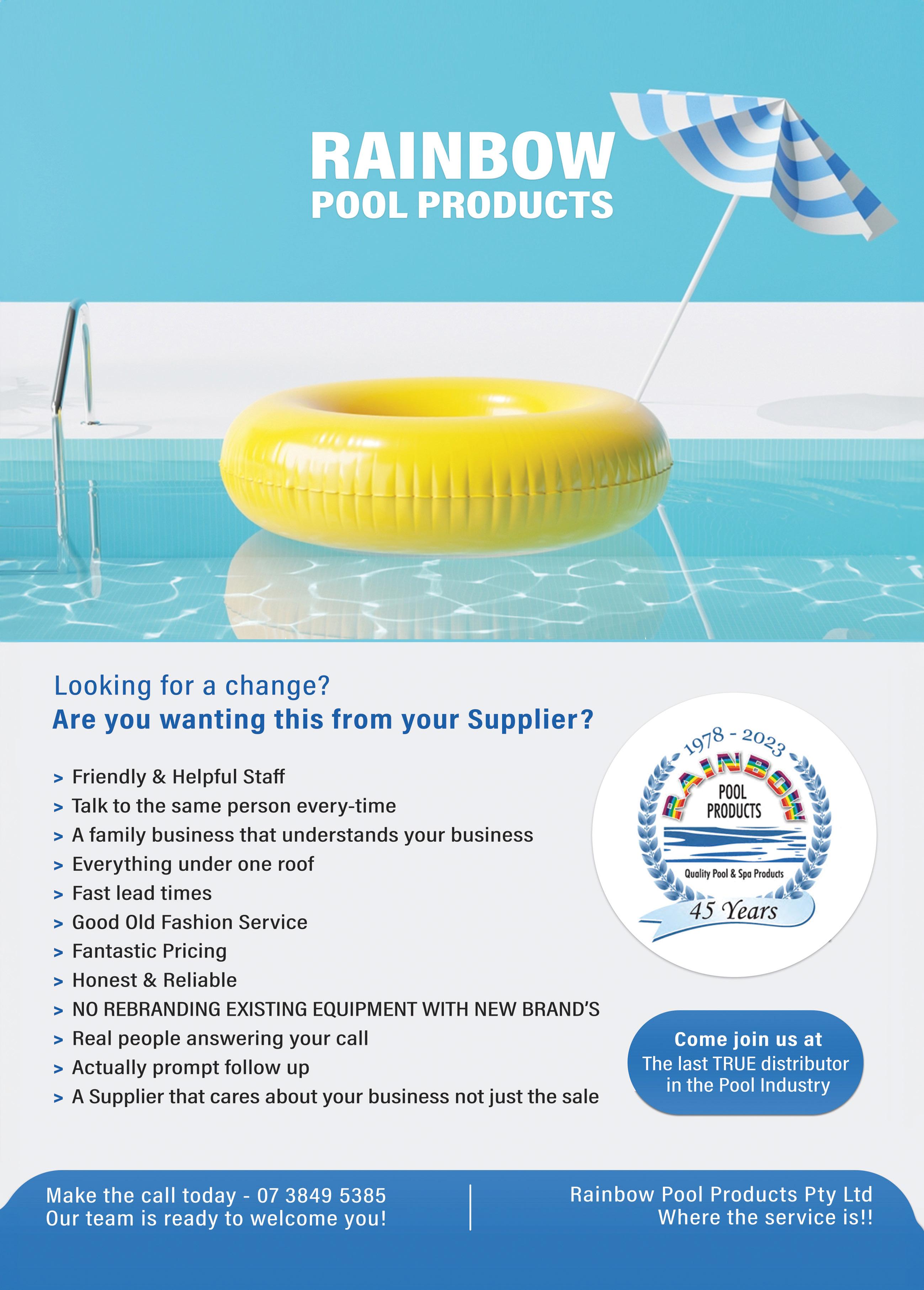
The Aquatic and Recreation Institute (ARI) conference and trade show is set to take place from May 19 to May 21, 2024 at West HQ, located in the heart of Western Sydney. West HQ is billed as the top venue in Greater Western Sydney, making it the ideal location for the ARI Annual Conference. It kicks off with a face-to-face professional development day at the Sydney Gymnastic and Aquatic Centre (SGAC) – the highly acclaimed swim school and one of the largest purpose-built gymnastics facilities in the southern hemisphere. A range of professional development opportunities will be provided for a wide array of aquatics and recreation workers, including swim teachers, pool lifeguards, aquatic technical operators and aqua aerobics instructors, delivered by industry professionals.
A report to Orange City Council tabled on March 19 included worrying information about the abuse of aquatic centre lifeguards during the council’s fee-free period last Christmas.
An extra 16,000 people attending the centre over that time – more than doubling the usual numbers from 12,423 to a record 28,992.
The council forwent $300,000 in revenue during the six weeks: $90,000 from the normal revenue over that period not collected, and a further $210,000 from entry fees not collected from the additional patrons who attended the facility.
The conference will officially commence on May 20 at the Sydney Coliseum Theatre, West HQ’s performing arts venue and the only location of its type in Greater Western Sydney. It will also be the setting for the ARI Trade Show.
One of the added advantages of this venue is the on-site Novotel – offering premier hotel accommodation – and a convenient option makes it effortless for delegates coming from regional NSW, interstate and overseas.
ARI NSW chair Marco Blanco says ARI is thrilled to partner with West HQ in the delivery of the conference.
“It is promising to be our biggest ever event and we look forward to an inspiring and enlightening event that connects industry,” he says.
Contact: www.arinsw.com.au
However, rather than being grateful for the free swim, some patrons took the opportunity to abuse staff. In fact, during that period more than 250 patrons were ejected from the centre for unruly behaviour.
The biggest issues were the refusal to follow instructions, abusing staff or other patrons, and a higher-than-normal rate of theft with a number of phones and watches being taken from patron’s bags. One patron’s car was stolen from the car park after keys were stolen from his bag. Police were engaged a number of times to report poor behaviour and to request patrols through the centre.
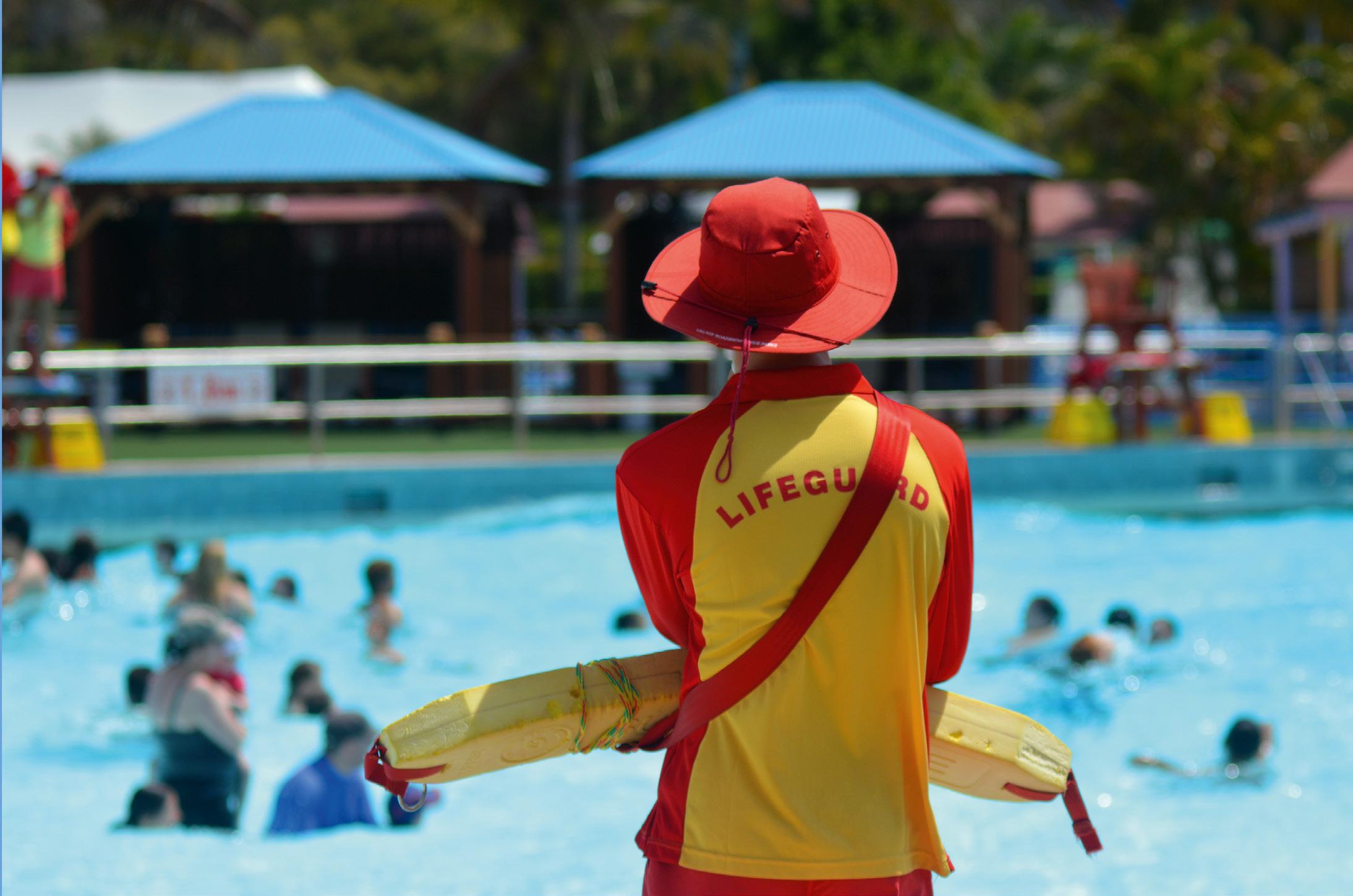
Council engaged security guards to manage the behaviour at a cost of about $30,000 over the second half of the free entry period, with the guards taking responsibility for managing and preventing the troublesome behaviour.
Understandably, there had been an increase in complaints from regular patrons. Anecdotal complaints included statements such as “ruined by small minority”; “very unsafe”; “scared”; and “out of control”. In an interview with ABC Central West, Orange City Council’s community, recreation and cultural services director, Scott Maunder – who manages the pool – said the trouble was caused by a relatively small group comprising both children and adults, and that it escalated very quickly.
He also said that many of the lifeguards who were on the receiving end were in their teens or early 20s, and that even for the more experienced staff it was very confronting. Additionally, he said there was also a rise in the number of excrement and urine contamination incidents in the pool.
Maunder said the staff were very happy for the free entry period to conclude.
Orange City Council mayor Jason Hamling told the ABC it was very disappointing, and with elections due in September, it would be up to the new councillors to decide how to proceed next summer, leaving open the possibility that the fee-free component, if it goes ahead, may only apply to families in future.
See page 58-59 of SPLASH! Edition 151, Crisis management: exploring risk at communal, public and commercial swimming pools, which includes advice from NSW Police on dealing with unruly patron behaviour at aquatic centres.
Be courteous and respectful: Shoalhaven Council supports its workers
Meanwhile, Shoalhaven Council has opted for a zero tolerance approach to harassment of staff or any behaviour that places its workers at risk of psychological harm, and has called on its community to be courteous and respectful in their interactions.
Under Work Health and Safety legislation, psychosocial hazards and risks are now part of the obligations of all employers to provide a safe workplace environment that equally considers physical and mental health.
This includes staff at facilities such as swimming pools, works depots, animal shelters and libraries, as well as anywhere maintenance crews, rangers and other staff are required to attend as part of their duties.
“We are committed to serving the community and genuinely want to assist in the capacity of our roles, wherever we can,” says CEO Robyn Stevens.
“Workers are often bound by legislation and policy in the duties that they are performing and understand that people may feel frustrated by the information they’re delivering. That some customers and members of the community feel from time to time that council has not delivered as they believe it should, does not excuse behaviour that puts staff at risk of physical or psychological harm,” she says.
“Amongst our core values are integrity and respect and we simply ask that our community uphold those in dealing with us as well.”
To mitigate risks, the council has established its meeting practices to include a preface about respectful behaviour of all participants and attendees, and measures have been put in place at council meetings to reduce incidents of intimidation, harassment or aggressive behaviour.
Workers are also supported to remove themselves from a situation if there is any verbal confrontation that is escalating or becoming aggressive in nature and police will be contacted as needed.

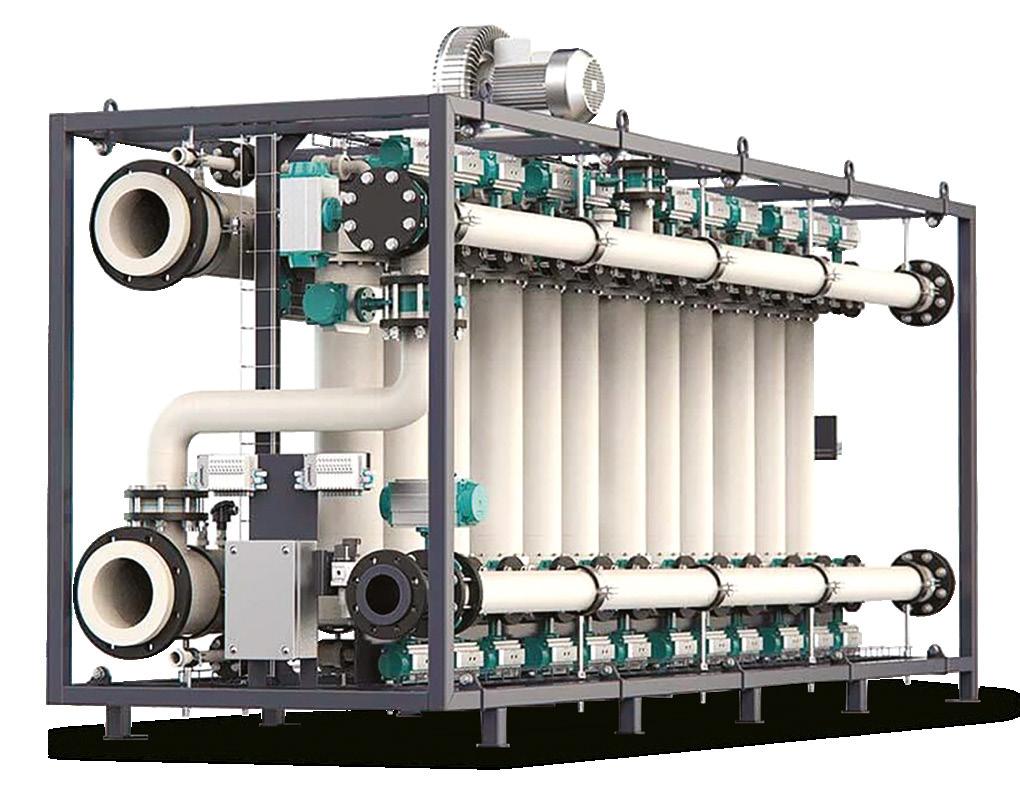
Liqtech offers a new innovative filtration system based on high quality silicon carbide ceramic filters providing absolute 3-micron filtration, high efficiency and reduced
Over the month of March, 10,519 participants swam a total of 97,642 kilometres, raising $3,429,625 to support youth mental health through the Laps for Life initiative.
Laps for Life have been swimming to raise money for youth mental health since 2019, with swimmers taking part all across Australia. The money will be used to help support ReachOut, the leading online mental health service in Australia supporting young people during tough times.
Challenging yourself to dive into a swimming routine has huge benefits for mental health and wellbeing. Moving your body through water gets all the major muscle groups involved, and kickstarts the flow of feel-good chemicals through the body – a healthy dose of endorphins and a splash of serotonin.
All this helps you get a better night’s sleep –important to feel stronger and more positive in the daytime. With a more regular sleeping pattern, you’ll wake up feeling rested and fresh. Regular swimming practice also help you feel more confident about your body and happier in your skin. Swimming is easier on the body than a lot of other forms of exercise – making it a great choice for people of all ages and fitness levels, including those with injuries.
Benefits for young people in need of help
More than one in three young people in Australia currently experience a mental health difficulty, and more than one million of them are not accessing professional support. Suicide remains the leading cause of death for 16-24 year-olds in Australia.
ReachOut helps young people feel better about
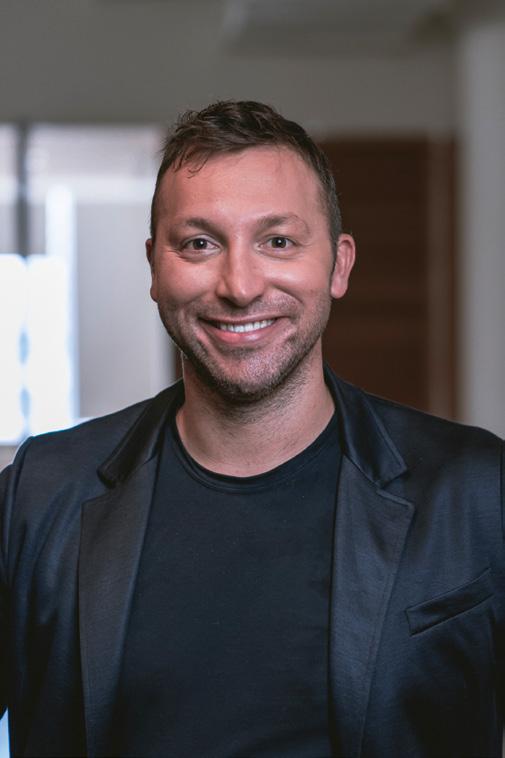 Ian Thorpe, Laps for Life ambassador
Ian Thorpe, Laps for Life ambassador
today and the future, no matter what challenge they’re facing. They provide a safe place where young people can openly express themselves, explore what’s happening in their lives, connect with people who understand their situation, and find the resources to help them manage their challenges now and in the future.
Anonymous, free and 100 per cent online, ReachOut has been designed specifically for –and with – young people. ReachOut Parents and ReachOut Schools provide valuable information, resources and advice to help parents, carers and educators to better understand the young people in their lives and to play an active role in their wellbeing.
Last year, ReachOut provided support to more than 2.5 million people.
Contact: www.lapsforlife.com.au
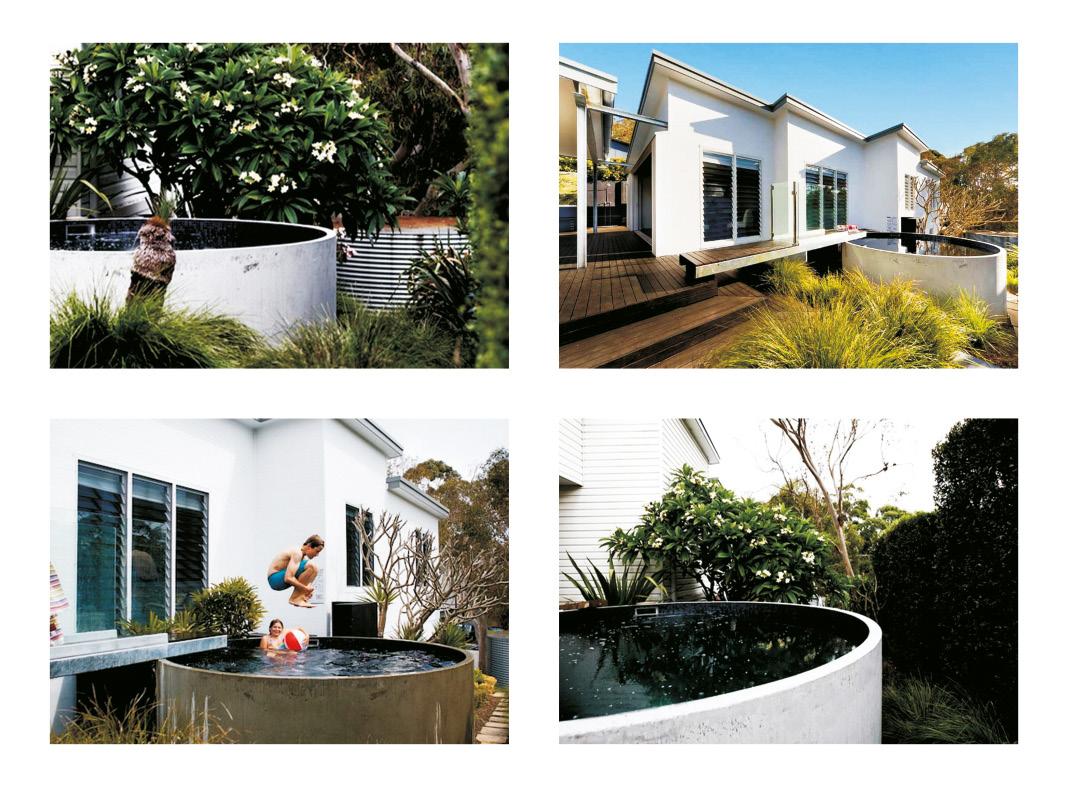

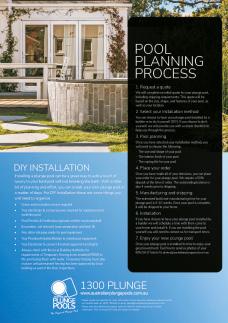
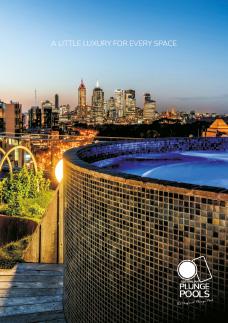
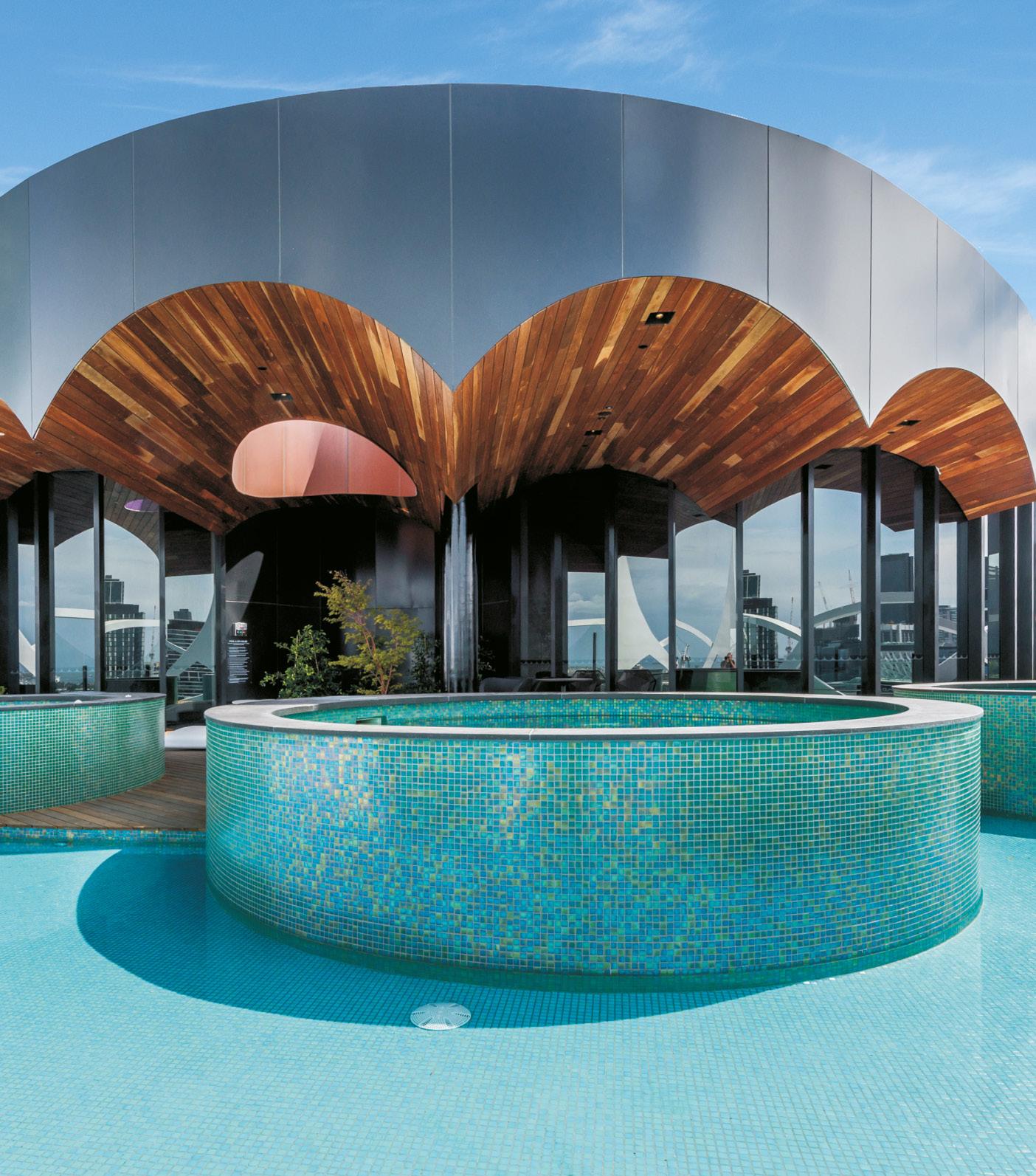
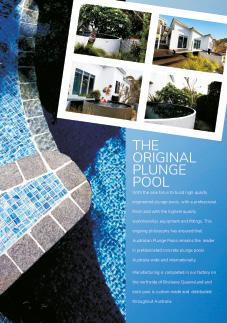
An eight-year old girl died when she was sucked into a swimming pool main drain in a US hotel. Aliyah Lynette Jaico was swimming in a lazy river at the Doubletree by Hilton Houston Brookhollow on March 23 when she disappeared, sucked into an unsecured open gap in the swimming pool flow system that measures between 300mm and 400mm wide and was six metres long. It took first responders 12 hours to retrieve her body, as they had to drain the water and break the concrete. The family’s attorney Richard Nava told Fox News Digital that he is suing all parties responsible for her death on behalf of her family.
Swimming Australia has renewed calls for the Brisbane 2032 Olympic Games to deliver a new permanent aquatic facility, saying plans for temporary pools are a missed opportunity to deliver a much-needed world-class aquatic facility for Brisbane. They believe investment in a new permanent aquatic facility could deliver lasting legacy benefits for swimming,
aquatic sports, the broader community and the Queensland economy.
The 2024 ASSA National Conference is set to take place at the Gold Coast Convention and Exhibition Centre from August 19 to 22, run in conjunction with the SPLASH! Pool & Spa Trade Show. Delegates can expect to gain valuable insights on navigating the evolving landscape of swim school management and education.
Contact: www.australianswimschools.org.au
ABC News reports that scientists and community leaders in Western Australia are concerned that rising temperatures will cause more freshwater waterways to harbour dangerous amoebas. Earlier this year, two natural freshwater swimming spots were closed in the state’s south west after Naegleria fowleri was detected, an amoeba that can cause a rare infection called amoebic meningitis. Water scientist Richard Theobold
told the ABC that as the climate gets hotter, more amoebas could be found in fresh water.
In January, Beenleigh Magistrates Court heard evidence of a dangerous series of safety oversights in 2022 at the Eagleby Aquatic Centre, culminating in a lifeguard receiving a non-fatal electric shock, The lifeguard was cleaning the pool with a nine metre aluminium pole which touched one of the 110kw high voltage electrical lines running over the top of the pool. Logan City Council pleaded guilty to one count of failure to comply with category two electrical safety duty/expose an individual to risk of serious injury, illness or death, and was ordered to pay more than $80,000 in fines and costs.
At the time of writing, Urbnsurf Sydney was filling the water and preparing to open. This will be the second Urbnsurf wave park established in Australia, joining Urbnsurf Melbourne.
Here at Daisy, we’re doing our best to help grow your business!
From product training to installation, Daisy is your full service pool cover partner. With the most extensive range of pool covers and rollers in Australia, finding the right solution for your customers has never been easier.
Find out more today at daisypoolcovers.com.au Committed
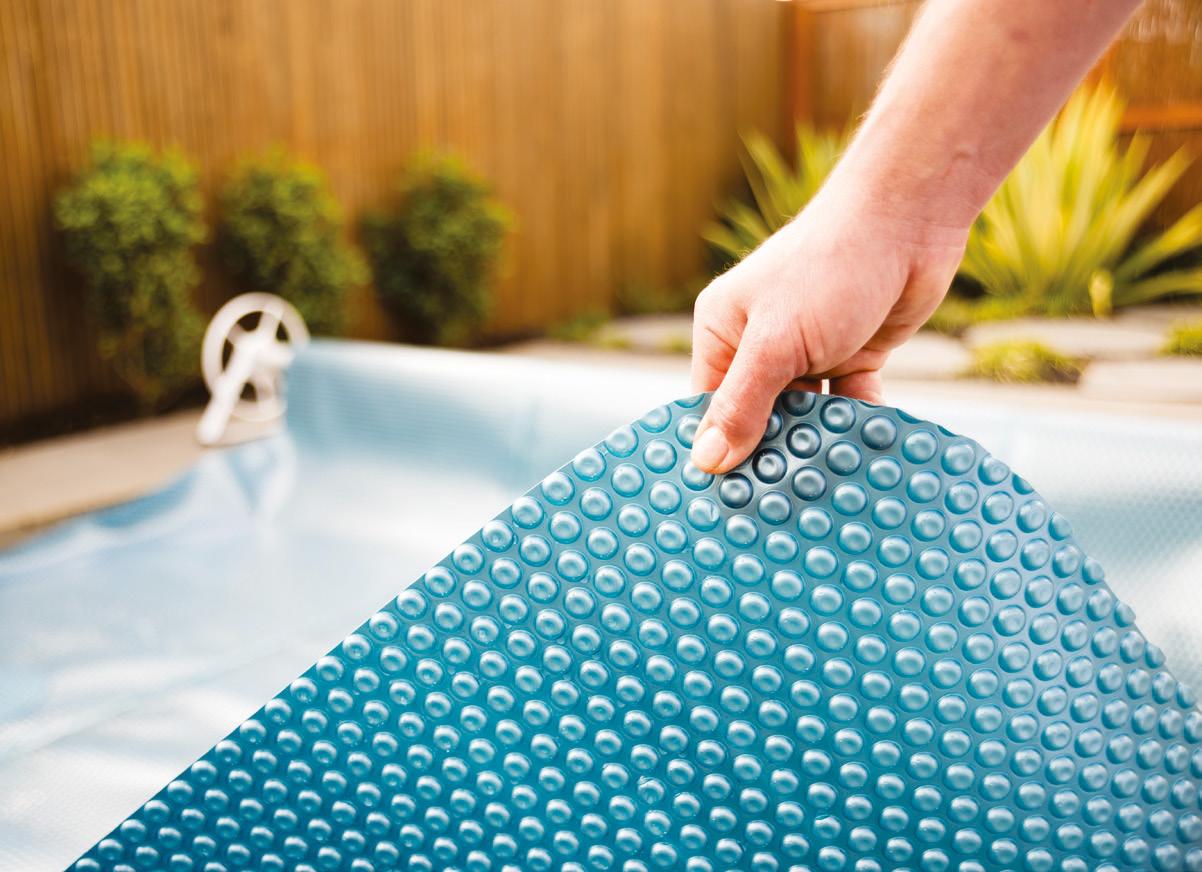
SPLASH! caught up with Wendy Donaldson, general manager of the Institute of Research and Learning (IRL), at the recent Sydney pool show, and found her keen to talk about IRL’s new Aquatic Technical Operator course.
“We’ve got a new online, selfdirected course to deliver to anyone who’s a technical operator in the aquatic space. It’s really good for anyone looking after any public swimming pool facilities as well as councils and caravan parks for example.”
There are five units of competencies clustered into three
different modules, and how long it takes will depend on your ability to be able to do the practical assessment.
“So you do need to have access to a facility, and you’ve got to demonstrate your competence in various different activities, so it could take you a couple of weeks, it could take you a couple of months. It’s self-paced, however our trainers are there to support you throughout the process, and they’ll help you every step of the way.
“The course gives the participants the ability to manage and monitor water quality and the aquatic facility; and there’s also a Workplace Health and Safety unit. Any swim
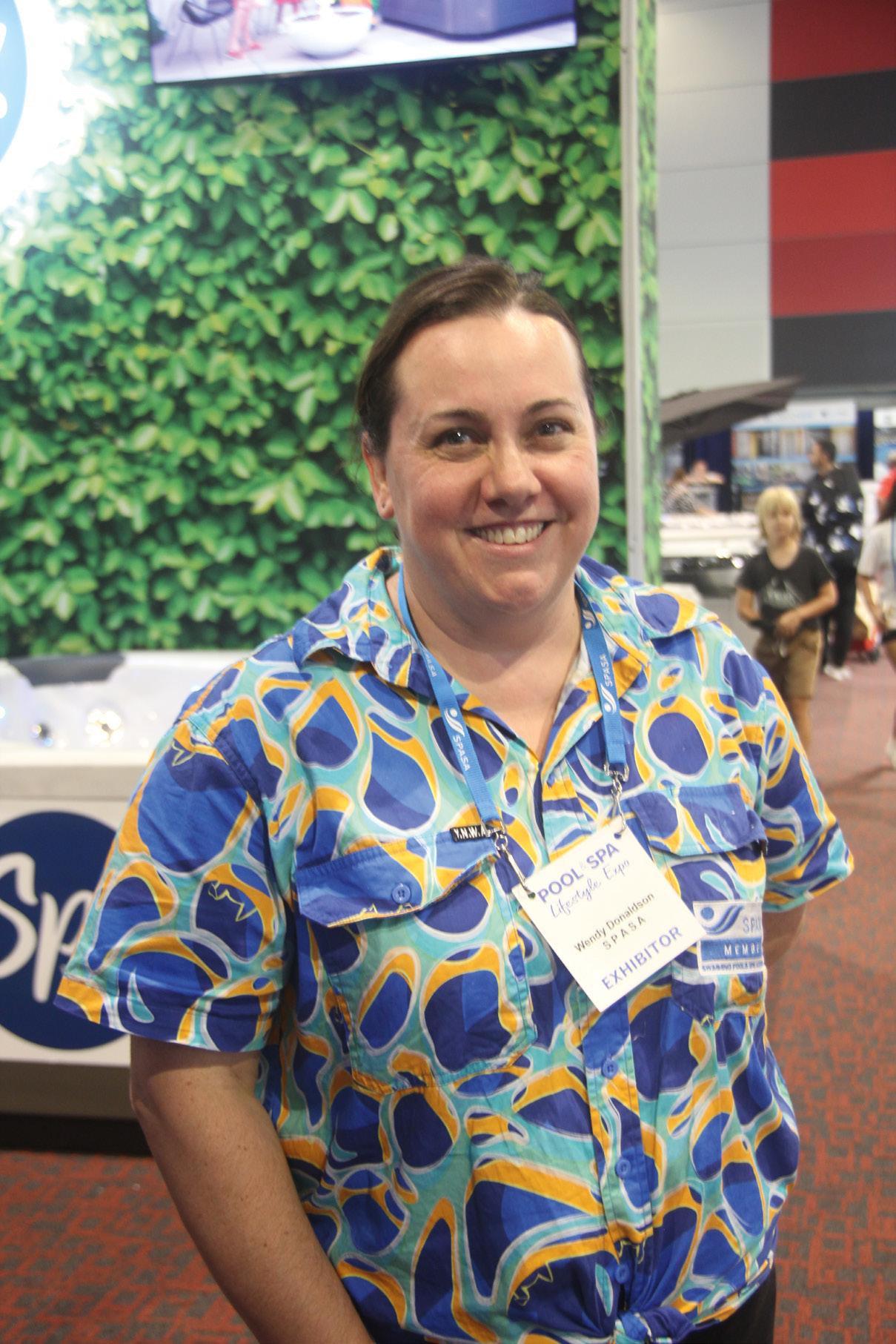
With dedicated apps for pool technicians and users, SEKO’s IoT solutions enable 24/7 access to data and settings for constantly clean, healthy pools.
• Live and historical data on demand
• Adjust programmes 24/7 via smartphone
• Minimise chemical consumption
• Reduce technician visits and maintenance requirement
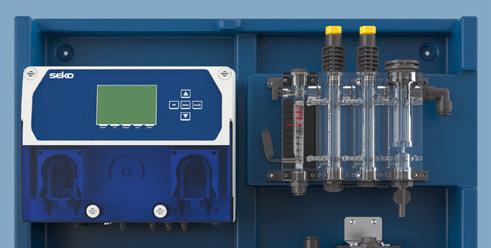

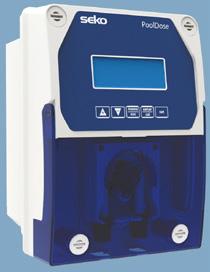
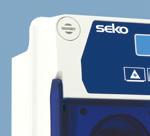
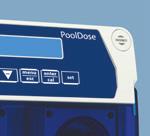
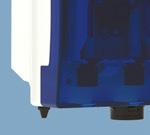
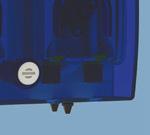
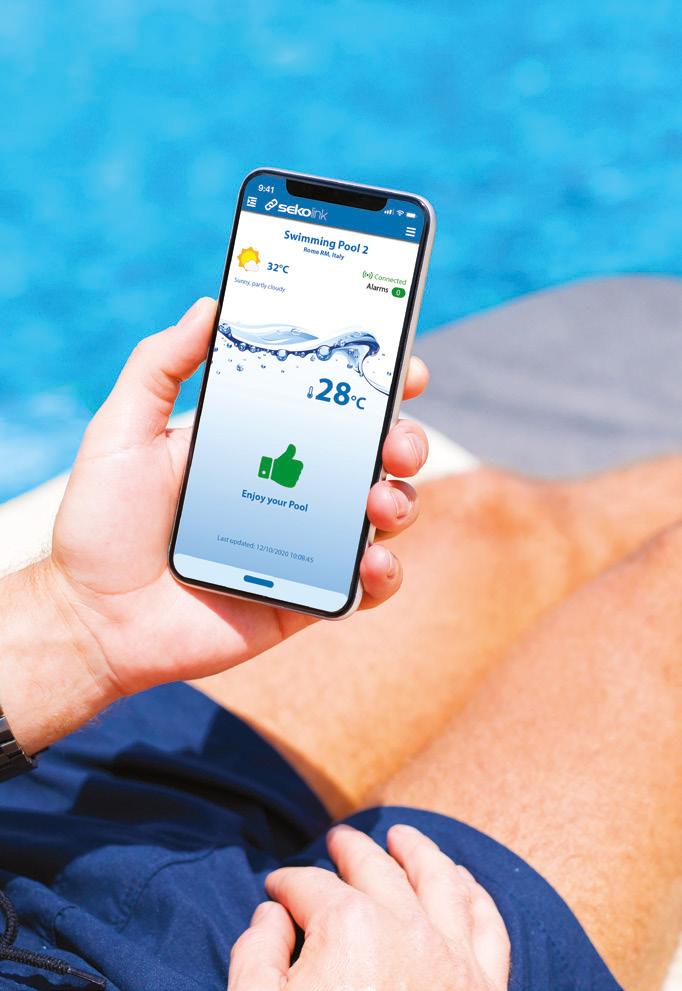 Wendy Donaldson, general manager of the Institute of Research and Learning (IRL)
Wendy Donaldson, general manager of the Institute of Research and Learning (IRL)
school or council pool, or pools in caravan parks will need to be trained so that they can manage those facilities.
“Some states require a licence, and the course is a prerequisite for the licence in some states.”
IRL will be promoting the course at the Country Pool Managers Conference in May in Forster.
“Our trainer Lee Salisbury will also be on a panel there,” says Donaldson.
The Country Pool Managers Conference will be held at Club Forster, Forster NSW, on May 15 to May 16. For more information go to www.countrypoolmanagers.com.au.
Undertaking the Aquatic Technical Operators Course enables industry participants to gain the skills and expertise needed to supervise and manage an aquatic facility as a certified pool operator. This includes technical skills on the operation of plant and associated
equipment and water quality maintenance procedures.
Units:
• SISXFAC009 - Coordinate facility maintenance.
• SISCAQU015 - Test pool water quality.
• SISCAQU016 - Manage pool water quality.
• BSBWHS308 - Participate in WHS hazard identification, risk assessment and risk control processes.
• SISCAQU017 - Monitor and maintain aquatic facility plant and equipment.
Course delivery:
• 100% online delivery – no classrooms or time off site required.
• Offer full online and over the phone support by industry trained professionals.
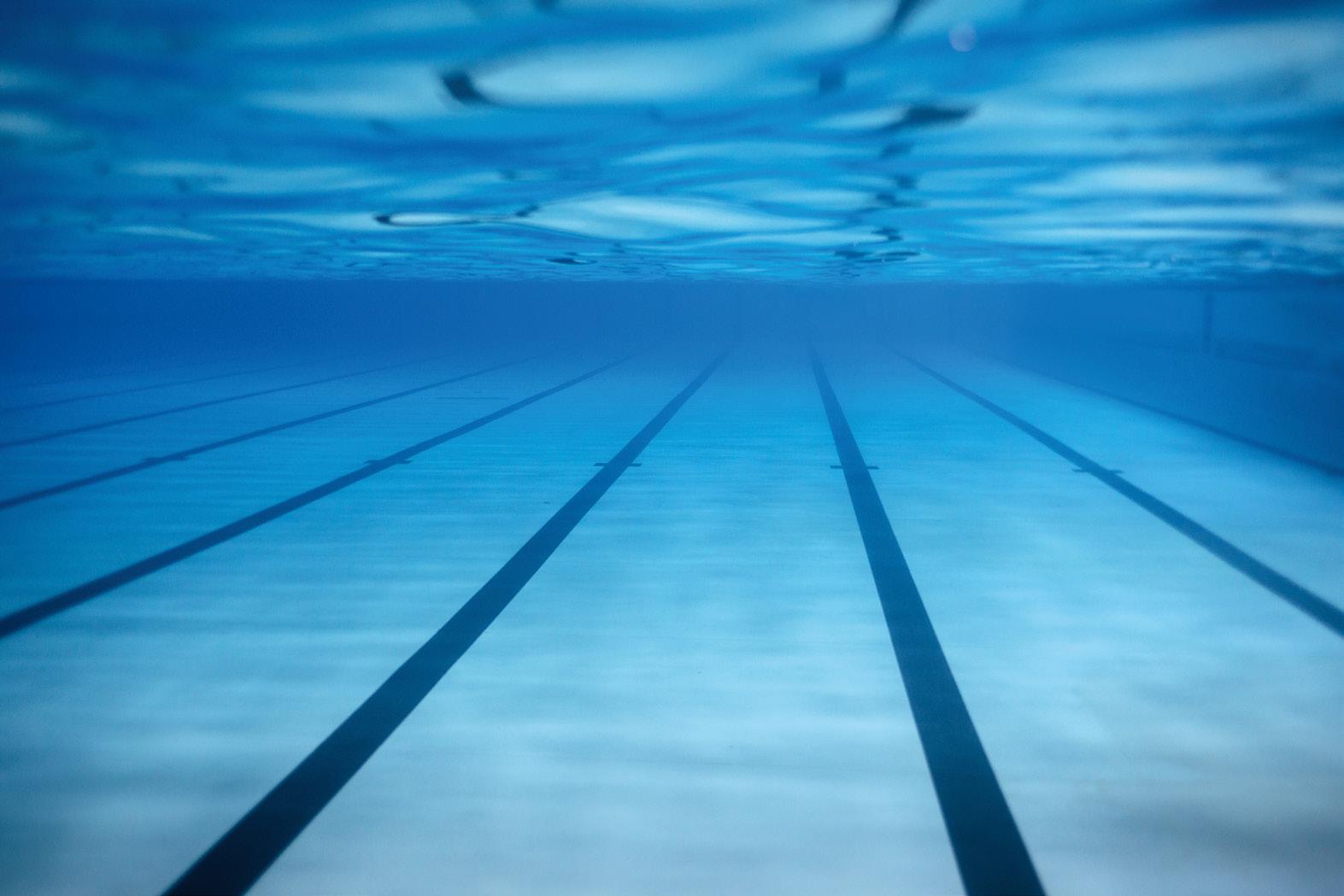
• Self-paced learning – no harsh deadlines for submission of modules.
• Brand-new, user-friendly training portal – easy for everyone.
The course gives them the ability to manage and monitor the water quality
“It’s really good for anyone looking after any public swimming pool facilities as well as councils and caravan parks for example.”
• Fun and interactive training and accreditation –makes learning achievable and much faster.
Contact: https://www.irlearning.com/ qualifications/aquatic-technical-operator
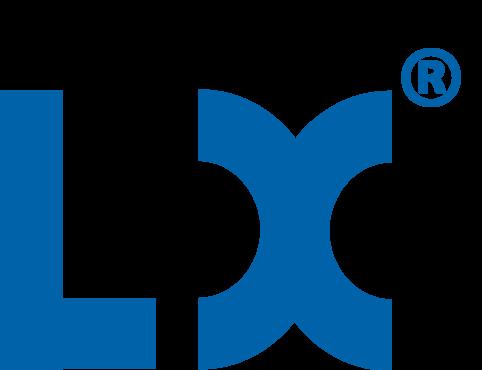
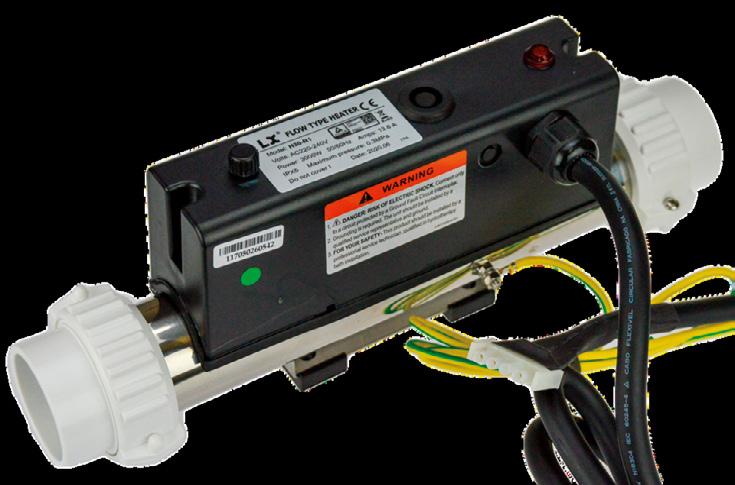
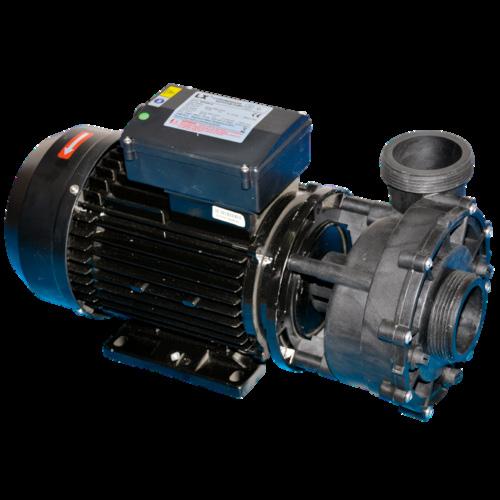


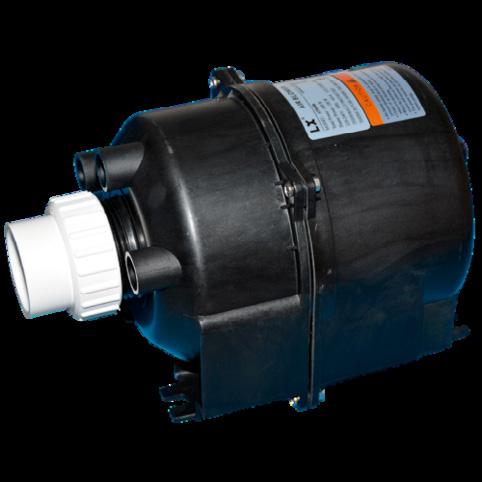
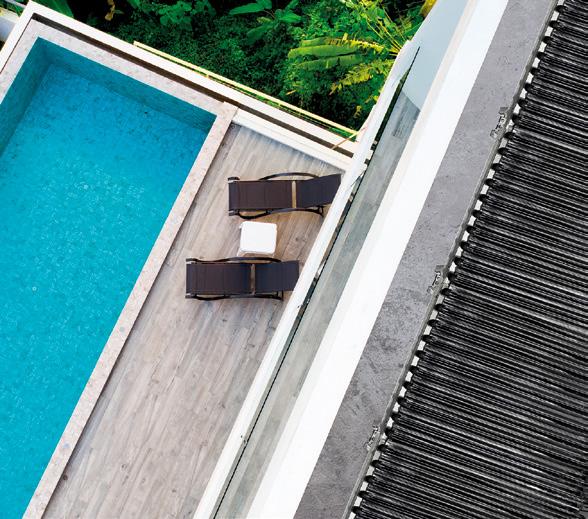
The Climate Care Certification Program is an initiative of the Swimming Pool & Spa Association of Australia Ltd (SPASA). It is the industry’s efficiency and sustainability certification program.
SPASA is proud to deliver an industry wide program to support, protect and promote the way the swimming pool and spa industry operates and strives for best practice sustainable solutions.
ü Purchase with confidence knowing that you are choosing a certified environmentally sustainable solution
ü Enjoy the benefits of choosing a solution which utilises water efficiency, energy efficiency, noise reduction measures, environmentally sustainable designs or efficiency/sustainability innovations
ü Reduce your overall carbon footprint whilst saving money
ü Highlight your product/system/installation’s environmentally sustainable qualities
ü Show your commitment to preserving the environment and to industry best practice
ü Demonstrate your investment in the industry’s sustainable future and inspire others to do the same
All Climate Care Certified products undergo independent third-party testing and/or verification to assess and report on claims being made such as water efficiency and energy savings.
Only credible and trusted local, national and international testing and verification bodies are considered by SPASA to ensure that claims being made on energy and water efficiency and sustainability are substantiated.

SWIMMING POOL & SPA
ASSOCIATION OF AUSTRALIA
TEL 1300 021 482
WWW.SPASA.COM.AU
One of Queensland’s most experienced and awarded swim centre operators, Rackley Swimming, has entered the New South Wales market by taking over the management rights of the pool at 62 Market Street, Smithfield.
The new management commenced swim classes in February with more than 1000 assessments booked for the opening week.
Chief operating officer Jay Clarke says Rackley Swimming aims to take on NSW with the same approach that has seen them grow to become one of the biggest operators in Queensland, and the multicultural suburb is the perfect place to dip their toe in the water.
“Our aim is to become a significant player in the NSW swim school market, and we are looking to replicate a similar approach to our South East Queensland framework with steady growth over a 25 year period,” says Clarke.
“We’re confident that with our dedication to quality programs and our passion for teaching, we’ll make a splash in no time.”
Commencing as a single swim school in Burleigh Heads back in 1997, Rackley Swimming has grown to employ more than 1000 staff and have more than four million
Rackley program have gone on to compete in the Commonwealth or Olympic Games.
Clarke adds that while NSW is the first expansion state, they are also eyeing other states for future expansion.
“We’re on the lookout for communities where our learn-to-swim programs can really make a difference,” he says. “We’re committed to bringing our swim family to the rest of Australia, ensuring that all kids have the chance to learn to swim and love the water.”
Smithfield is a suburb rich in ethnic diversity, and Rackley Swimming has employed a number of instructors from a range of backgrounds to contribute to more effective and culturally appropriate training, including Friday women-only classes established particularly but not exclusively for Muslim women.
Clarke says drowning is the third-leading cause of accidental death, and widespread teaching of water safety skills is the key to bringing these numbers down.
“In Smithfield we’ve welcomed a lot of families who have older children 10-plus who are true non-swimmers. Sadly, we’ve heard stories that in other swim schools
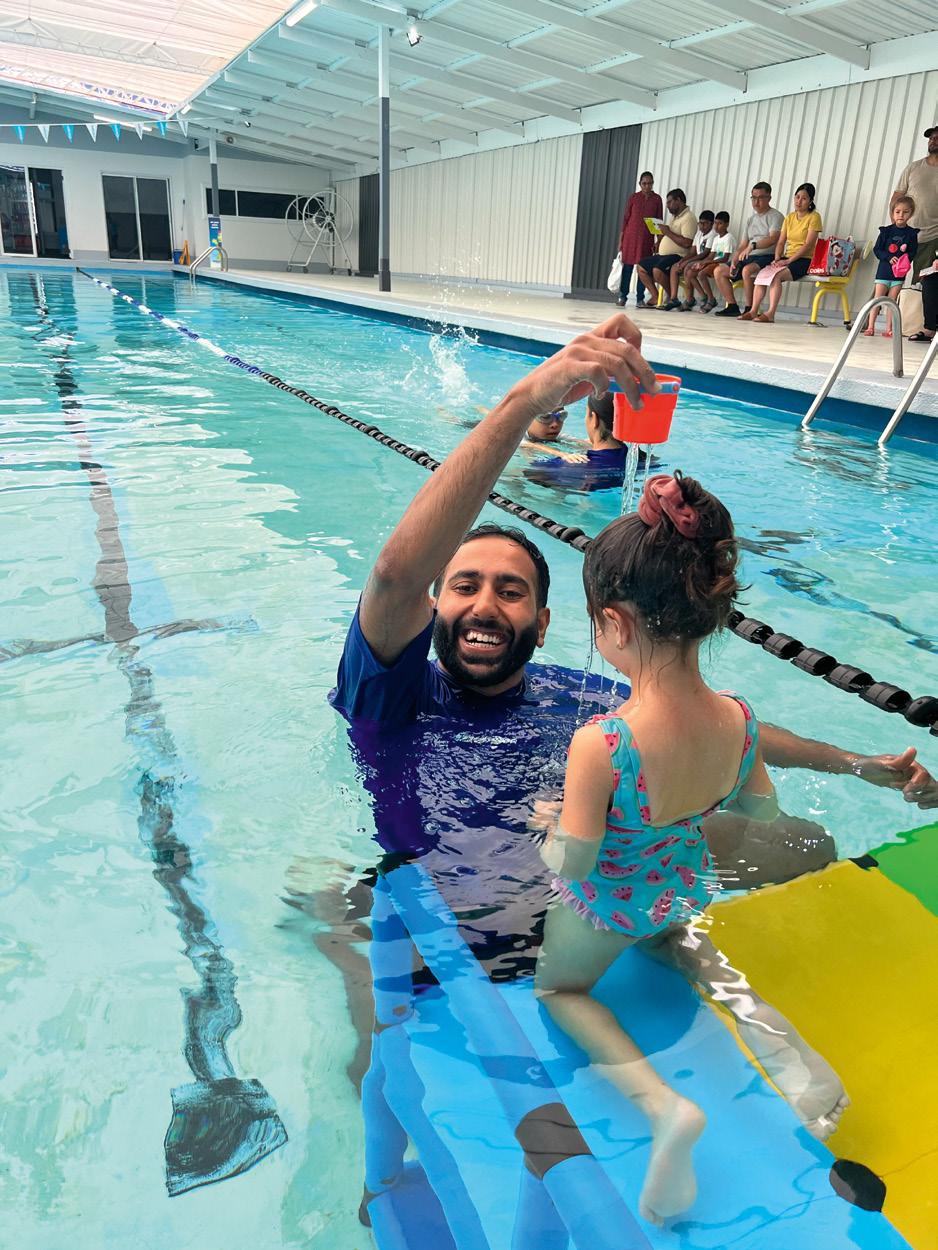
More than 1000 assessments were booked for the opening week
so we’ve adapted our levels to ensure these students (and adults) are able to learn alongside peers the same age to build their confidence as well as their skill,” he says.

Smithfield is very multicultural, with 11.4 per cent of the community coming from Syria, 9.2 per cent from Vietnam and nine per cent from Iraq. Of these, only 31 per cent speak English as the only language at home. Rackley Swimming has employed a number of instructors from these backgrounds to contribute to more effective and culturally appropriate training.
“We recognise that migrants, especially those who come from landlocked countries or areas where swimming is unaffordable or seen as a luxury leisure activity, face a multitude of barriers that means they may not be as confident swimmers.
“Our incredibly diverse team of 19 swim instructors herald from a range of cultural backgrounds. More than half of our team are proud first or second generation Australian immigrants including Iraqi, Taiwanese, Malaysian, Bolivian, Fijian Indian, Indonesian, Laos-Thai and Turkish,” he says.
Contact: www.rackleyswimming.com.au
There has been renewed pressure put on government following a push from Royal Life Saving to address the issue of aging swimming pool infrastructure.
As reported in SPLASH! 145 (page 71) the 2022 State of Aquatic Infrastructure in Australia Report found that the average Australian public pool was built more than half a century ago, and needs serious refurbishment or replacement.
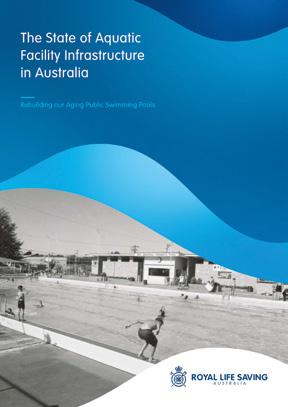
Now, Royal Life Saving’s RJ Houston, general manager for capability and industry, says that without significant and sustained investment, as many as 500 pools may need to close within 10 years.
While the life expectancy of a public swimming pool is 50 years, they can be serviceable beyond this timeframe.
He says that sadly, many community pools are facing multiple threats –changing demographics, lack of local government resources, increasing energy and building costs, and the impacts of a changing climate.
“It is much more than rusted and broken pipes, cracks in pool tiles, and porous concrete,” says Houston. “Many older pools are leaking significant amounts of water, leading to increased costs, environmental damage and concerns about water quality and safety.”
While local government shoulders the greatest burden, many councils are unable to meet the upgrade costs without financial assistance from state and federal governments.
“Research shows that local governments contribute 64 per cent of all funding, and regional councils are particularly vulnerable and often face the dilemma of pool closures.
“Without a more structured approach to swimming pool investment, more children will miss out on swimming lessons, communities won’t have a safe place to swim laps or cool off during summer, and many will be forced to swim in rivers and lakes,” he says.
He says that as communities are forced into a complex web of grants, securing funds becomes more challenging, especially in regional and outer metropolitan areas.
“Communities are often paralysed by competing agendas – laps versus lessons, families versus the needs of an ageing population. The system creates winners and losers. This lack of a cohesive framework opens the door to suboptimal decision-making, depriving some communities of access to safe swimming facilities and essential water safety skills.”
Royal Life Saving is advocating for a strategic, long-term solution.
“The benefits of public pools are clear, and decisive leadership is needed. There is a strong case for an investment fund dedicated to aquatic facility upgrades and new builds. Public funds should be allocated to function over form and aim to ensure communities maximise health and social benefits,” says Houston.
He says that analysis is needed for regional and metropolitan communities to forecast the short, medium and long terms needs. Funds should be made available for feasibility and planning stages to ensure that projects are shovel-ready, carefully considered, and in line with community needs.
Royal Life Saving proposes five principles for investment in swimming pool infrastructure:
• Provide funds to support regional and metropolitan area gap analysis.
• Provide funds to support feasibility and fit-for-purpose studies early in process.
• Target and plan funding for refurbishments and new builds in growing areas.
• Prioritise functionality and community need over aesthetics and interest groups.
• Link development funds to established health and social indicators.
The report from Royal Life Saving has assessed the state of aquatic facility infrastructure across the Australian community.
The report found that:
• The average Australian public pool was built in 1968.
• 500 (40 per cent) of public pools will reach the end of their functional lifespan by 2030.
• $8 billion is needed to replace those 500 aging public pools.
• A further $3 billion will be needed to replace facilities ending their lifespan by 2035.
• Aging public pools are predominantly servicing regional areas currently, who are inherently less likely to be positioned favourably to replace these assets when they expire shortly.
• Pools generate $9.1 billion annually in social, health, and economic benefits
• There are over 333 million visits to public pools each year.
Additional findings include:
• 64 per cent of all renewal or new aquatic facility construction is currently financed by local government in Australia.
• 77 per cent of aquatic facilities in regional areas are publicly owned.
• 79 per cent of aquatic facilities located in areas with the lowest Socio-Economic Indexes for Areas (SEIFA) decile are publicly owned.
• 74 per cent of aquatic facilities located in areas with the highest SEIFA decile are privately owned.
Many regional councils struggle to afford to maintain or replace swimming pools, and increasingly councils are considering closing their pools. Closing community pools is inherently very unpopular and consistently aggravates community sentiment and mobilises communities towards involvement in the political process.
This means that deliberate and considered action is needed to plan for the future aquatic infrastructure needs of Australia.
The report identifies key options for consideration including:
• Working with the private sector to provide services beyond learnto-swim so that they may be able to make privately owned facilities available for recreational, leisure and fitness swimming to the broader community.
• Exploring how schools might build and share their aquatic facilities.
• Encouraging and facilitating greater cooperation between councils.
• Exploring how sports clubs and associations who may seek the use of aquatic facilities might also consider collaborative approaches to the development of such facilities.
Read the full report at https://www.splash.online/articles/links153
The MHS SERIES started in 1976 and is now available with filter areas from 1.5m² to 8.0m²
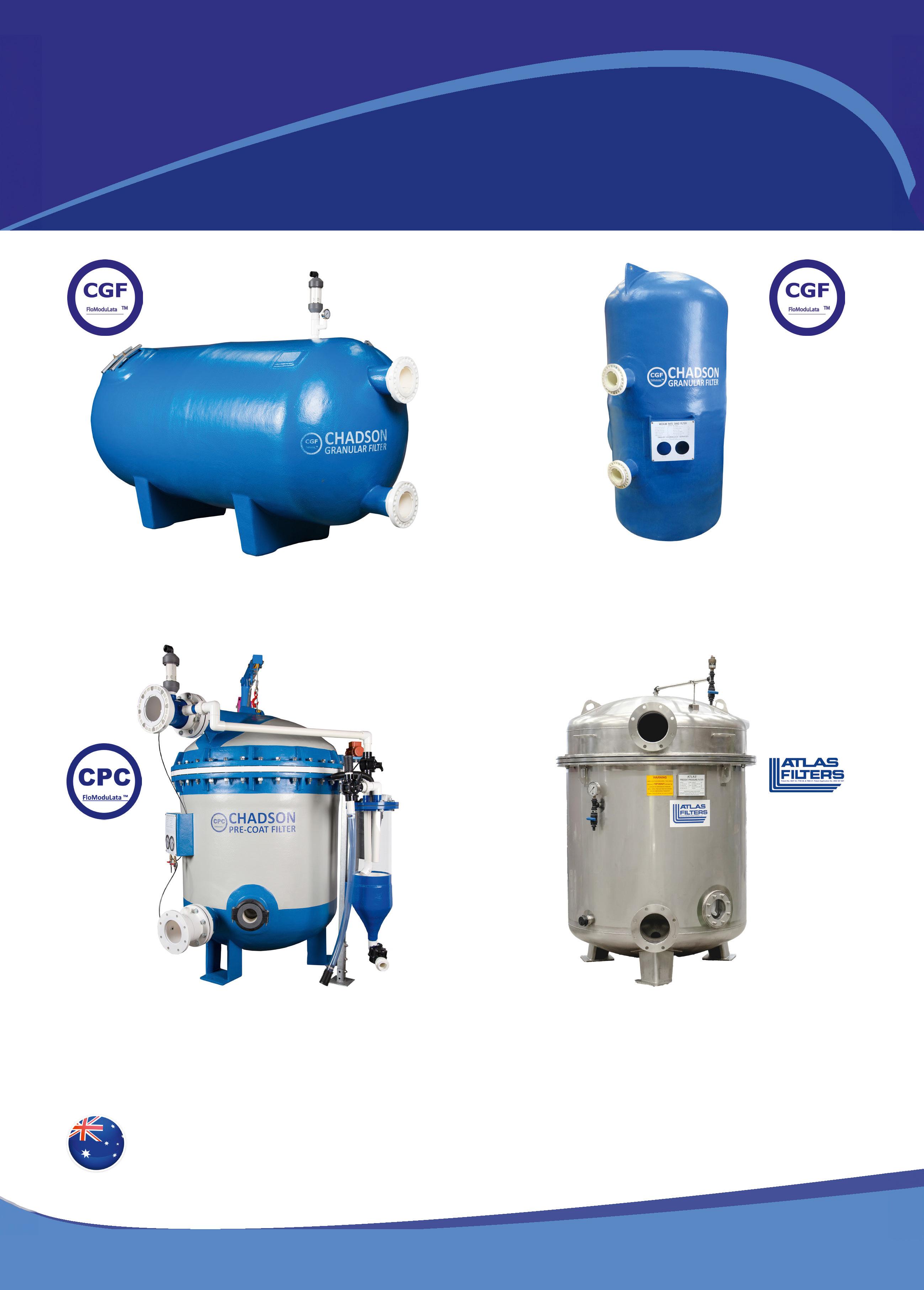
The VSF, VDF, and VCF SERIES have diameters ranging from 850mm to 2200mm with bed depths and freeboard to suit your needs.
The CPC SERIES is a Regenerative Media Filter made from high-tensile Fiberglass with filter areas from 12m² to 123m².
The PCT SERIES is a Regenerative Media Filter made from Grade 316 Stainless steel with filter areas from 7.5m² to 75m².
Our Filters are proudly designed & manufactured in Australia. Locally made filters provide many tangible benefits for pool Owners, all levels of government, the aquatics industry and potentially all Australians. Apart from anything else, buying Australian-Made makes good economic sense.

Regenerative filtration, also called precoat filtration or ultra fine filtration (UFF) is one of the most effective systems in use for commercial aquatic centres.
The two main types of filter media – or filter aids as they are also called in the regenerative filtration market – are diatomaceous earth (DE) and perlite.
With precoat filtration, the media is hydraulically coated to the elements inside the filter body called socks (or candles) or Flextubes, and held in place by hydraulic pressure and water flow.
“The type of filter aid used is a client’s choice.”
SPLASH! spoke with representatives of the two major precoat suppliers in this market: Chadson Engineering and Neptune Benson Australia, to discuss their systems and their preference of media.
It is important to acknowledge that these comments are opinions from suppliers, not definitive information from regulatory or health bodies. As always, prospective clients and their agents should carry out due diligence in selecting equipment and filter aids.
It is also worth noting that both forms of precoat filtration are highly effective in doing the job of eradicating pathogens from swimming pool water, each removing more than 99 per cent of Cryptosporidium oocysts.
One issue is the classification of DE as a Class 1 Carcinogen, and the opinions on this topic from the two suppliers are discussed more fully below.
Water is drawn through the coated elements (or host septa) and impurities are removed by the filter media attached to it. This filter media is regenerated periodically to refresh it between backwashes. The method by which this happens varies between the types of filter, as does the method of removing and replacing the media.
While the filtration method is highly effective in removal of pathogens, the way the dry material is handled is important to satisfy occupational health and safety (OH&S) requirements.
Greg Jones is the national sales and marketing manager at Chadson Engineering. Chadson manufactures two forms of regenerative media filters – the Australian-made stainless steel Atlas PCT series and the fibreglass (FRP) CPC series. Atlas and CPC filters use predominantly DE but can also use perlite filter aid.
Chadson has about 1200 assorted precoat filters presently in service in Australia, ranging from elite facilities such as the Gold Coast Aquatic

Centre to privately owned learn to swim centres –these include some early Australian-made filters (namely the PCT series) continuing to provide valuable service after 25 years of continuous use to installations such as Sydney Olympic Park Aquatic Centre.
As the exclusive Western Australian distributor for Quipmaster International, Chadson’s experience with precoat filters and replaceable filter aids started in the early 1970s. The patented concepts at that time (like replaceable filter bags and anti-balloon clips to enhance cake release) still have relevance with Chadson’s current-day commercial precoat filters.
Jones says that while Chadson doesn’t market or sell precoat filter aids, the company’s opinions on replacement filter aids are based on 50 years of experience.
Grahame Bateman and Brad Weir are principals of Neptune Benson Australia, supplier of the number one selling regenerative filter in the world – Xylems’ brand Neptune Benson Defender Filters – which were introduced in 2004 and have more than 6000 installations globally.
Defender Filters are used across Australia by major aquatic centres and major recreational water businesses such as Wet’n’Wild, Whitewater World, SeaWorld and Raging Waters.
“DE has been widely used in many industries and applications for more than 75 years,” says Jones.
“Apart from swimming pools, DE has proven to be a safe and highly efficient means of removing contaminants from food and beverages including oils, fruit juices, syrup, sugar, honey, wine and beer.”
While natural DE is used in a variety of household products, it is only the calcined DE that is used in pool water treatment.
“The critical difference is that natural (pure) DE is amorphous silica (a non-crystalline form of silicon dioxide). The potential health issue only
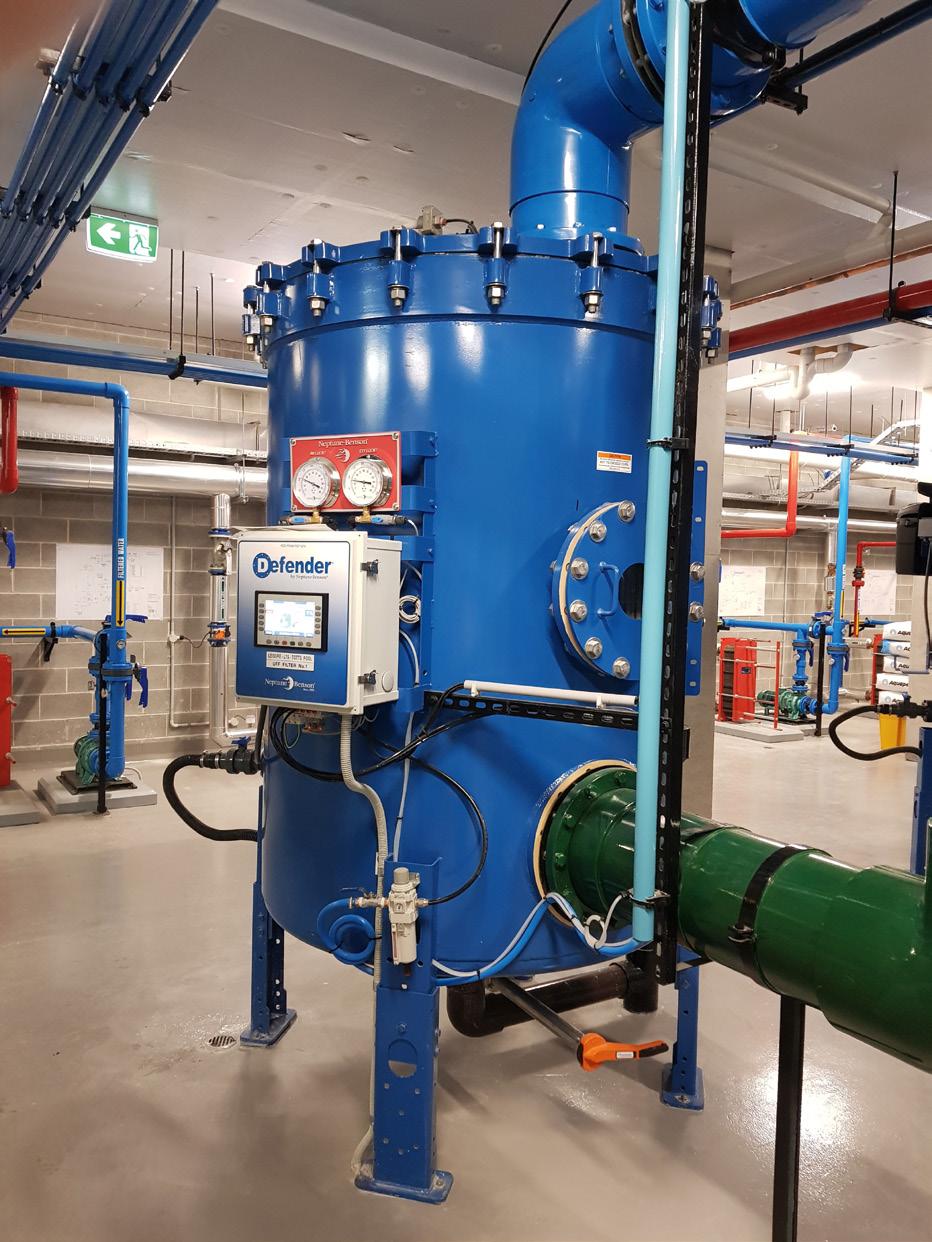
arises when natural grades of DE are processed and calcined (heated to elevated temperatures) to enhance the performance of the natural DE as a filter aid,” says Jones.
Calcining natural DE at temperatures of about 1000°C removes unwanted organics to produce a pure and chemically inert filtering media. This “pyro-process” also agglomerates natural DE to the desired particle size with a distribution necessary for different filtration requirements.
During calcination, natural amorphous silica undergoes a “physical transformation” to form various levels of crystalline silica in the form of cristobalite and quartz.
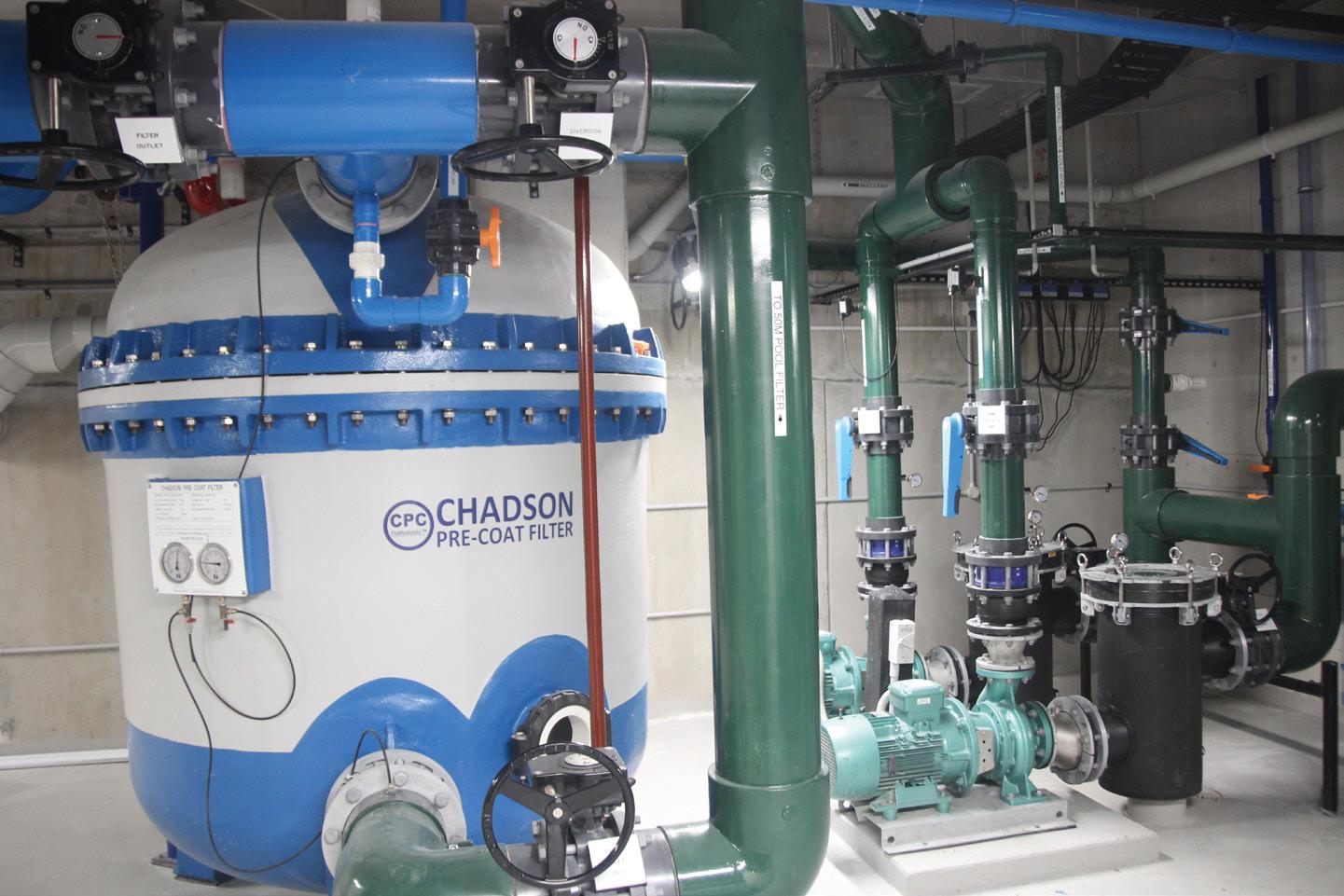
Flux-calcined grades are also processed at elevated temperatures using a fluxing agent like soda ash (sodium carbonate). During flux calcination, the fluxing agent fuses individual diatoms to increase their particle size while enhancing their unique cell structure.
To attain the level of permeability and the median pore size (MPS) best suited for swimming pool use, DE filter aids are commonly flux calcined. As with calcined grades, some amorphous silica undergoes a “mineralogical” transformation to create crystalline silica and quartz.
In 1997, the International Agency for Research on Cancer (IARC) classified calcined and flux calcined DE filter aids as a Group 1 Carcinogen.
Jones says that at this time, DE filter aids joined the ranks of other common substances such as cement dust, plasterboard plaster dust, crystalline silica beach sand, filter sand, granite dust, road dust, kitty litter, sawdust, cadmium, chromium, coal, coke and diesel exhaust gas – products that remain in widespread use.
The Group 1 Classification (calcined and
ABOVE: Clean healthy water is the aim BELOW: A Chadson CPC filter in situ at the Sporting Club of Sydney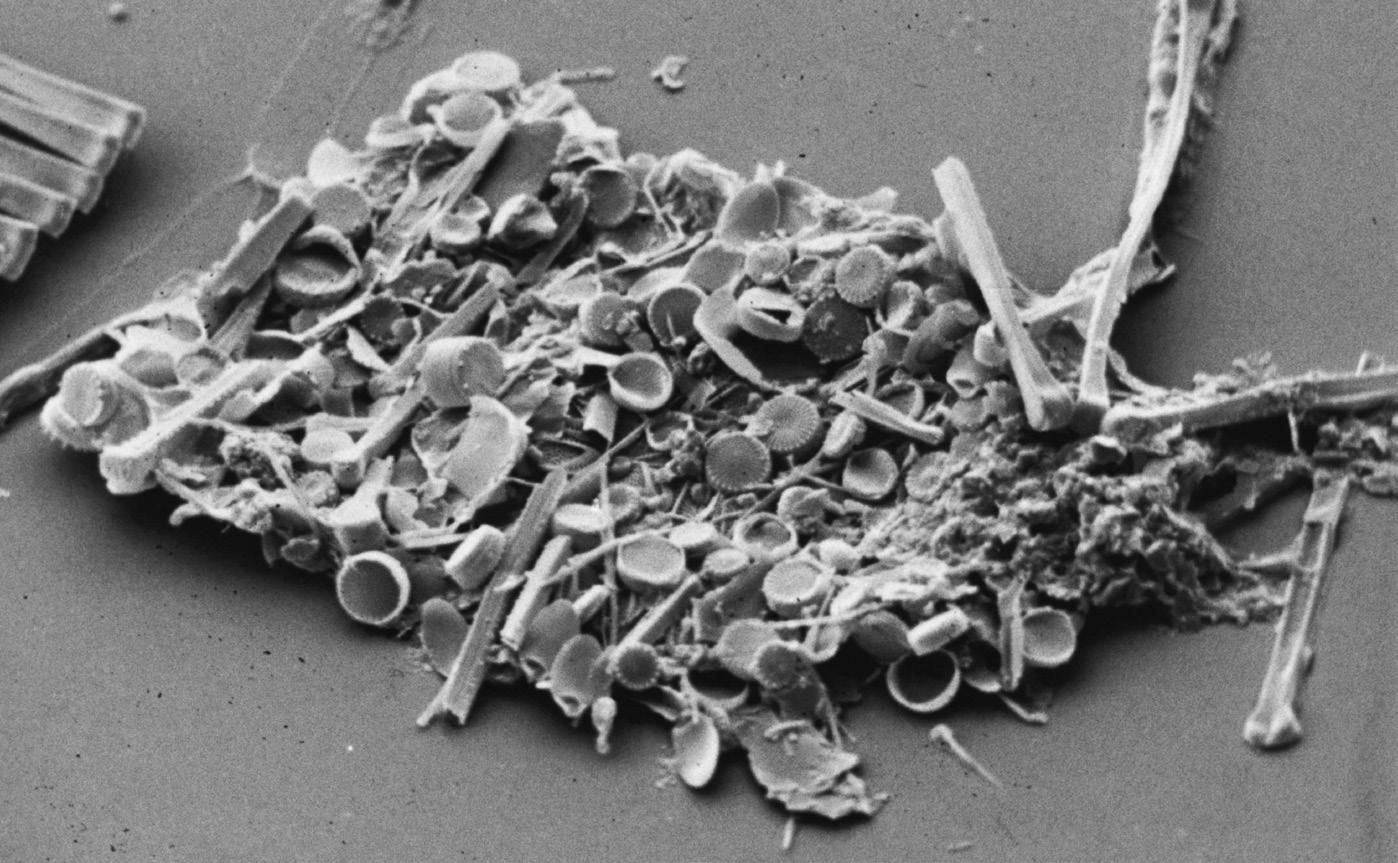
flux calcined DE) is due to the risk of inhaling cristobalite and quartz dust. The extent of cristobalite and quartz found within a processed DE filter aid will vary significantly depending on the source of the ore (freshwater or seawater), the location of the mine, and the processing method. However, cristobalite is generally between 40 per cent and 70 per cent by volume in calcined DE.
He says this probability during opening and disposal can be mitigated with simple PPE like dust masks while following the instructions printed on the supply container, and that these tasks are manageable and are generally recognised as safe (GRAS).
“One common mistake when handling DE filter aids is crushing empty supply containers,” he says.
“This can create an unexpected release of dust. Common sense and best practice suggest empty supply containers are best rolled or folded up.”
It is essential that any release of DE into the environment be immediately and appropriately cleaned up, including the use of PPE.
Jones says that to further minimise risk, plant operators sometimes wet the supply container or hose it down before rolling or folding it for disposal in a sealed plastic garbage bag.
He also says that, as stated in Chadson’s published literature, precoat filters are best selected to use the full contents of the supply box/bag. With an application rate ranging from 0.55 kg/m2 to 0.75 kg/m2, considerable latitude is available to select filters that consume the entire contents of the supply containers.
“One common mistake when handling DE filter aids is crushing empty supply containers.”
“Notwithstanding IARC’s classification, crystalline silica minerals are among the world’s most abundant,” he says. “They account for over 12 per cent of the earth’s crust. They exist in rock, sand and soil. In their daily lives, most people encounter crystalline silica in the form of quartz and or cristobalite.”
Jones says that the classifications made by the IARC are not intended to distinguish usage or the application. For example, with calcined or flux calcined DE filter aids, no distinction is made between persons involved with the day-to-day mining and processing of DE filter aids, compared to users who may only have occasional exposure with comparatively small quantities.
In Australia, the exposure standards for DE filter aids are set by the National Occupational Health and Safety Commission (NOHSC) and the Australian Dangerous Goods (ADG) Code. Some MSDS and SDS used within Australia nominate a maximum threshold in concentration and exposure times, although it is noted that there are single event exposure figures that if exceeded may cause disease in humans.
Jones says that for commercial swimming pool use, exposure is limited and infrequent and the amount of filter aid used for swimming pool filters is comparatively small. However, overall, more than a million kilograms of filter aid is used throughout Australia per year.
Jones says that the probability of exposure to the dry DE powder can be limited to the opening of the supply containers and the disposal of empty supply containers, thanks to the availability of dustless precoating (albeit dry or wet media transfer).
“Other issues like turnover rate and flux rate (m3/hr/m2) can also provide an opportunity to select filters that use the full content of a given number of supply containers, albeit bags or boxes. In other cases, any partially used bags or boxes must be stored, closed, and sealed.”
He adds that a recent sales study indicates a growing trend for end users to purchase supply containers that result in the full content being consumed.
Additionally, he says that for a typical 50 metre pool, a filter run time of four weeks is an accepted norm, using a total filter area of 180 m2 regenerated once a week. The use of DE would be about 1200 kg/ pa, requiring only 12 backwashes a year. Smaller pools may require even less media use.
A diatomaceous earth safe injection (DESI) system is also an option available to some owners and operators.
George Biniares (from National Spare Parts in Sydney) developed the DESI system in response to market demand for the high process efficiency of DE without confronting any possible OH&S handling issues.
“The DESI system is like using an exchange gas cylinder for your home barbecue,” says Jones. “When you need additional gas, you exchange your empty bottle for a new one filled with LP gas by others.
“The DESI system obviates the need to purchase, store, open and dispose of empty supply containers.”
The convenience of a DESI system does impose an additional cost and Biniares explains that the system is currently only operational in Sydney, Canberra and the South and Central Coasts of New South Wales, due to the logistics of preparing the vessels in a controlled manner and
ABOVE: A microscopic view of DE filter media, showing the variety of particle shapesdistribution timeframes. However, he is open to setting up operations through arrangements with other parties in different locations.
“We can confidently say that this system is the best method of dust-free precoating as there is no need for packaging materials (bags/boxes) to be stored by the end user,” Biniares says.
Jones also says that in 2017 EP Minerals launched a new grade of DE called CelaPool. Although Chadson has not yet tried it, he says it is a low-dust variety and is promoted as easy to use.
Perlite is a generic name for an amorphous volcanic alumina–silicate rock that expands by a factor of 4 to 20 when rapidly heated to 760°C to 980°C. It is used by many regenerative filter manufacturers around the world.
Jones says no discussion of filter aids could be complete without mentioning perlite.
Due to its composition (alumina silicate), perlite is promoted as a healthier filter aid because it does not have any detectable levels of crystalline silica. It is not registered as a dangerous good, but is an irritant and you must avoid generating and inhaling dust.
Jones says that perlite does have the advantage of a lower bulk density, meaning you get a greater volume of media for the same weight.
In addition to pool filtration, perlite is also used extensively for filtering in the food and wine industry across Australia
However, Jones says that Chadson’s published view is that the type of filter aid used within one of their PCT or CPC filters is a client’s choice. Jones qualifies this statement by saying he is aware of projects that use different grades and brands of perlite with satisfactory results, but also others that led Chadson clients to revert to DE.
There are other widely recognised filter aids like powdered cellulose (Purifiber, Arbocel and others). Being a natural organic fibrous material, these filter aids do not have any health hazards. They are biodegradable and environmentally safe.
“The main concern with cellulose filter aids is their poor ‘cake release’ properties. For this reason, cellulose filter aids are considered better and more suited for non-regenerative, vacuum and or drum-type filters.”
The other major manufacture of regenerative filtration systems used in Australia is Neptune Benson, owned by US-based Xylem/Evoqua Water Technologies, who make and market the Defender system.
They exclusively specify perlite as Defender’s filter aid, and Grahame Bateman is an enthusiastic advocate for perlite, saying that Neptune Benson has been around for 65 years, and in that time they have tried several media types, including DE, and are satisfied that perlite is preferable.
“Neptune Benson has been manufacturing commercial pool filters since 1957,” he says, adding that over that time they undertook
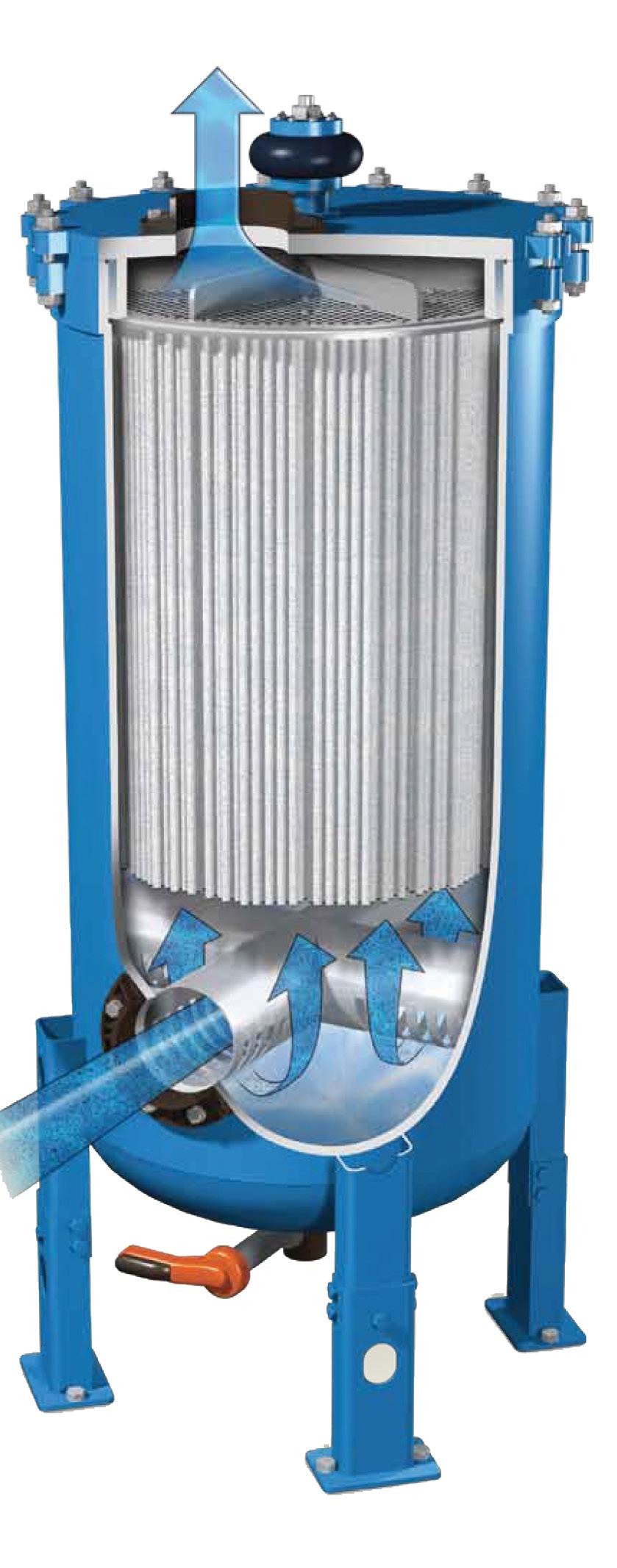
extensive scientific research into pool filtration and in the past had used DE filters of both the pressure and vacuum variety.
“After concerted research and testing it was found that perlite offered superior performance and critically, was safe compared to DE and as such selected as the media of choice for Defender Filters.”
He says that the majority of global manufacturers of regenerative commercial swimming pool filters use perlite compared to DE, and that the geographic market reach of perlite is also much greater, covering every continent.
“There are approximately 14 recognised ultra fine filter manufacturers globally,” he says. “Of these, 12 use perlite and only two use DE.”
He cites perlite’s performance and its safer handling as reasons for its popularity.
Bateman also refers to a Safe Work Australia statement that where a risk exists in a workplace and a safe or safer alternative is available then the risk should be eliminated and the safer option used, adding that perlite is a safer alternative to DE and should be considered given potential insurance industry scrutiny.
Additionally, Bateman says that DE requires further disposal restrictions as it aggregates differently to perlite, which also affects overall cost.
“Perlite is classified as a safe ‘nuisance dust’ by both Safe Work Australia and the World Health Organisation.”
ABOVE:
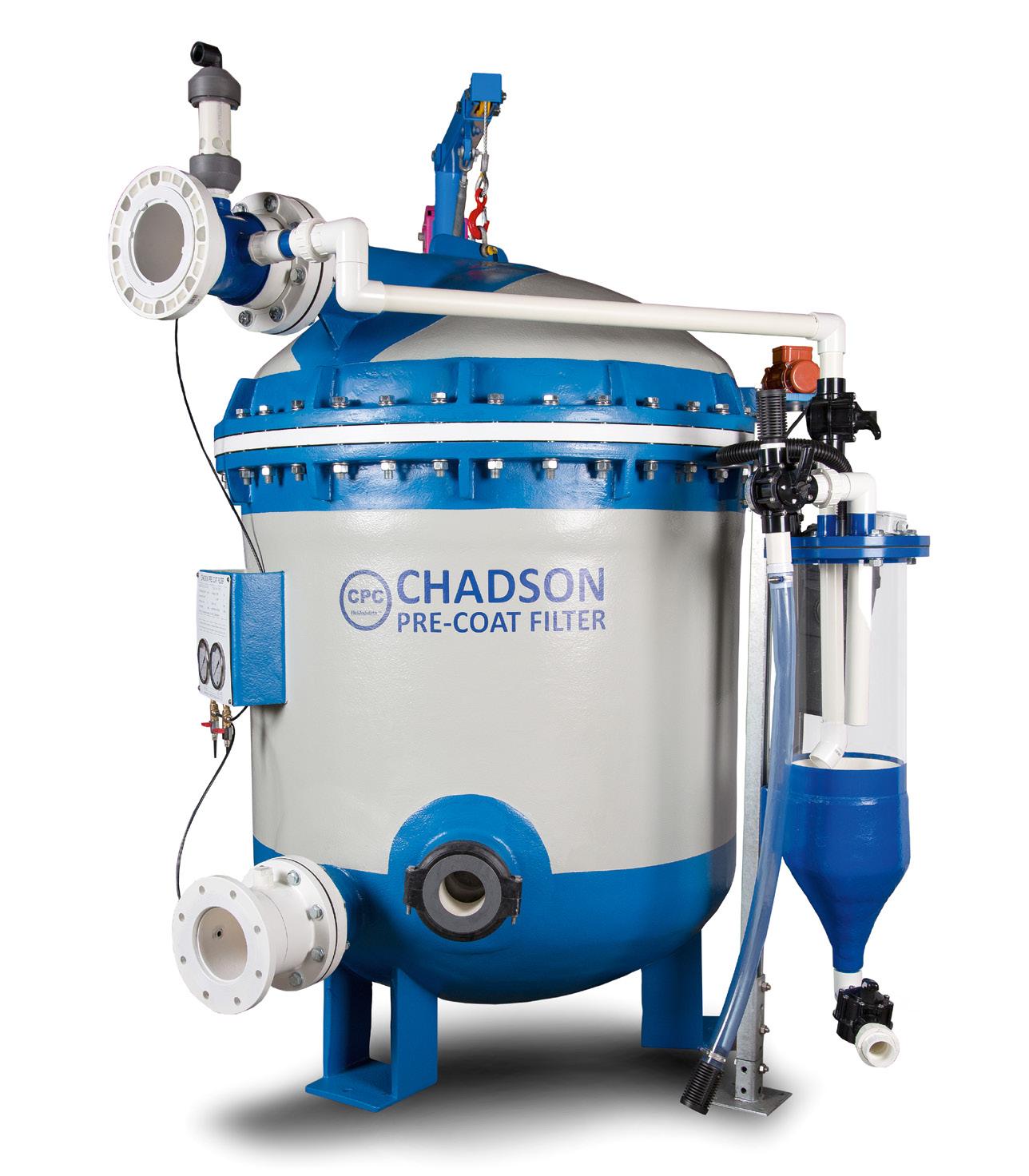
Chadson’s Wet-Vac Precoating plant, seen here on the right of the CPC filter, uses a flash mixer to introduce dry media as a wet slurry
“When selecting a filter aid, it is best to validate its performance according to the filter runtime it can deliver over three or four operating cycles.”
“Perlite is classified as a safe ‘nuisance dust’ by both Safe Work Australia and the World Health Organisation. The SDS for perlite supplied in Australia states that no specific safety equipment is required. Preferrable to avoid skin and eye contact and inhalation of dust,” he says.
However, it also states that respirators suitable for nuisance dust and eye protection should be used in the event of a spillage, but it can be swept up while avoiding generating dust.
Bateman also says that perlite adsorbs oils and fats more efficiently than DE, works better with filter systems using Flextubes, as with the Neptune Benson filters, and has a longer lifecycle than DE in some filters.
Brad Weir refers to studies that show health surveillance studies of workers in US perlite mines and expansion plants conducted over 20 years indicate that the respiratory health of workers is not adversely affected. Studies in Turkish mines and expanding plants had generally similar results, but are more difficult to interpret because of high smoking rates in these populations.
Defending perlite as the equivalent of DE, Weir quotes a 2012 study from the University of North Carolina & Charlotte Amburgey (JE1, Walsh KJ, Fielding RR, Arrowood MJ) on the removal of Cryptosporidium and polystyrene microspheres from swimming pool water with sand, cartridge and precoat filters using both perlite and DE.
The authors identify that Cryptosporidium had been the cause of the majority of waterborne disease outbreaks in treated recreational water venues in the USA for many years running.
The research project evaluated some common US swimming pool filters for removing Cryptosporidium oocysts, 5-μm diameter polystyrene microspheres, and 1-μm diameter polystyrene microspheres. A 946 L hot tub with
interchangeable sand, cartridge and precoat filters was used at room temperature for this research. Simulated pool water for each experiment was created from Charlotte, NC (USA) tap water supplemented with alkalinity, hardness, chlorine and a mixture of artificial sweat and urine.
Their results in removing Cryptosporidium show both DE and perlite at more than 99 per cent effective (99.549 and 99.941 respectively), significantly higher than sand/polymer at 61 per cent, sand alone at 31 per cent, and cartridge at 36 per cent.
Weir proposes that the fact perlite is only classified as a “nuisance dust” further adds to its case as a preferred filter aid. However, as mentioned above, exposure to perlite still requires the use of PPE.
Bateman also says another advantage of perlite is that it is available from ore mined within Australia.
“There is of course imported perlite as well, however, the use of perlite helps to support local industry and the economy. There are a number of local manufacturers but just as an example Ausperl, based in Padstow NSW, process more than 8000 metric tonnes of perlite annually.”
The benefits of precoat filtration
Jones proposes the following benefits for precoat filtration using either DE or perlite as the filter aid.
• With a low particle selective of 2-μm to 3-μm, precoat filtration will physically remove and detain modern chlorine-resistant pathogens, including Cryptosporidium oocysts.
• The process efficiency of precoat filters will reduce chlorine oxidising demand (COD).
• A lower reliance on pool chemicals saves money and will simplify pool water chemistry, with the notion of using the least harmful chemicals in the lowest possible concentration.
• It will also reduce the downstream load and enhance the operation of any secondary advanced oxidation.
• Chemically complicated flocs and heavy metal coagulants are unnecessary and should not be used with precoat filters.
• Even with reverse flow backwashing and TDS control, precoat filters have a low wash water requirement. Lower water use is not only environmentally responsible but also saves money. Less water loss also means a lower heat loss and a reduced need for additional chemicals.
• Precoat filters are highly compact and will operate comfortably with smaller plant rooms, smaller balance tanks, and smaller backwash detention tanks (BDT). All these items provide a lower construction cost.
• A replaceable filter aid is considered a “cleaner” filtration. Jones says granular filters that retain the same filtering medium for up to eight years or more can become corrupted and unhealthy.
The high process efficiency of precoat
If not for the high efficiency of precoat filters (collecting chlorine-resistant pathogens), interest in DE would not be as great, nor would
it be so widely used – Jones says that 1.5 million kilograms of DE filter aids are imported yearly into Australia alone.
He says that NSW Health’s state-based advisory document recognises the high process efficiency of precoat filtration by providing a 15 per cent concession on turnover rates.
“This concession is available because the process efficiency of precoat filters is far greater than other popular forms of filtration,” he says. “Let us not forget that precoat filters established their market position because of the need to seek better solutions capable of combatting modern chlorine-resistant pathogens.”
He says that DE filter aids are highly efficient due to their unique porous skeletal structure. The micropores allow flow-through, while solids are captured between individual diatoms.
“The morphology (shape and size) of DE particles includes a wide range of symmetrical forms resembling honeycombs, discs, rods, cylinders, snowflakes, etc.,” he says.
Bateman adds that perlite filter aids have a similar complex structure and the efficiency is also enhanced through its slight negative charge that aids in the capture of contaminants.
As mentioned above, precoat filters using DE or perlite have a reported pathogen removal efficiency of more than 99.4 per cent, comparing very favourably with other forms of media filtration – although the non-media ceramic filtration claims a similar rating to precoat at approximately 99 per cent.
Jones points out that the quantity of imported DE filter aids has not declined since IARC’s classification as Group 1 Carcinogen; while Bateman quotes that anecdotally he has observed operators increasingly choosing perlite for OH&S reasons.
“Two of the world’s biggest producers of filter aids – EP Minerals (Eagle & Pitcher – Celatom) and World Minerals (Celite) are known as responsible and ethical manufacturers who have published various safe operating guides on their respective filter aids. All these published recommendations are simple to understand and easy to implement,” says Jones.
Jones refers to sales figures that show in 2022, the global market for DE filter aid was valued at more than $US30 billion – and it is predicted to increase to $US43 billion by 2027.
“This clearly shows the suggestion of DE filter aid decline is incorrect. Based on the global DE market, the need for strict observance of safe handling has not diminished the world’s current and future demand for DE filter aids. Nor has the emergence of any new filter technology dampened any apparent interest,” he says.
Jones says the design of a pool water treatment (PWT) plant is a complex subject with multiple choices and options.
“PWT plant design depends upon variables like bather load, bather profile, mixing patterns
within the pool basin, turnover rates, the disinfection process, selected flux rates, filtration efficiency, backwash efficiency, and the skill and dedication of a trained operator,” he says.
Adding that all these factors are complexly interrelated and deserve appropriate design, he strongly suggests clients should seek an aquatic consultant who has broad knowledge of all forms of filtration.
On the issue of selecting a brand of precoat filter aid, he says that globally there are hundreds of brands of DE and perlite media available with different properties and gradings.
In Australia, there are ten readily available DE and perlite brands.
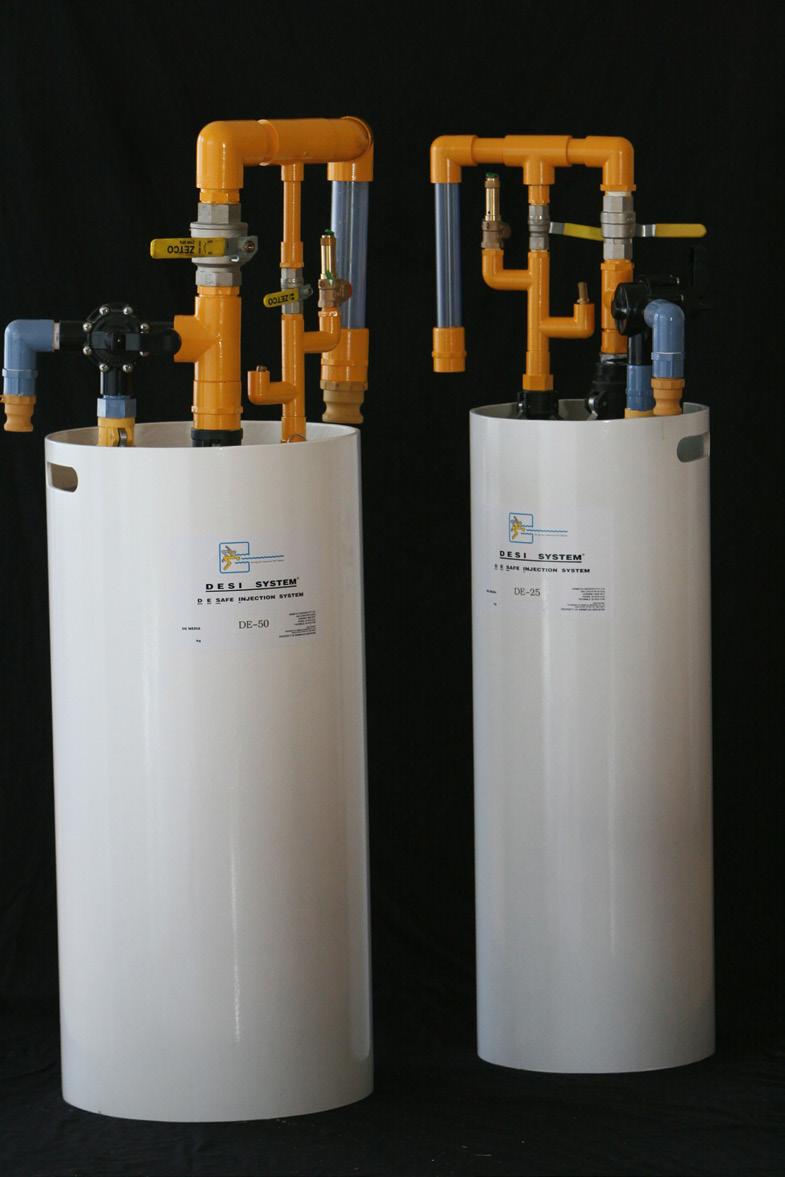
“This can complicate the selection of an optimum filter aid,” he says. “When selecting a filter aid, it is best to validate its performance according to the filter runtime it can deliver over three or four operating cycles.”
In relation to safe use, he says the important points when using a precoat filter aid are to:
• Select a filter aid you are comfortable with;
• Avoid creating dust;
• Avoid breathing dust;
• Wear PPE when airborne dust is present;
• Keep your workplace clean;
• Repair any broken bags/boxes; and
• Clean up spills immediately.
He says that due to precoat filter technology’s proven capability to remove chlorine-resistant pathogens, the need for simple control measures physically is well worth the effort.
“Pool operators are trained to follow procedures when handling other hazardous materials, and using precoat filter aids is no more complicated than other materials or processes that require safe operating procedures,” he says.
“Issues with chlorine-resistant pathogens are unlikely to go away any time soon. Precoat filtration using a replacement filter aid remains a highly efficient, cost-effective and safe means of attaining healthy pool water with unique clarity.” n
AusPerl: www.ausperl.com
Chadson Engineering: www.chadsonfilters.com.au
EP Minerals: www.epminerals.com
National Spare Parts: www.chadsonspareparts.com.au
Neptune Benson/Evoqua: www.evoqua.com
World Minerals: www.imerys.com














AUGUST 21 - 22 Gold Coast Convention and Exhibition Centre
OVER 100 EXHIBITORS
AUSTRALIAN SWIM SCHOOL ASSOCATION CONFERENCE
INNOVATION EXPERIENCE
IAKS ANNUAL GENERAL MEETING ENTRY FREE EXPO
FREE CORPORATE HEADSHOTS
SEMINAR SESSIONS
MEDIA HUB PODCAST EXPERIENCE MEETING & EATING AREA
& SO MUCH MORE!






GOLF DAY
20TH AUGUST TUES
11:00 am - 6:00 pm
21st AUGUST WED RACV ROYAL PINES RESORT
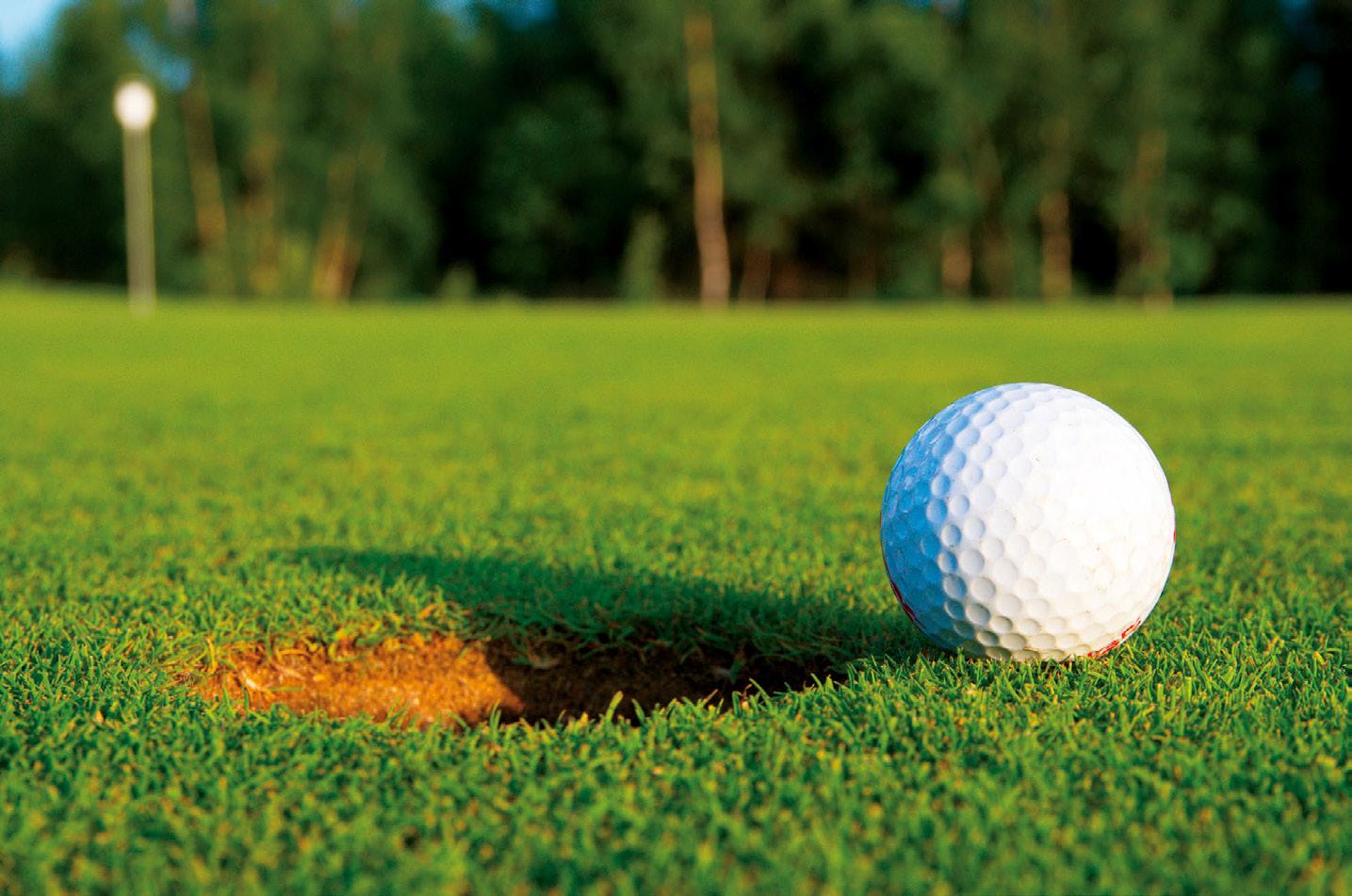
WAVES BREKKIE
8:00 am - 9:00 am
GOLD COAST CONVENTION AND EXHIBITION CENTRE
INDUSTRY DRINKS
WED
21st AUGUST
4:30 pm - 6:00pm
GOLD COAST CONVENTION AND EXHIBITION CENTRE











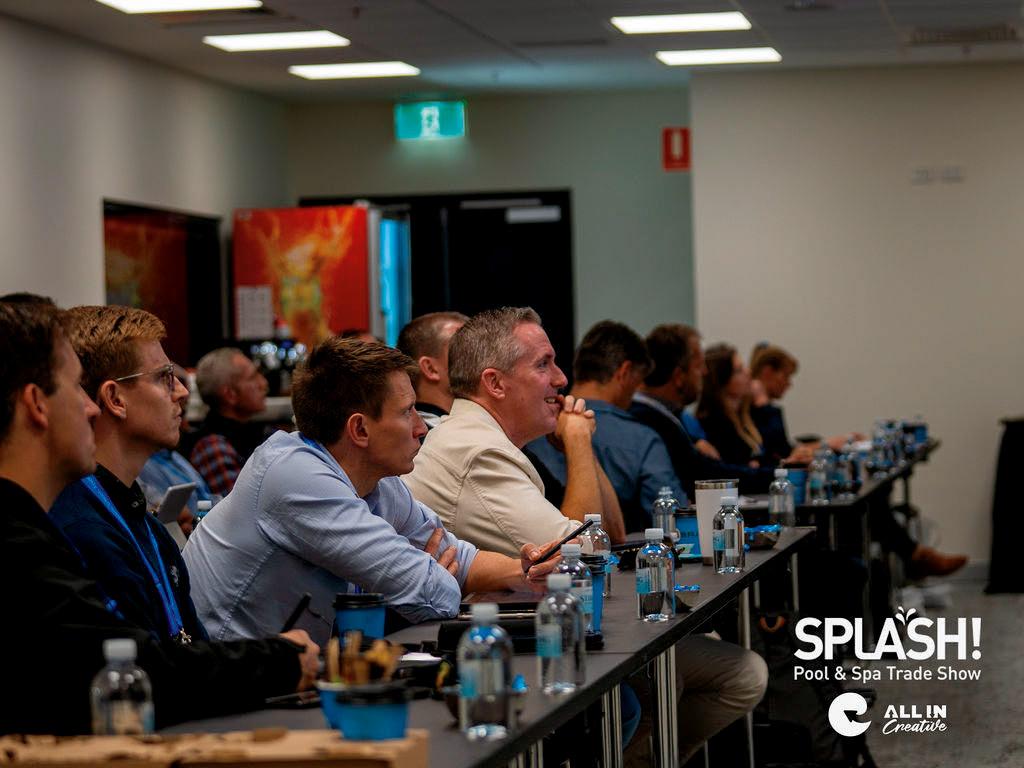







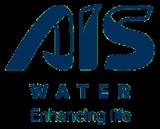





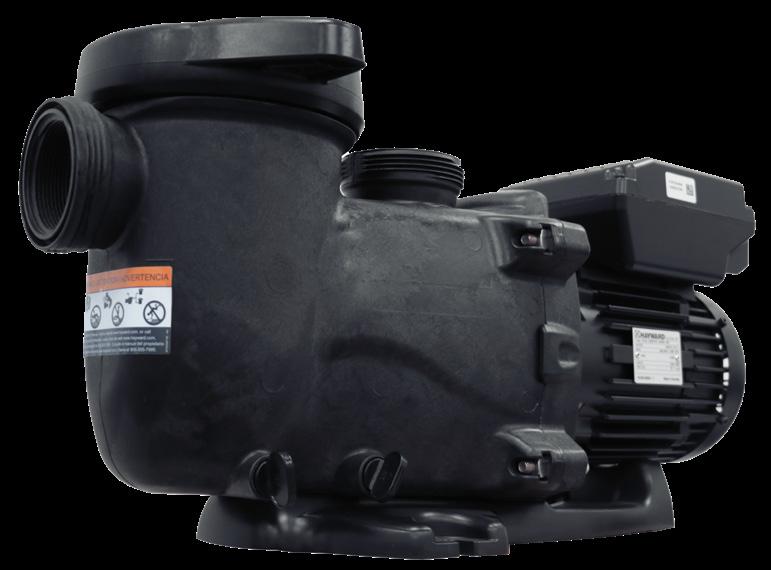
Hayward’s new 7-star EcoStar VS pool pump can adjust motor speed dynamically, responding to the specific needs of the pool at any given moment. This adaptive technology ensures optimal performance while minimising energy consumption, crucial in the quest for greener, more sustainable pool equipment.
The EcoStar VS can operate at lower speeds during periods of lower demand, such as filtration or circulation, drawing significantly less electricity and lowering power bills, while decreasing the carbon footprint.
Hayward says EcoStar VS offers unparalleled energy efficiency, coupled with the ability to reduce utility bills and greenhouse gas emissions, positioning it as an indispensable tool for the environmentally conscious pool owner.
Contact: www.hayward-pool.com.au
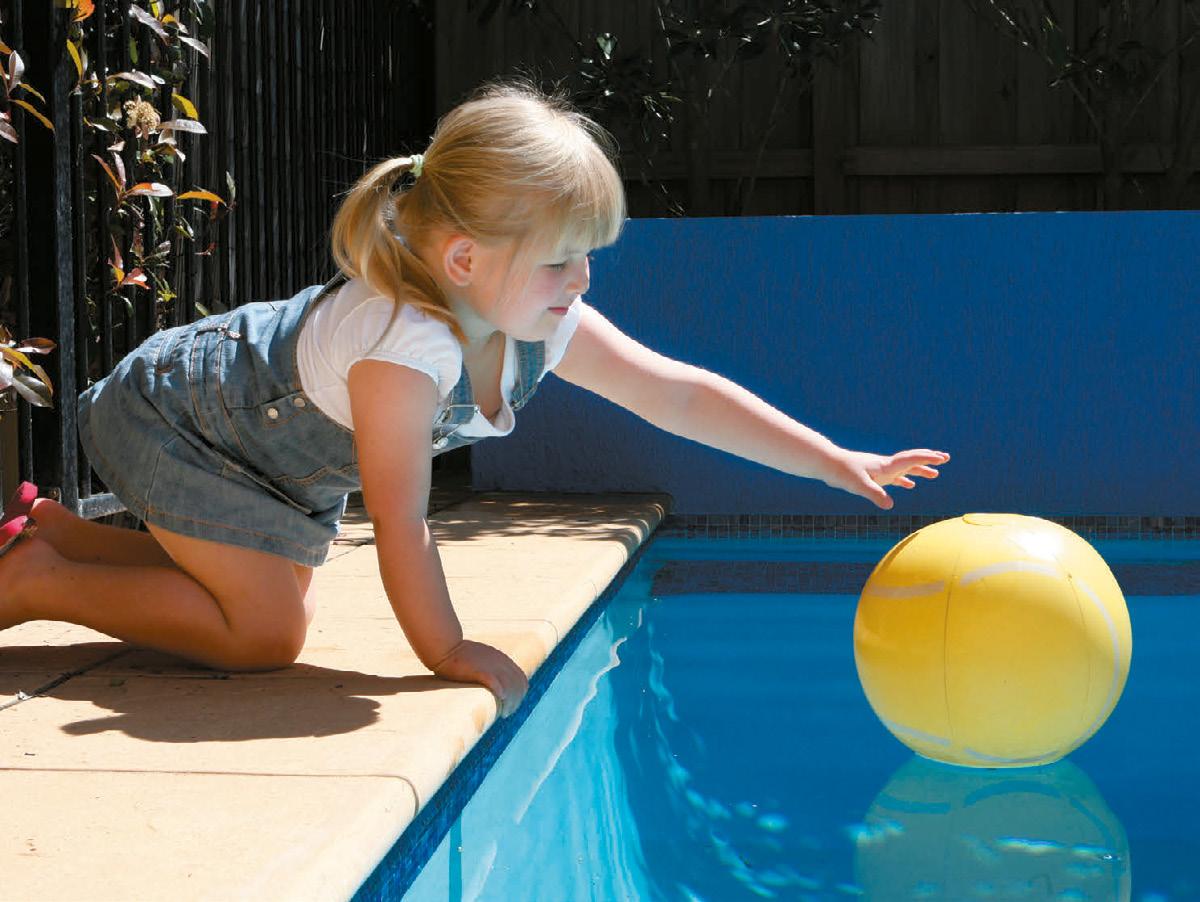
Fairland says their X40 inverter pool heat pump has shattered records by converting one unit of electricity into 39 units of heat output, thanks to its upgraded TurboSilence AI and hyper heat exchange system. In recognition of this achievement, the COP39 prototype unit has claimed a Guinness World Record.
COP39 is the latest iteration of inverter technology that aligns with the ambitious targets set by the Paris Agreement and aligns with the IPCC’s call for high-efficiency solutions.
Over the past decade Fairland has evolved from COP16 to COP39, and say their innovative inverter technology is shaping the future of outdoor living.
Contact: www.fairland.com.cn
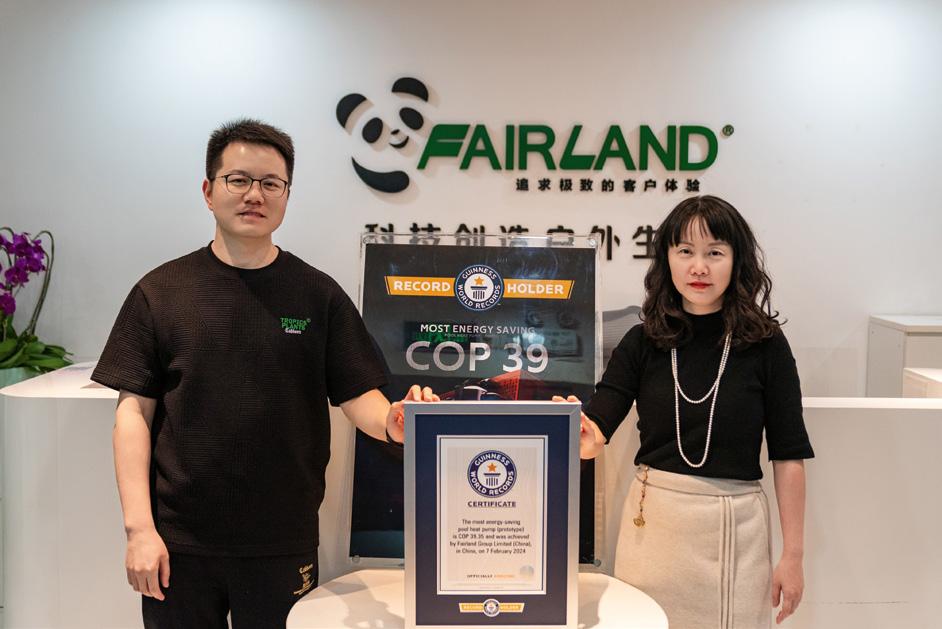
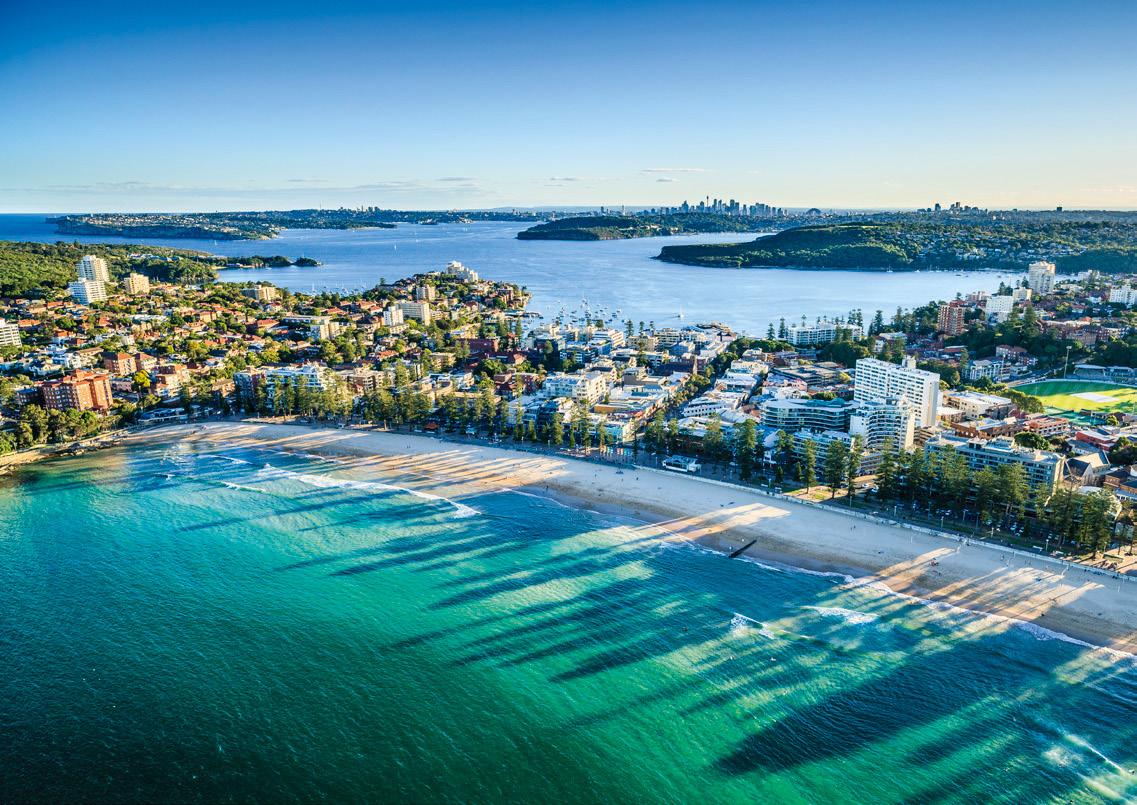
View our online video showing common pool fencing faults and how to spot them at www.kidshealth.chw.edu.au/projects/drowning-prevention/swimming-pool-fencing
View our online video showing common pool fencing faults and how to spot them at www.kidshealth.chw.edu.au/projects/drowning-prevention/swimming-pool-fencing


The Pool Inspector App is set to revolutionise the way Pool Inspectors carry out their day-to-day work, providing a complete reporting solution compliant with all relevant Australian Standards and associated building codes. It also contains an interactive 3D visual library that illustrates the standards for the benefit of the inspector as well as the client.
The Pool Inspector App is the official training software partner of SPASA’s IRLearning registered training organisation.
The online 3D visual library is a user-friendly, filterable reference to all related images from all related standards to provide both inspectors and the general public with detailed 3D images that can be rotated to assist in helping to fully understand the elements, differences, specifications and requirements. The images can be incorporated into the inspectors’ reports.
The software also includes a CRM customer database, job scheduling, automated reminders, quoting and invoicing with integration to accounting packages, document management, safety management and a client portal. Contact: www.poolinspectorapp.com
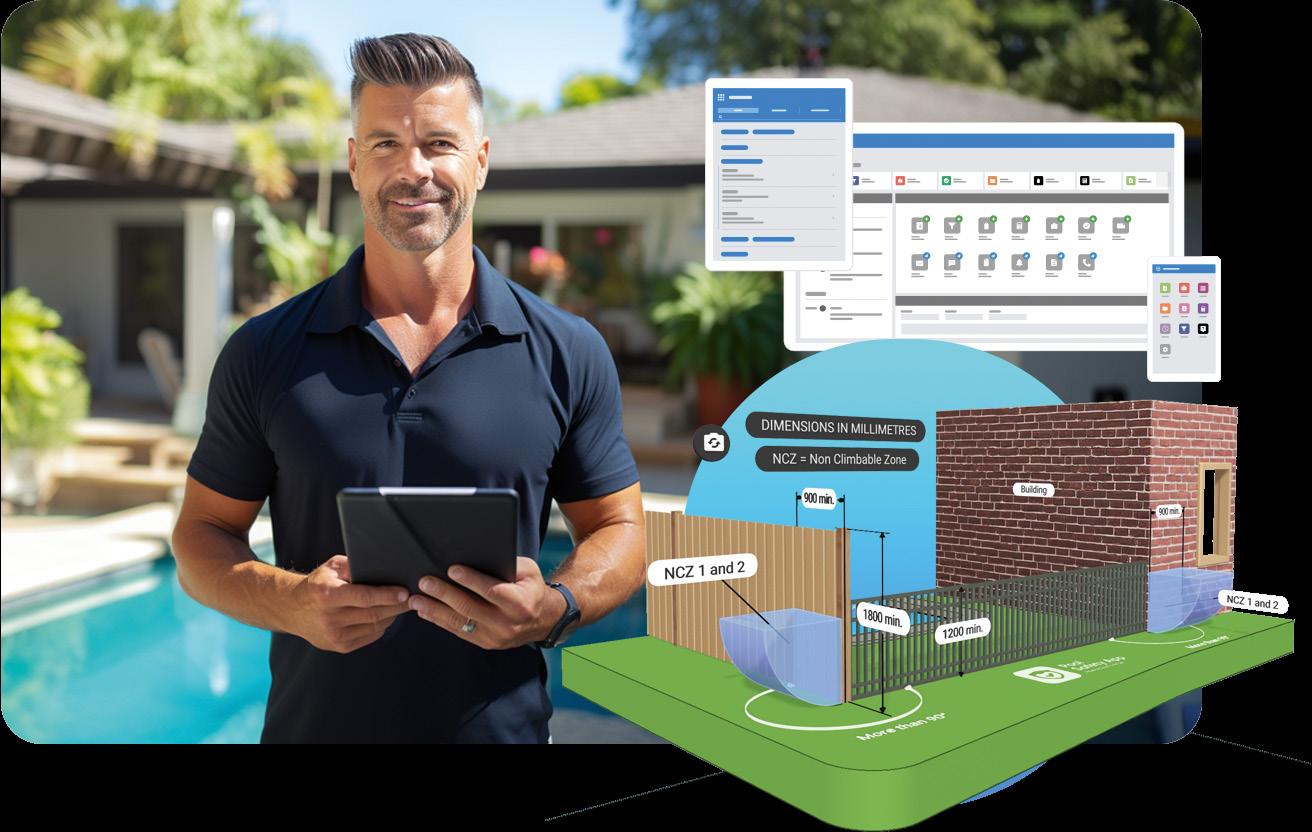

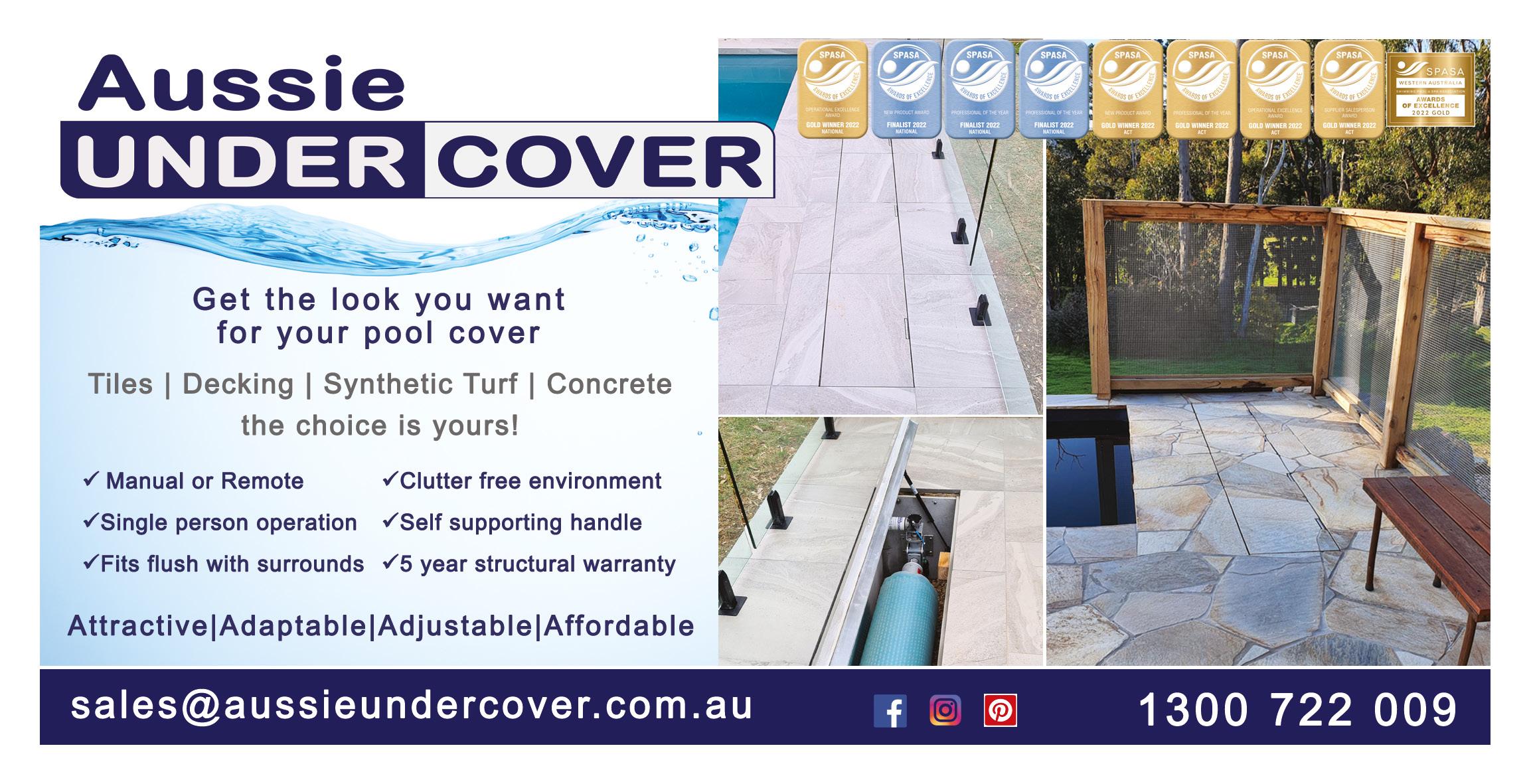
invoice Please find enclosed my cheque/money order for $_________ payable to The Intermedia Group Pty. Ltd. OR please charge my:

We are committed to handling your personal information in accordance with the privacy act. Please Select one of the following: Yes No - Please send me information about special offers and or events from SPLASH!
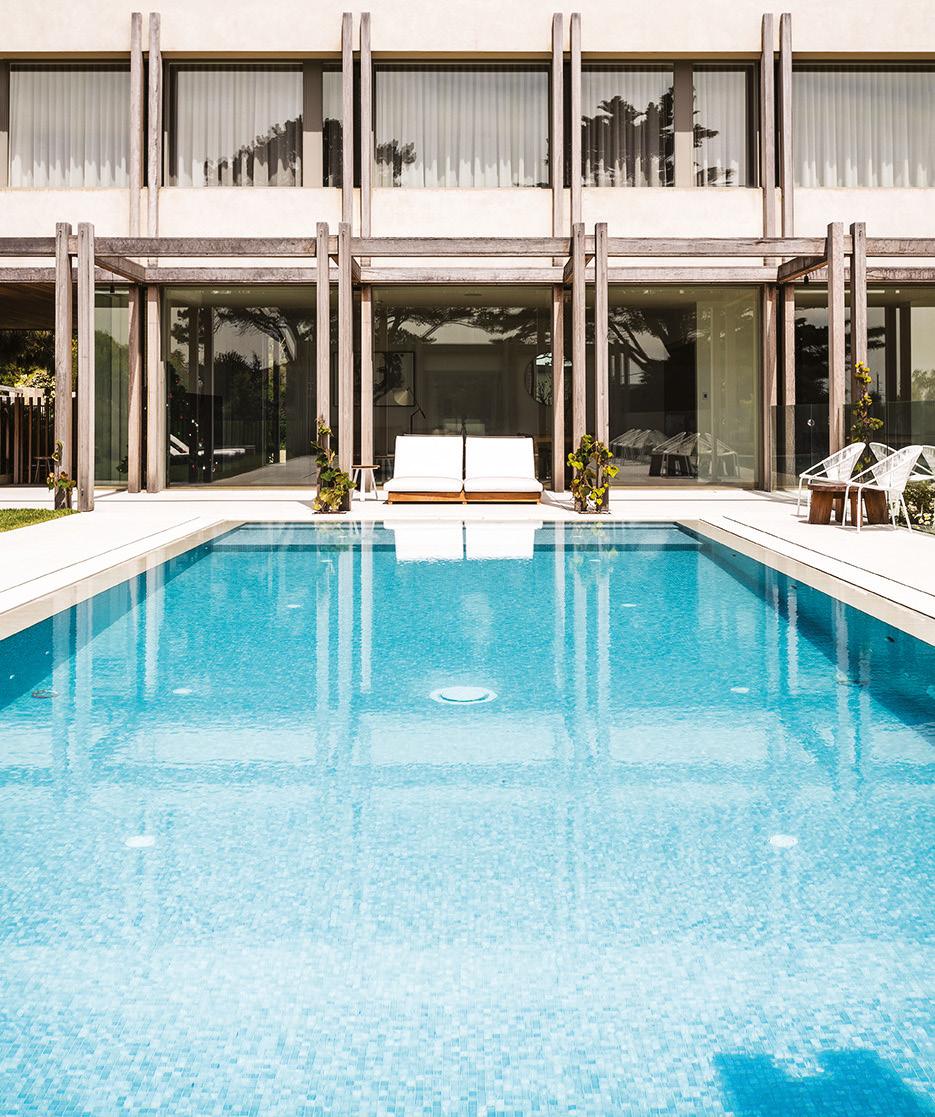

The best range of quality products and energy saving solutions
Maximise pool performance, pool life, maintain water quality and save energy with Pentair’s world-leading pool and spa solutions.
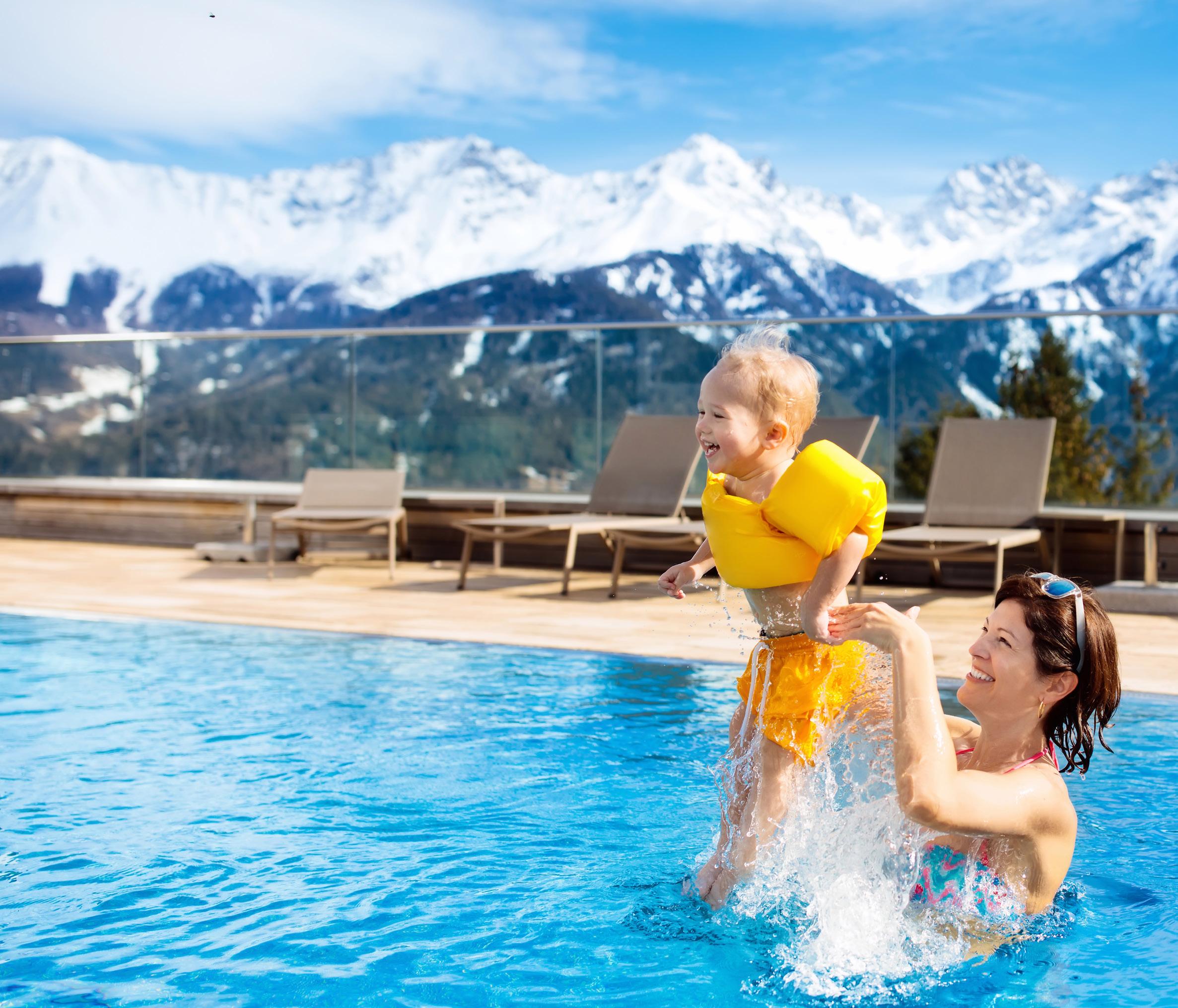
Our eco-friendly pumps, heating, filtration and automation work smarter, so you can spend less time on your pool and more time enjoying it with your family this winter.
Over 50 years experience
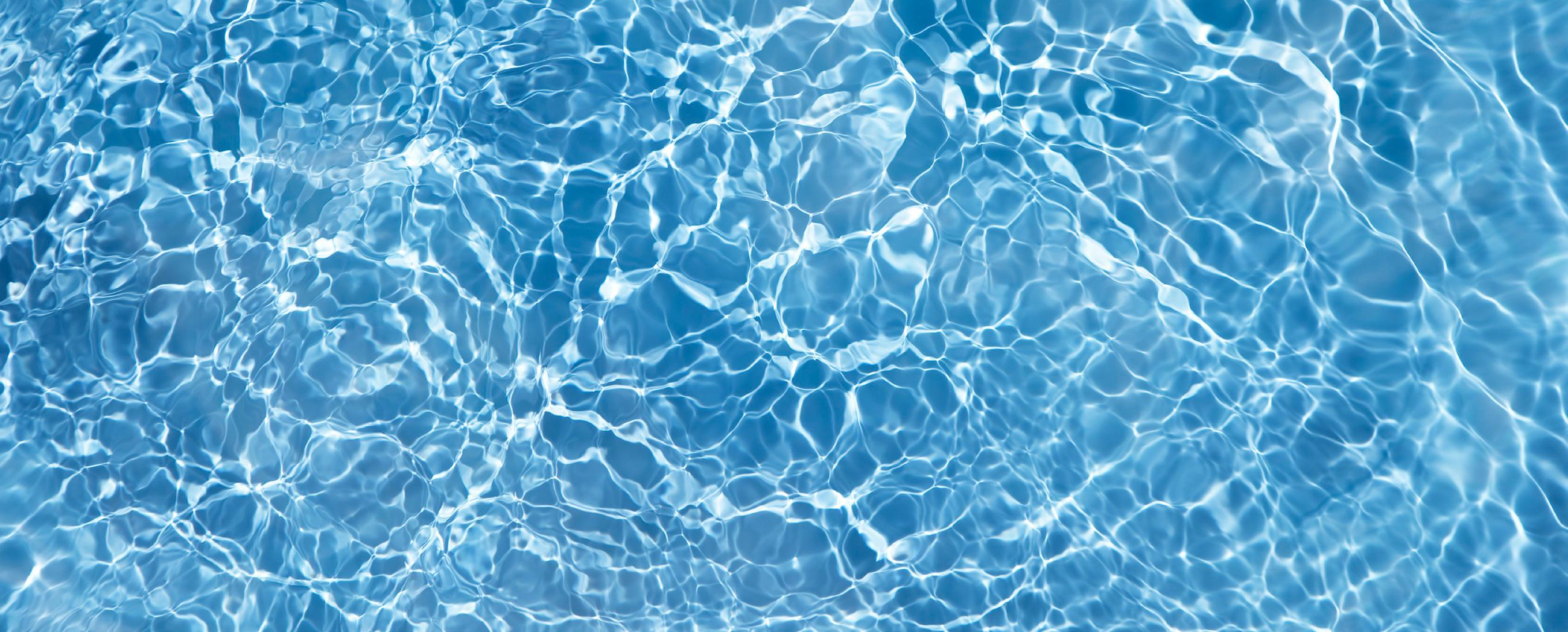
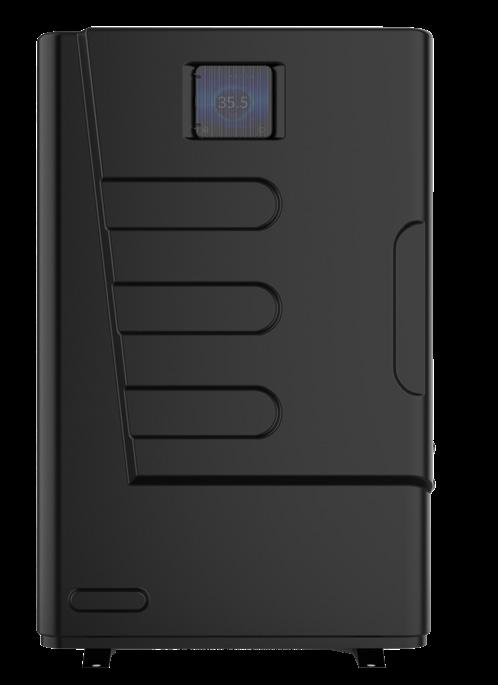
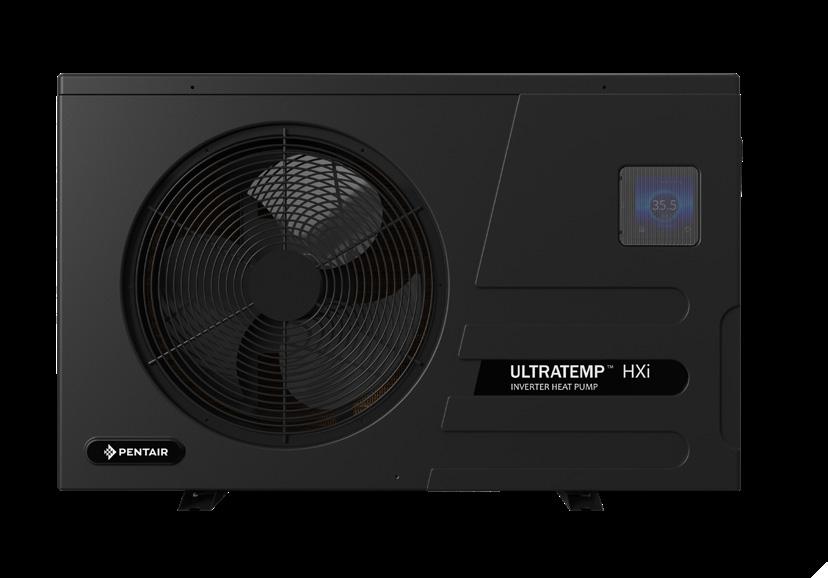
Ultra-quiet GREEN RANGE
Pentair UltraTemp™ HXi and VXi
Inverter Heat Pump
Achieve a more comfortable water temperature and longer swimming seasons, with best in class heating power and energy efficiency.
Easy to use intuitive colour touchscreen interface
100% titanium heat exchanger
Operates effectively at lower temperatures
Market leading warranty
See the full range at pentairpool.com.au
